Embroidery ornamentation
Dormitoon of the Most Holy Theotokos monastery- Matka
VESTMENTS. Embroidery ornamentation.
We draw our inspiration from the rich treasury of church ornaments and frescoes, as well as the authentic patterns of folk costumes that were created and left to us by our ancestors centuries ago, inspired by the Holy Spirit.
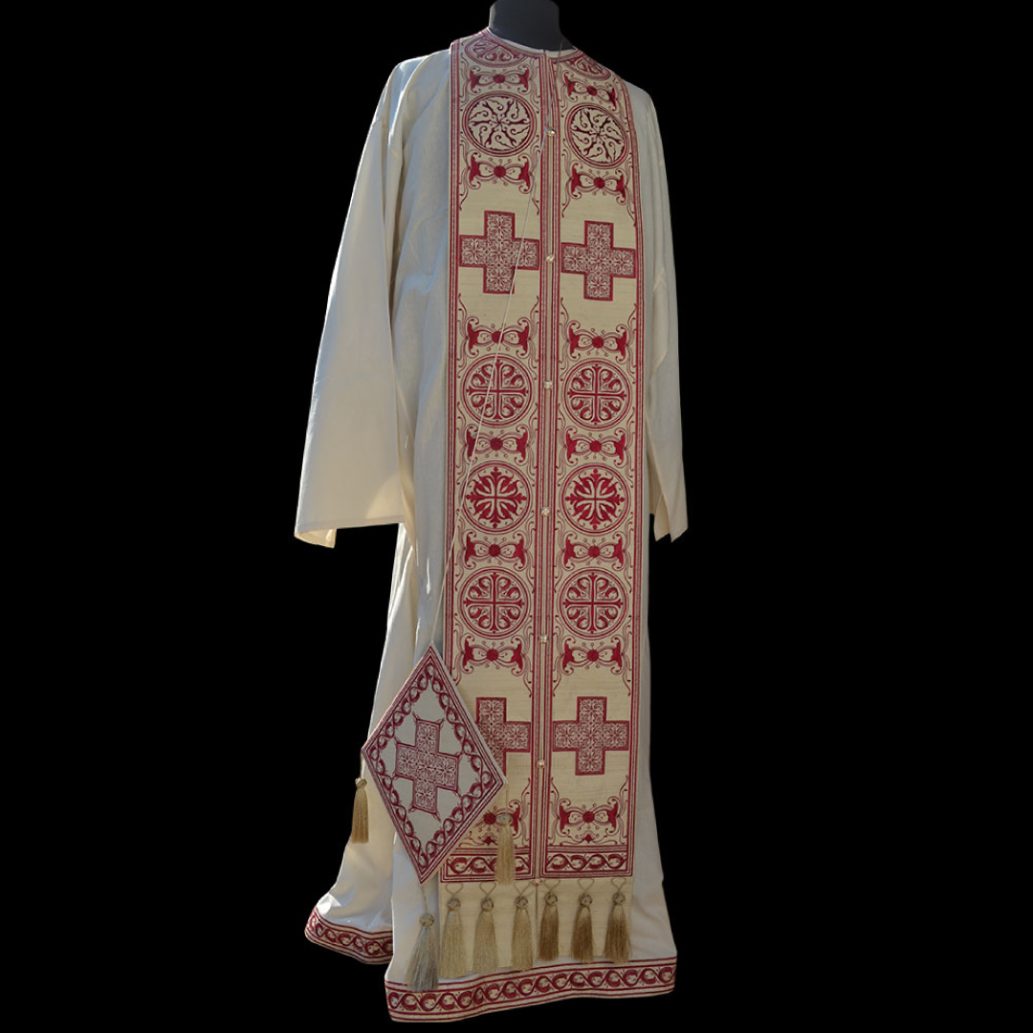
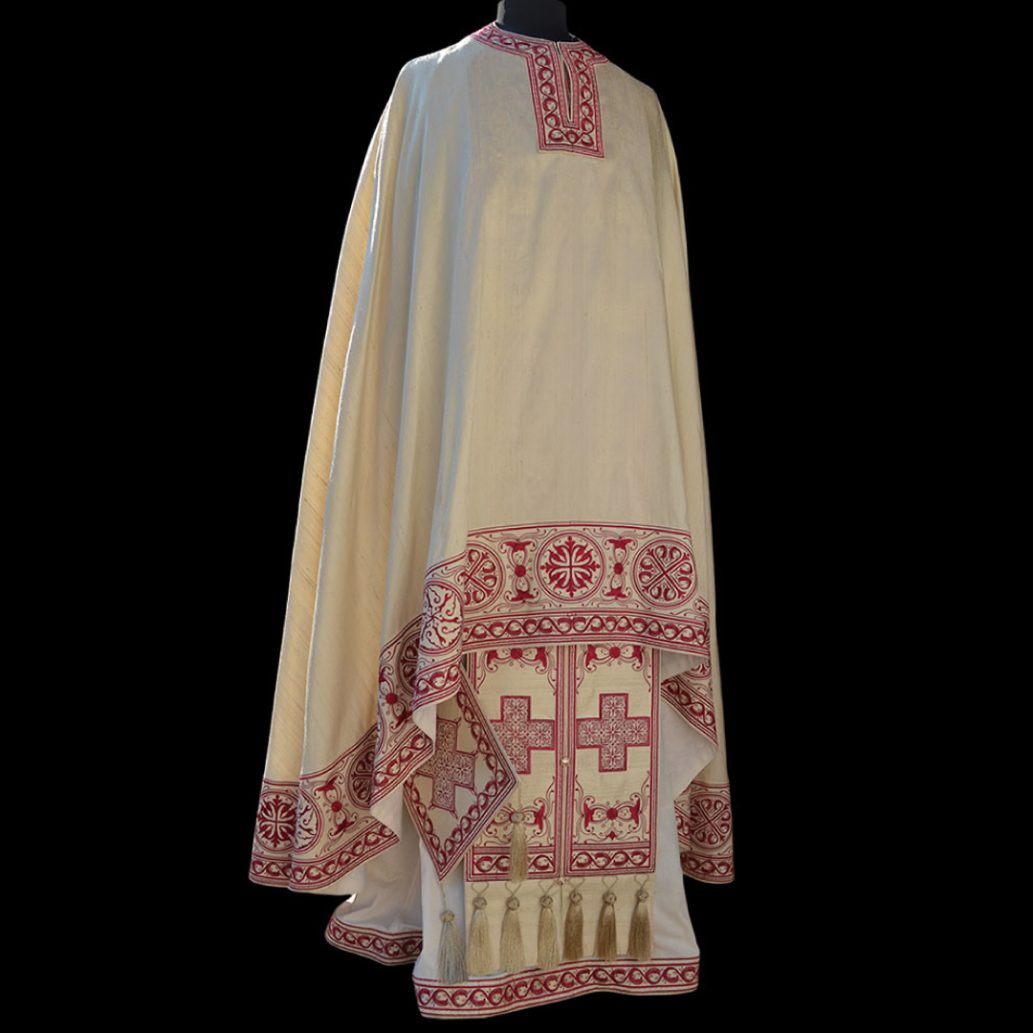
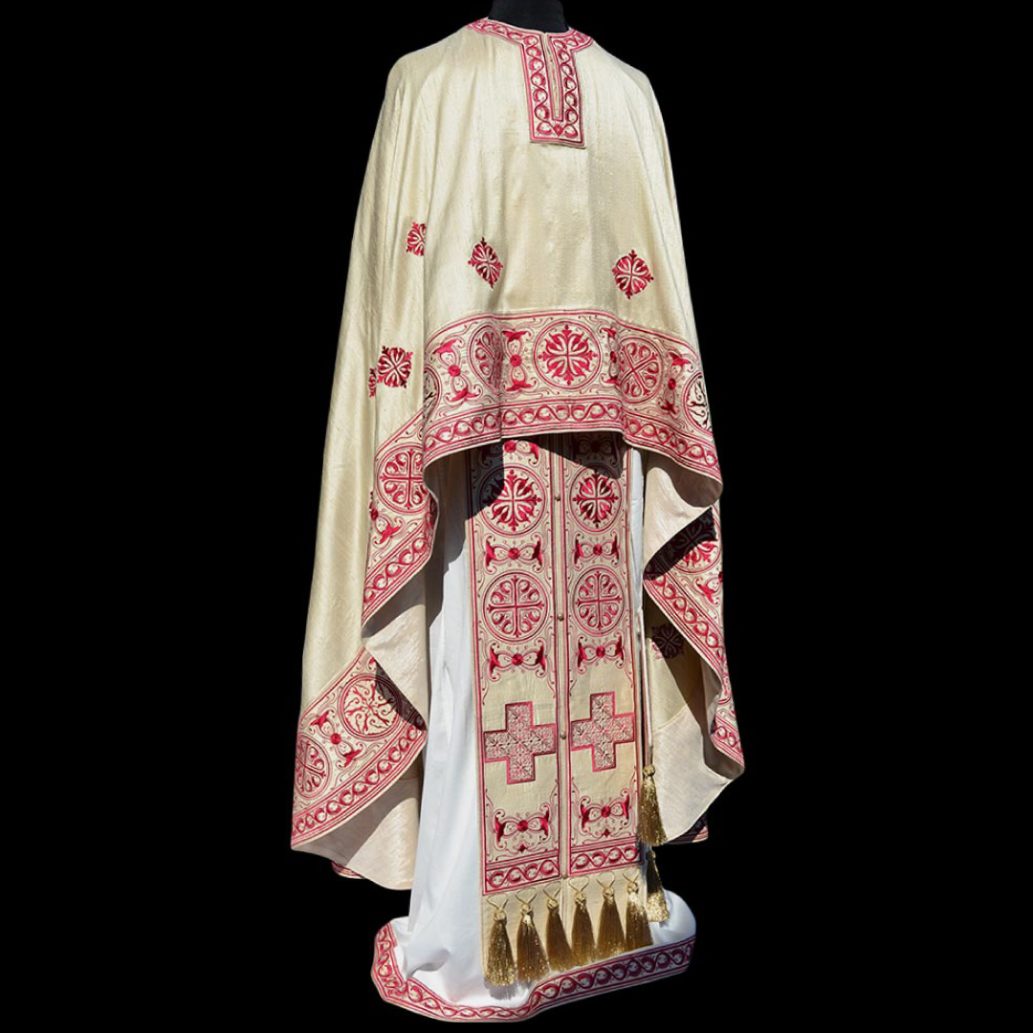
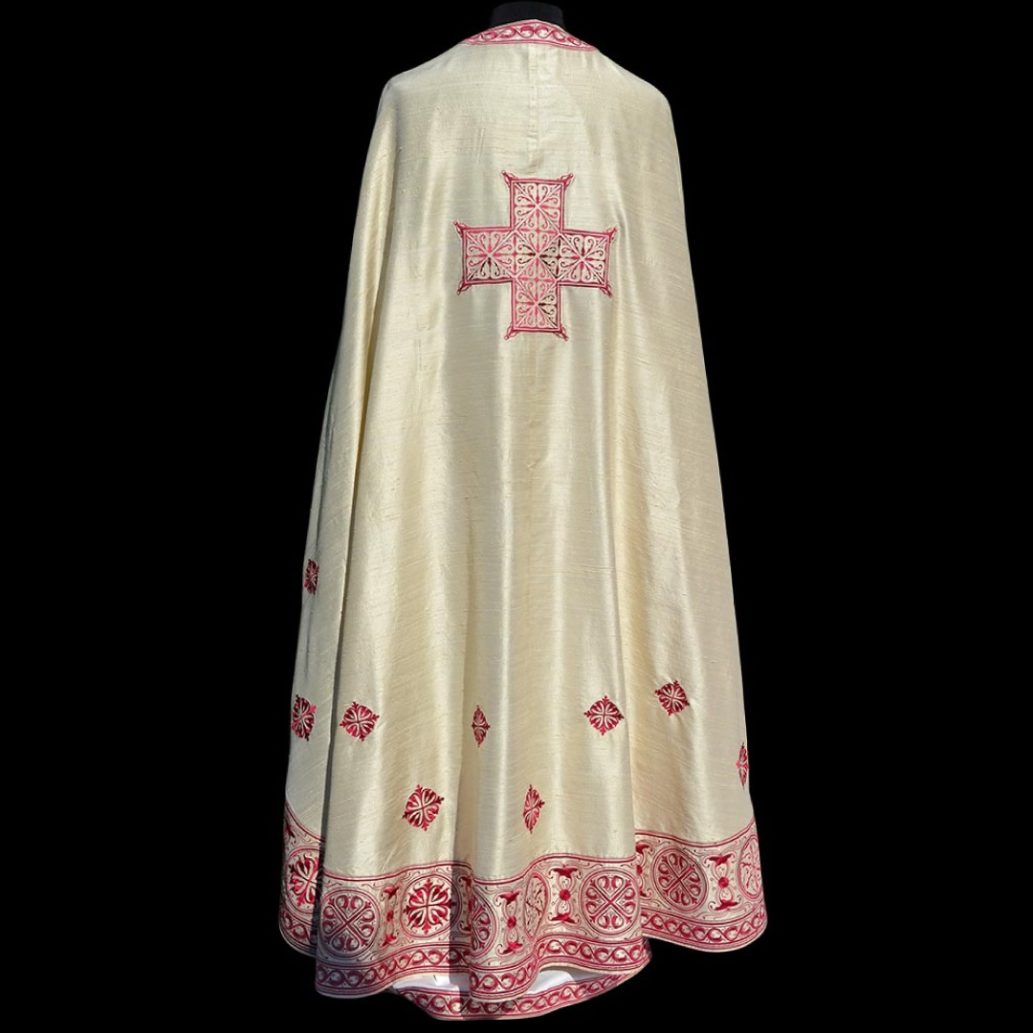
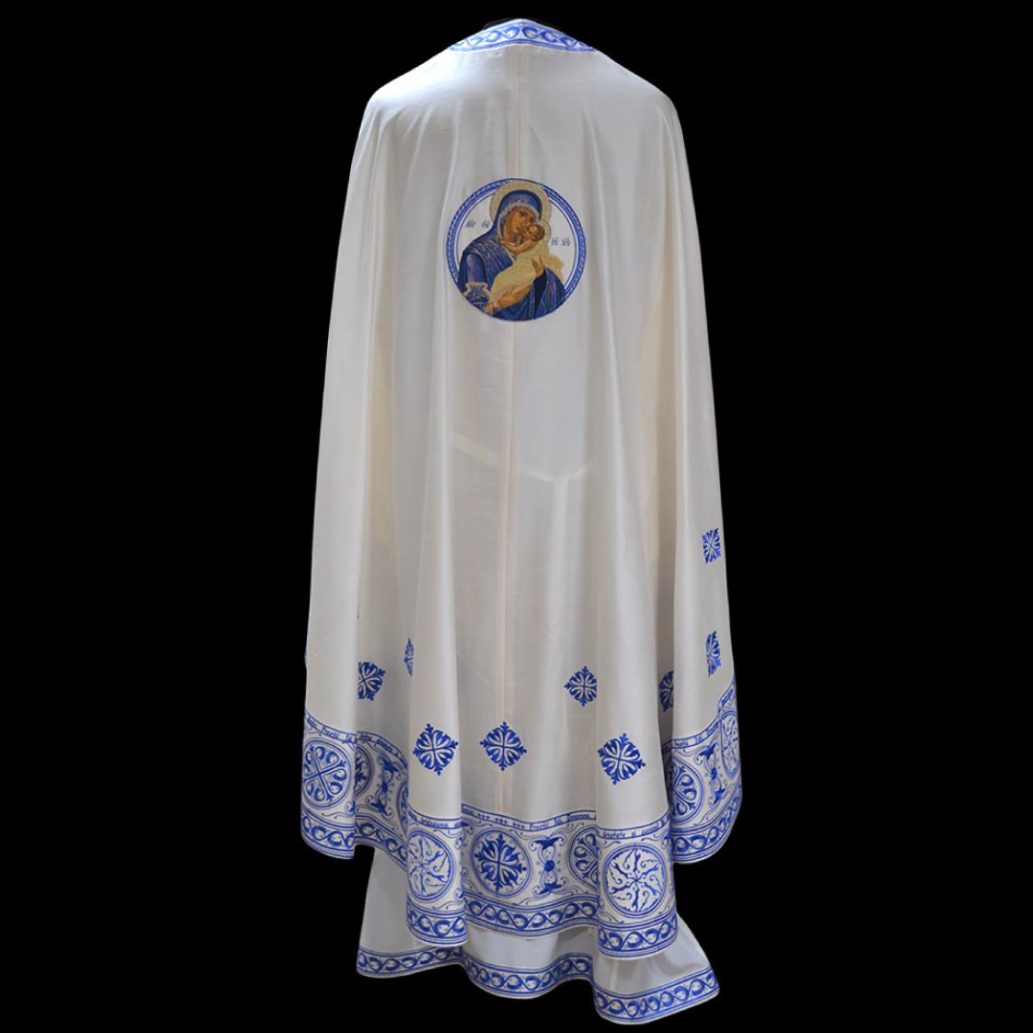
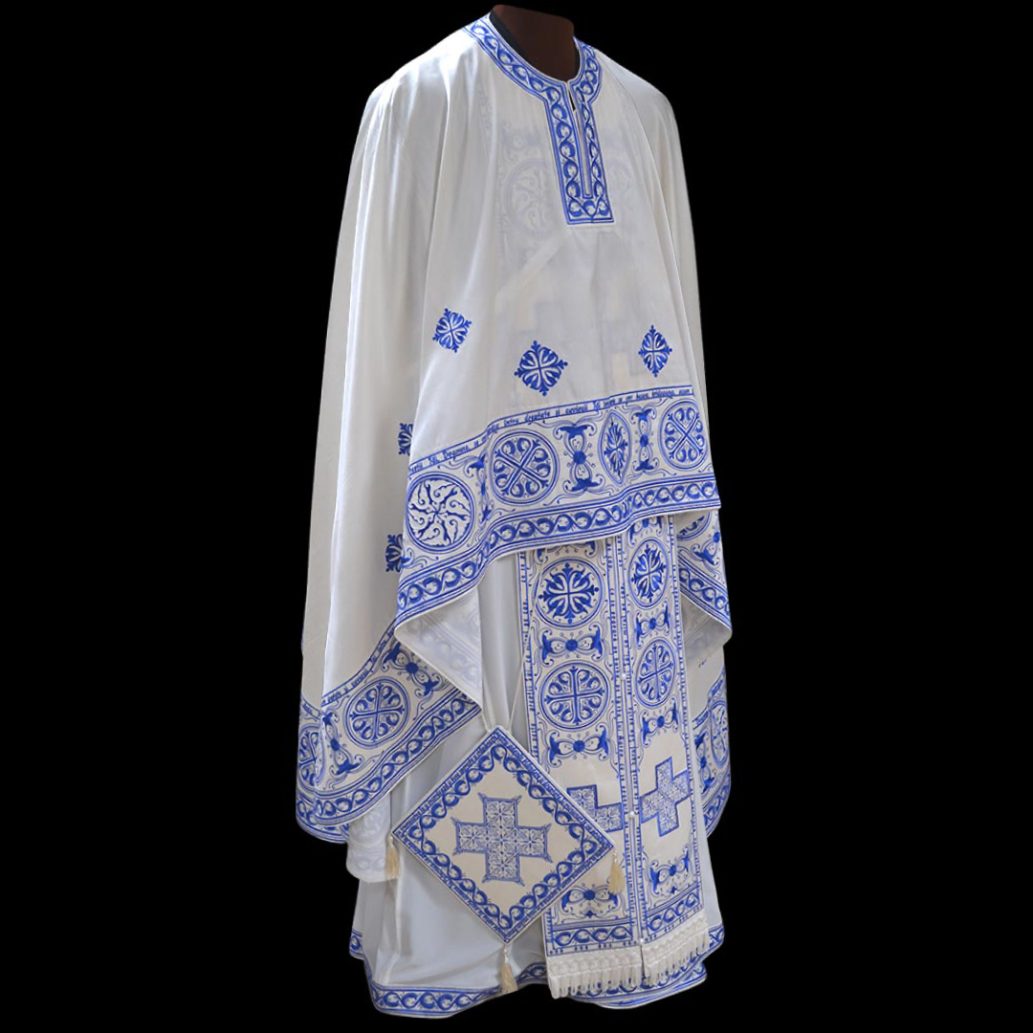
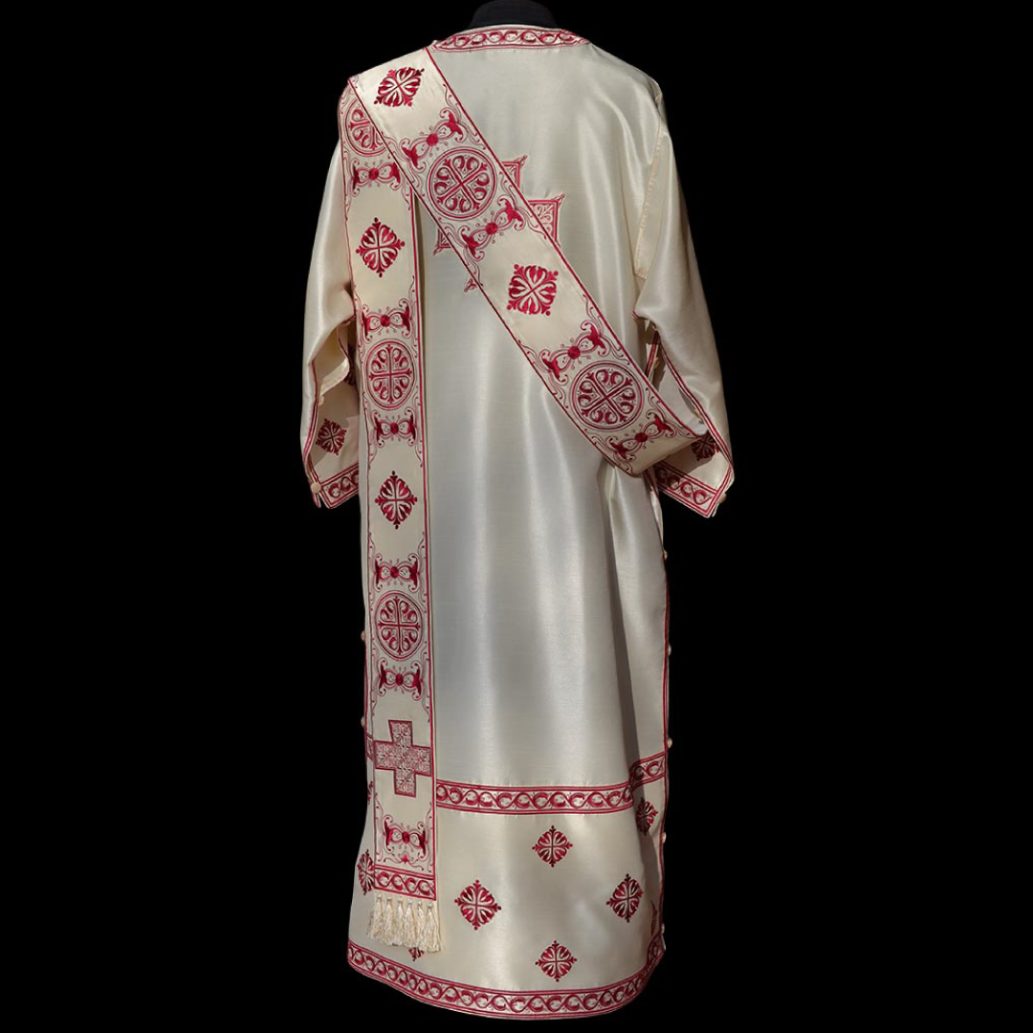
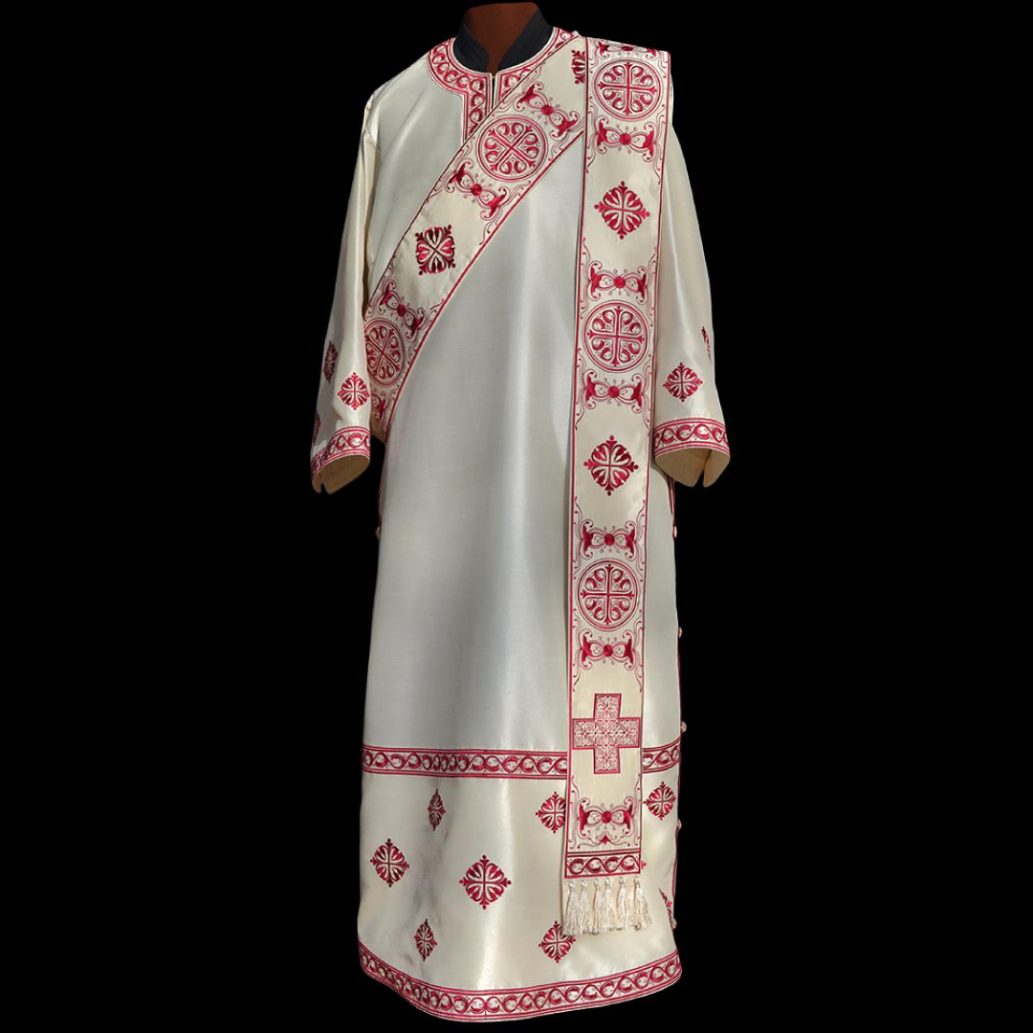
Previous
Next
VLADIMIRSKO USPENSKI
The embroidery is designed according to ornaments from the fresco painting at the famous Russian temple “Dormition of the Most Holy Theotokos” in the city of Vladimir, Russia. It is a remarkable monument of Russian construction built in the XII century. The church itself is a virtuoso architectural achievement with a unique, eminent, picturesque fresco, with dimensions of 300 square meters. The frescoes are made by the famous icon painter Andrei Rublev and his disciple the monk Daniel Chorny, who capture the sensitivity and beauty of Byzantine fresco painting.
The fabric of this vestments is made of raw silk material with a contrasting color of thread, and small details embroidered with silk thread in the color of the base material.
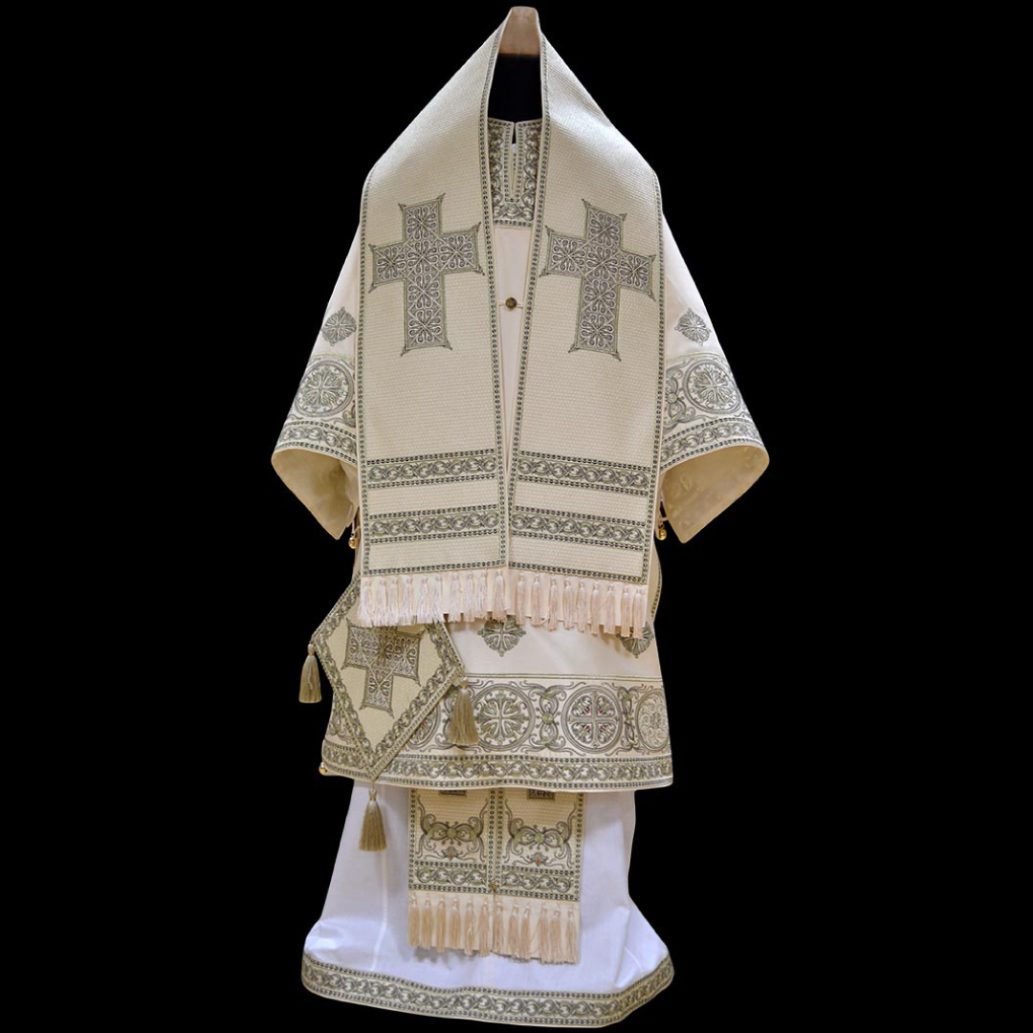
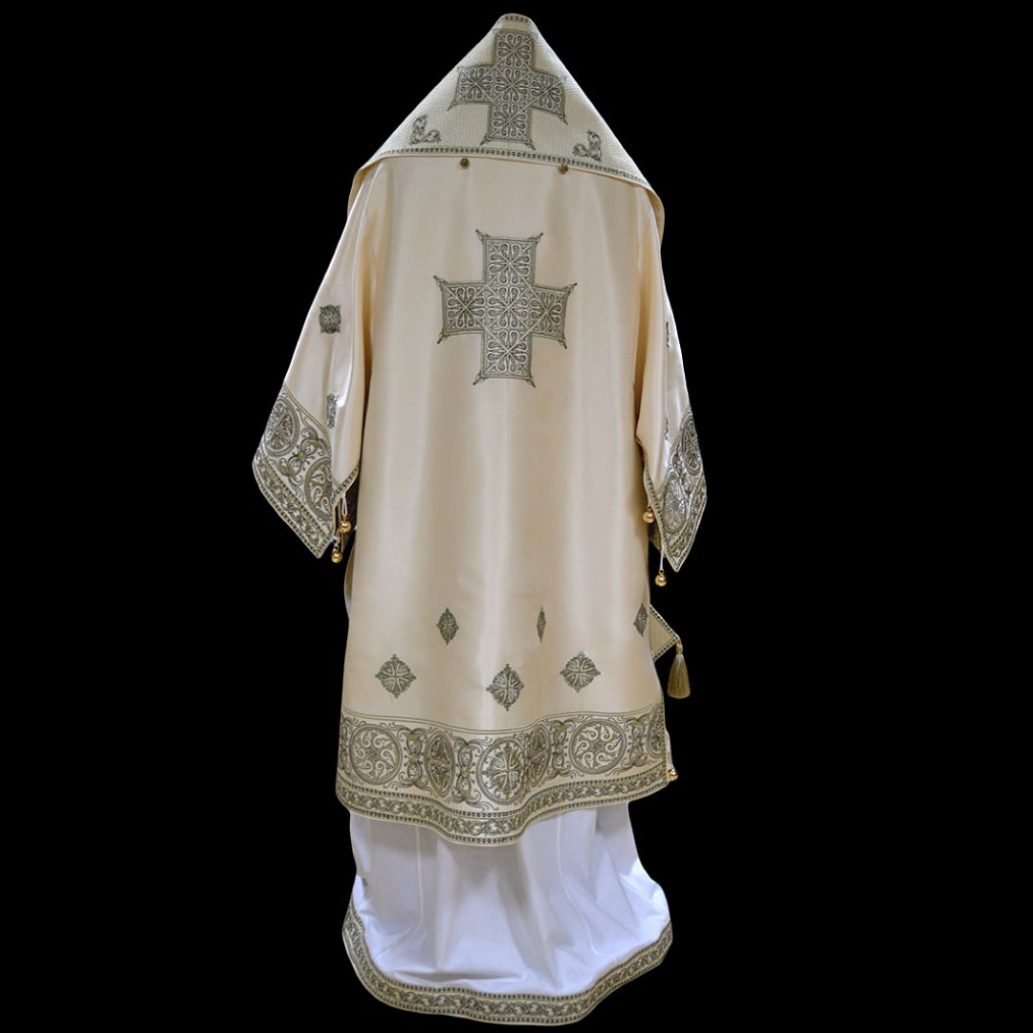
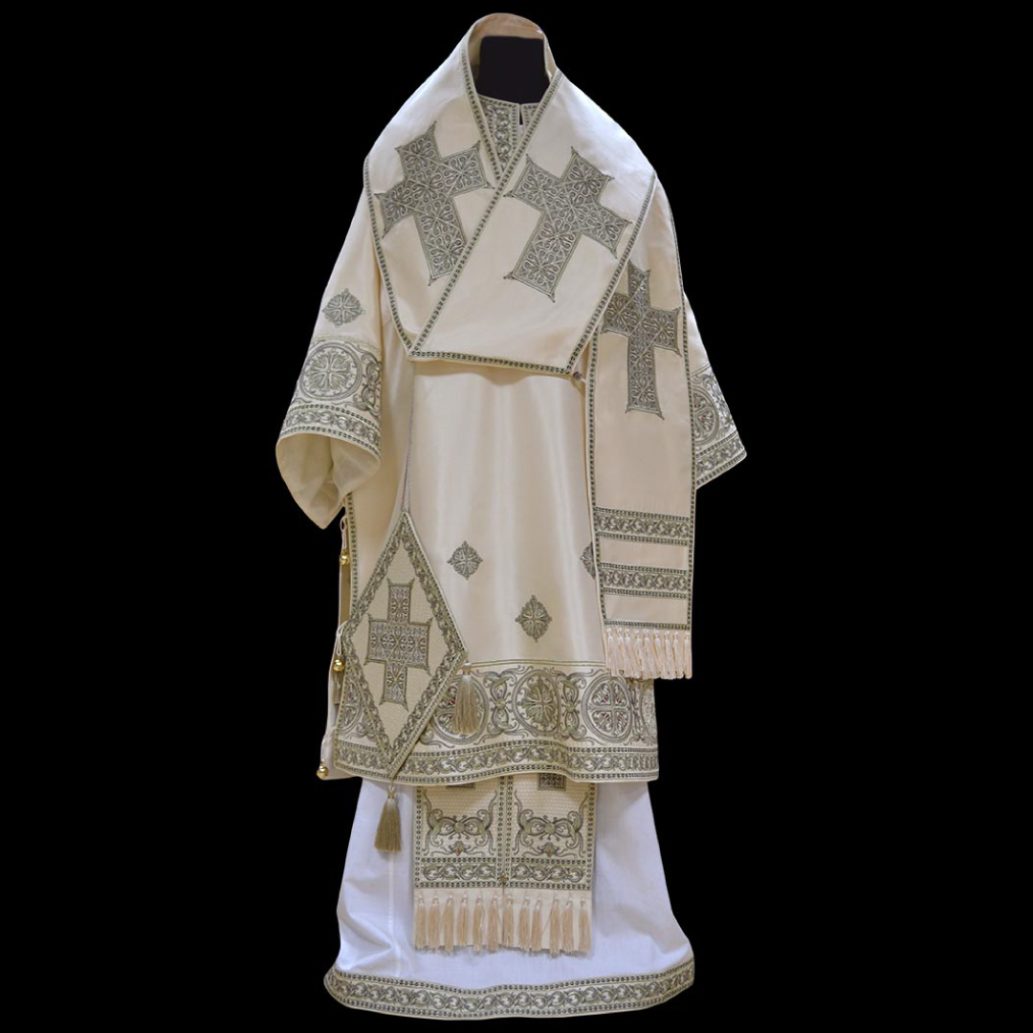
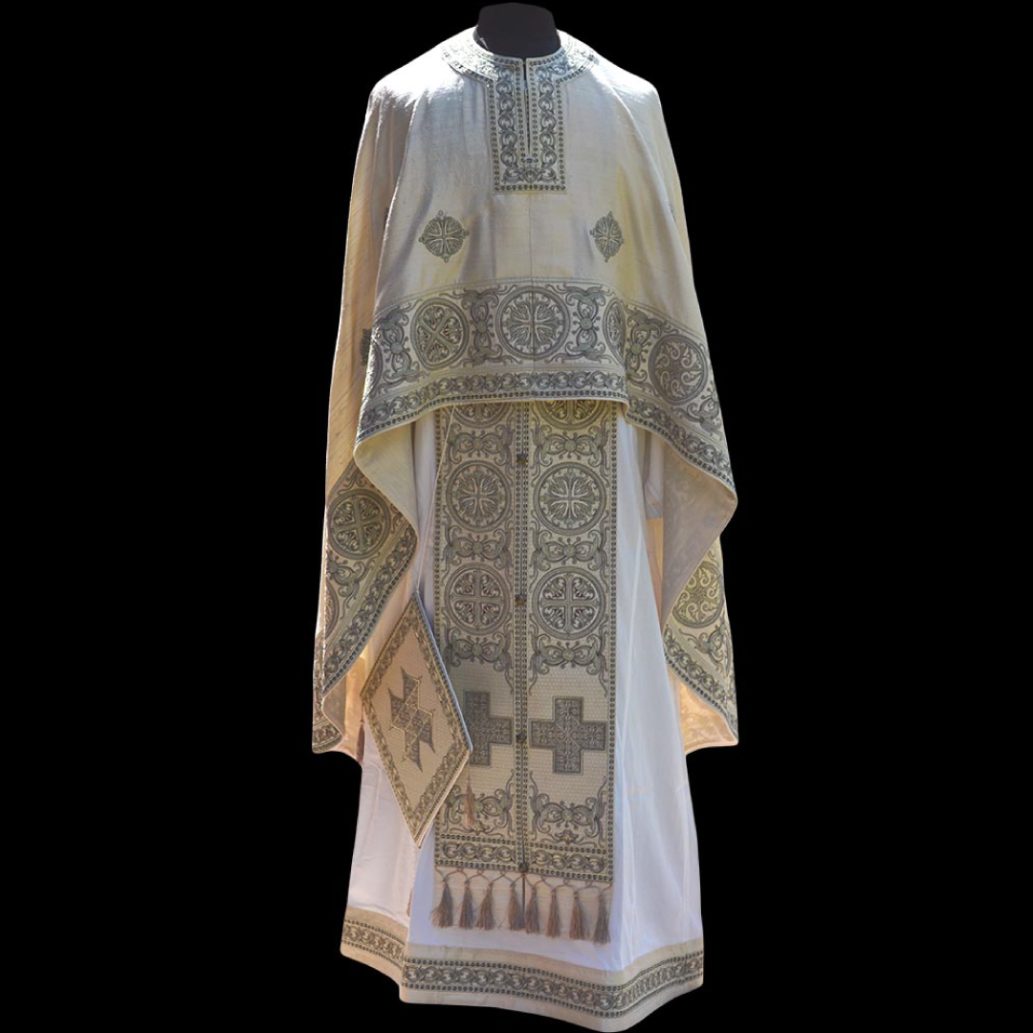
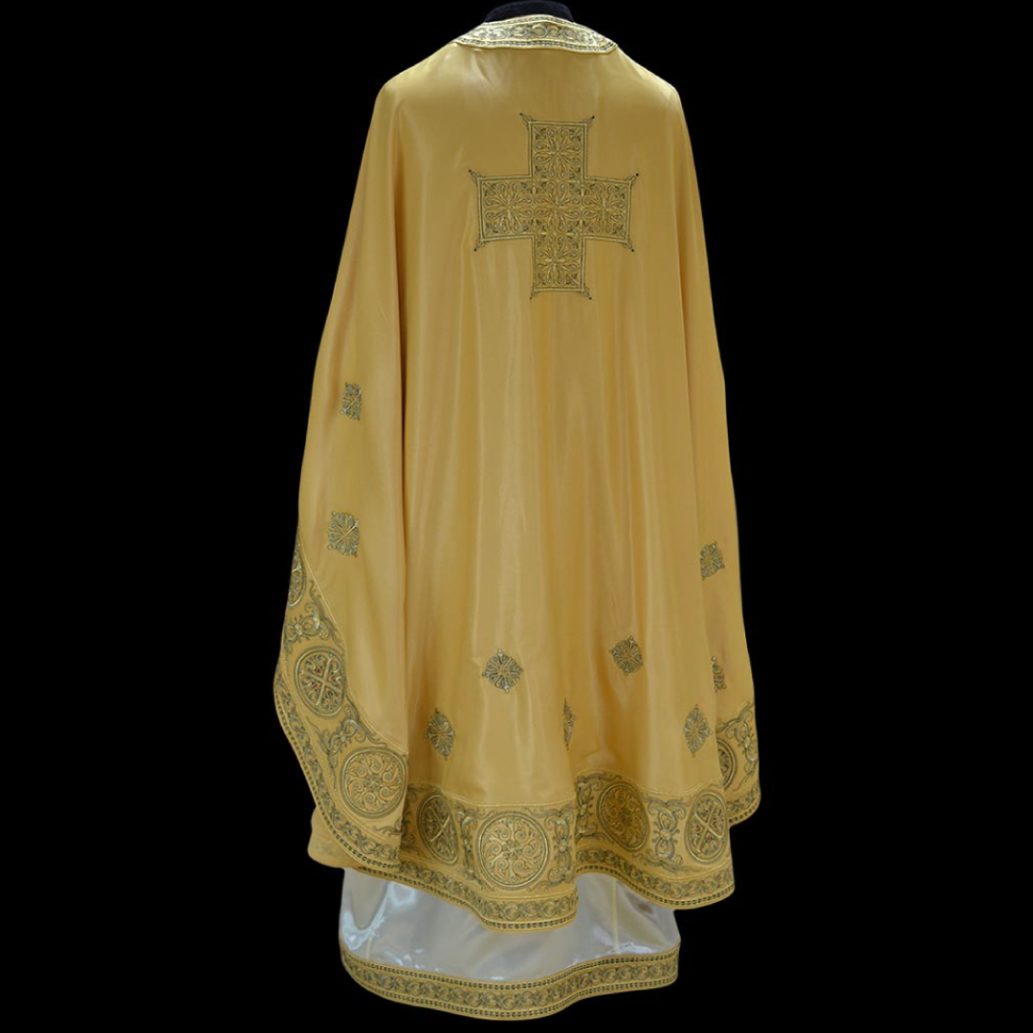
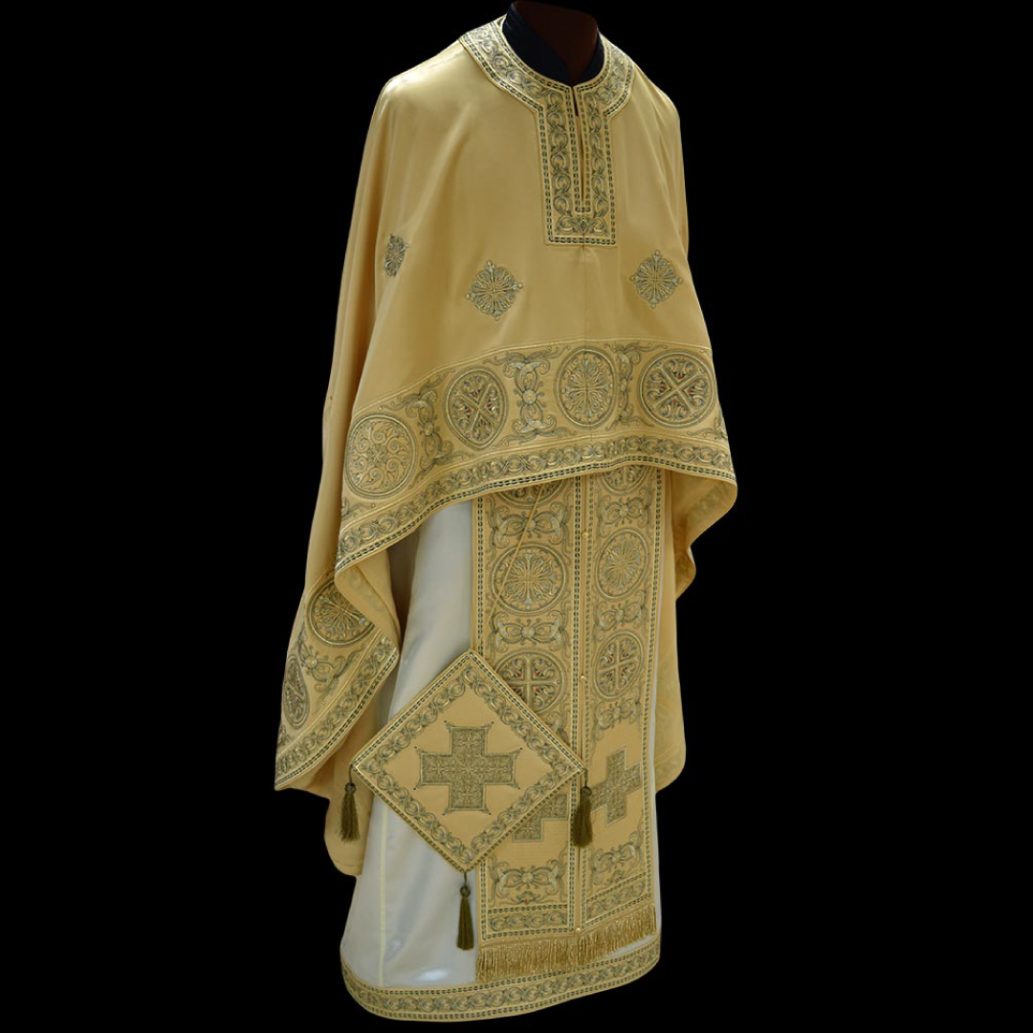
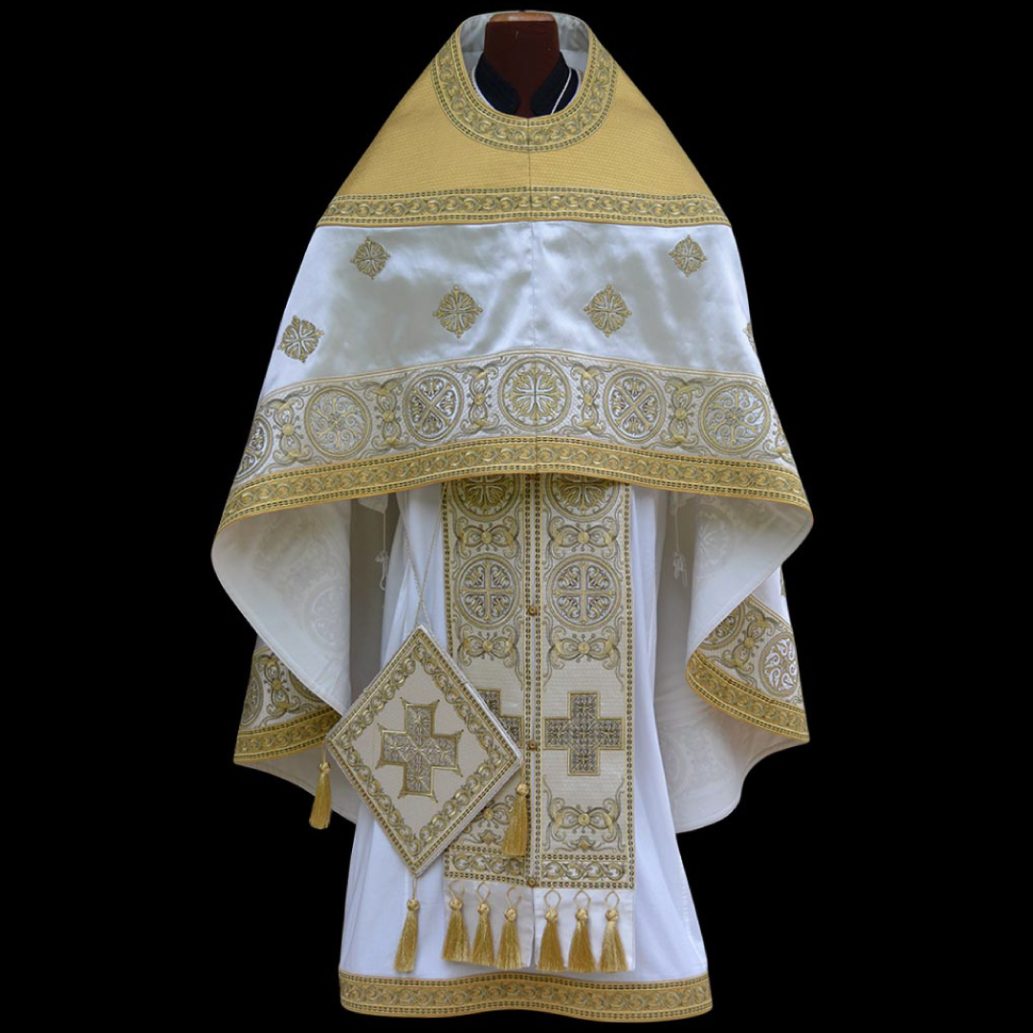
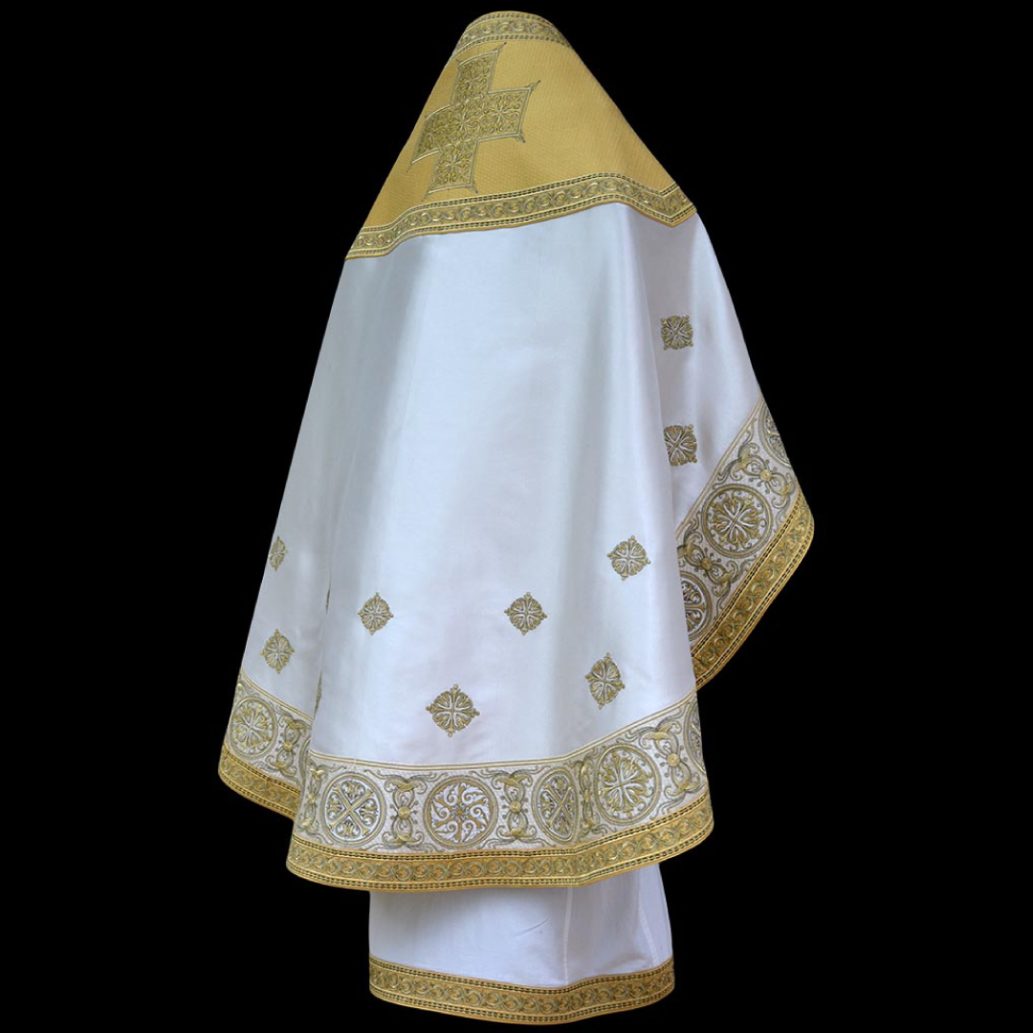
Previous
Next
USPENSKO VLADIMIRSKI
The embroidery is designed according to ornaments from the fresco painting at the famous Russian temple “Dormition of the Most Holy Theotokos” in the city of Vladimir, Russia. It is a remarkable monument of Russian construction built in the XII century. The church itself is a virtuoso architectural achievement with a unique, eminent, picturesque fresco, with dimensions of 300 square meters. The frescoes are made by the famous icon painter Andrei Rublev and his disciple the monk Daniel Chorny, who capture the sensitivity and beauty of Byzantine fresco painting.
…The embroidery is complemented…
The embroidery is complemented by precise contour lines, and small details in a different color of thread from the basic. Only metalic threads are used to make this model.
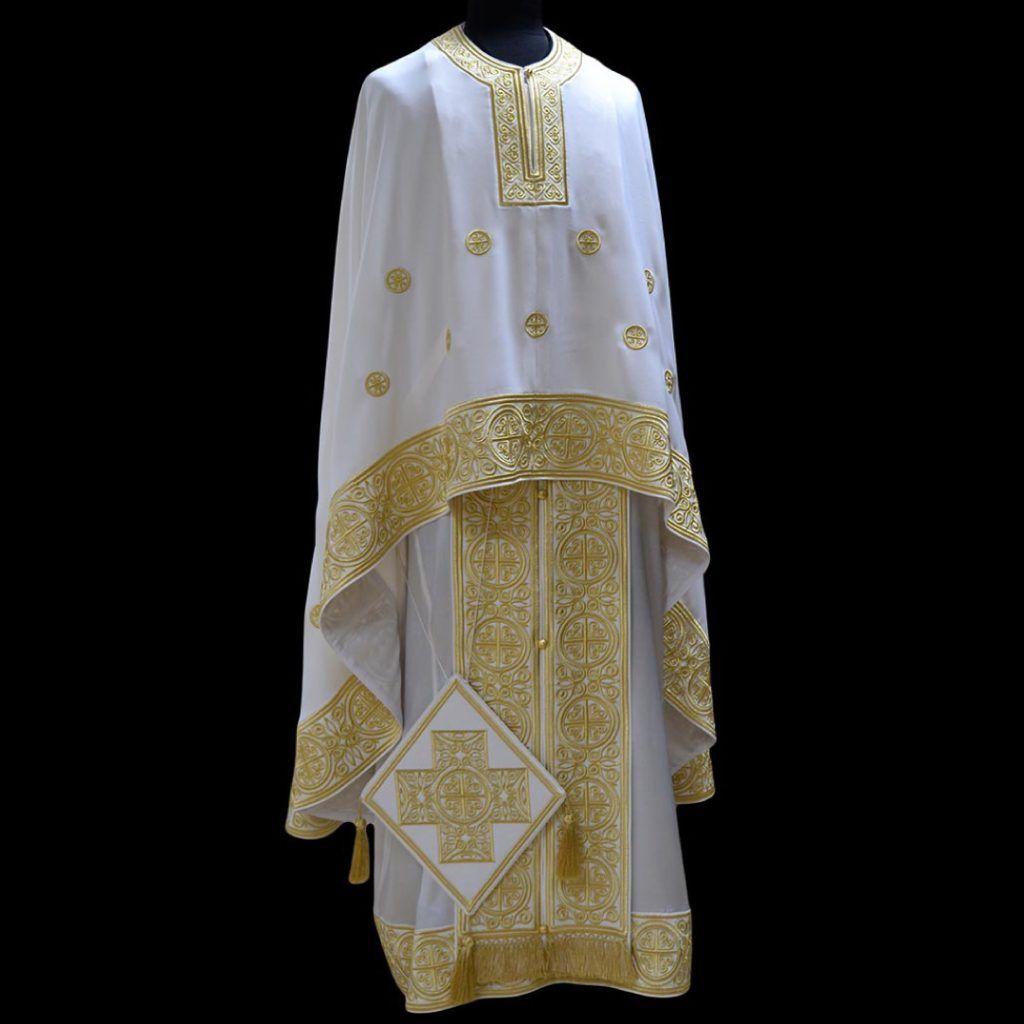
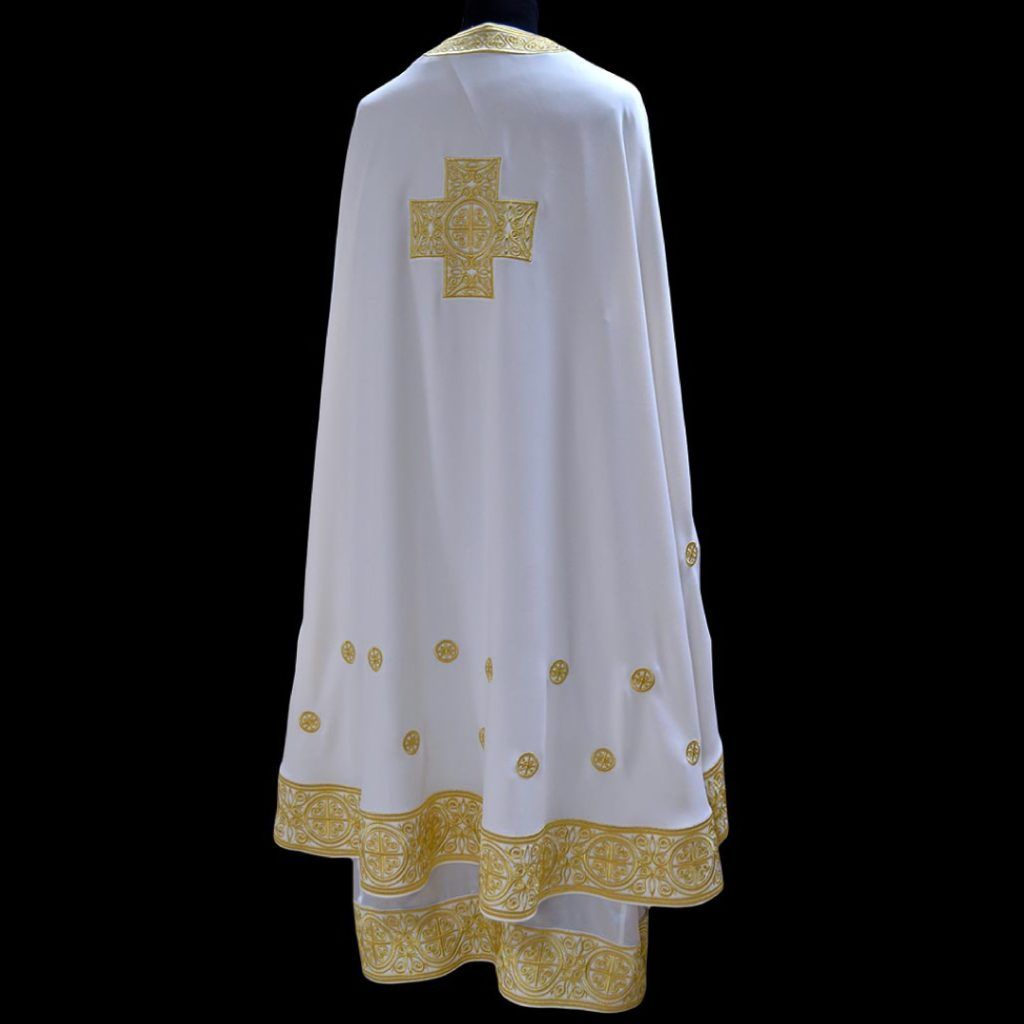
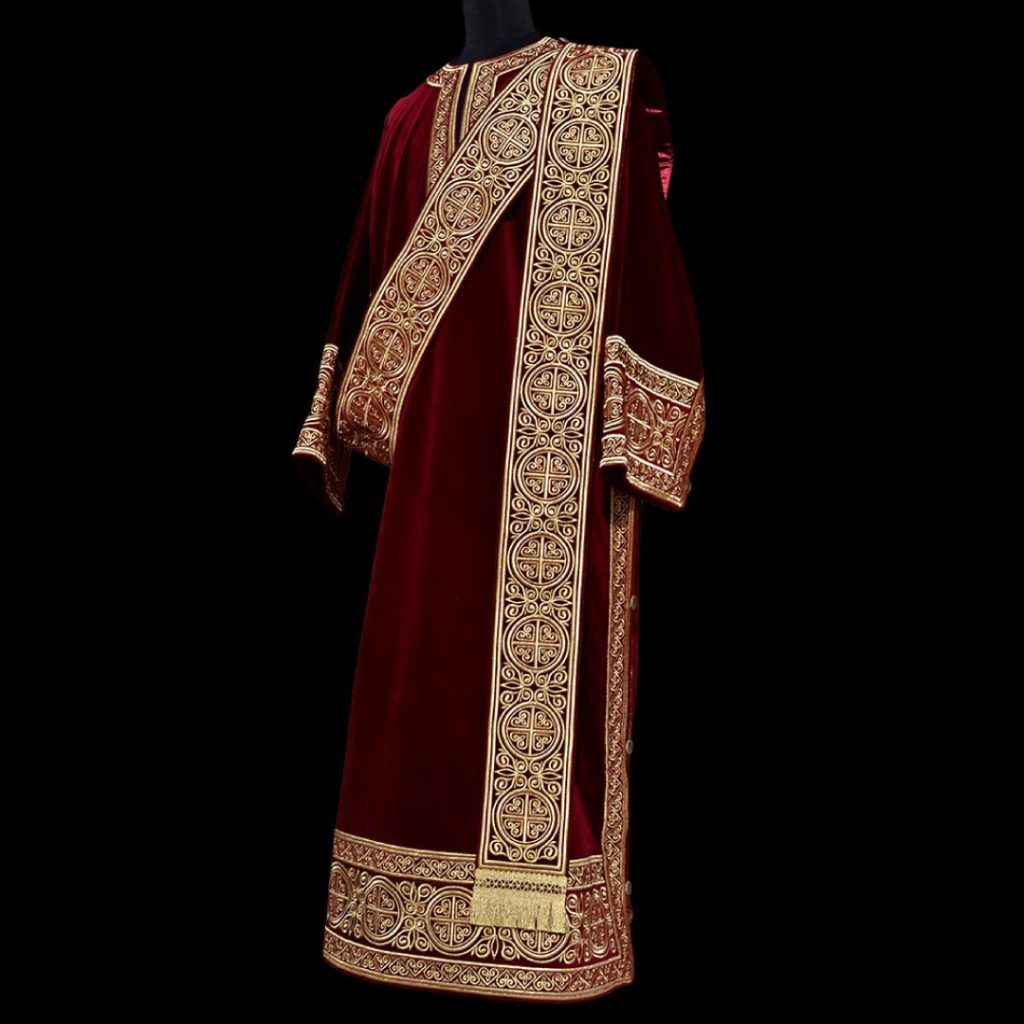
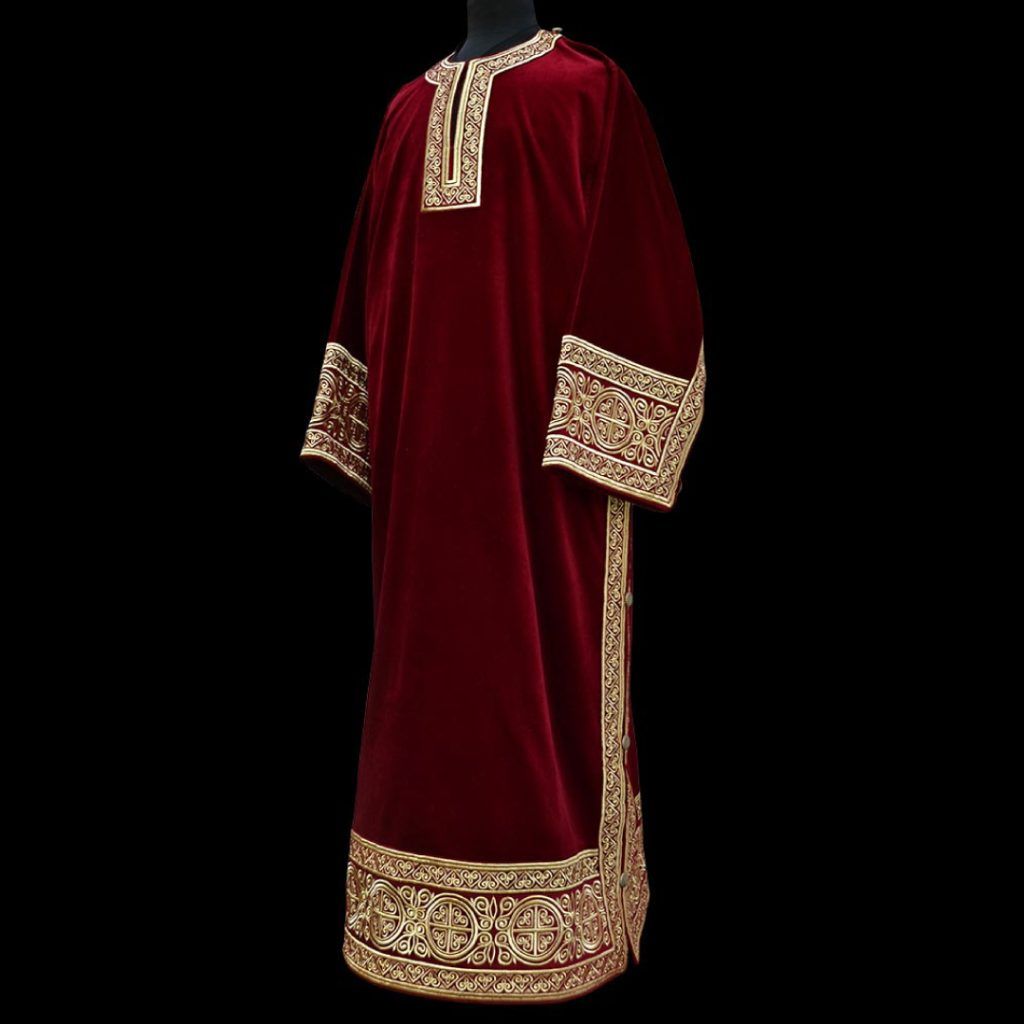
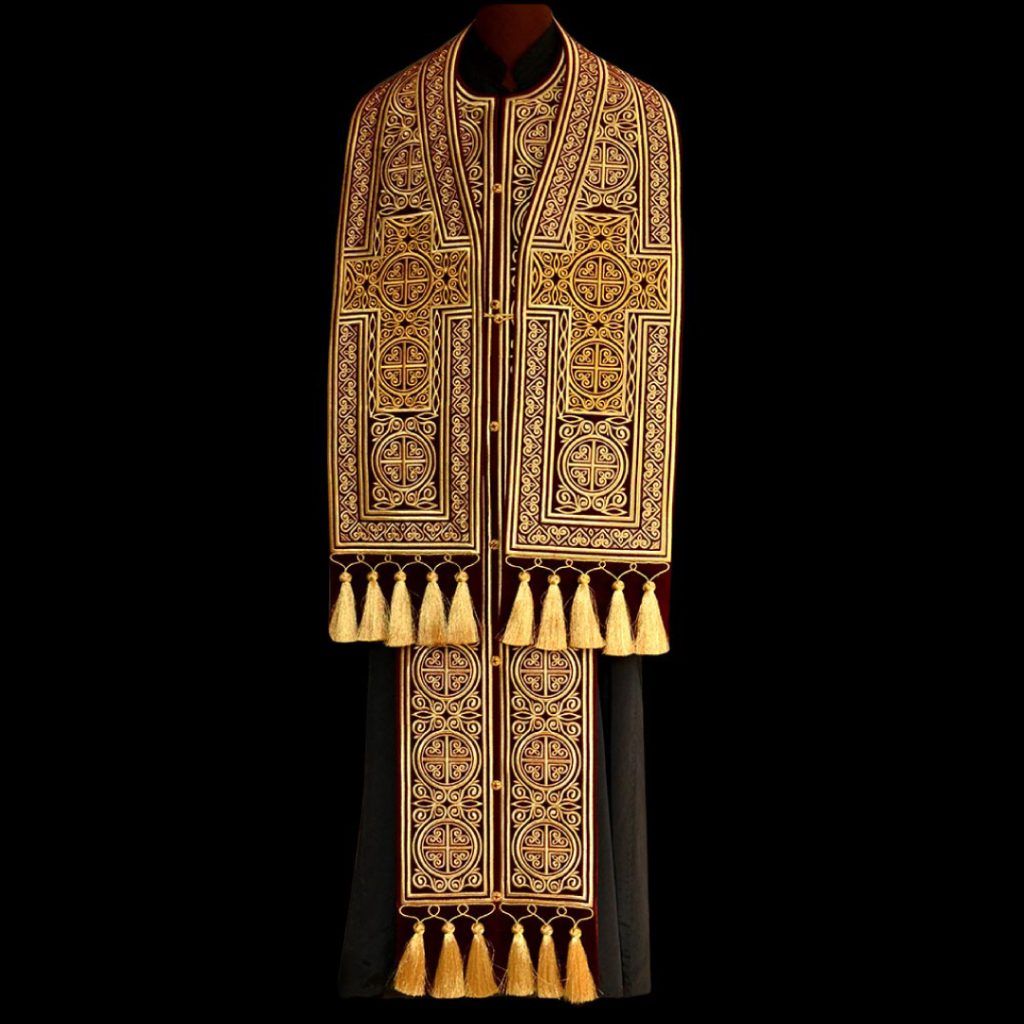
Previous
Next
LESNOVO
The design of the embroidery is composed of details of the epitrachelion of St. John the Theologian, a fresco in the altar east wall of the temple dedicated to St. Archangel Michael in the Lesnovo Monastery. The Lesnovo monastery was founded and dedicated to St. Archangel Michael in the 11th century – by St. Gavril Lesnovski who himself lived for 30 years in a hermitage in the area, preserved to this day. It was rebuilt in 1341 by Despot John Oliver. The fresco painting, from which the mentioned details of the embroidery are taken, was completed in 1347, probably by four painters.
The embroidery of the basic model-Lesnovo is made in one color of one’s choice.
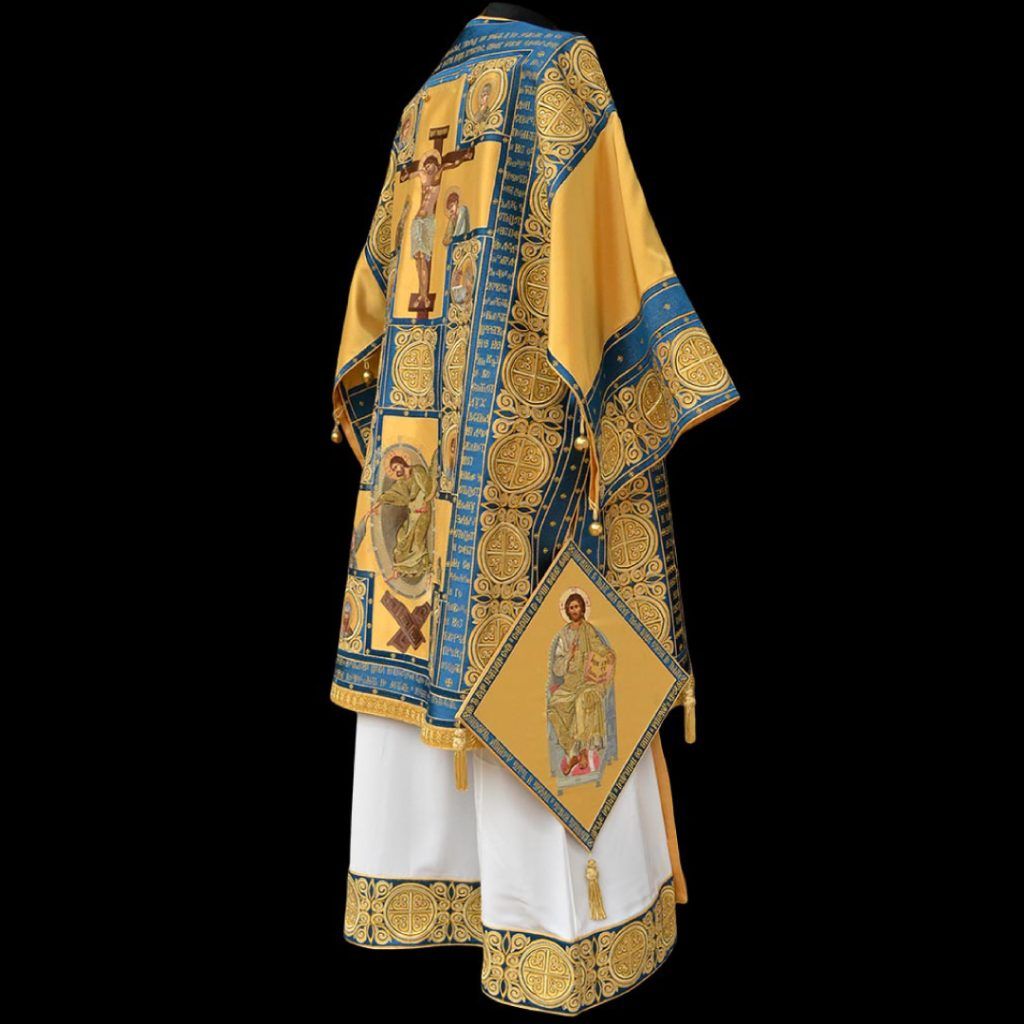
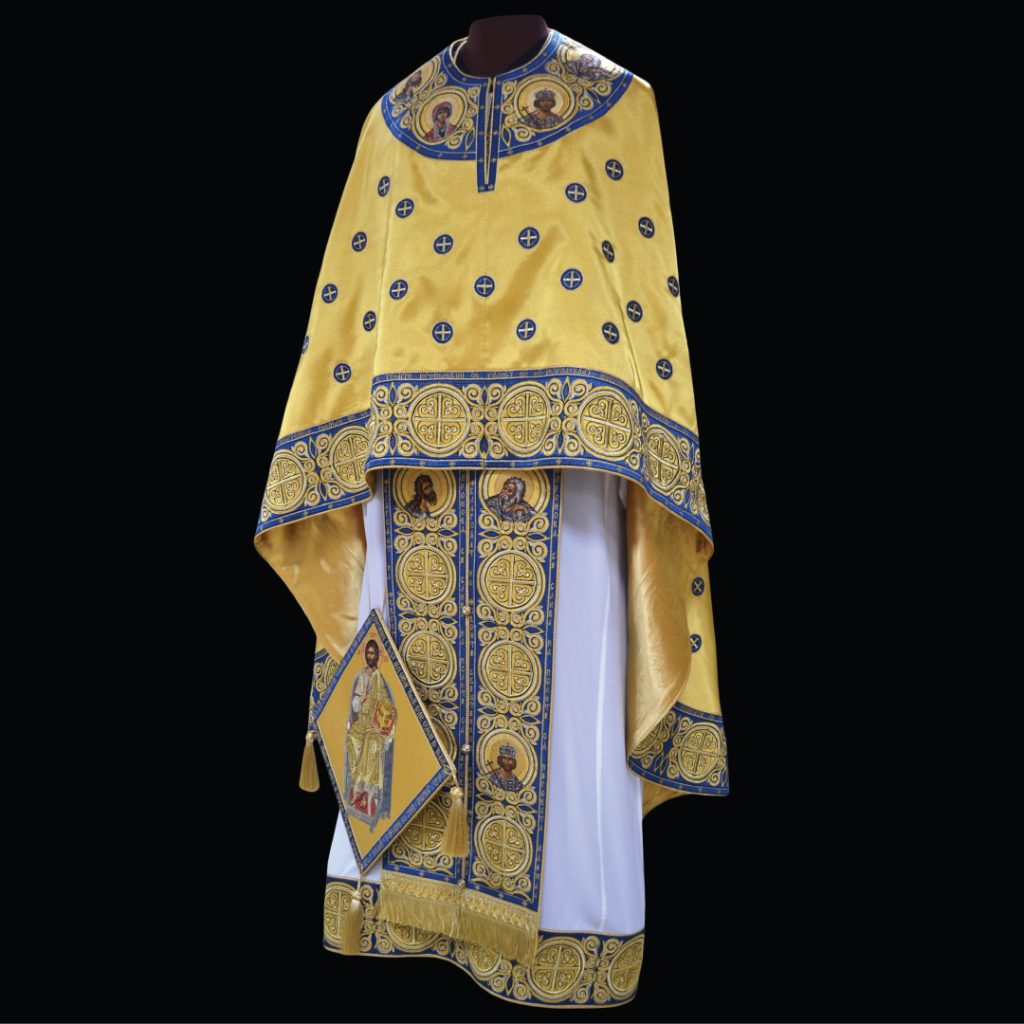
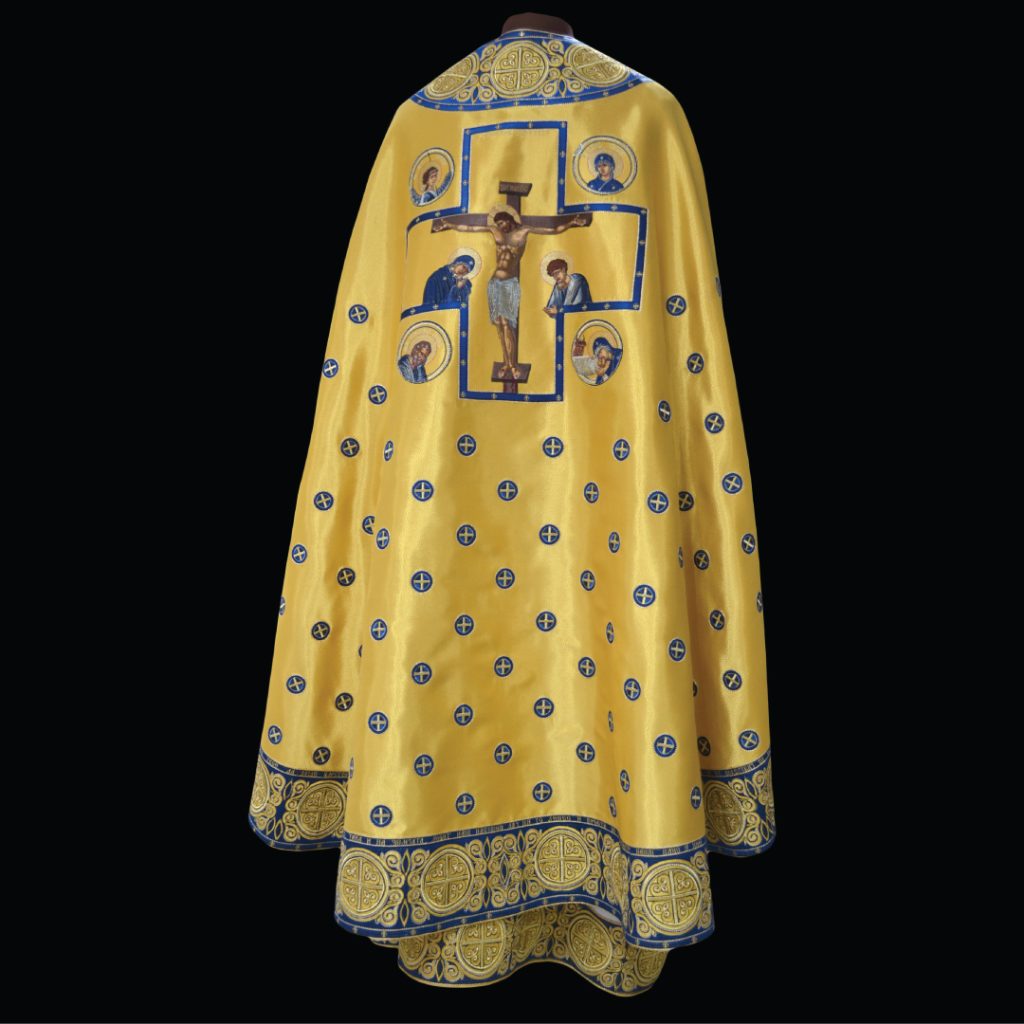
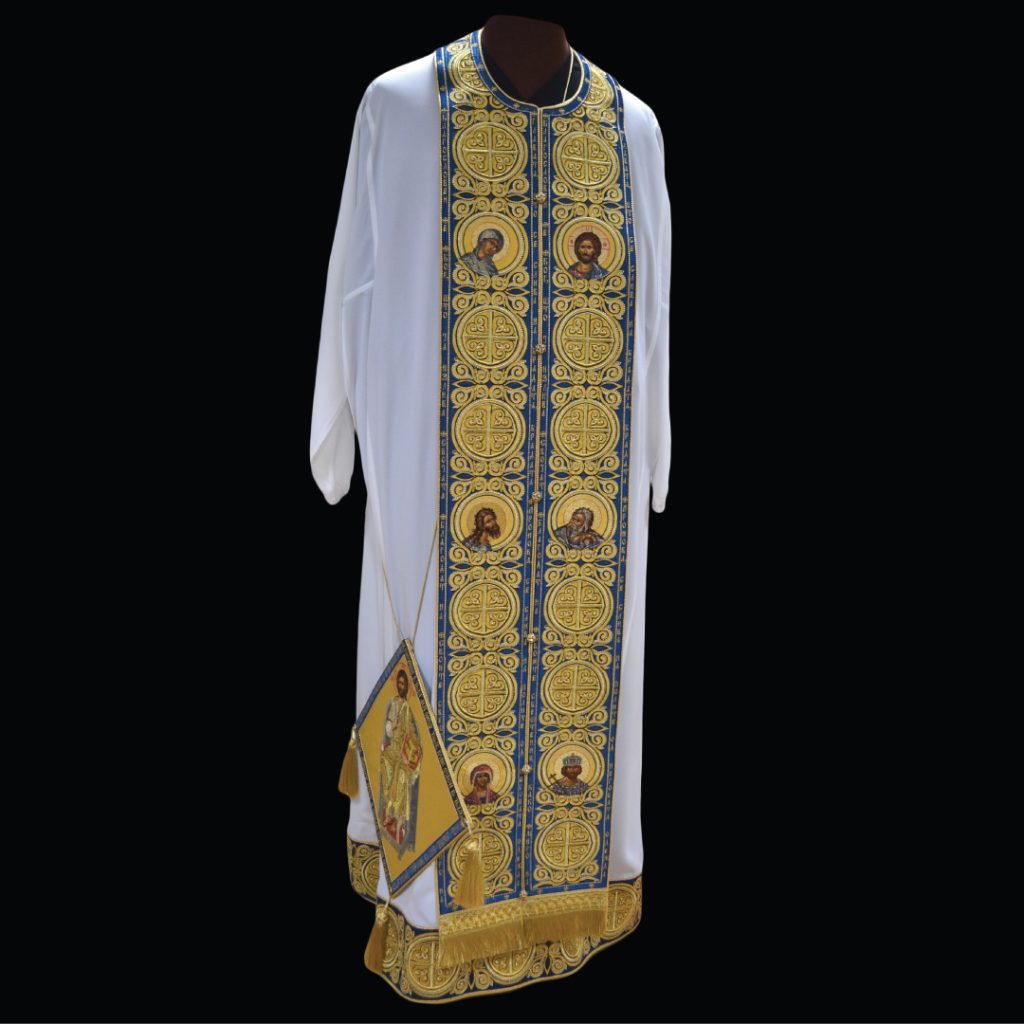
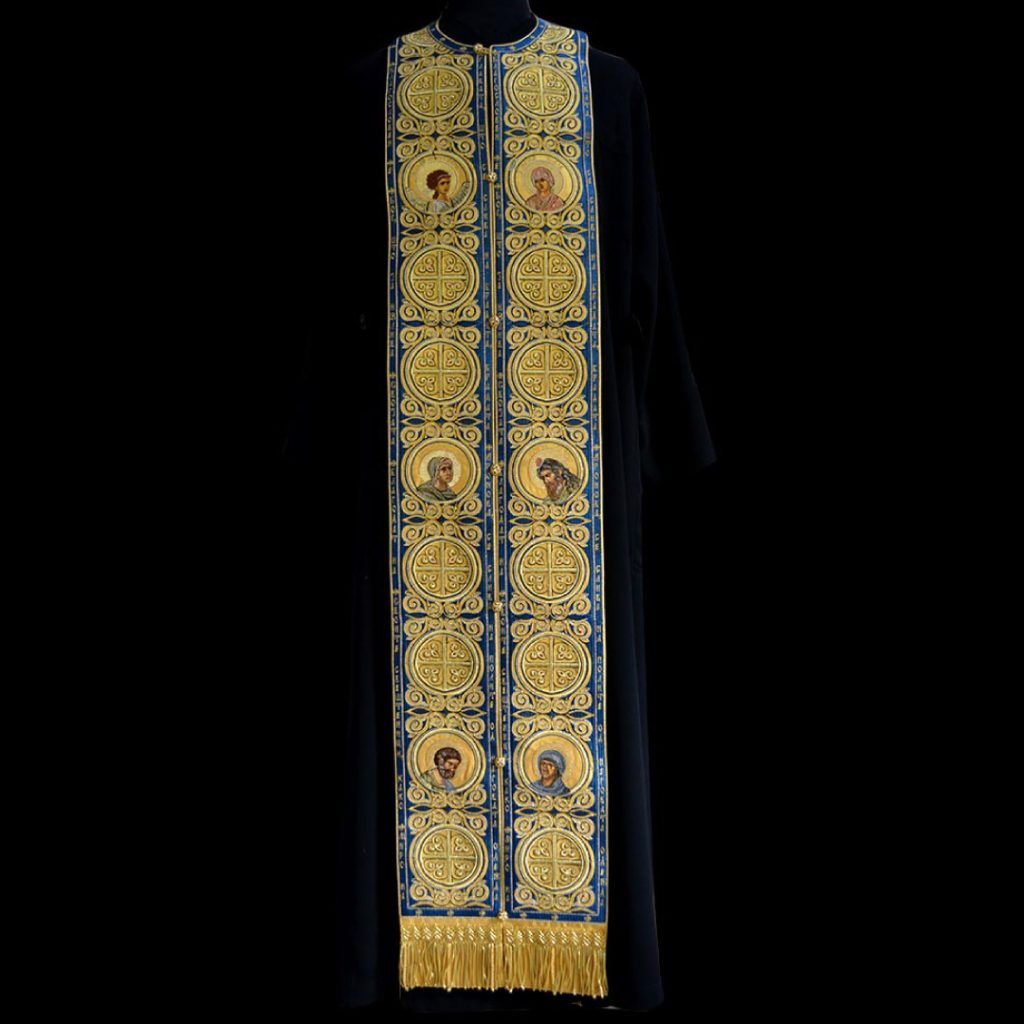
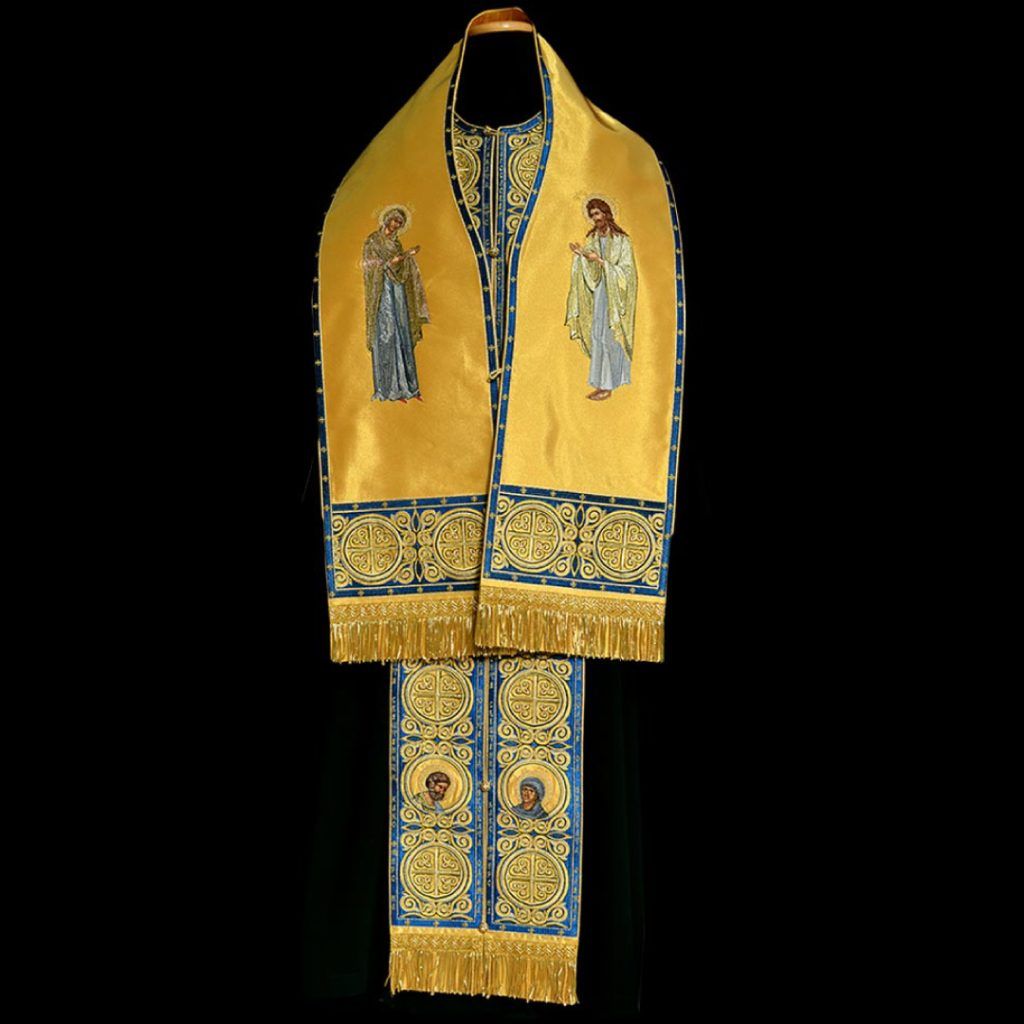
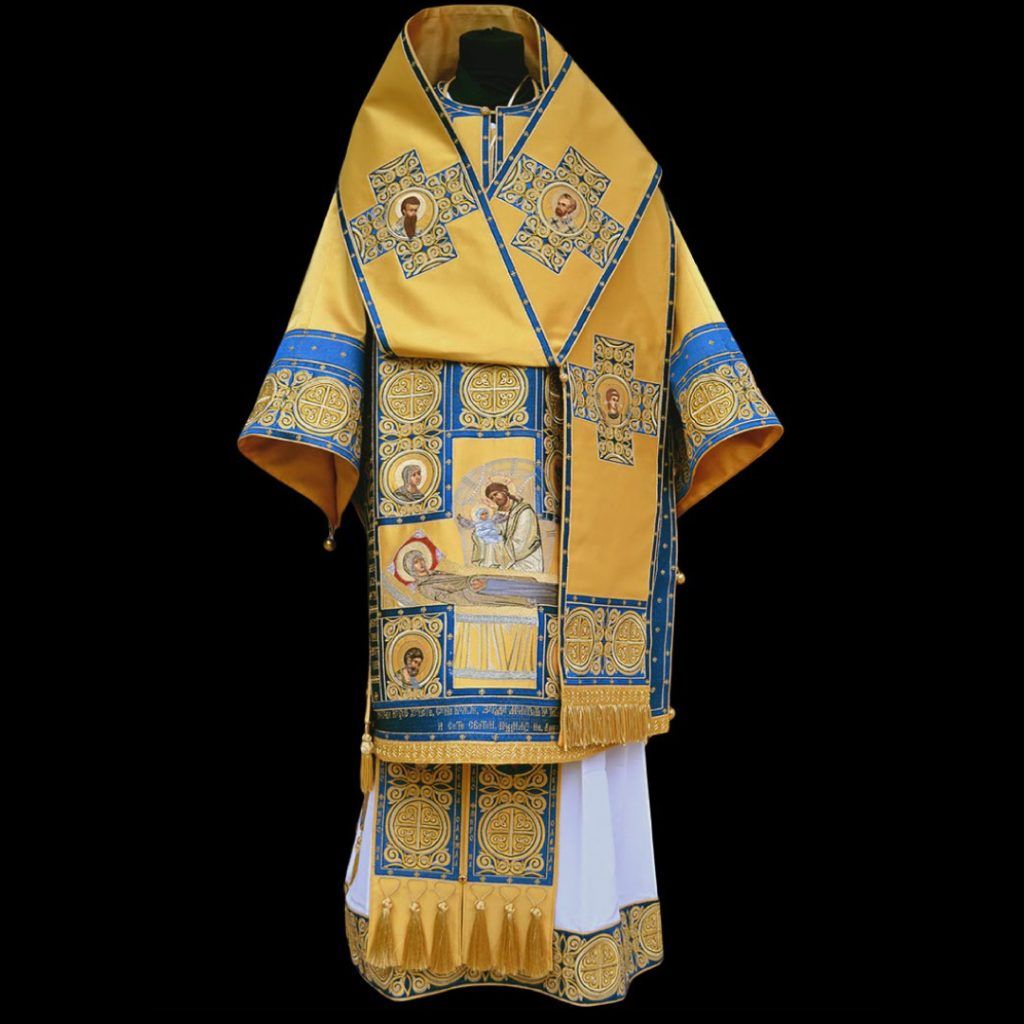
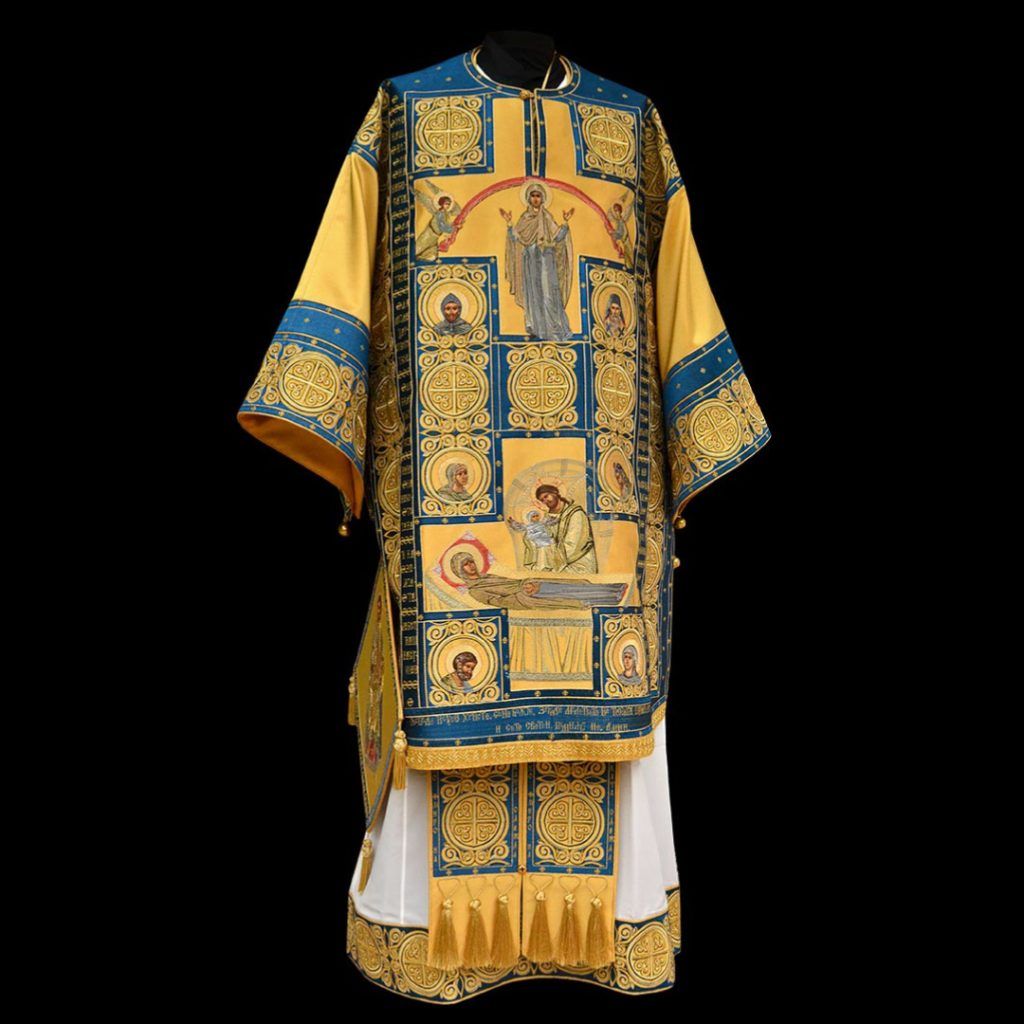
Previous
Next
LESNOVSKI
Identical with the Lesnovo model – the basic design of the embroidery is composed of details of the epitrachelion of St. John the Theologian, a fresco in the altar east wall of the temple dedicated to St. Archangel Michael in the Lesnovo Monastery. For the Lesnovski model, the design is complemented by several lines, and is prepared in the reverse perspective, emphasizing the very golden base of the material.
The arrangement of the Icons and the embroidery of the sakkos is made by the example of an old sakkos to the 14th century Moscow Patriarch Photius. On the front side of the sakkos, the text of the Lord’s Prayer is arranged in a circle around the space with the icons, by choice – in Macedonian language, and on the corresponding back side – the Symvol of Faith. Accordingly, on the Epitrachilion, the left and right Sleeves and the Epigonation, are the prayers uttered by the priest during their dressing.
Rounding the phelonion, the embroidery ends with the text of the Lord’s Prayer (optional – in Macedonian).
…The icons are in a part chosen by the client….
The icons are in a part chosen by the client. Besides the participants in the events represented on the back cross of the icon of the Crucifixtion of Christ, in oval icons are presented: Archangel Gabriel and the Most Holy Theotokos from the Annunciation, Saint Joseph and the Most Holy Theotokos with Christ. The selection of icons according to the two pairs of vestments is – St. Joachim and Anna from the entrance of the Theotokos to the Temple , St. Zacharias and Elizabeth, St. Cyril and Methodius, St. Clement and Nahum, St. Gabriel the Great and St. Gabriel Lesnovski – on one and – St. Constantine , St. John the Baptist, St. Elijah, the Most Holy Theotokos and the Lord Jesus Christ – on the other pair of vestments. On the Epigonation is the embroidered icon of the Lord Jesus Christ on the throne.
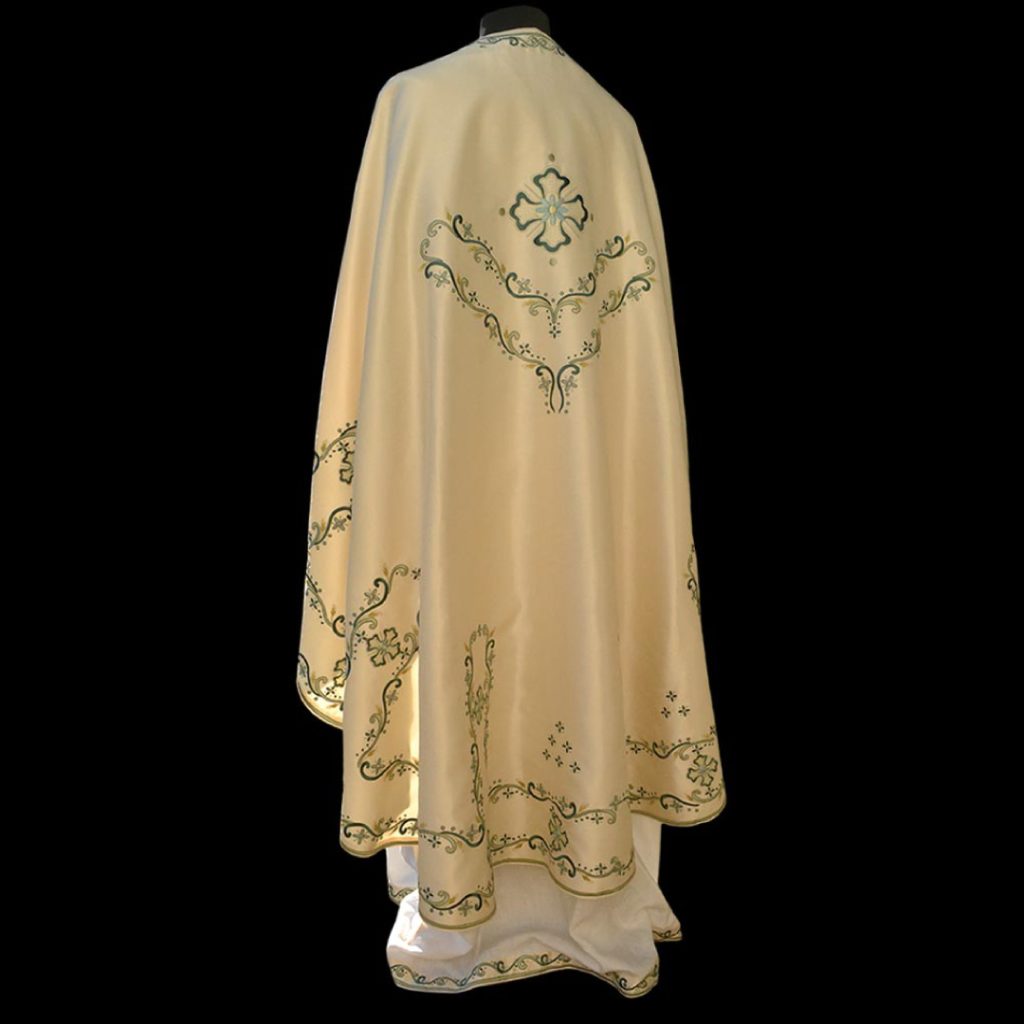
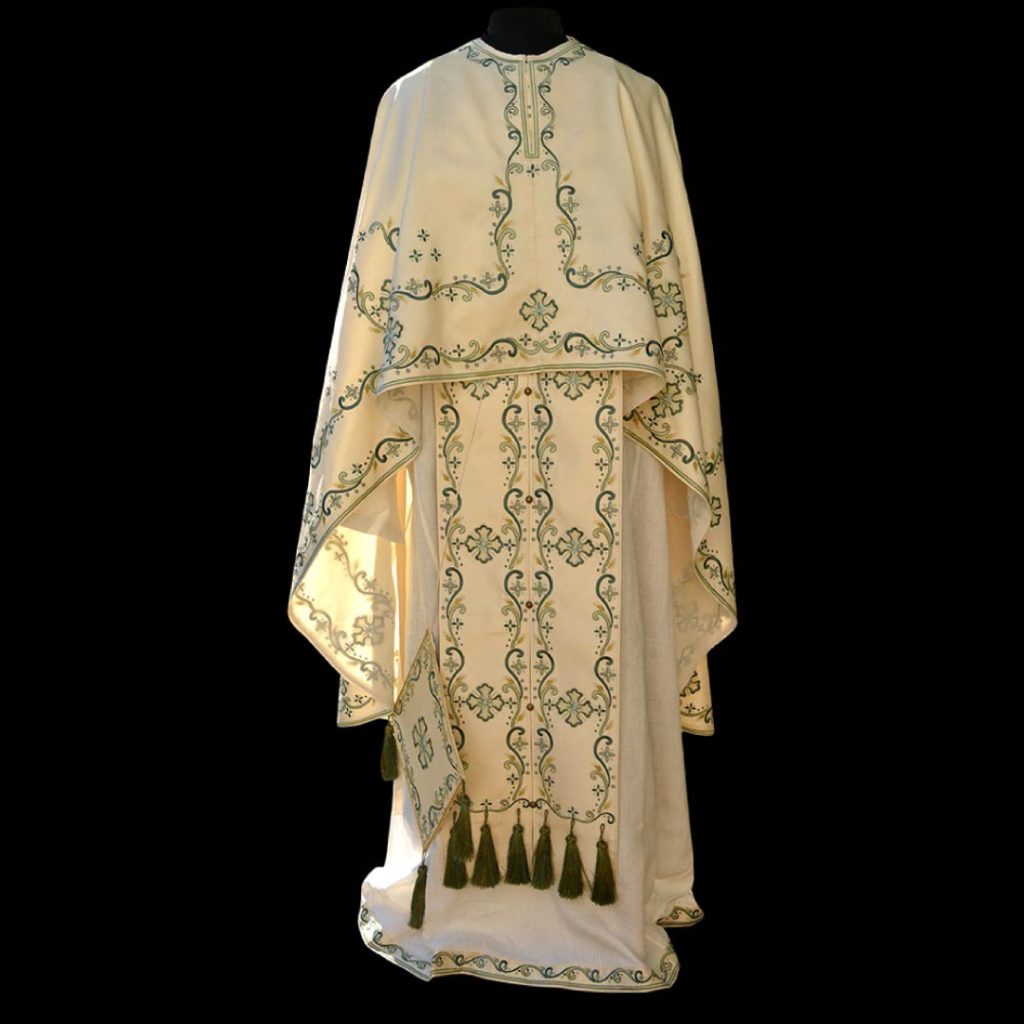
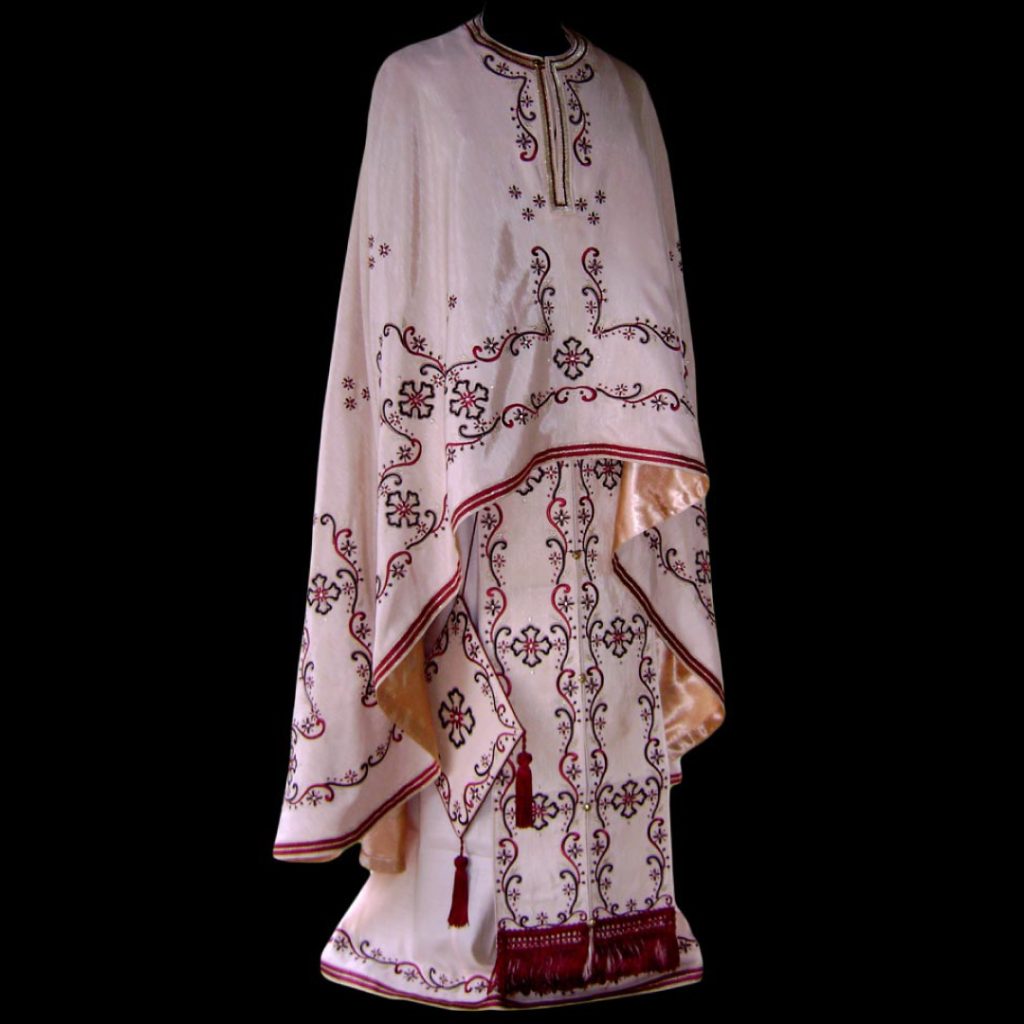
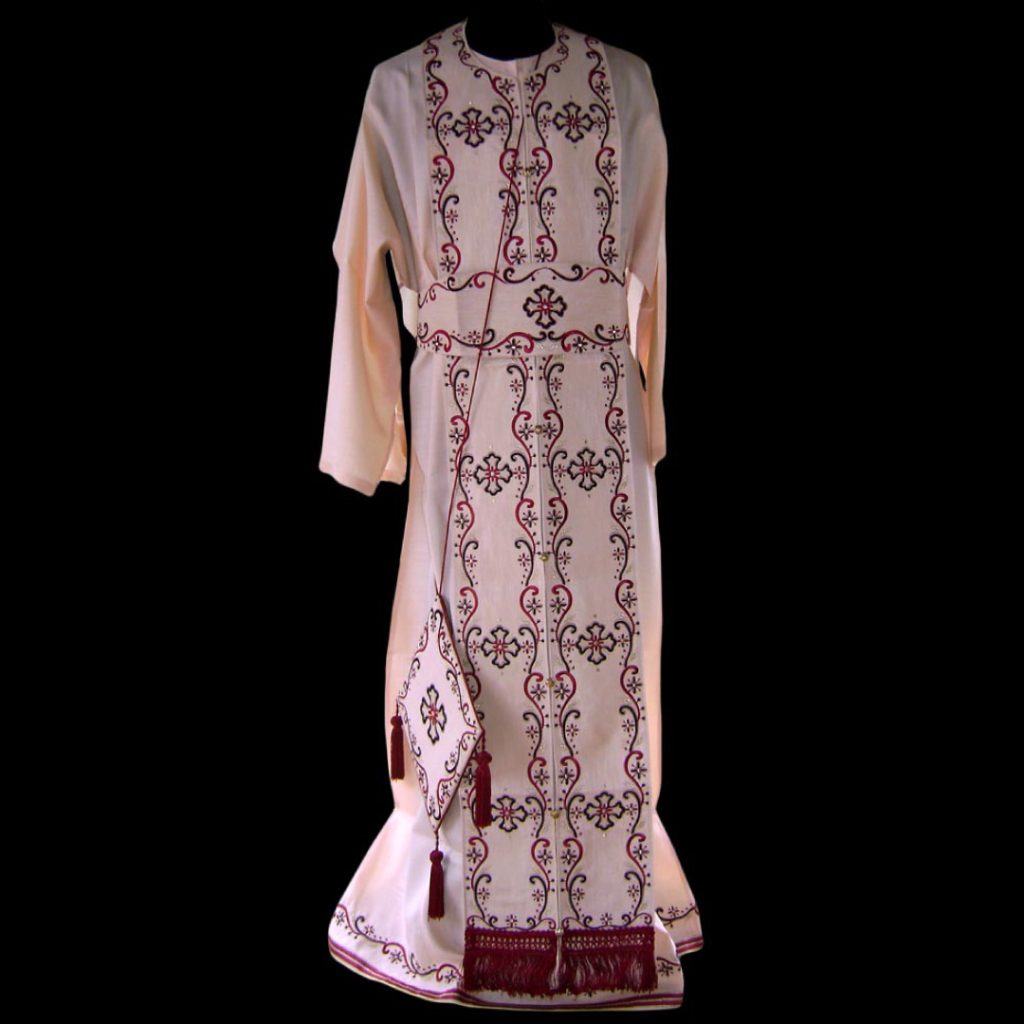
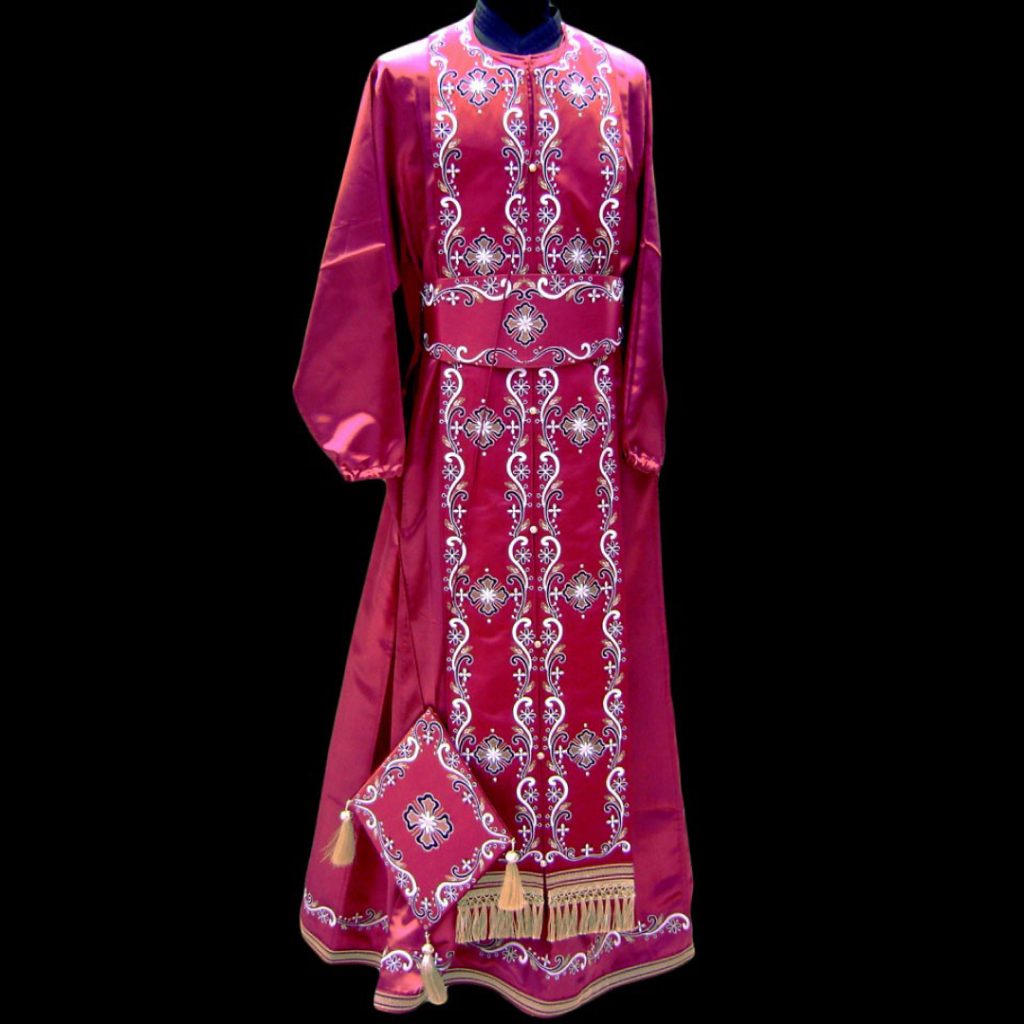
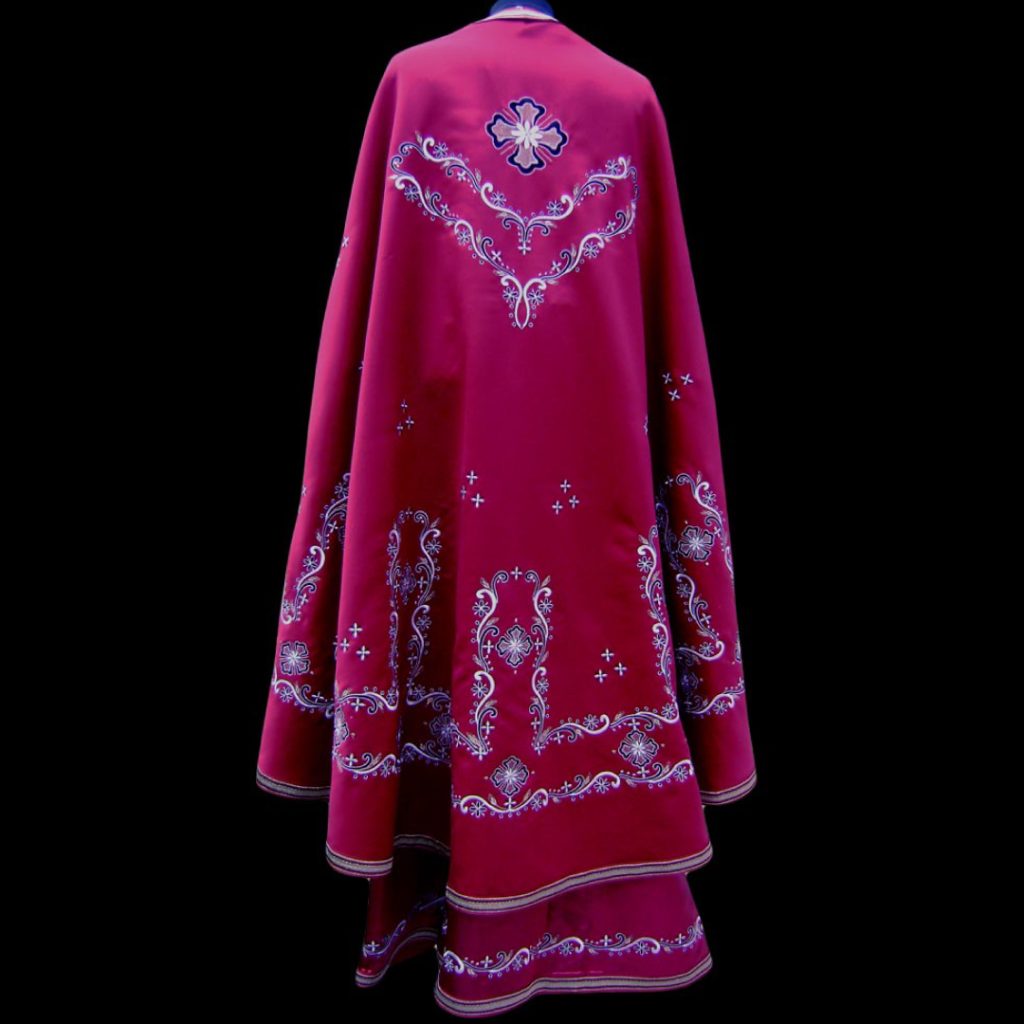
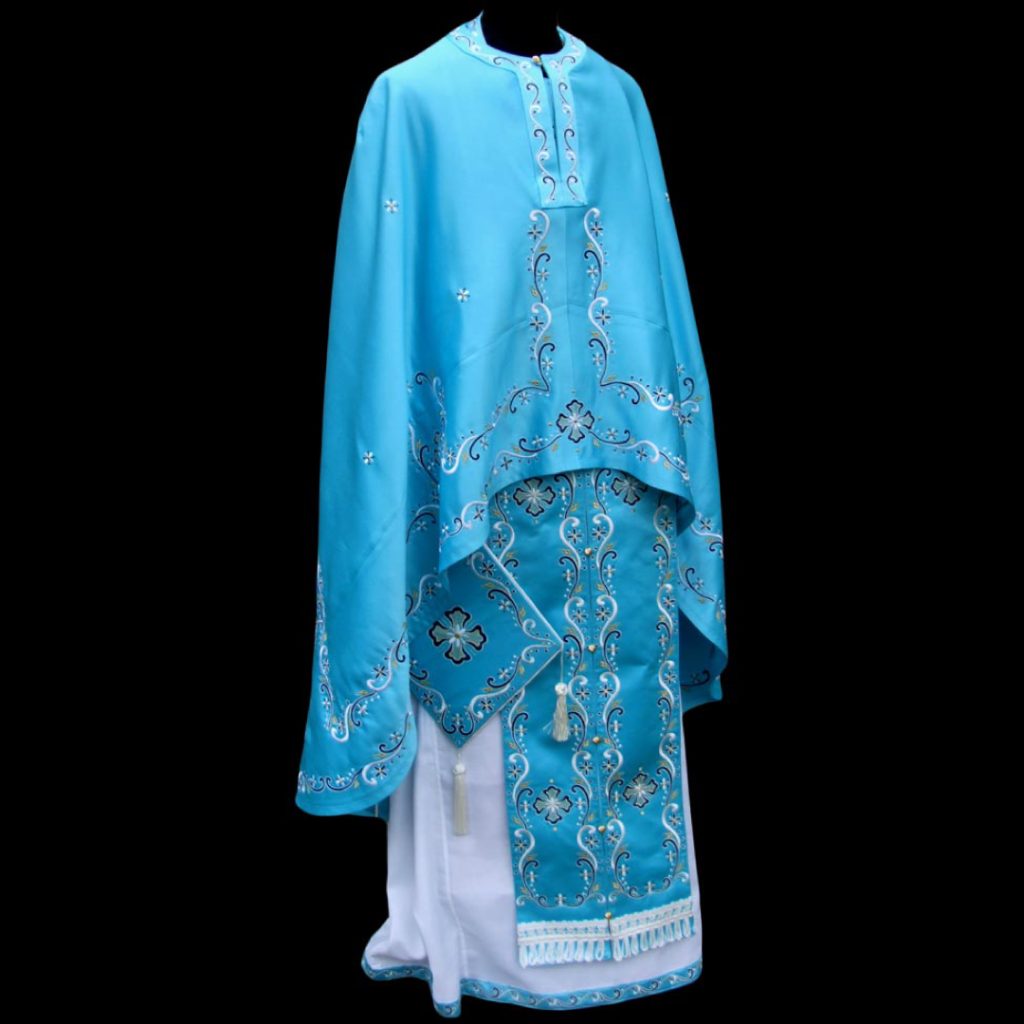
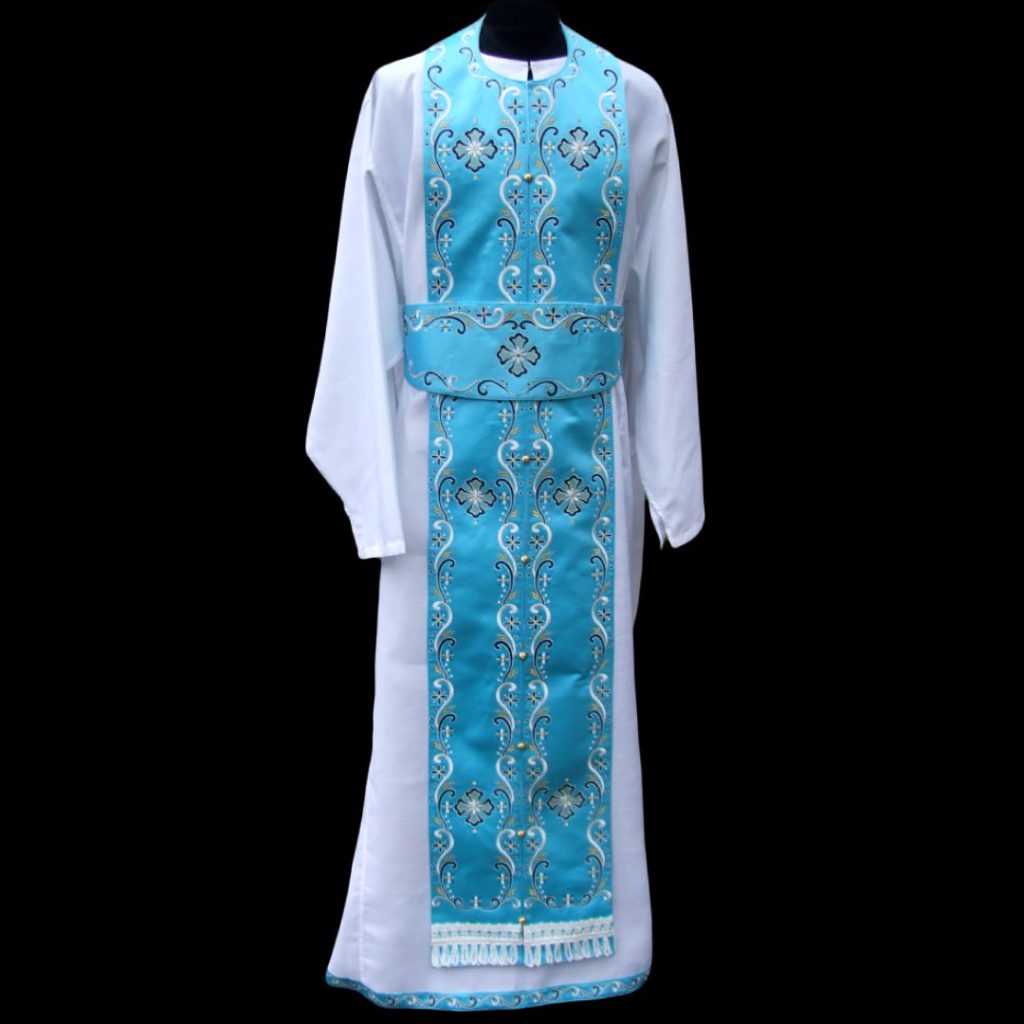
Previous
Next
ARIZONA
The designs for the Arizona vestments are based on the epitrachilion of Elder Ephraim of Arizona, that originated their name. The basic model was a red fabric with embroidery in white, gold and black threads. Since then, by wishes of different priests, several color combinations have been created from this model of vestments.
The embroidery of the Arizona model in all color combinations has the gold silver with which the wheat gleans are embroidered, and two selected appropriate colors on different fabrics.
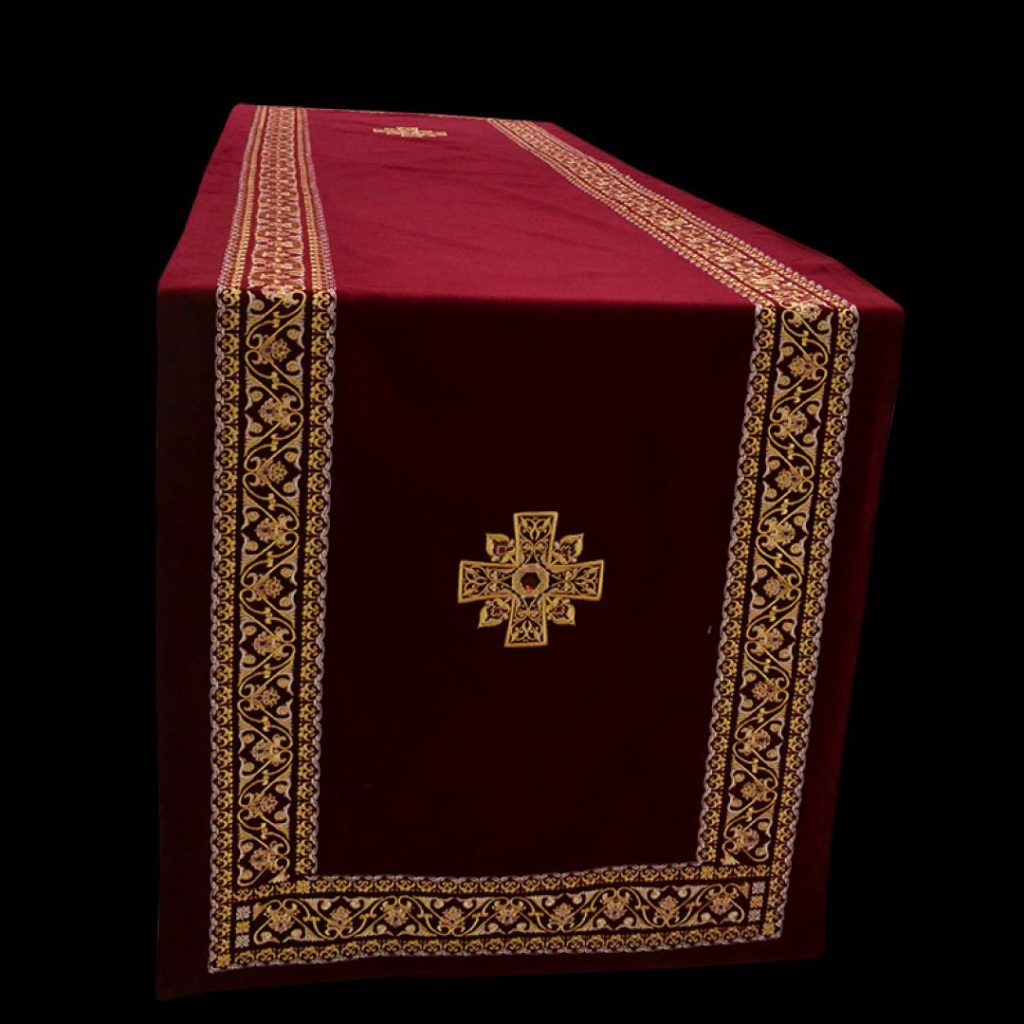
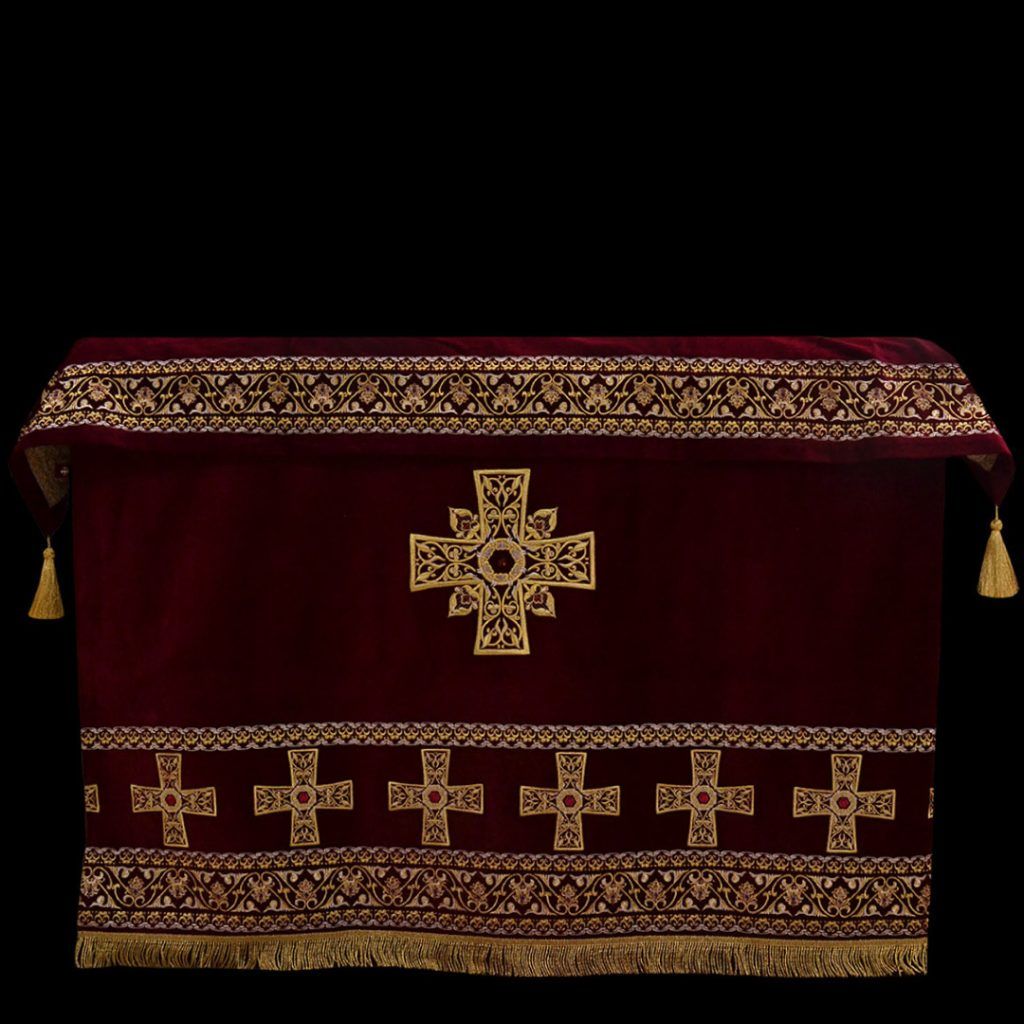
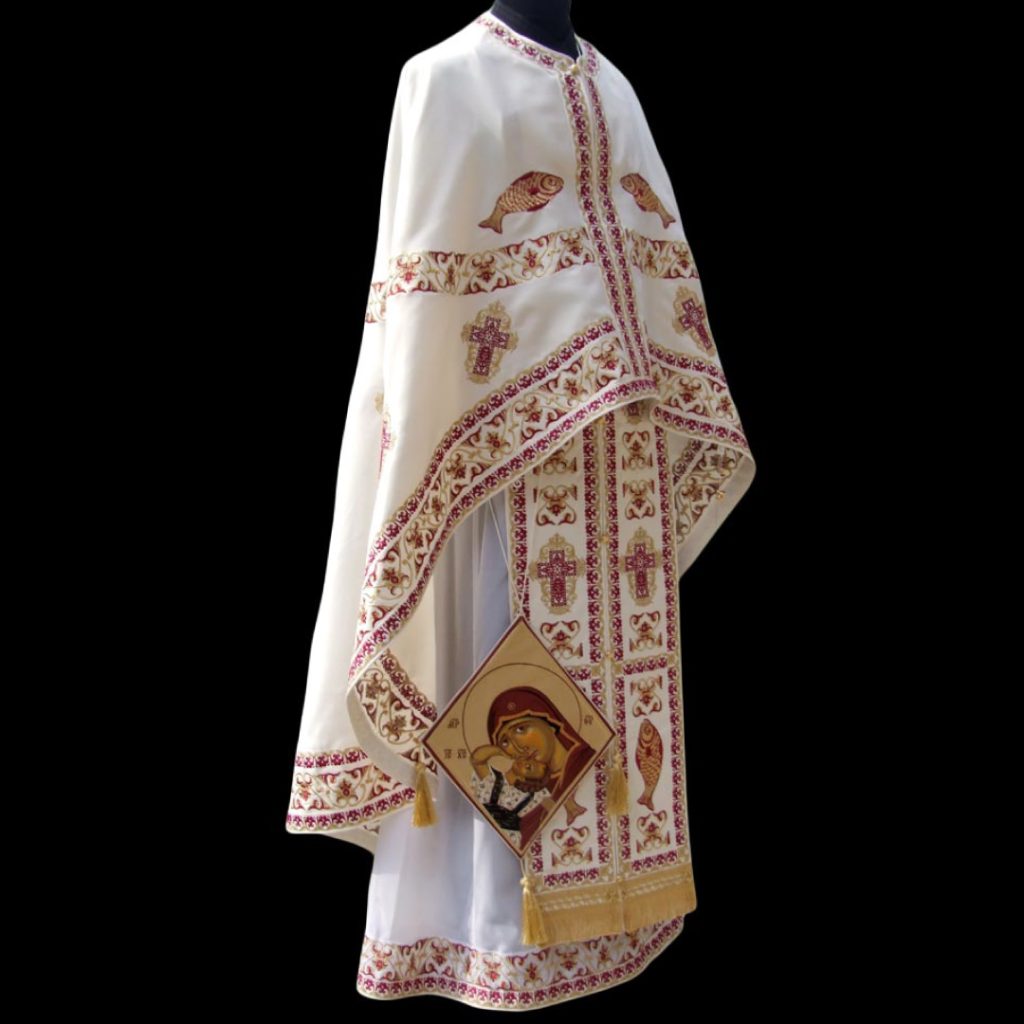
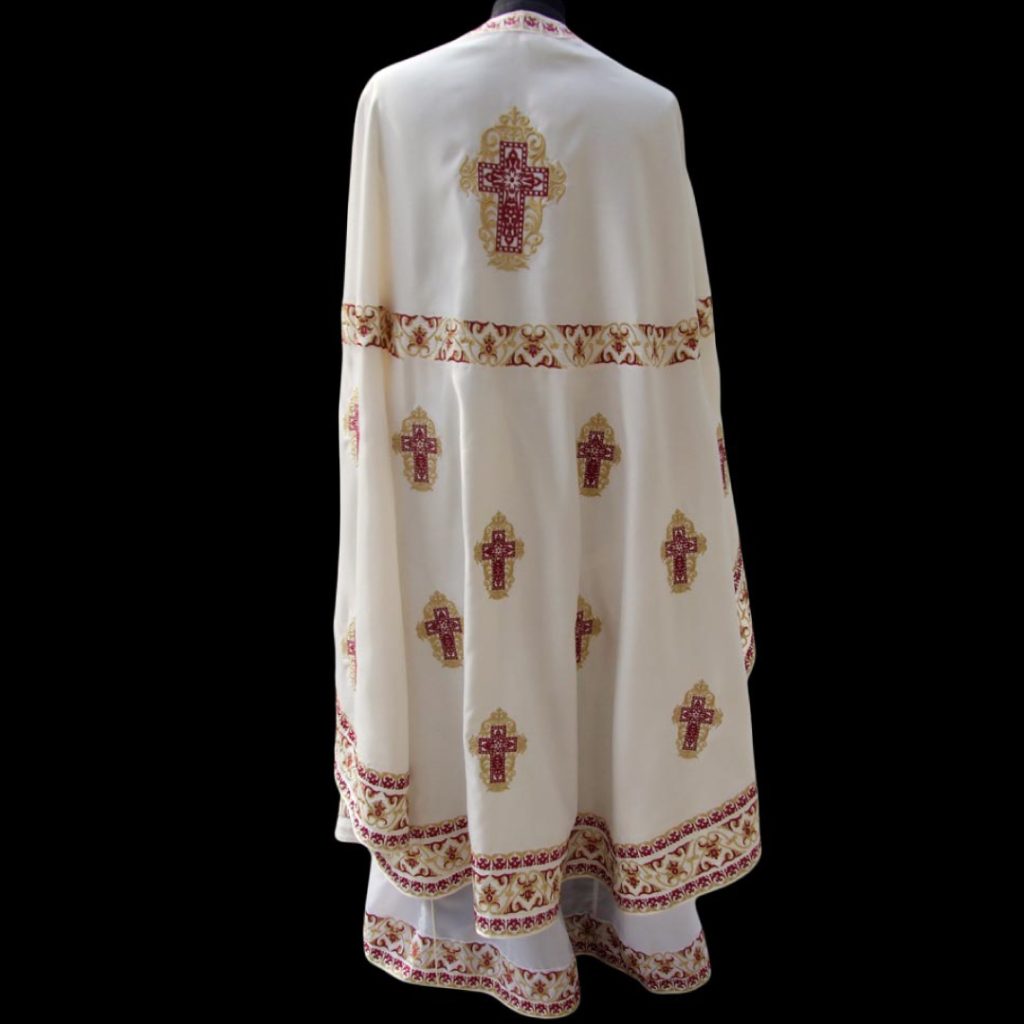
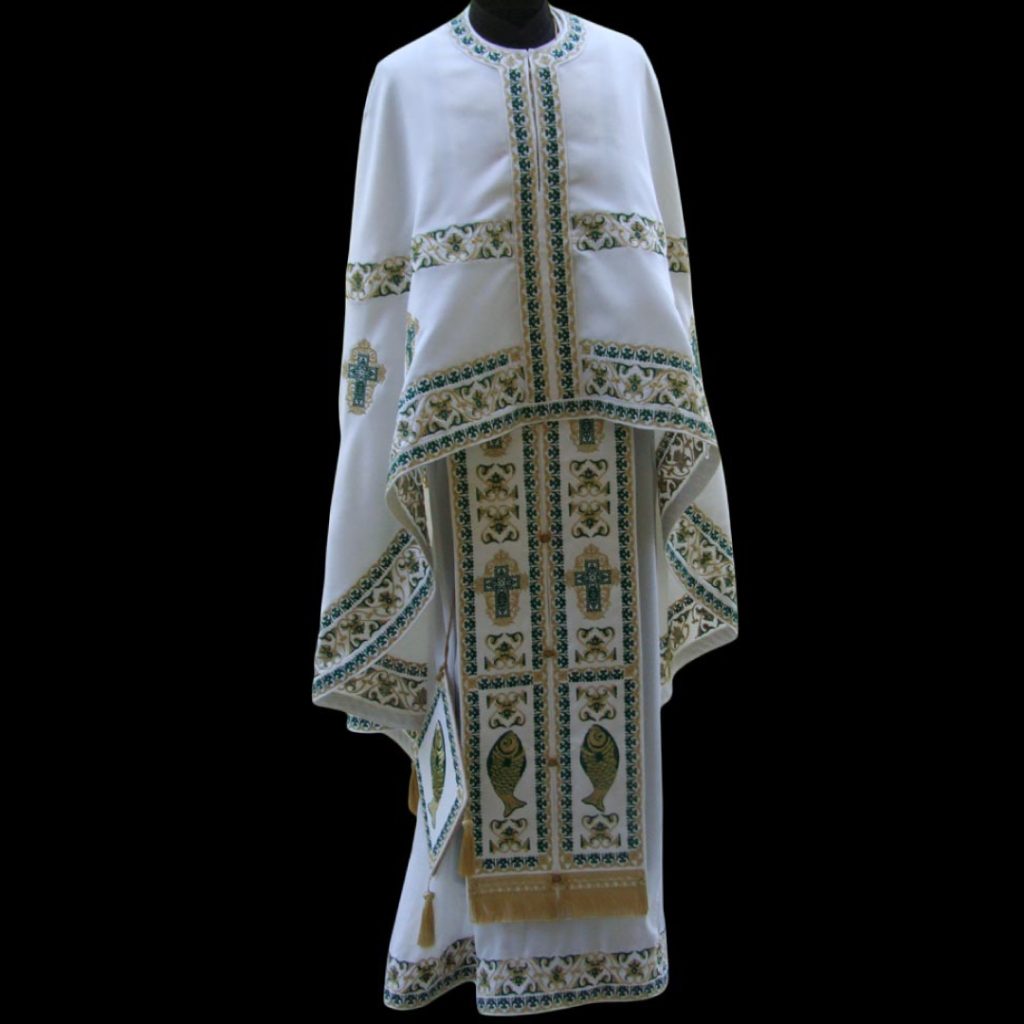
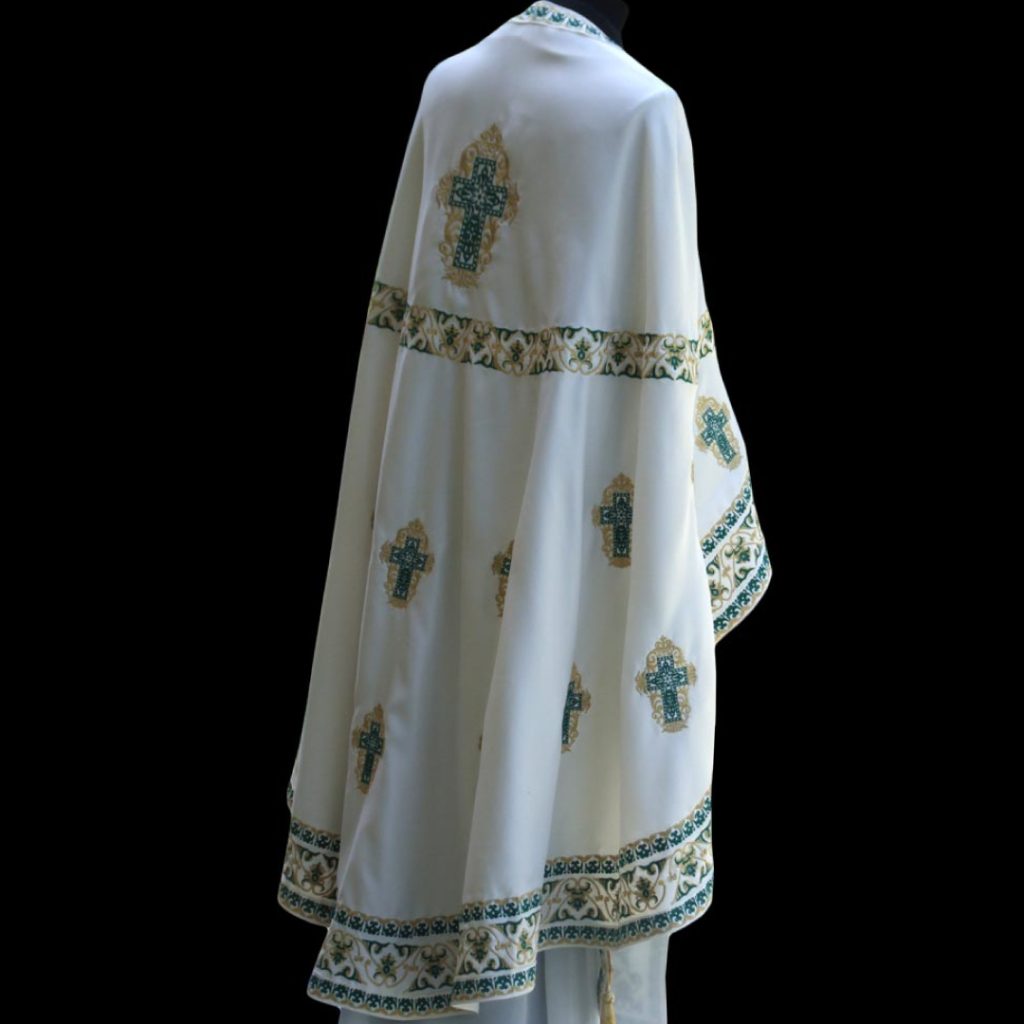
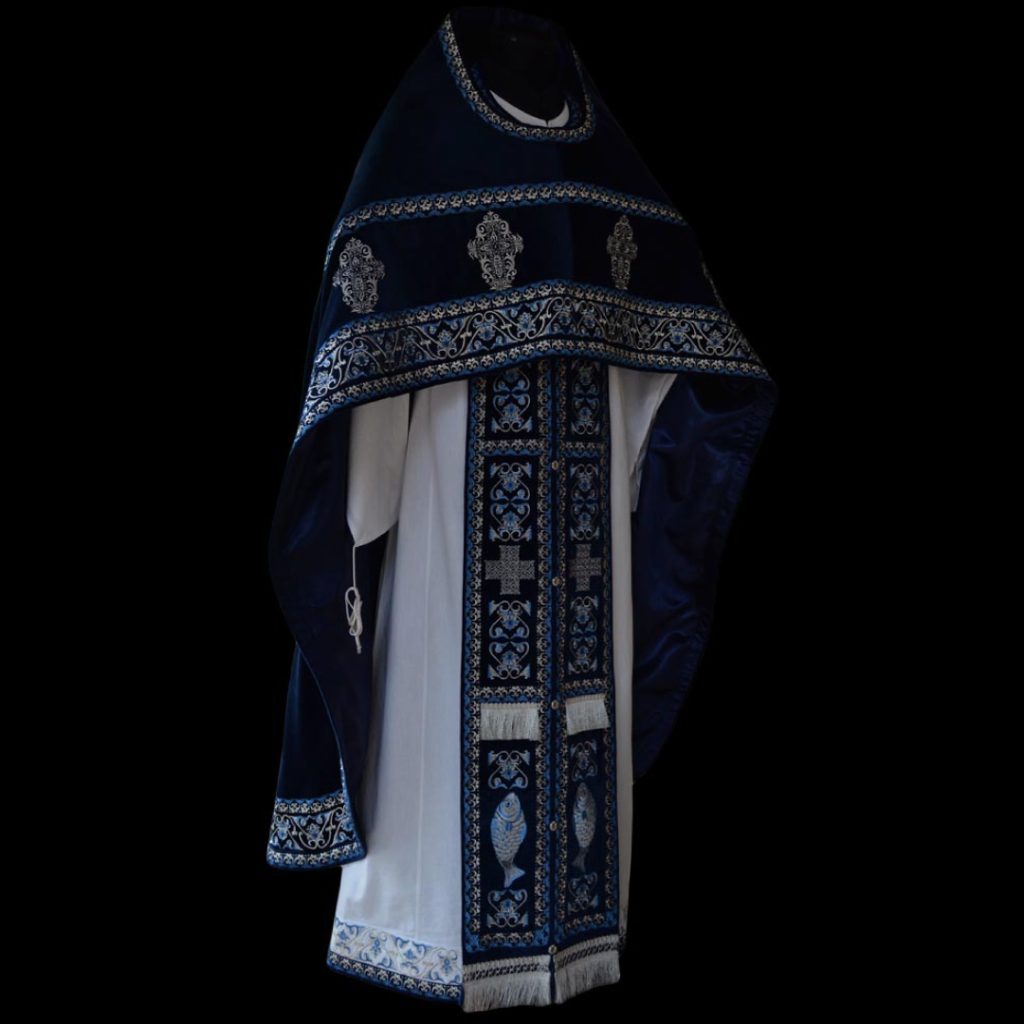
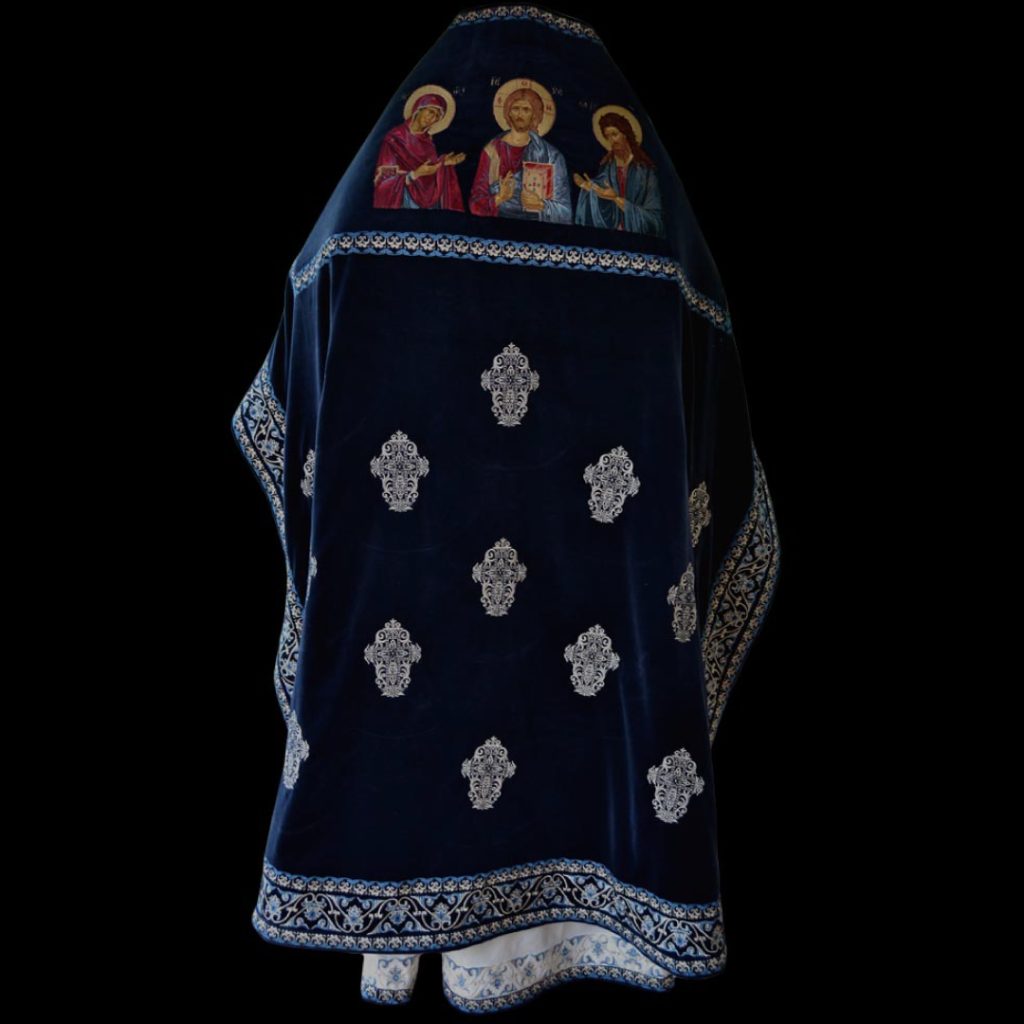
Previous
Next
NOVOTIHVINSKI
On this model of vestments, the basis of the embroidery design is from the sisters of the Novotihvinski Monastery, located in Ekaterinburg, Russia.
The embroidery is in two colors.
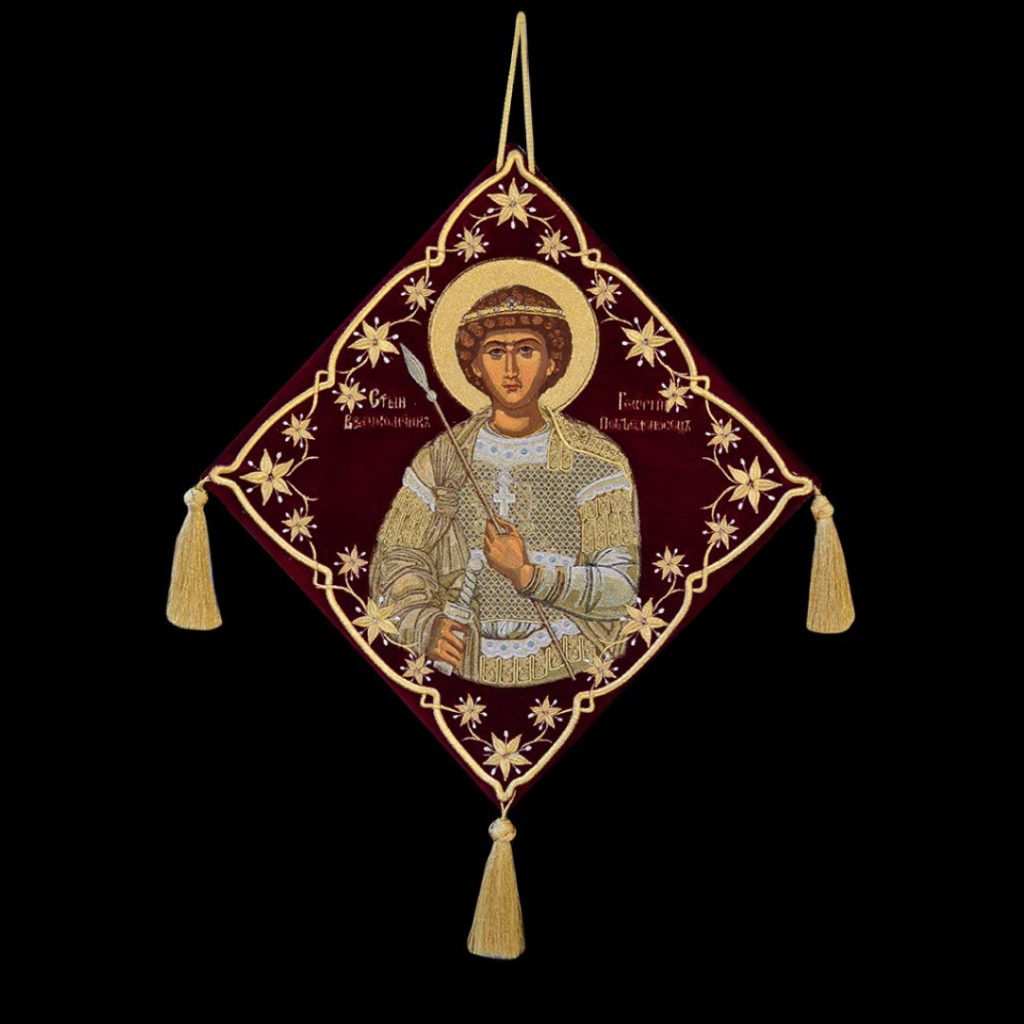
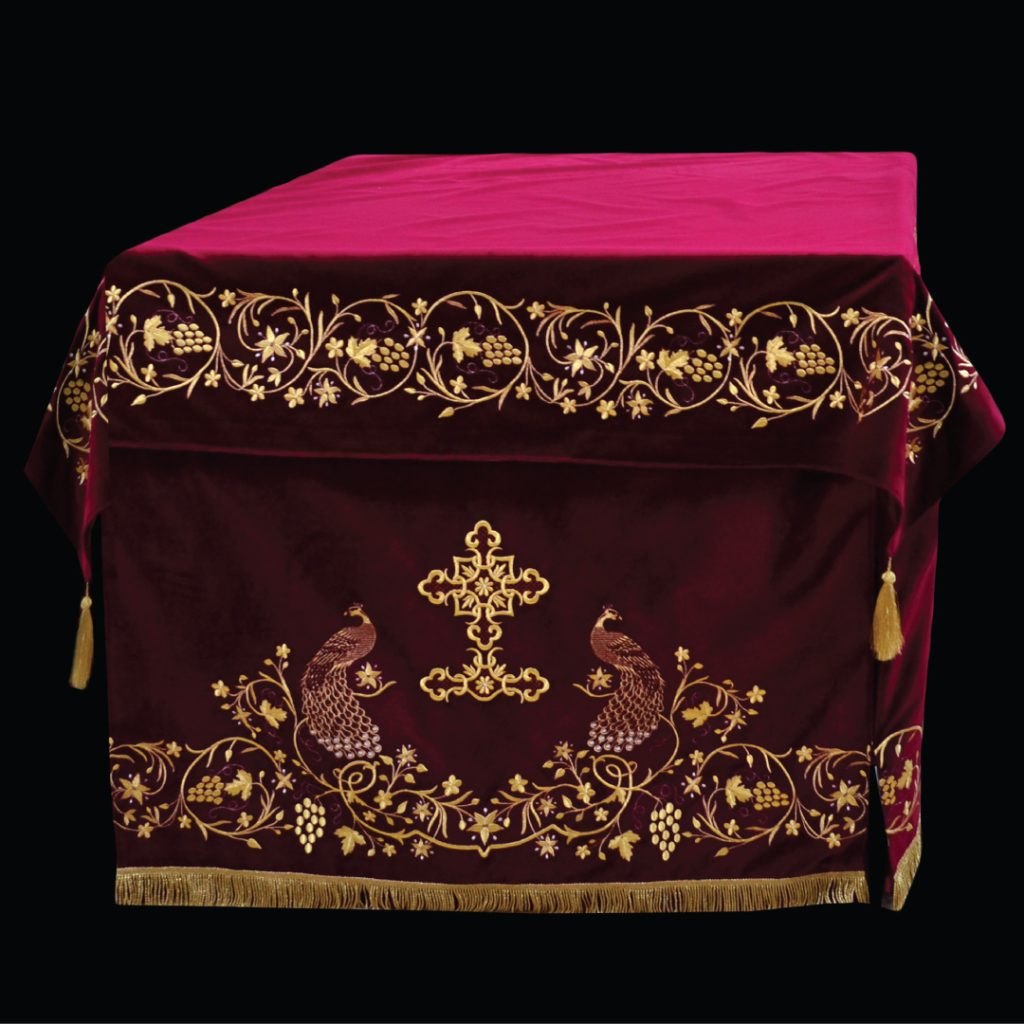
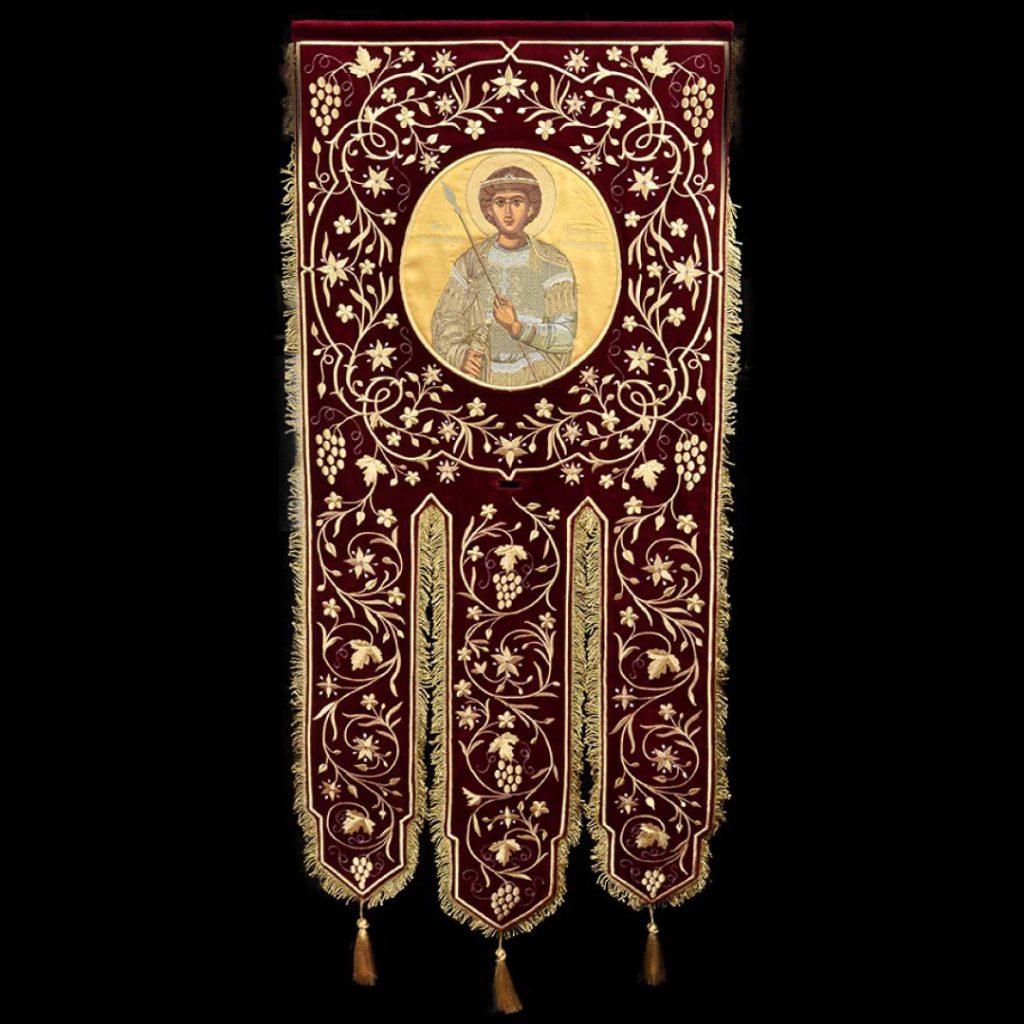
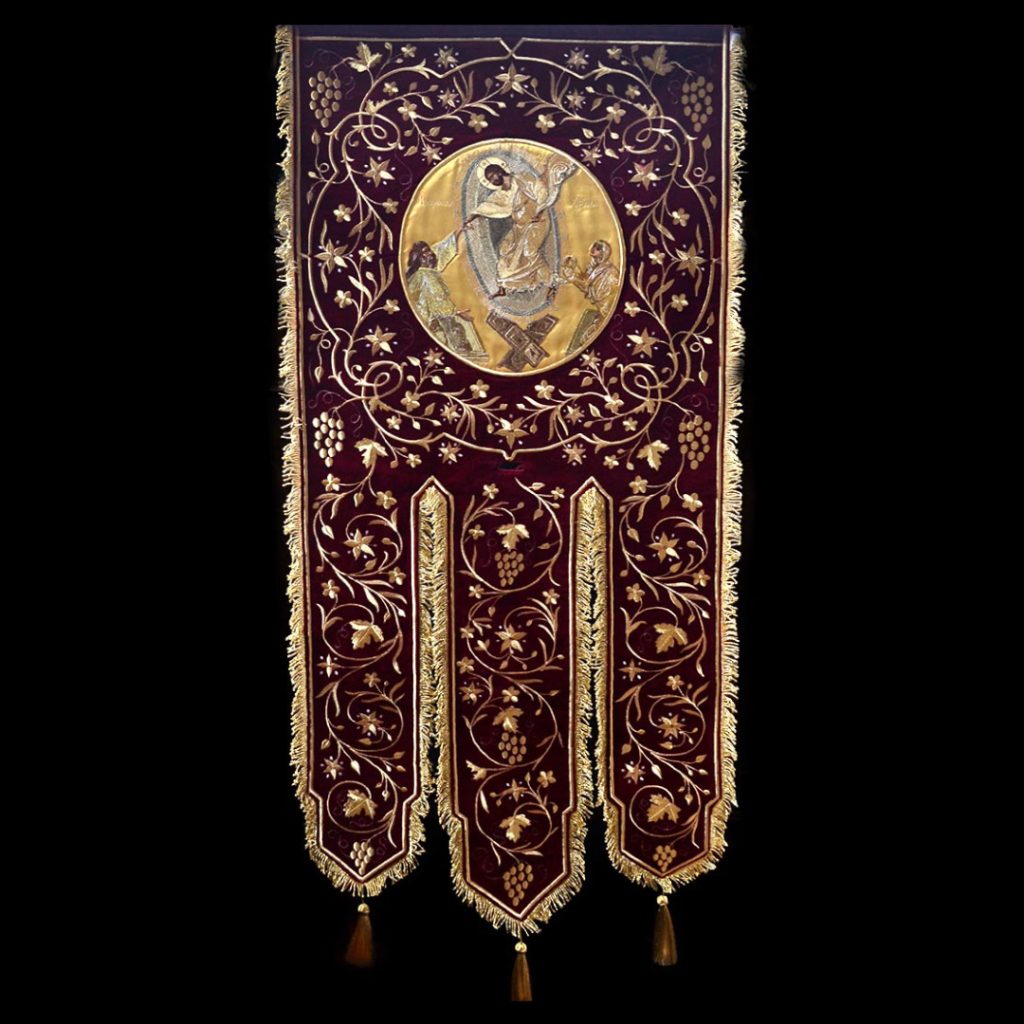
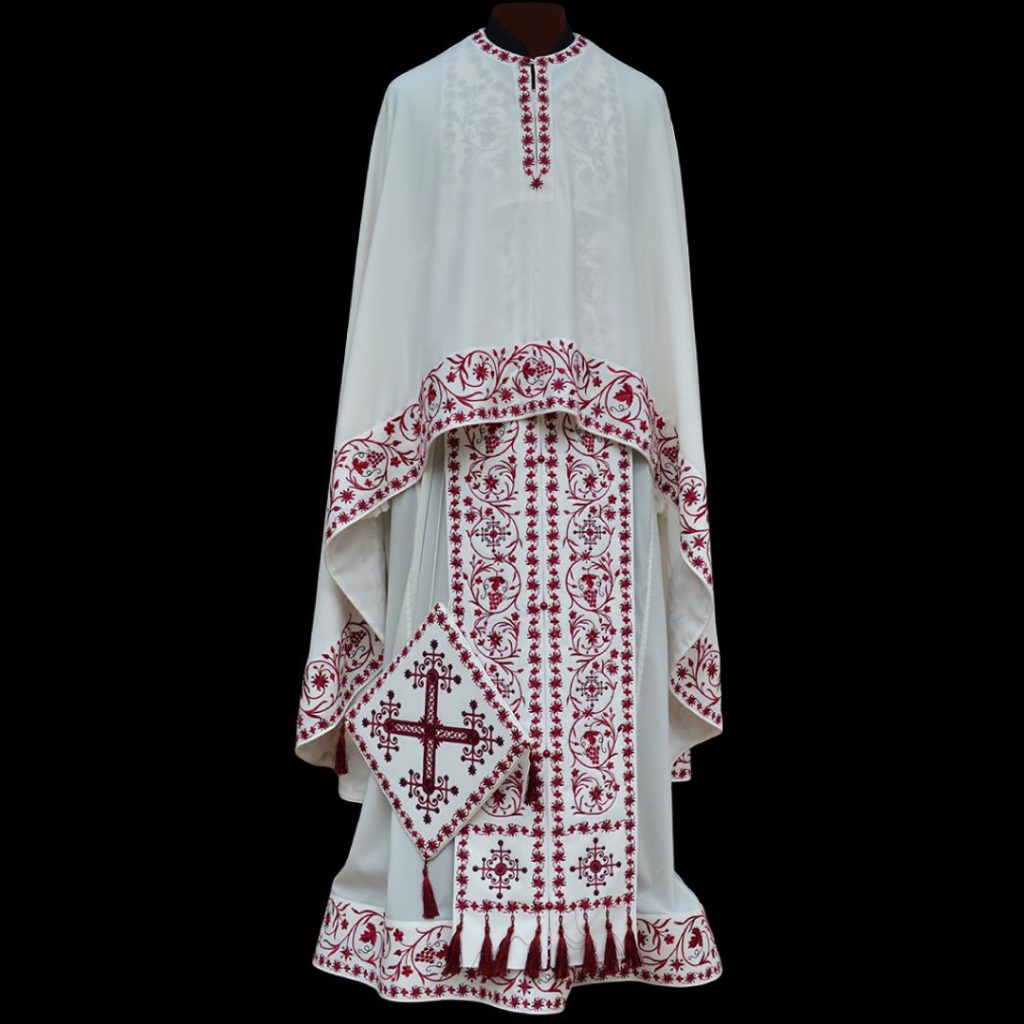
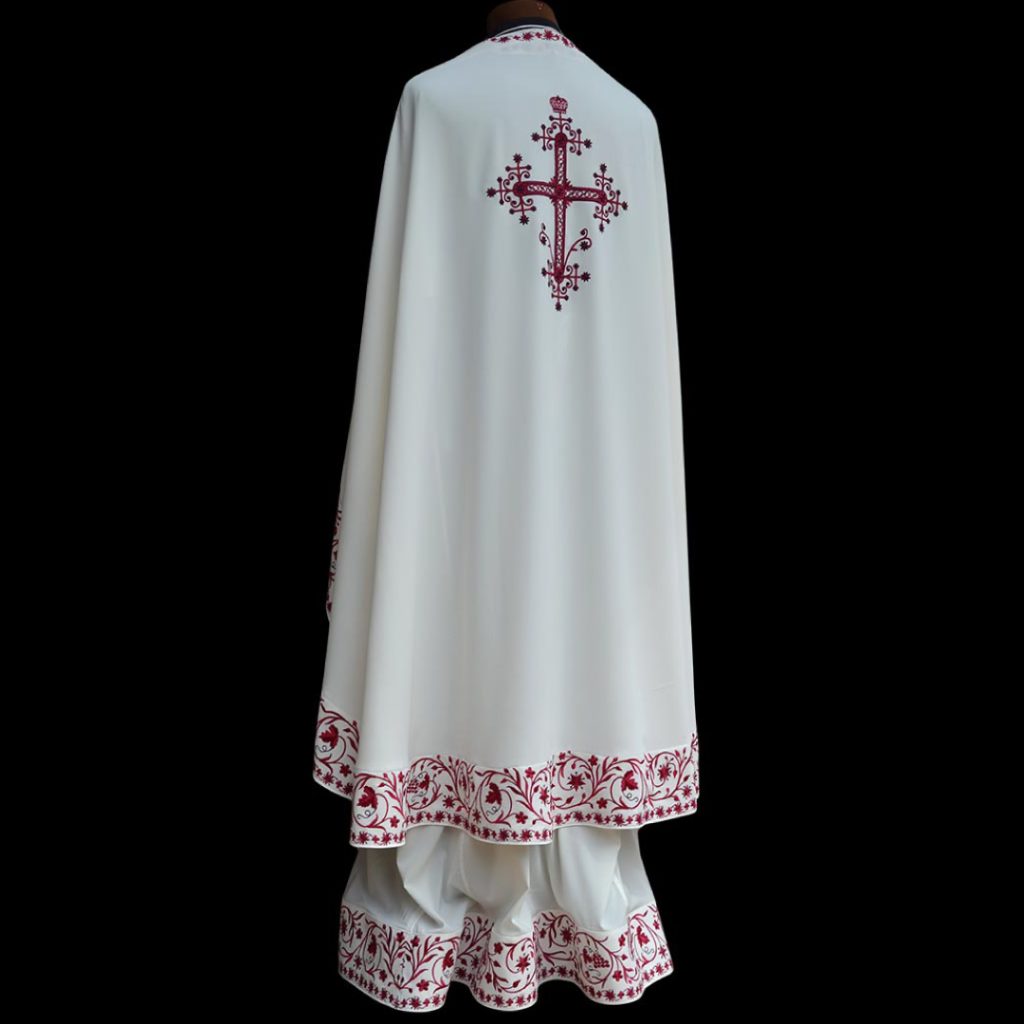
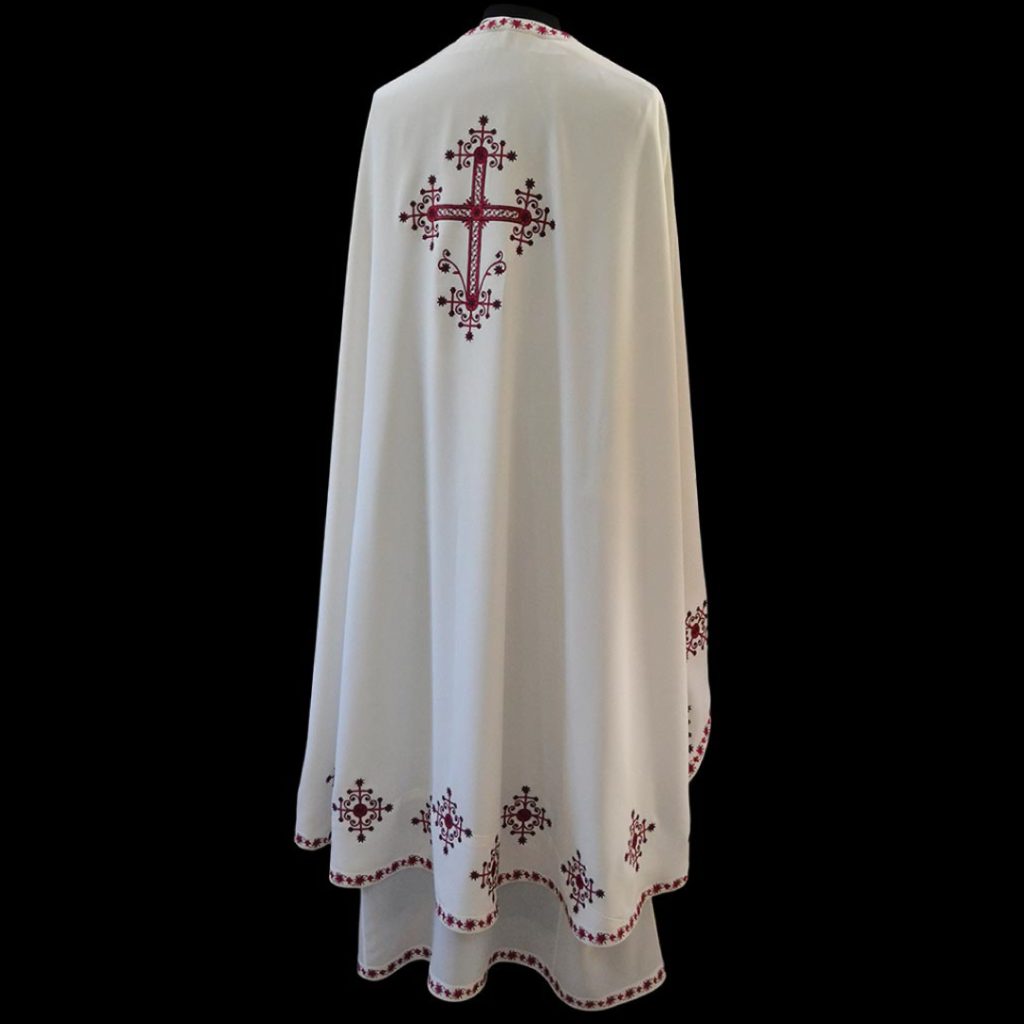
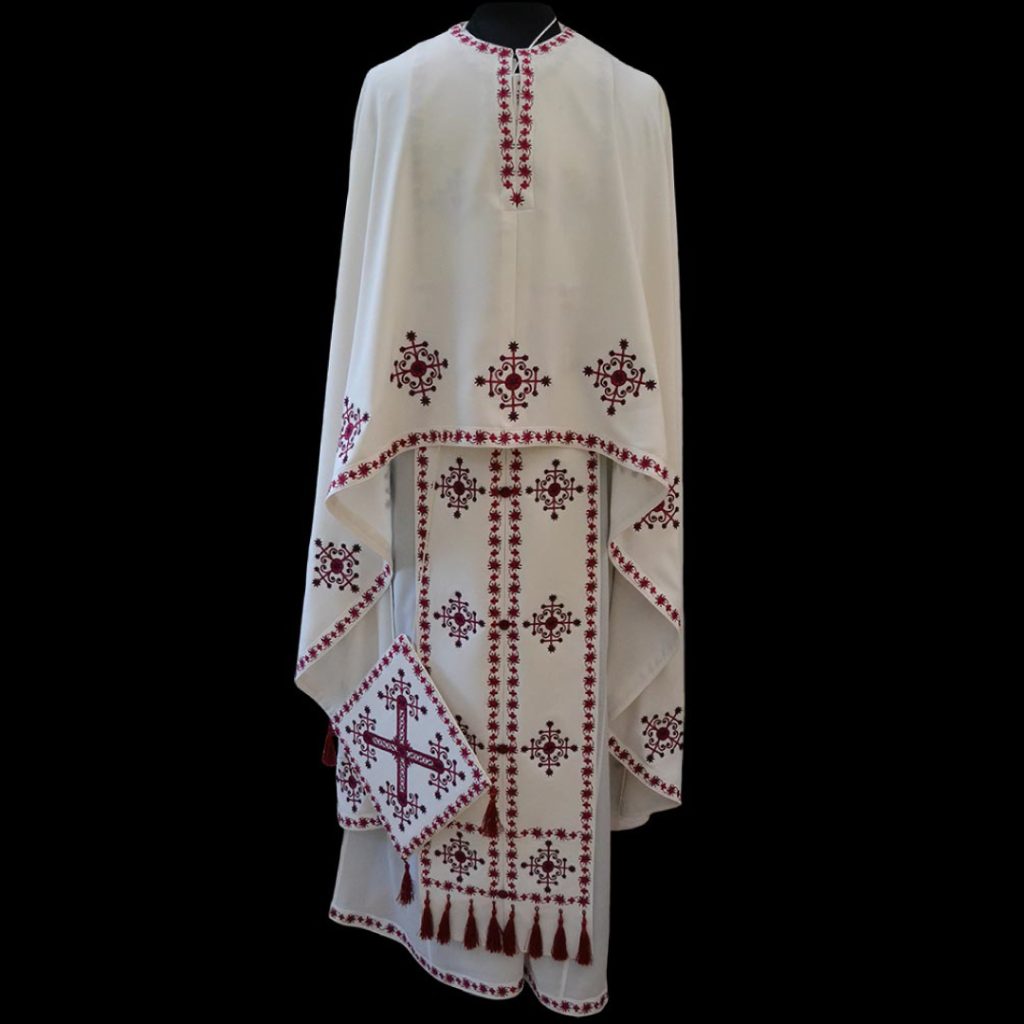
Previous
Next
ZOGRAF
The designs for these vestments are inspired by the Mount Athos monastery Zograf. The embroidery was made in cooperation with the brotherhood of the Zograf monastery, according to the photos of their older banners. The embroidered icon on the Epigonationis is made according to the Zograf’s icon of St. George the Victorious. The cross is from the dome of the church in the Zograf monastery.
The embroidery is in two colors.
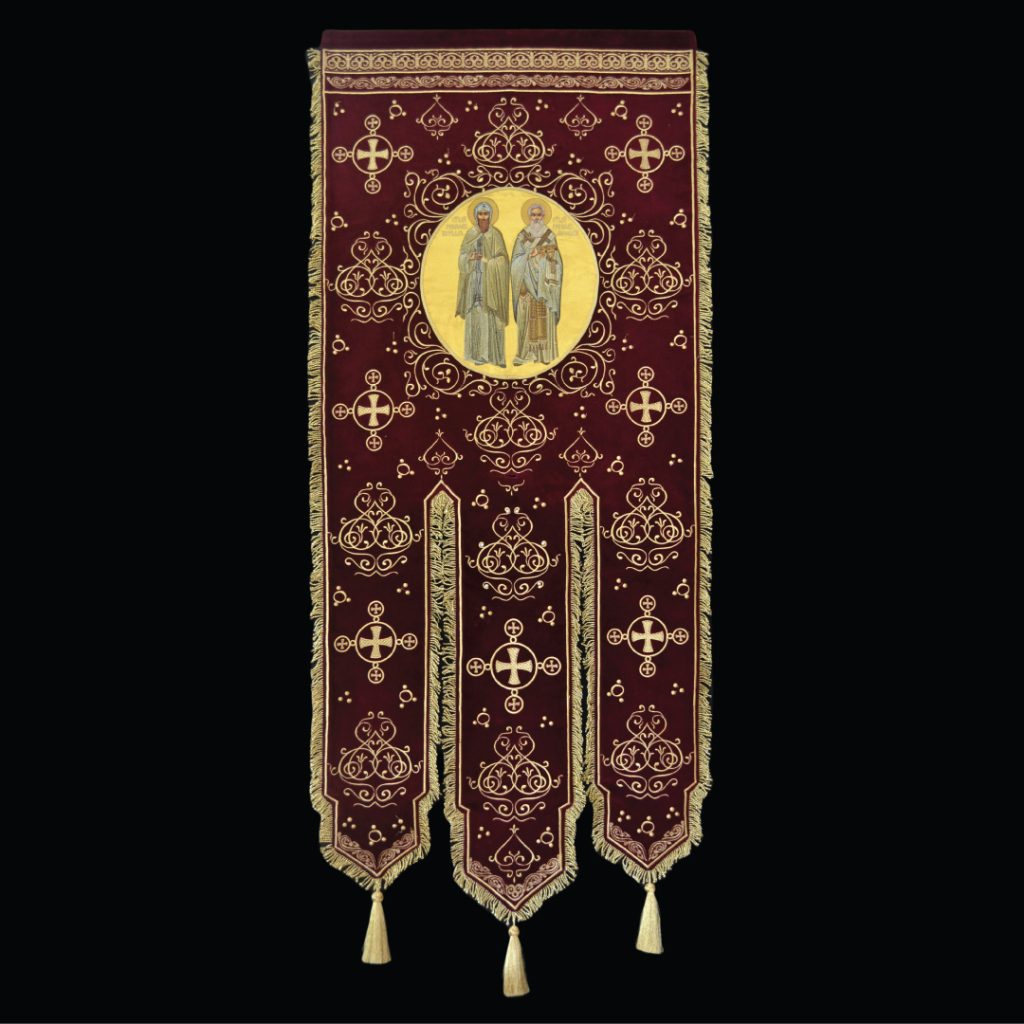
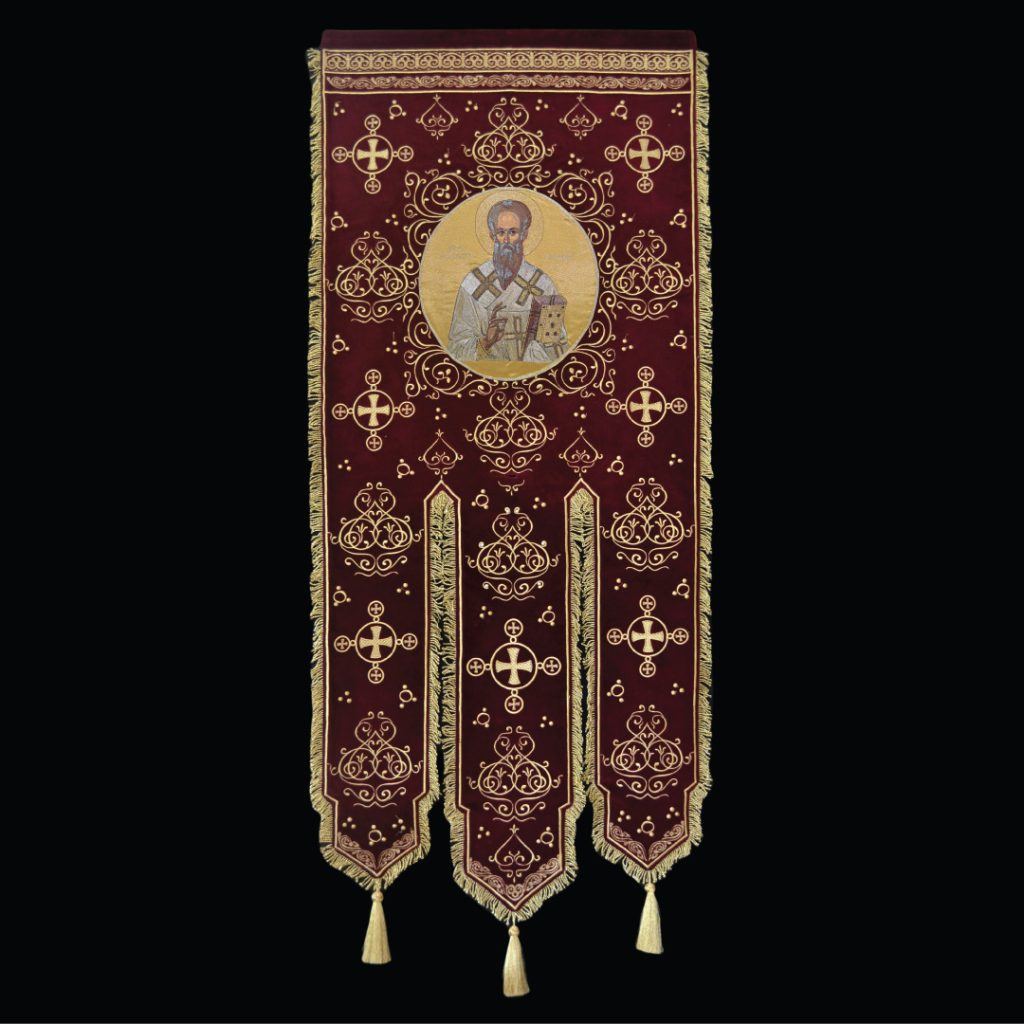
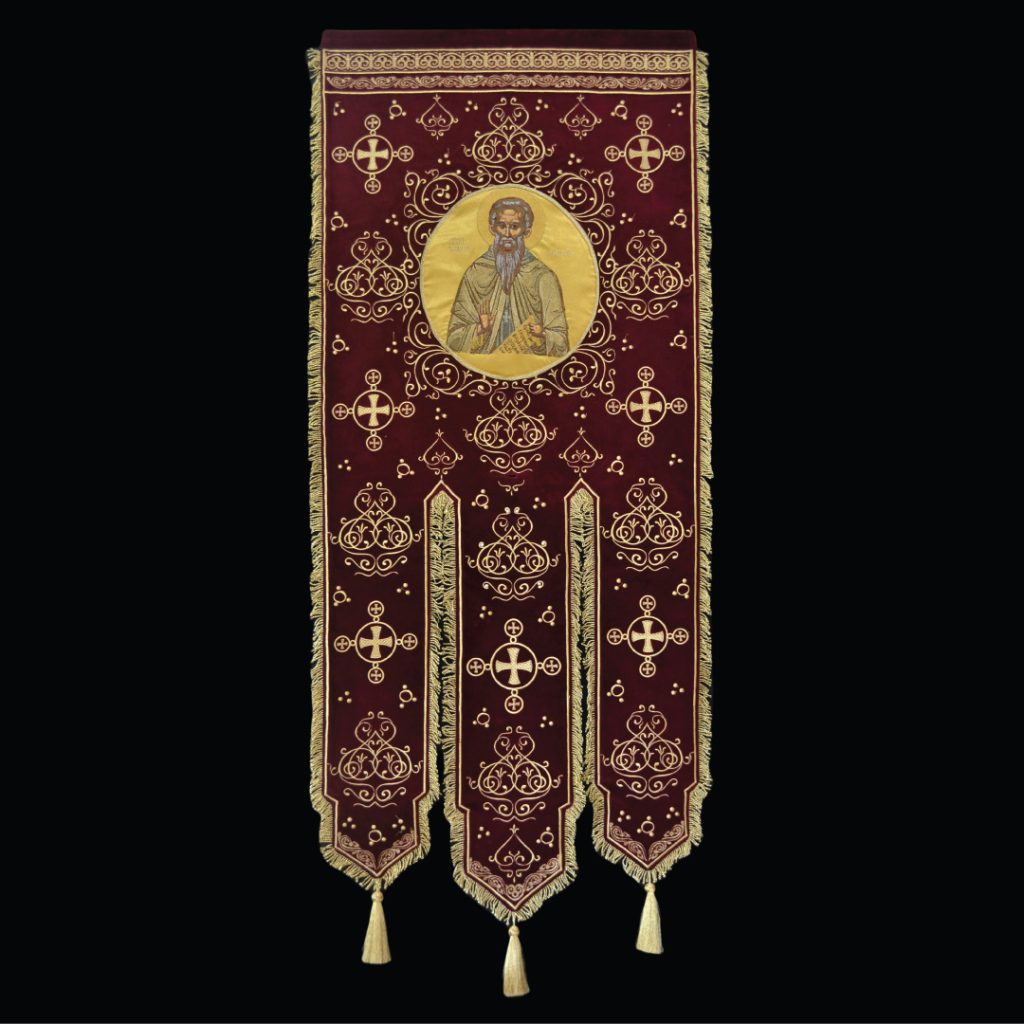
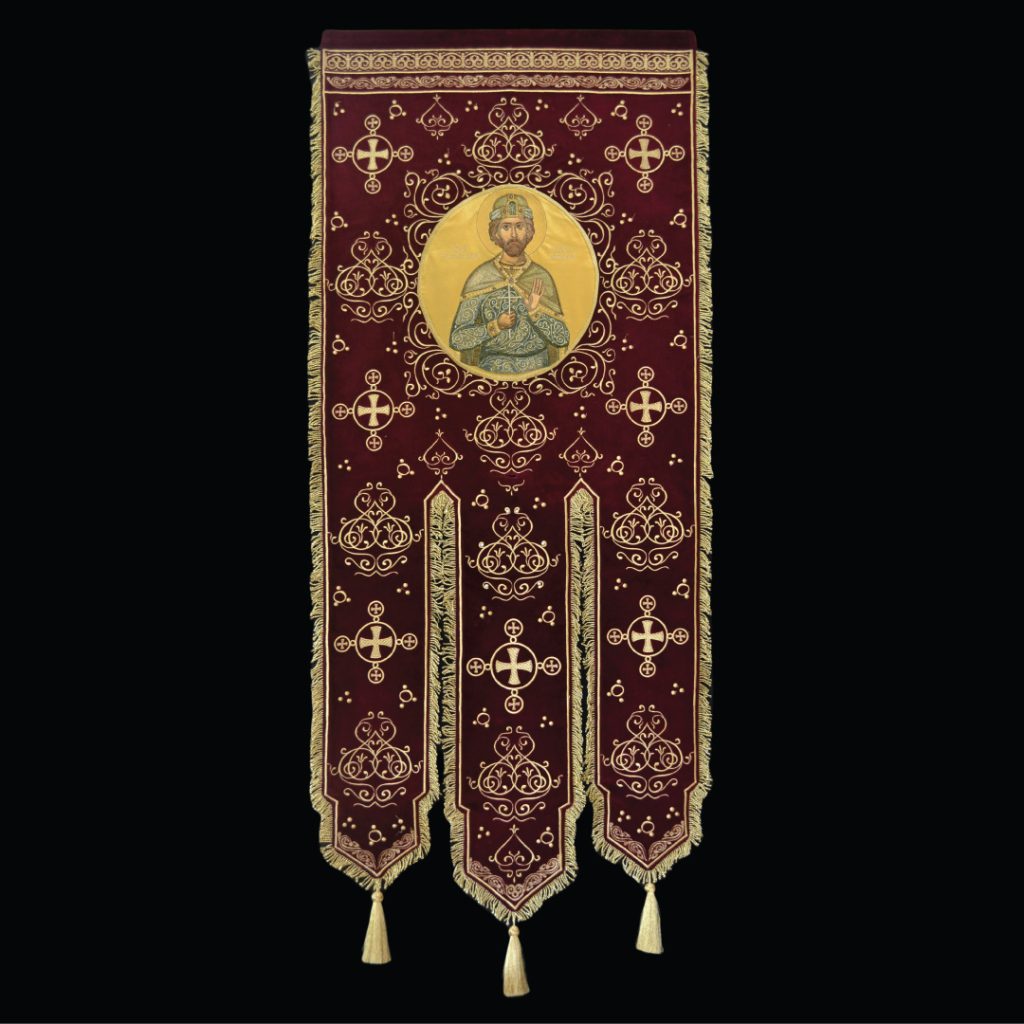
Previous
Next
DIONISIJAT
The Dionisiat Monastery, through its centuries-long existence, has created a rich treasury – icons, frescoes, covers. The consistency of certain elements in them is interesting, and also the unobtrusiveness of the details. One expression – not diverse but compact and solid, conveyed to this model of vestments.
From this model, only the Banners and the Covers are completely made, the other elements of the vestments are in the process of production.
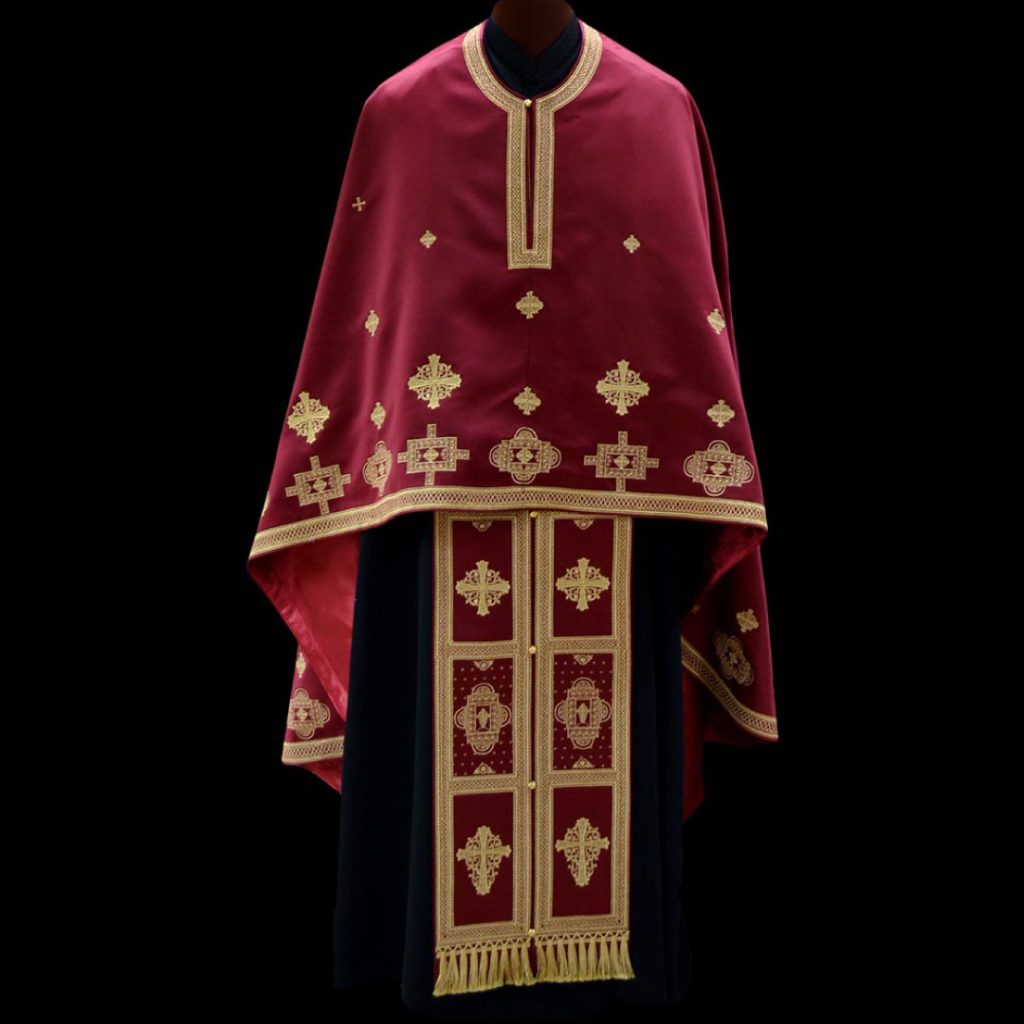
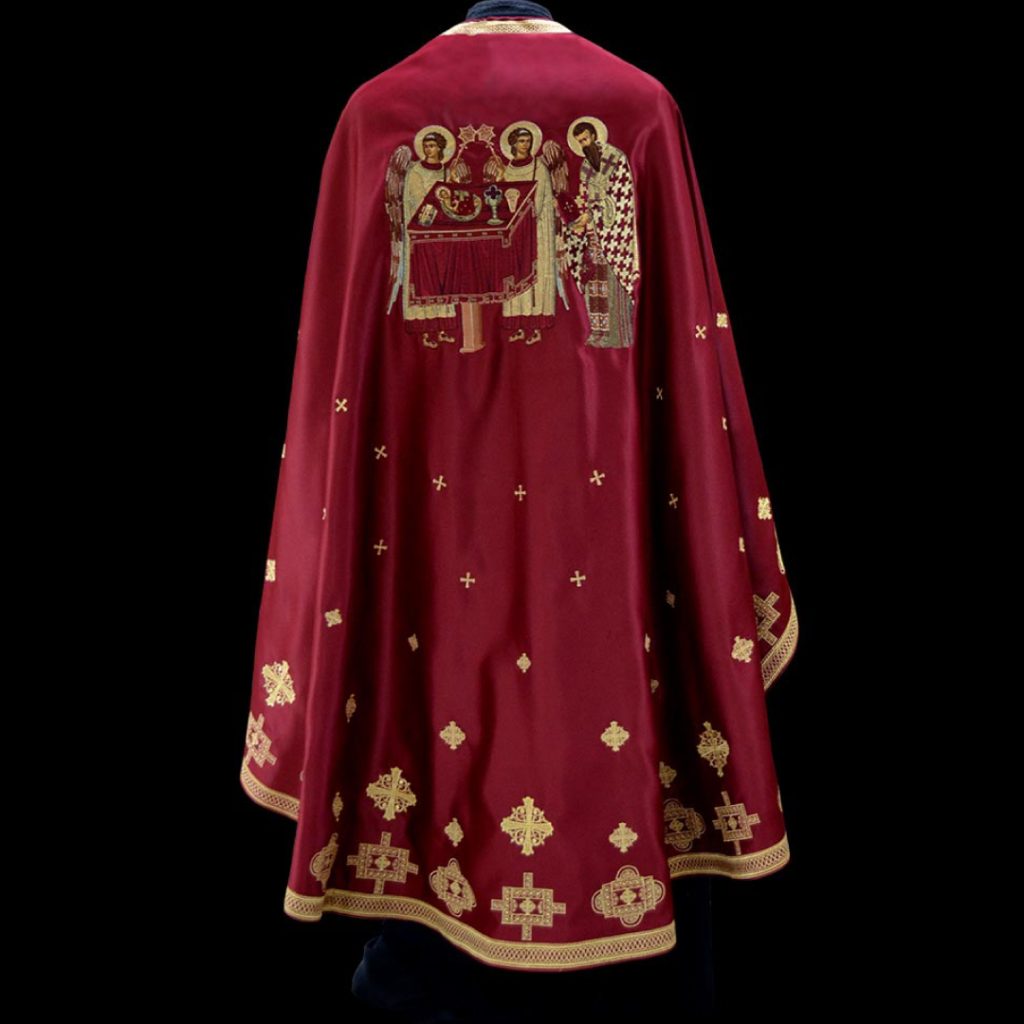
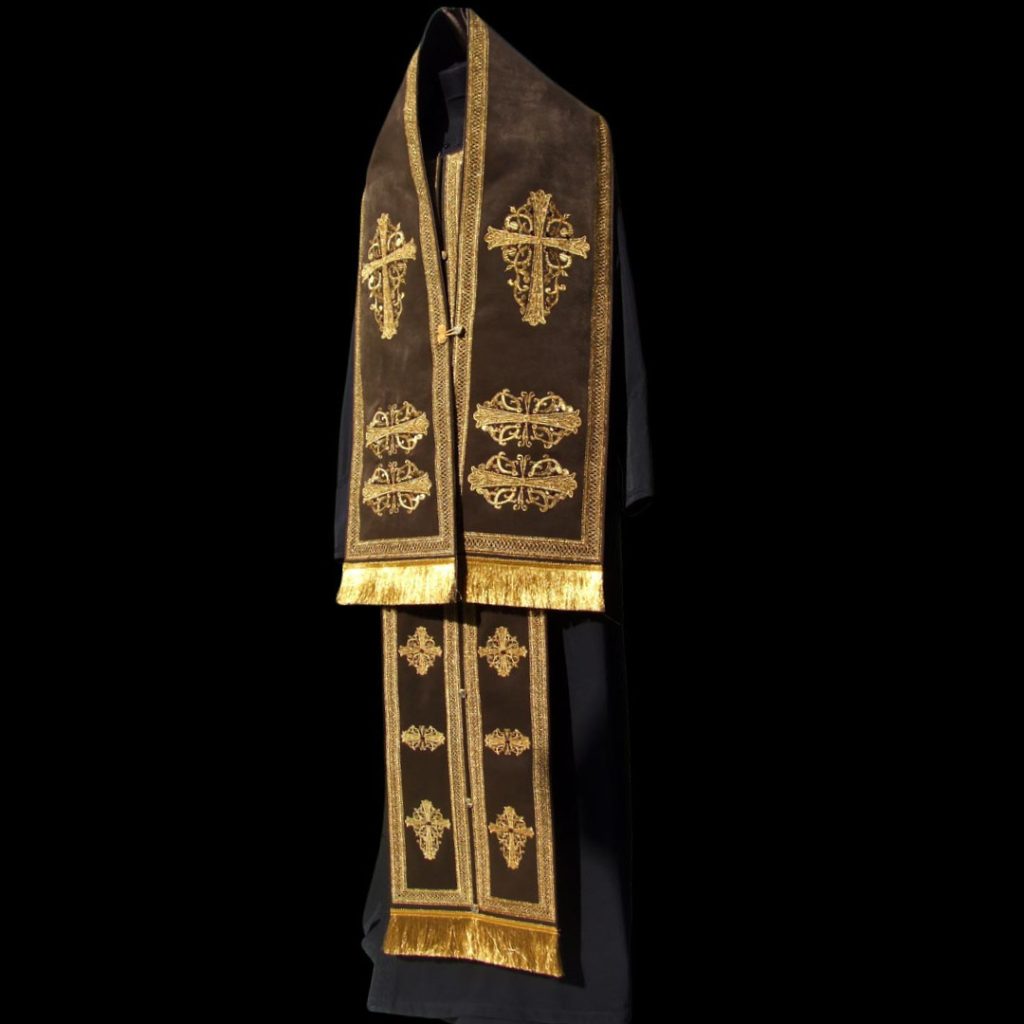
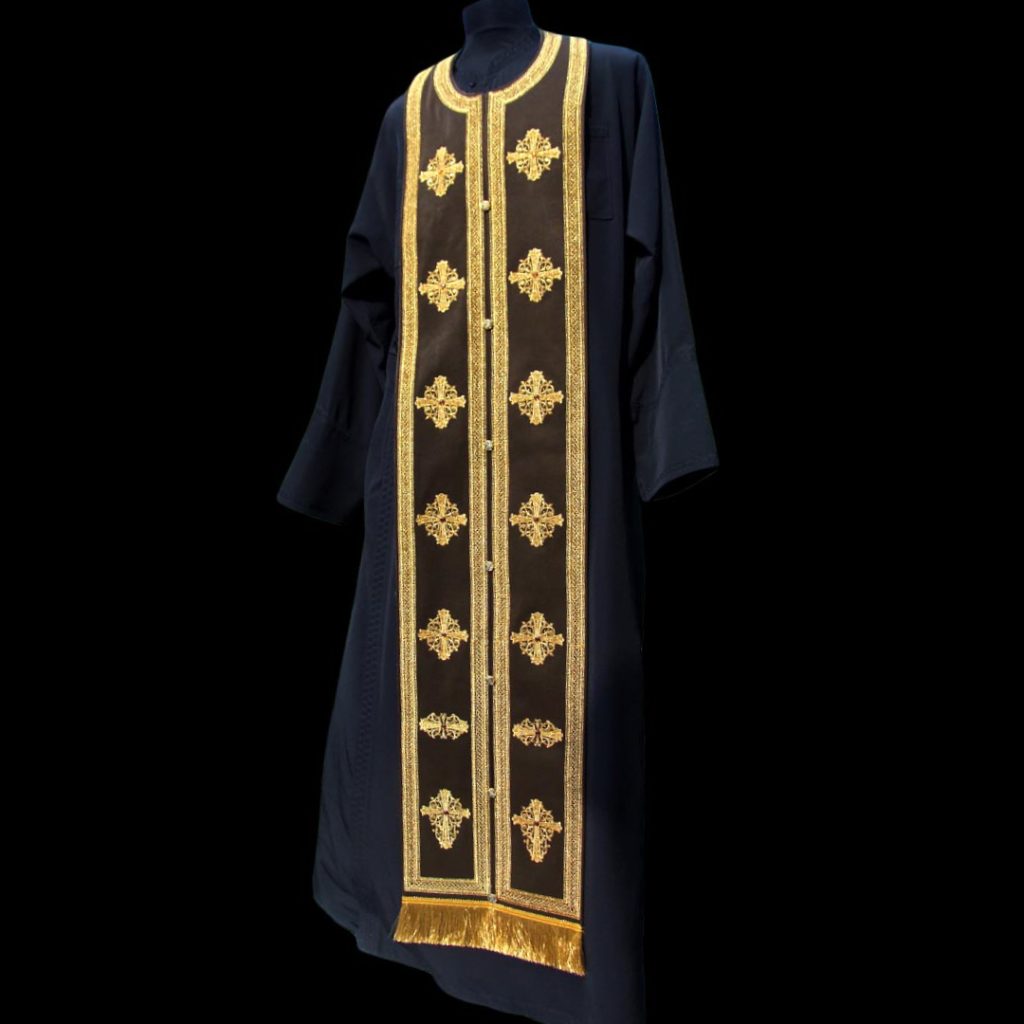
Previous
Next
PROTATON
The design of this model is according to combination of the details of the church doors and the Artoklasia, treasuries of Mount Athos monastery -Protaton.
The cross is decorated with flowers and foliage, embroidered in various gold treads.The design is from a cross on a conical cupola, surmounting the ciborium of the silver Artoklasia, from 1746. Occupying the centre of the artoklasia disk, on a separate plate of silver, is a representation of the Virgin and Child in low relief; carved into the rim of this disk is the inscription:”This artoklasia is the property of Our Lady of Karyes of the Protaton…”. It was originally designed and embroidered, on a small omophorion, for the model- Protaton.
This model has a one-color embroidery with metallic thread.
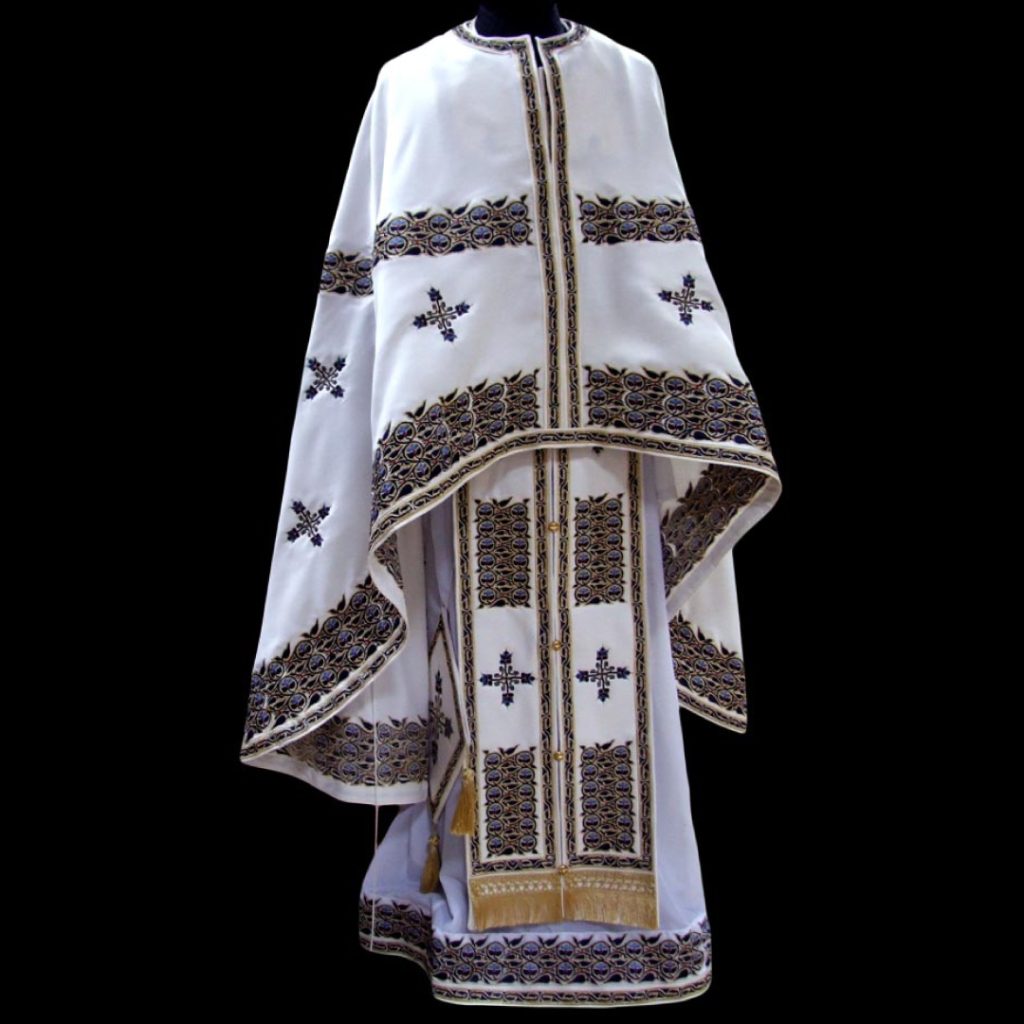
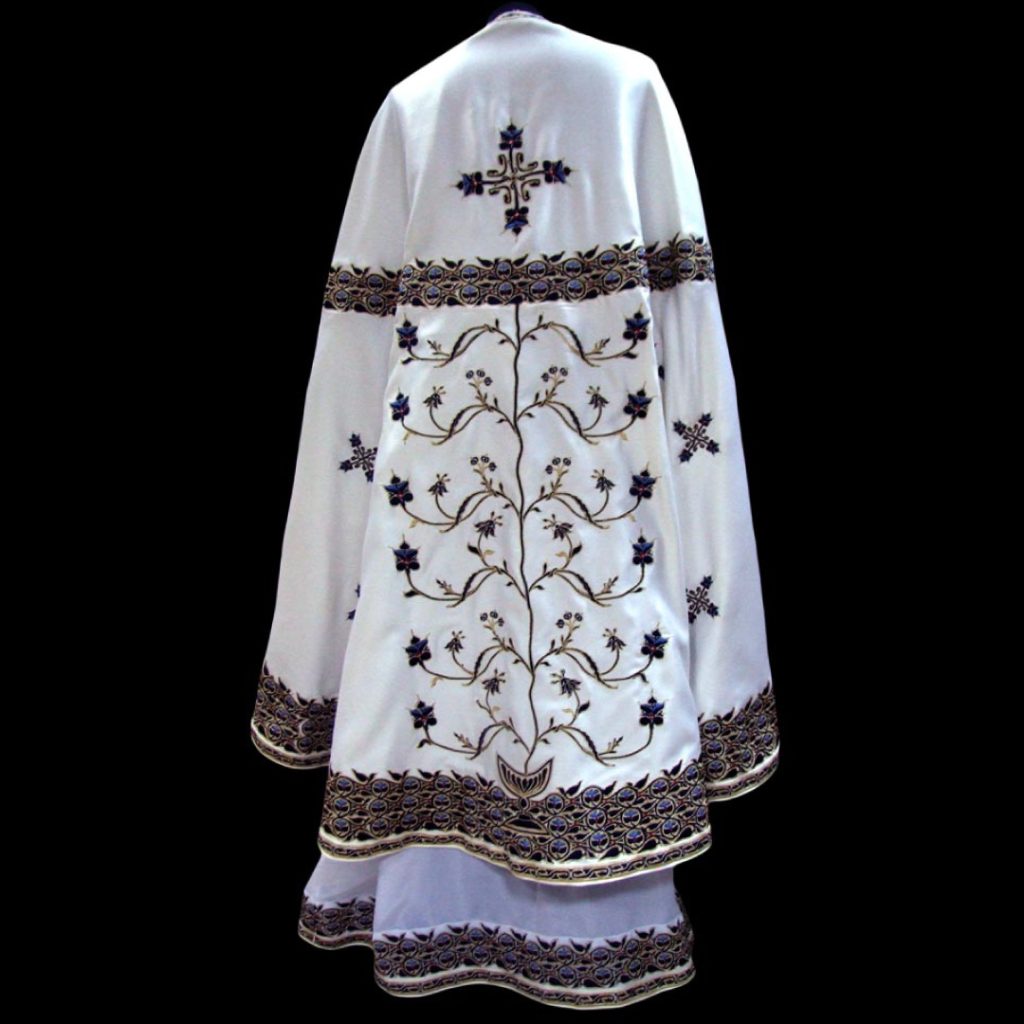
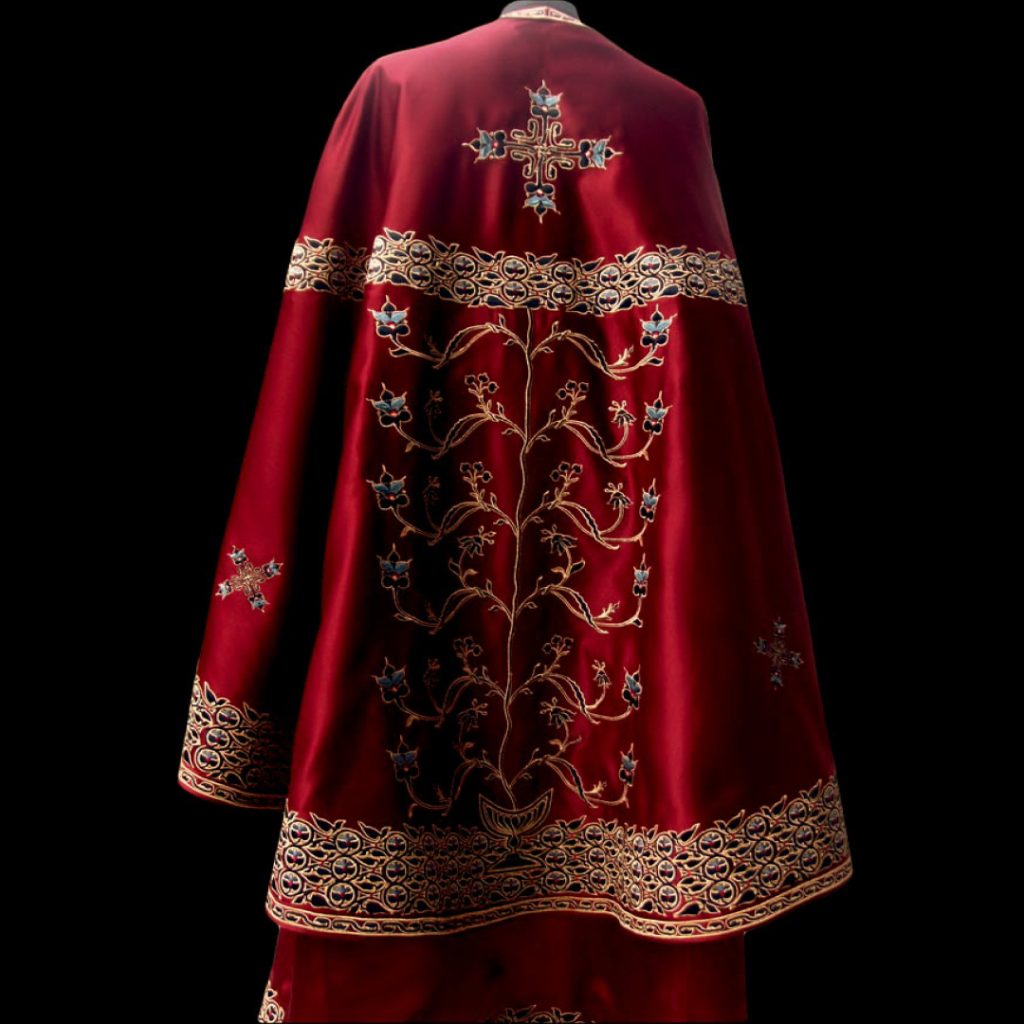
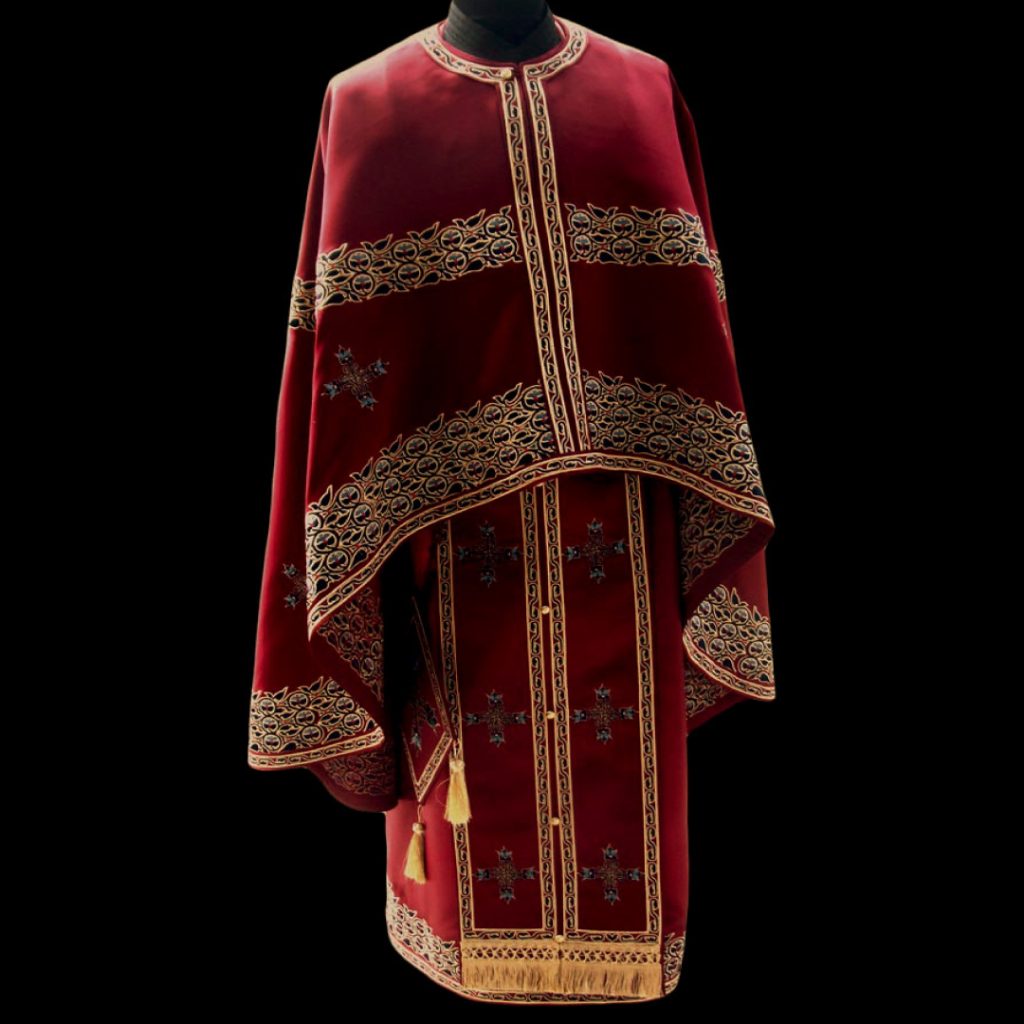
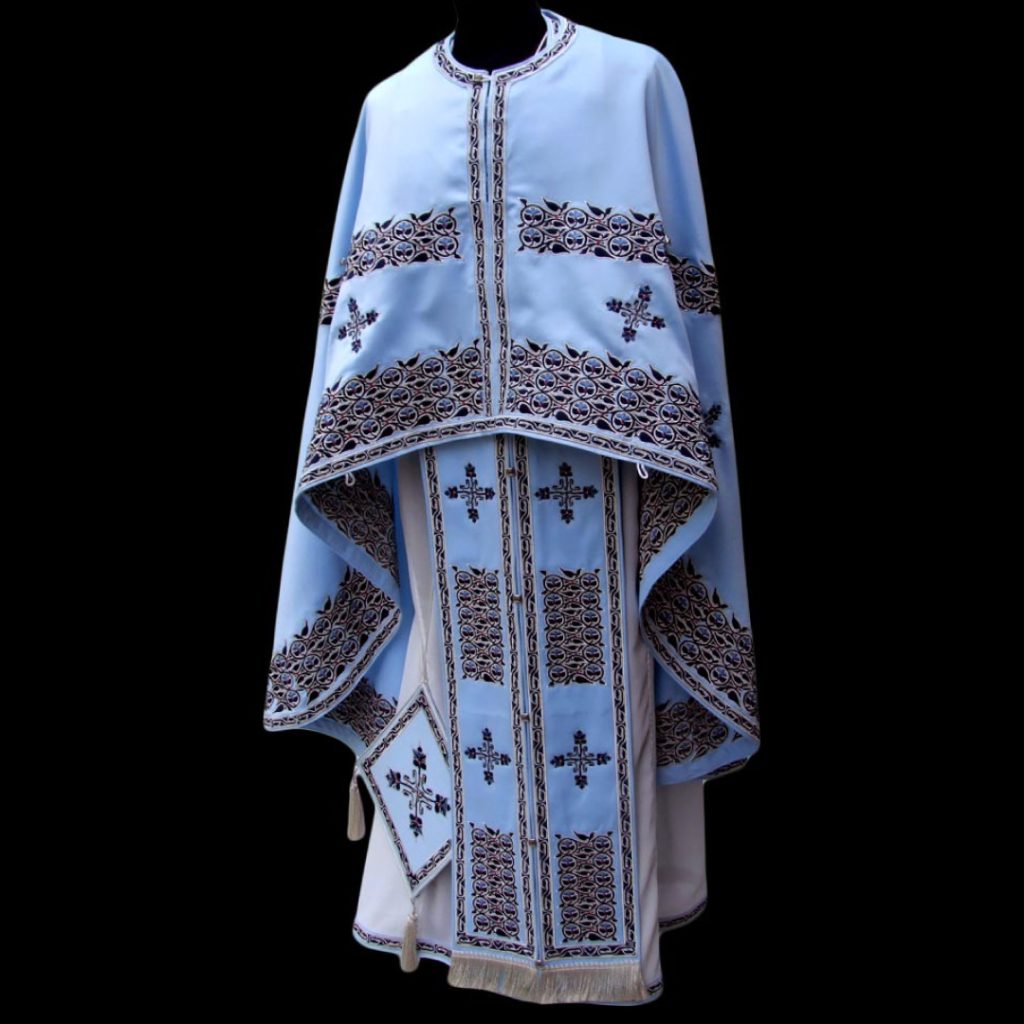
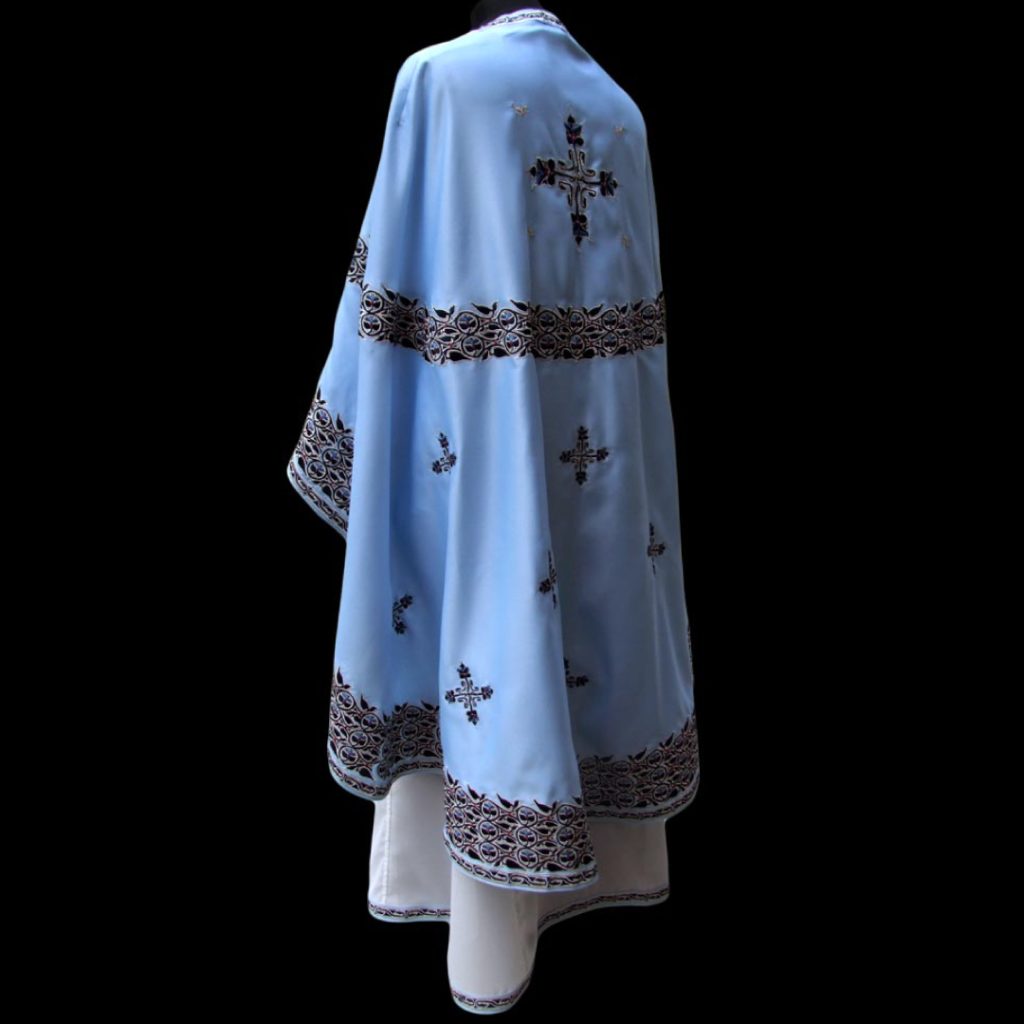
Previous
Next
STAVRONIKITA
The cross and the details of the bordours, on this model of vestments, are designed according to the components of a miniature in the XIII century Psalter, from the monastery Stavronikita, Mount Athos. The tree itself on the phelonion, although composed of the same details, is modeled by an older phelonion embroidered with icons of the twelve apostles.
Four colors are used to make this vestment, which are dominated by dark blue and gold, and are also a feature of the miniature on the side of the first Psalm of David.
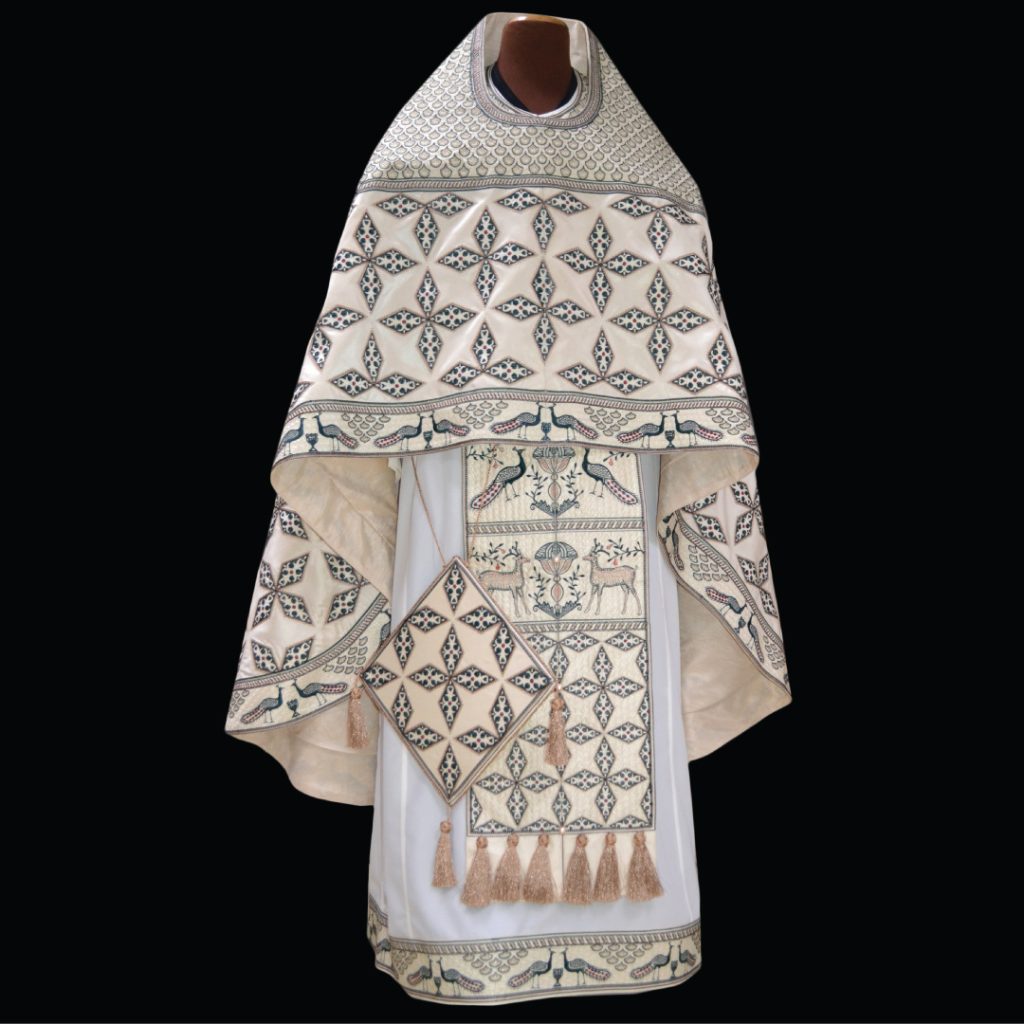
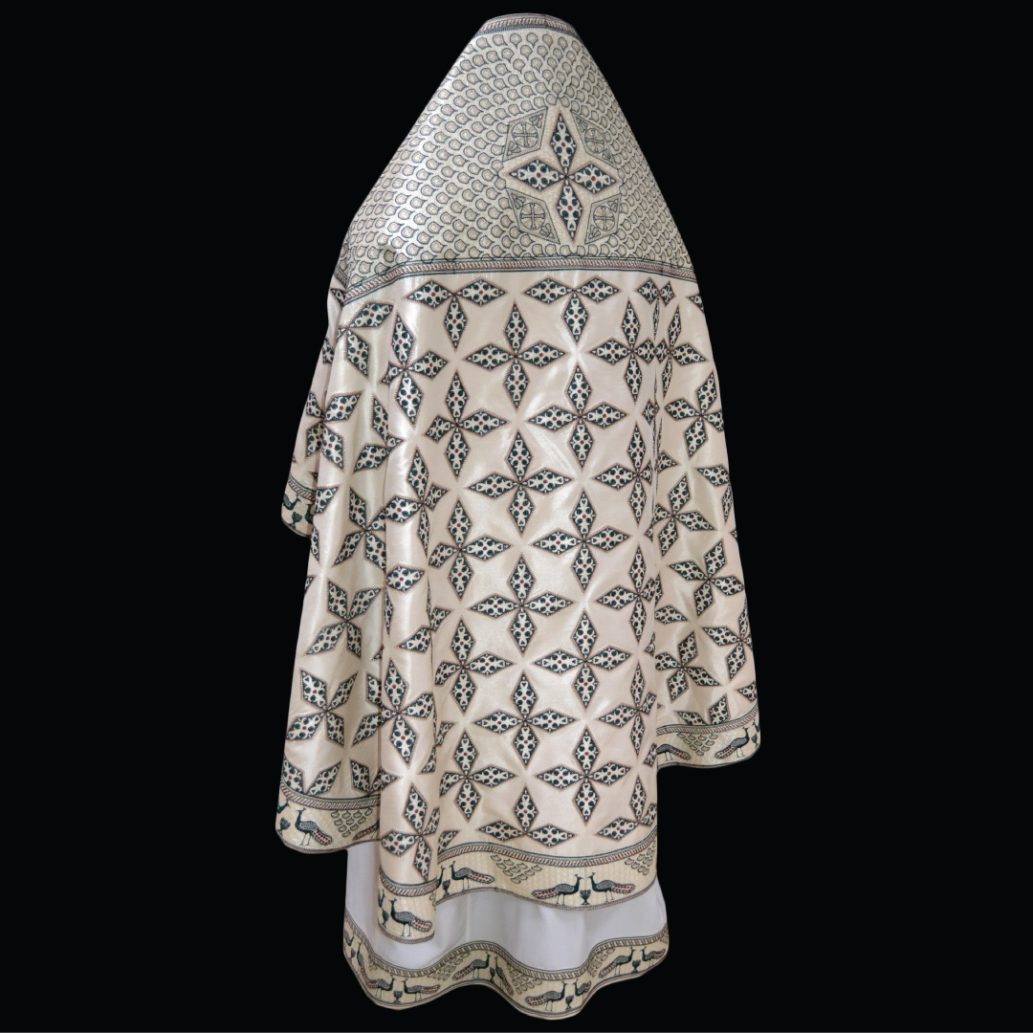
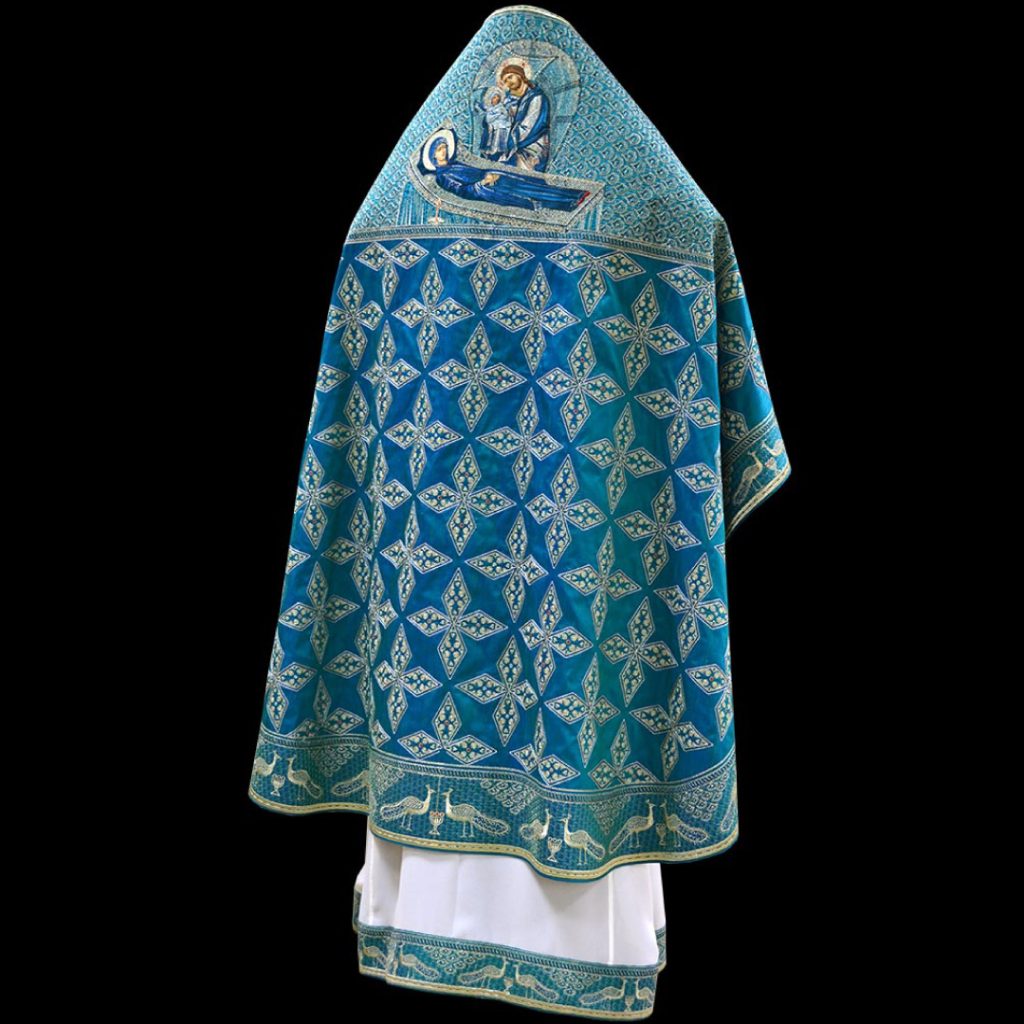
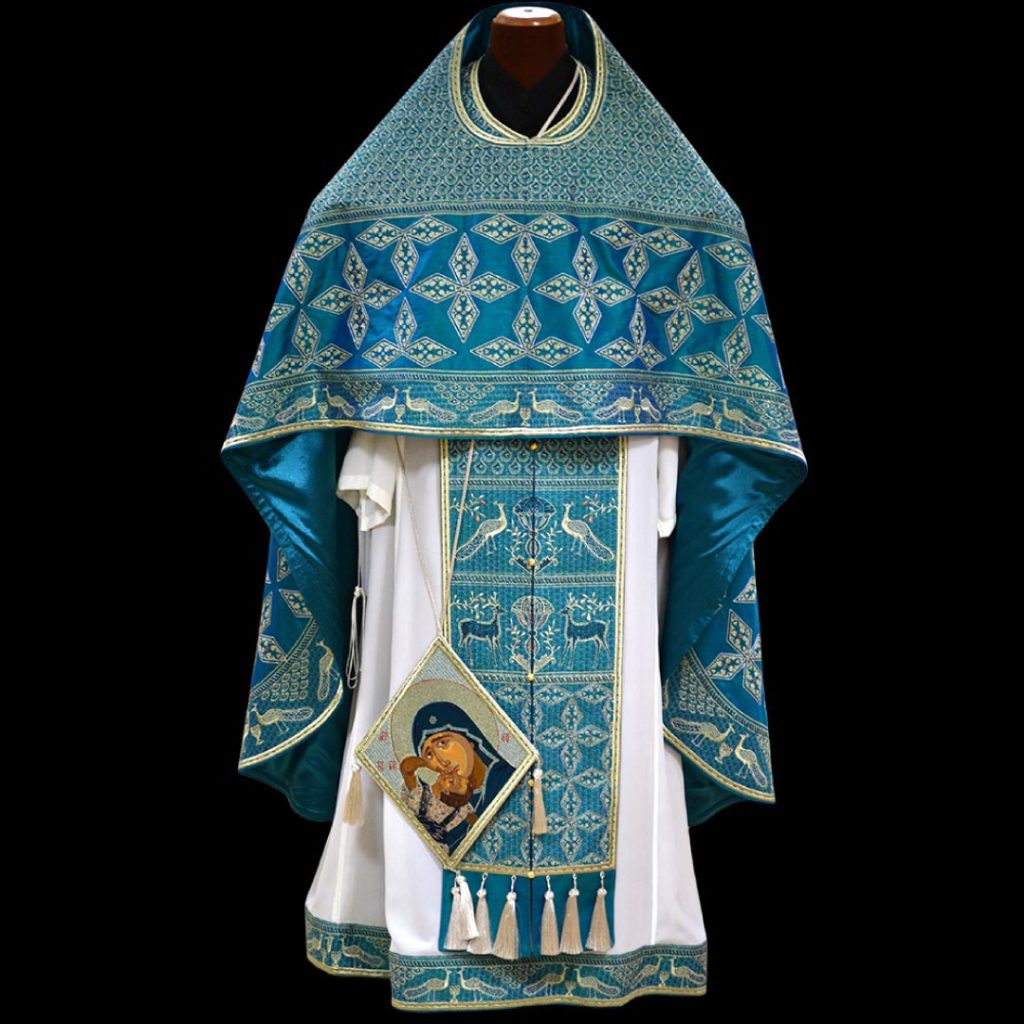
Previous
Next
STOBI
The mosaics from the archaeological site Stobi are the basis for the designs of this model of vestments. The embroidery on the epitrachilion is designed according to Psalm 42, which is a part of the mosaic from the so-called “House of psalms”.
Psalm 42.1(“Longing for God”)-“As the deer gets thirsty for streams of water, so my soul is thirsty for You, my God!” compare one’s thirst for God – The very Spring of Life, with that of the doe (female deer). Namely, when she eats a snake, if she does not drink water in a short period of time, she dies.
The mosaic is in colors that are consistently transferred to the vestment of this model embroidered on a cream base material. The blue-green pattern is embroidered inversely.
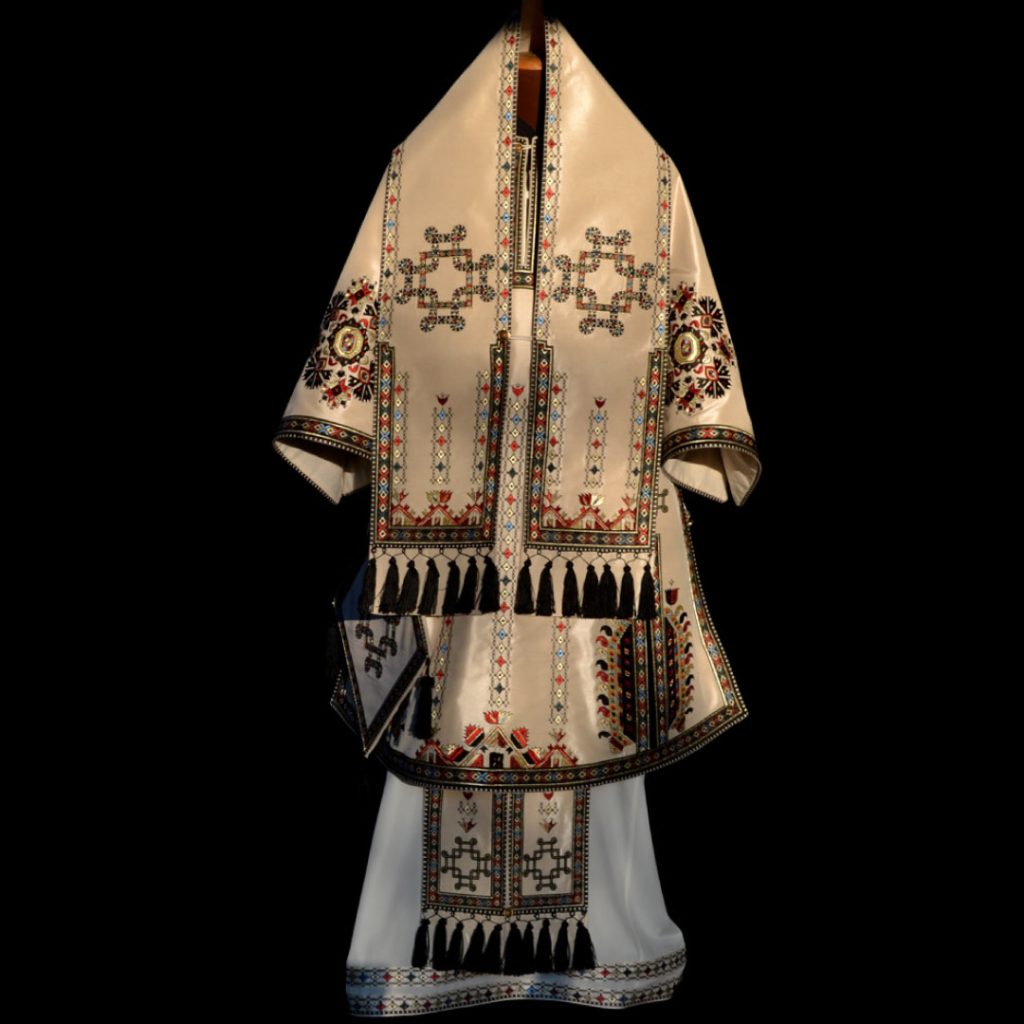
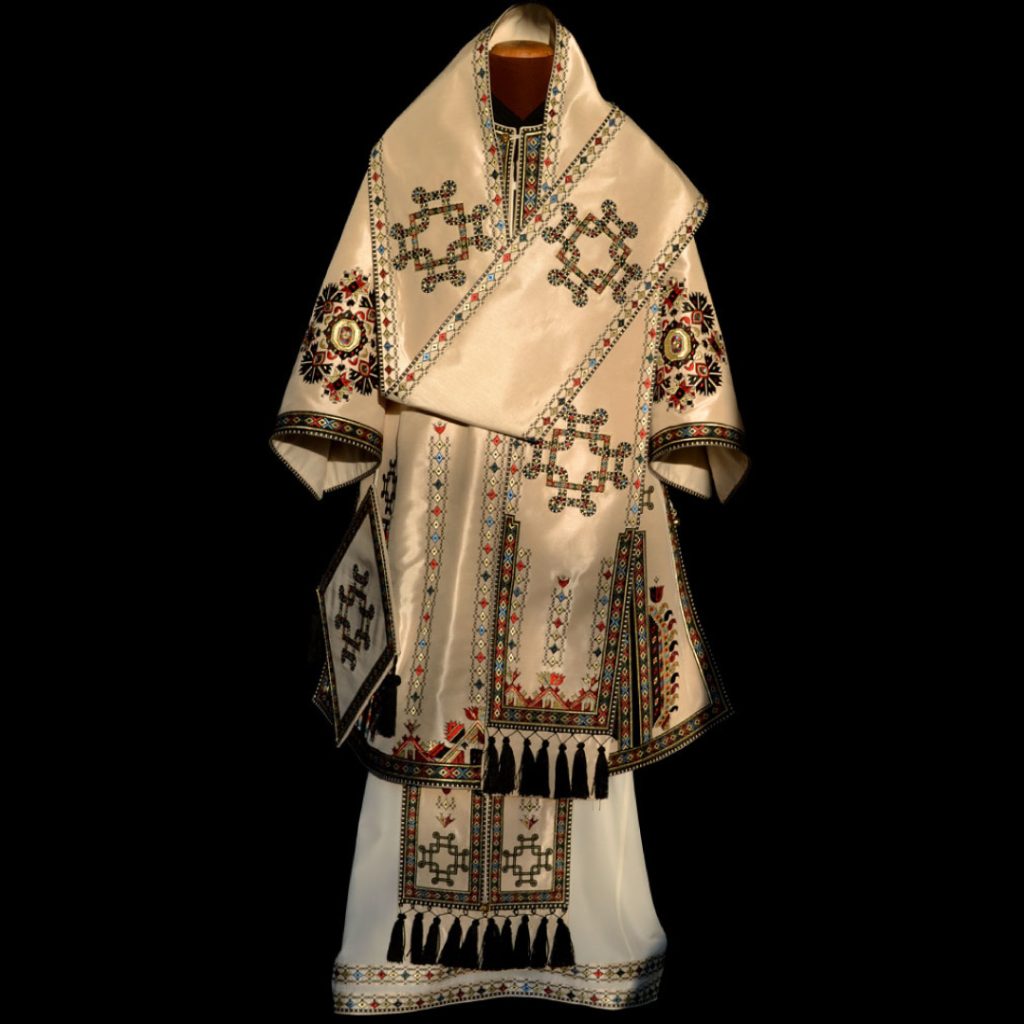
Previous
Next
SKOPSKA BLATIJA
The design of the elements which are part of the vestments are made according to holiday costume from the East Skopje region – known as Skopska Blatija. The Veljusa cross itself is embroidered with detail from the costume, in that way it being incorporated in this model.
The motif of the embroidery on the sleeve of the sakkos is immanent “nine flowers”. Five of them form a cross vertically-horizontally, and five on both diagonals. The small cross surrounded by gold threads also has a central place in the border.
The vestment is embroidered with metallic threads , in five colors.
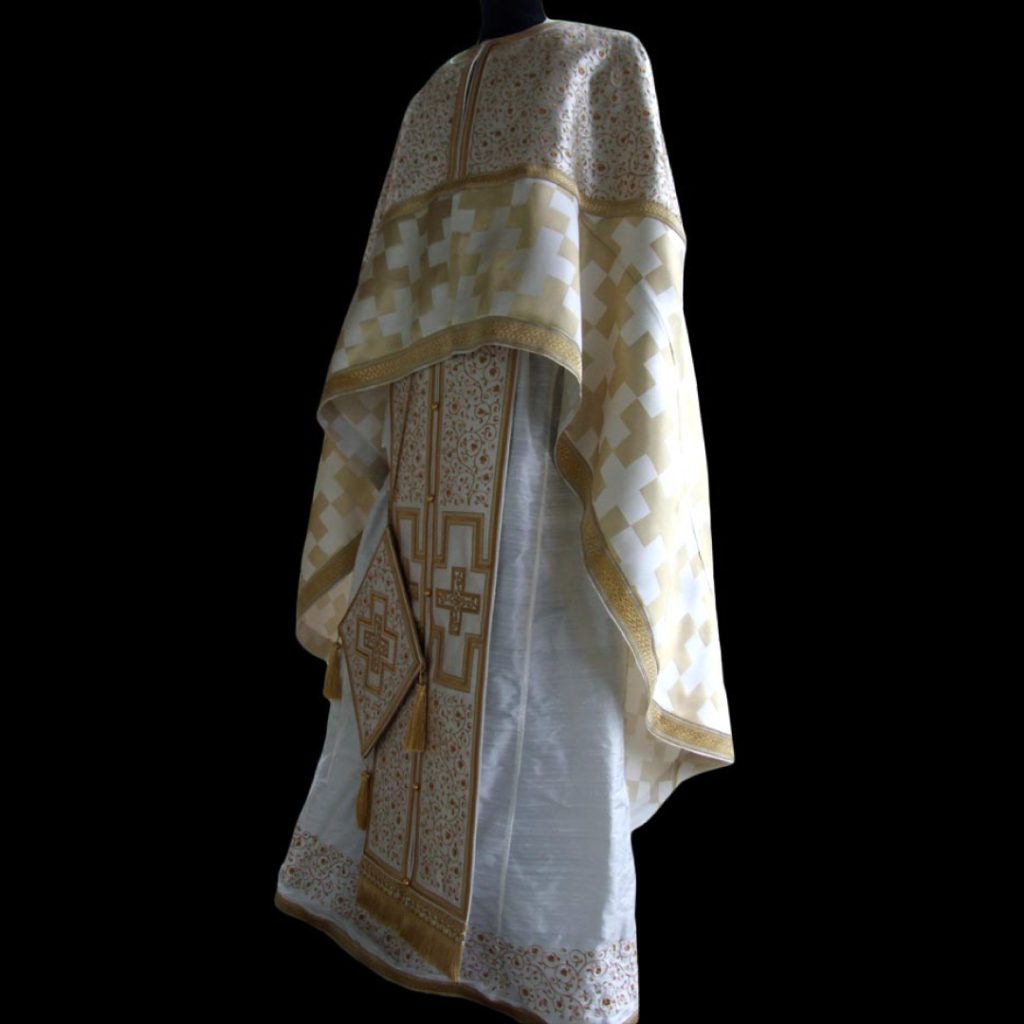
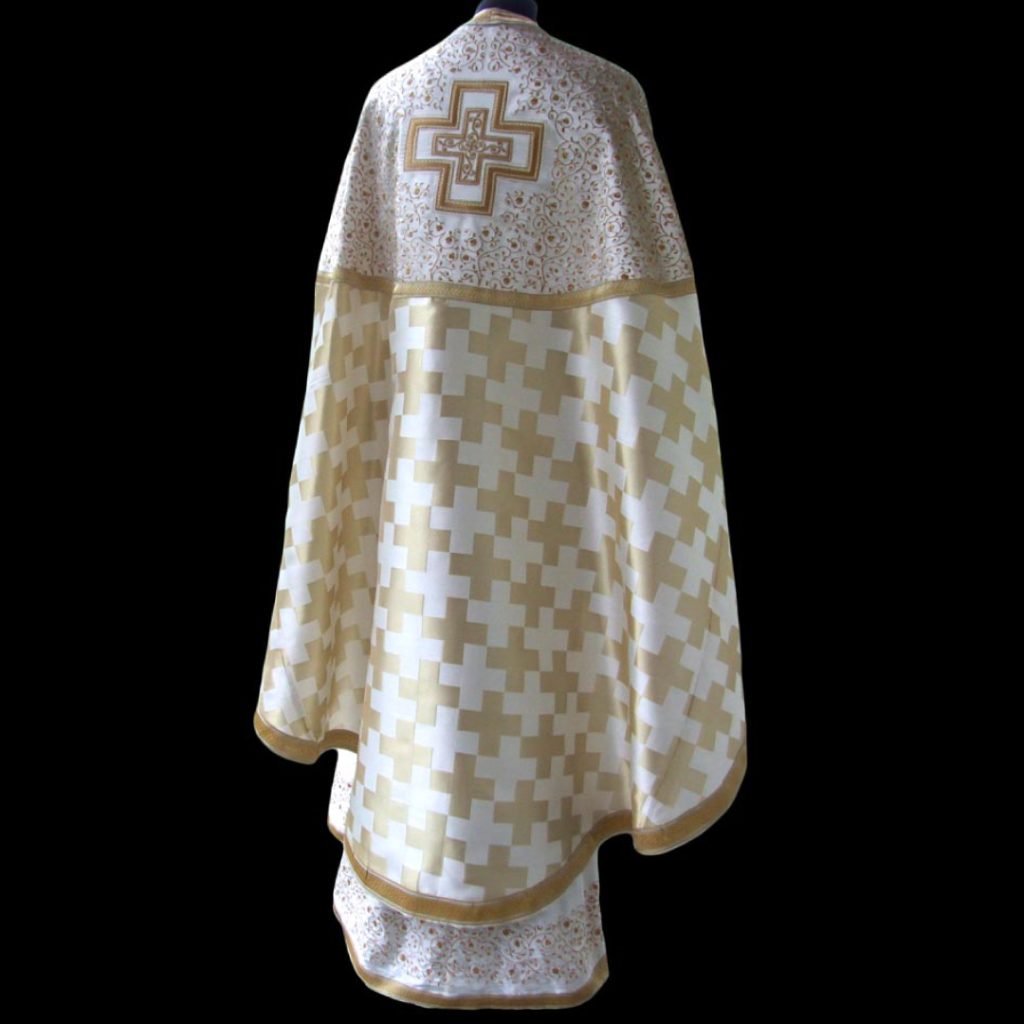
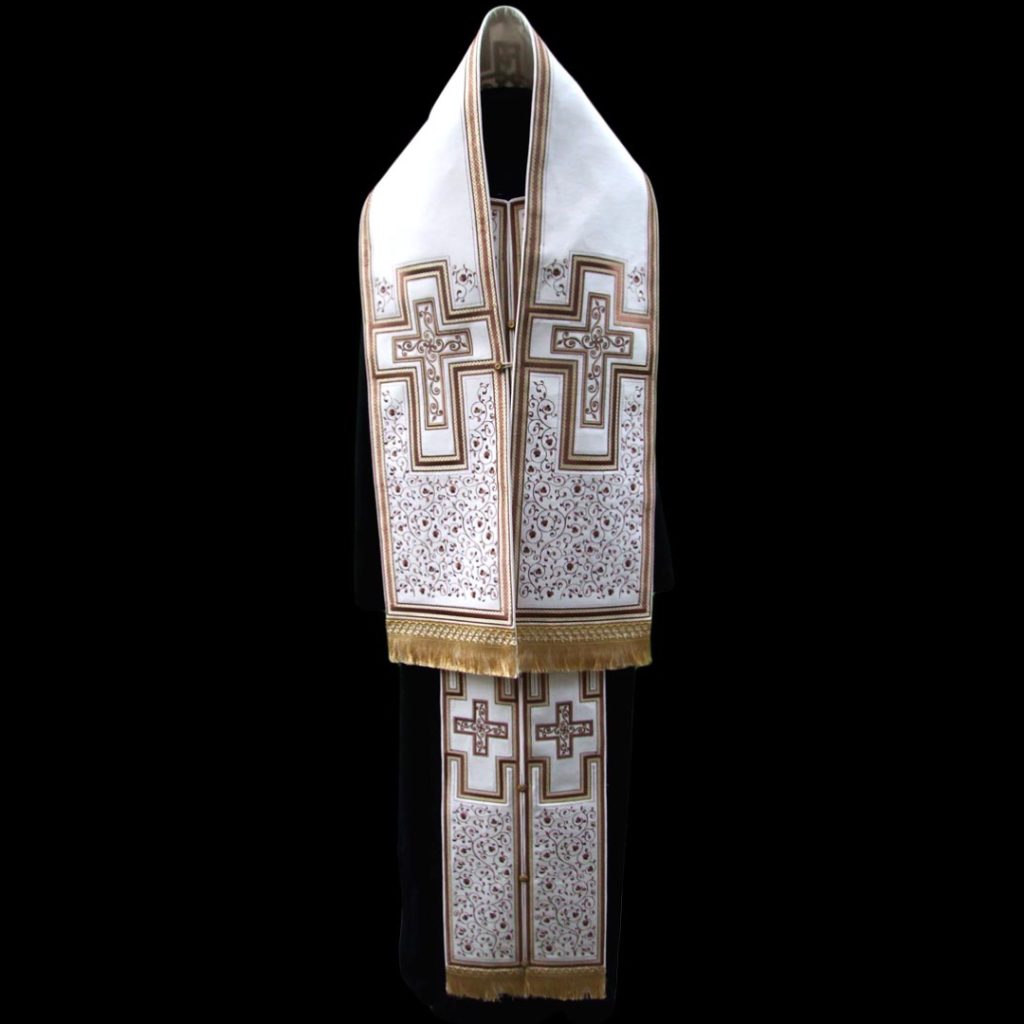
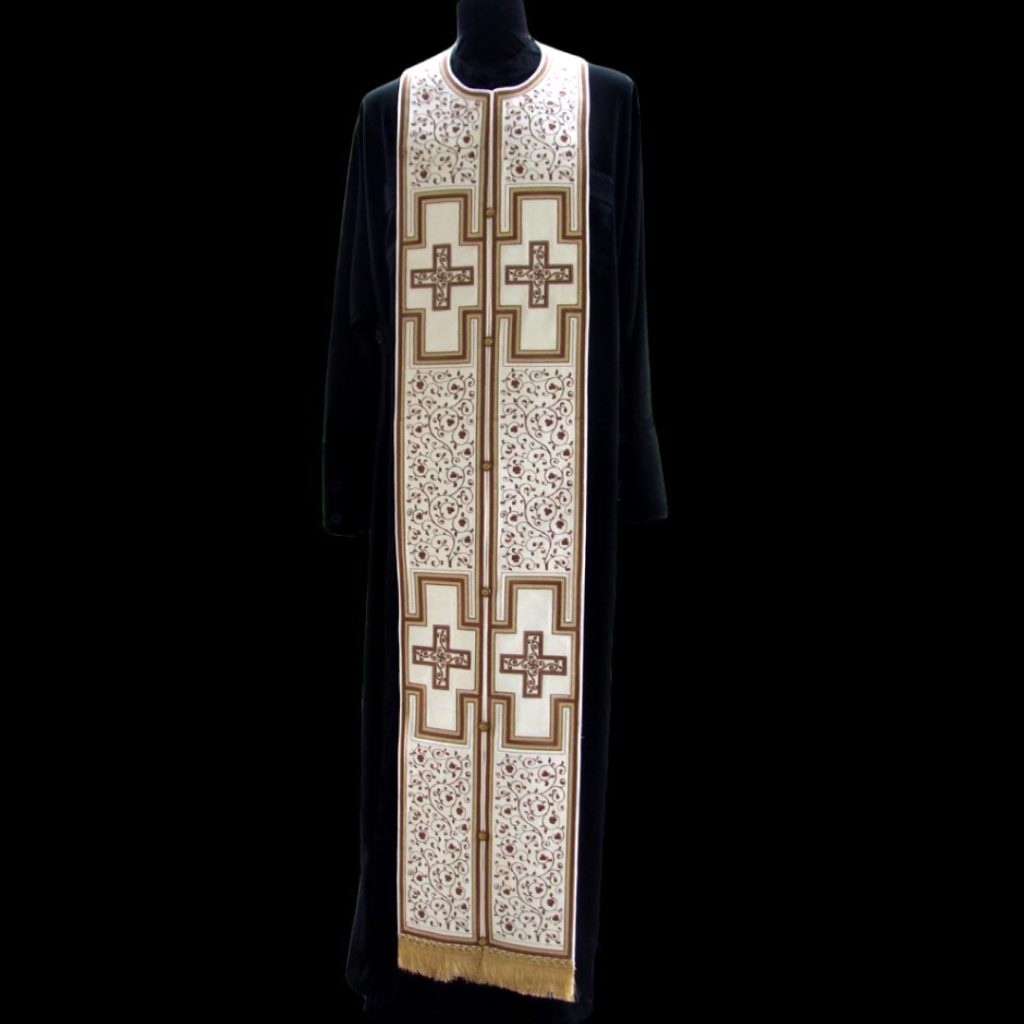
Previous
Next
NAGORICHANE
The model is made with embroidered details according to elements of the vestments from the frescoes of Michael and Eutychius in the 11th century church dedicated to St. George in Staro Nagoricane.
The priest vestments are combined also with polystavrion fabric made with metallic threads.
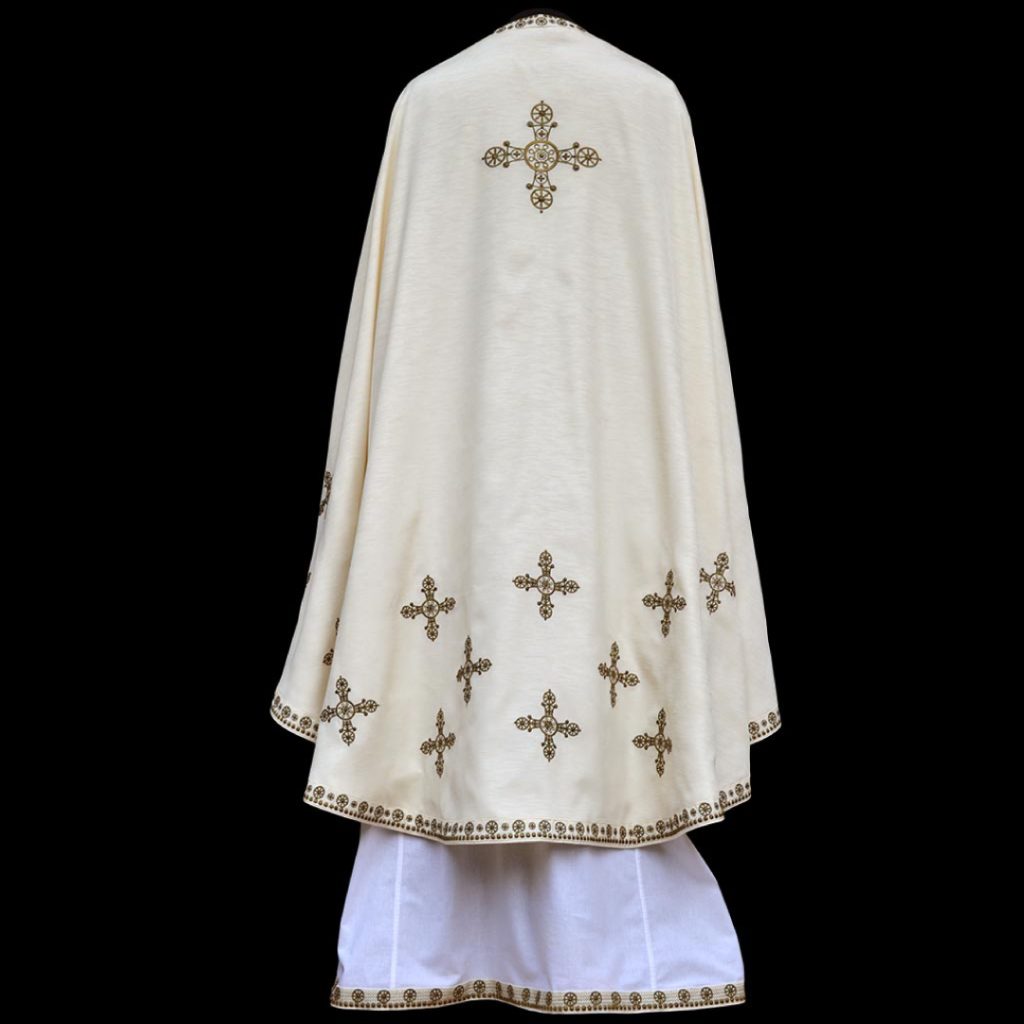
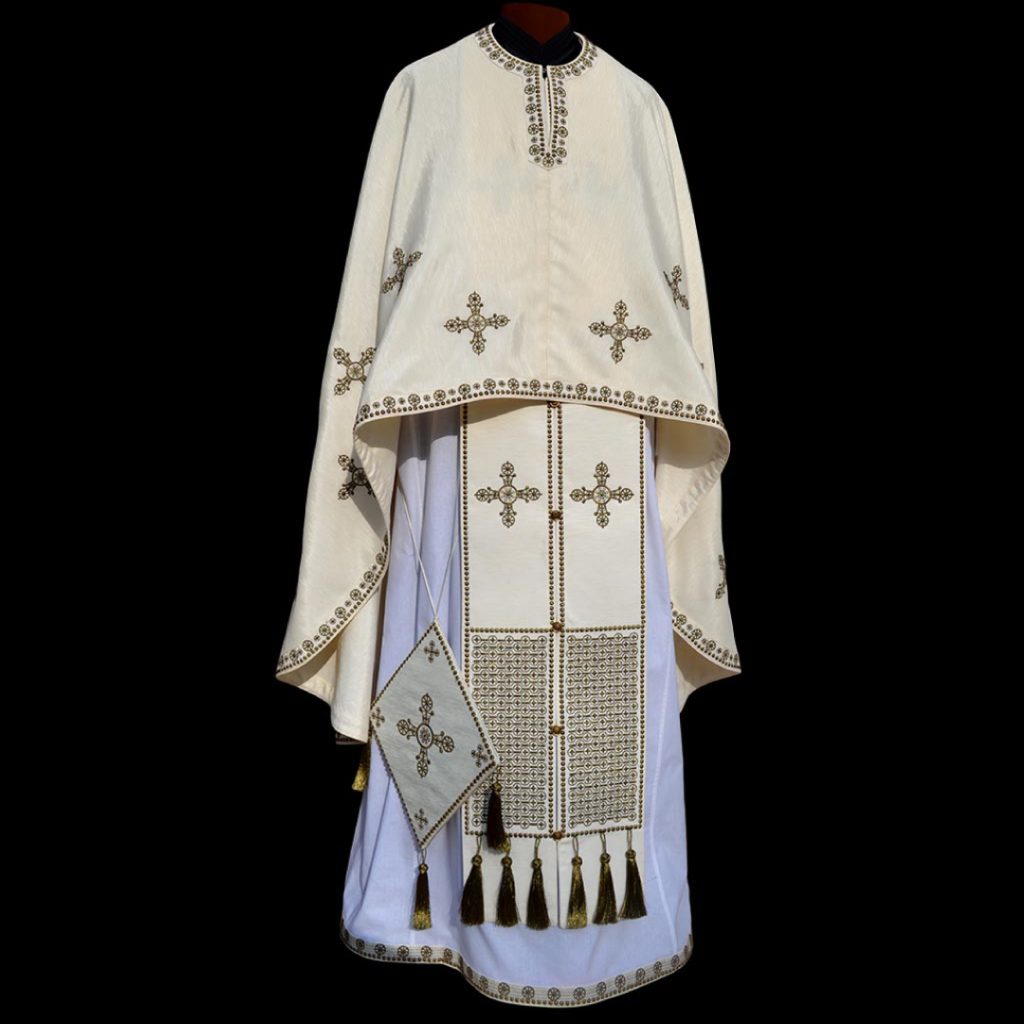
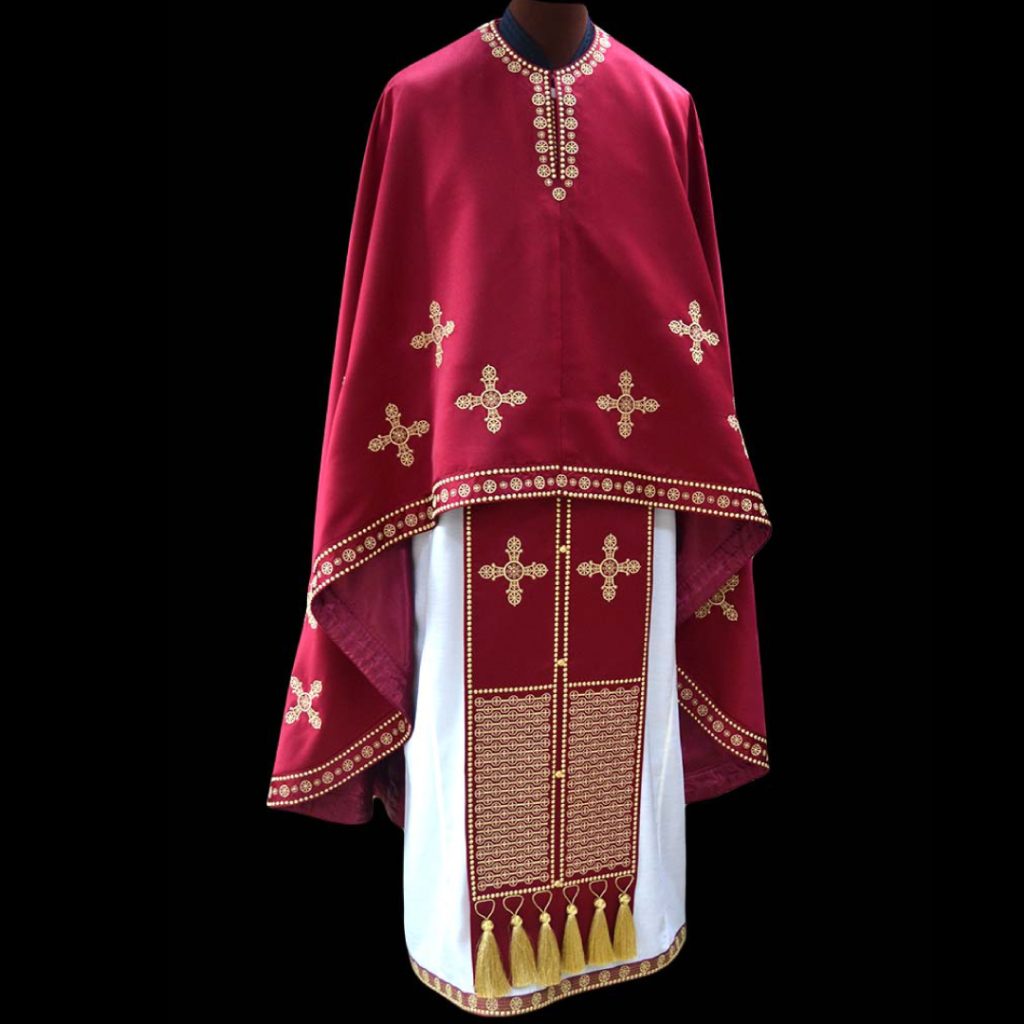
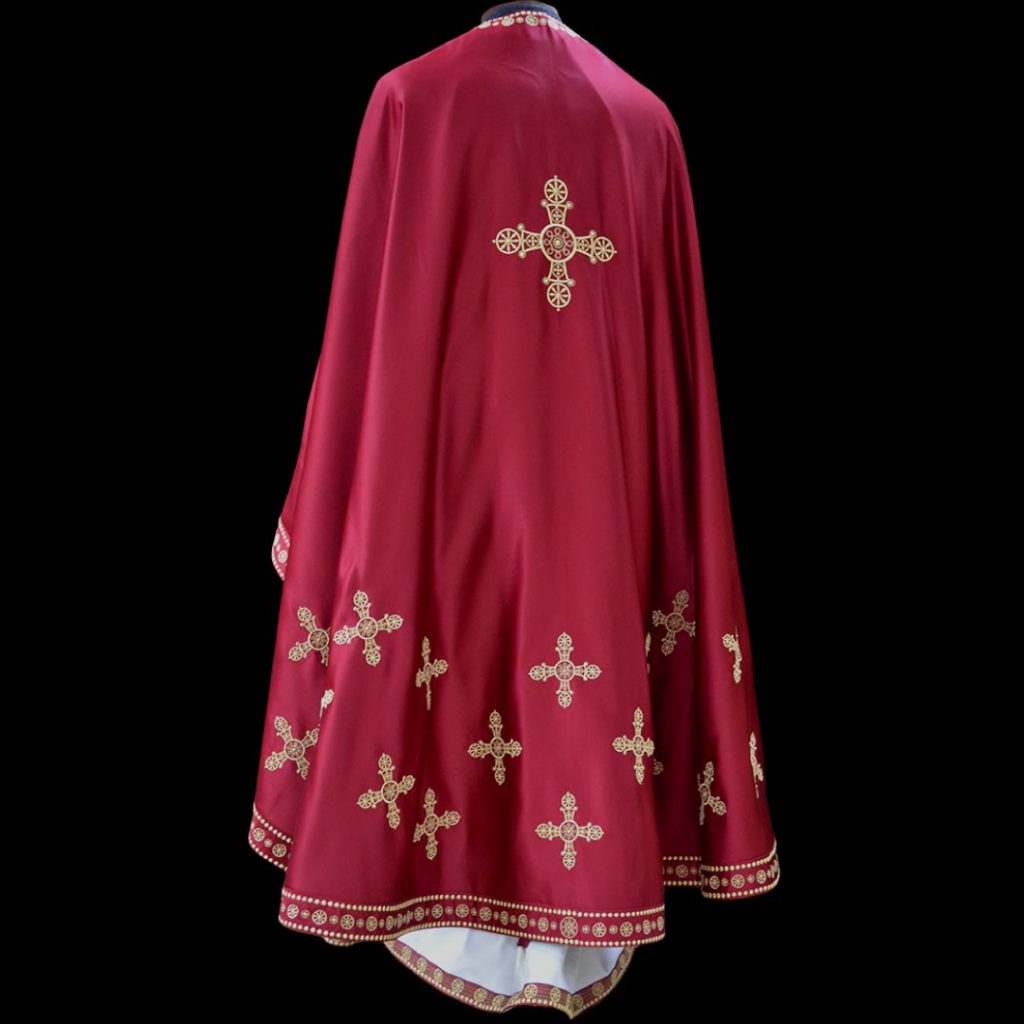
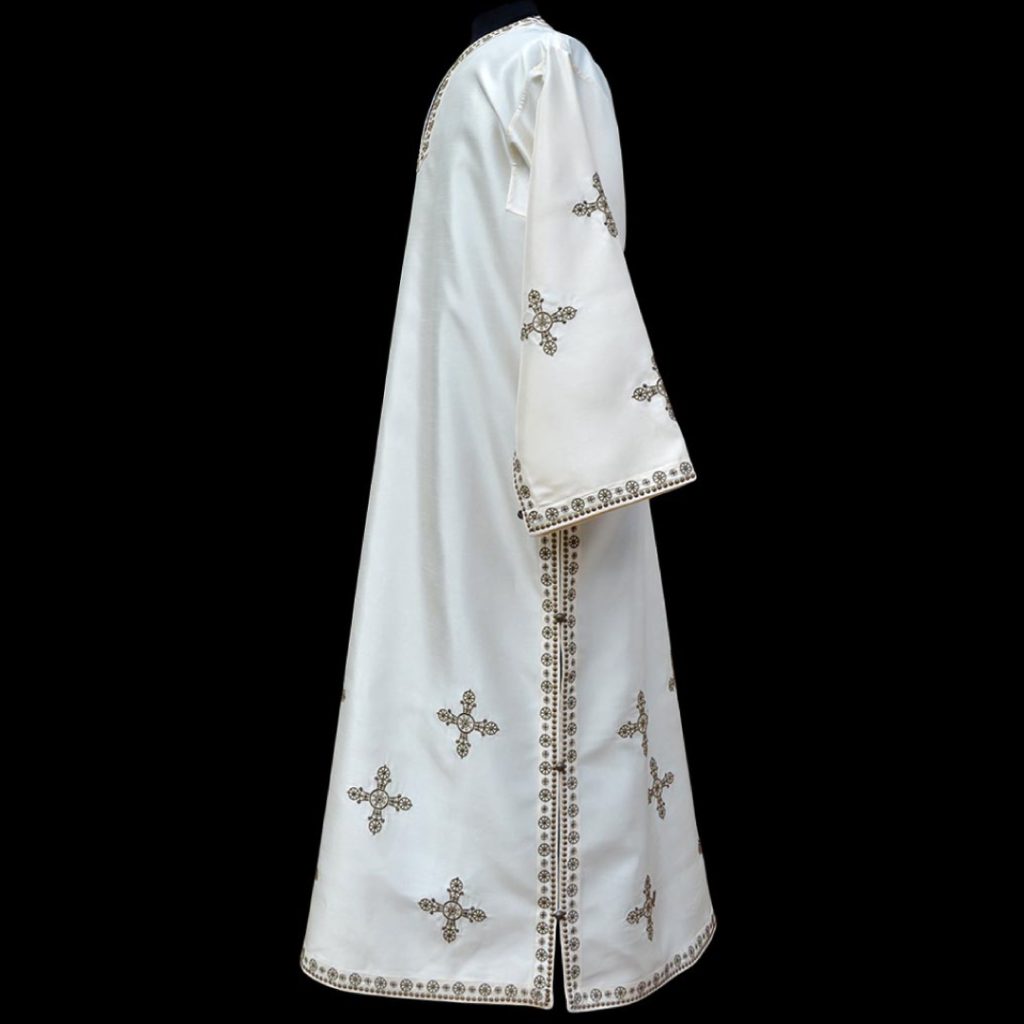
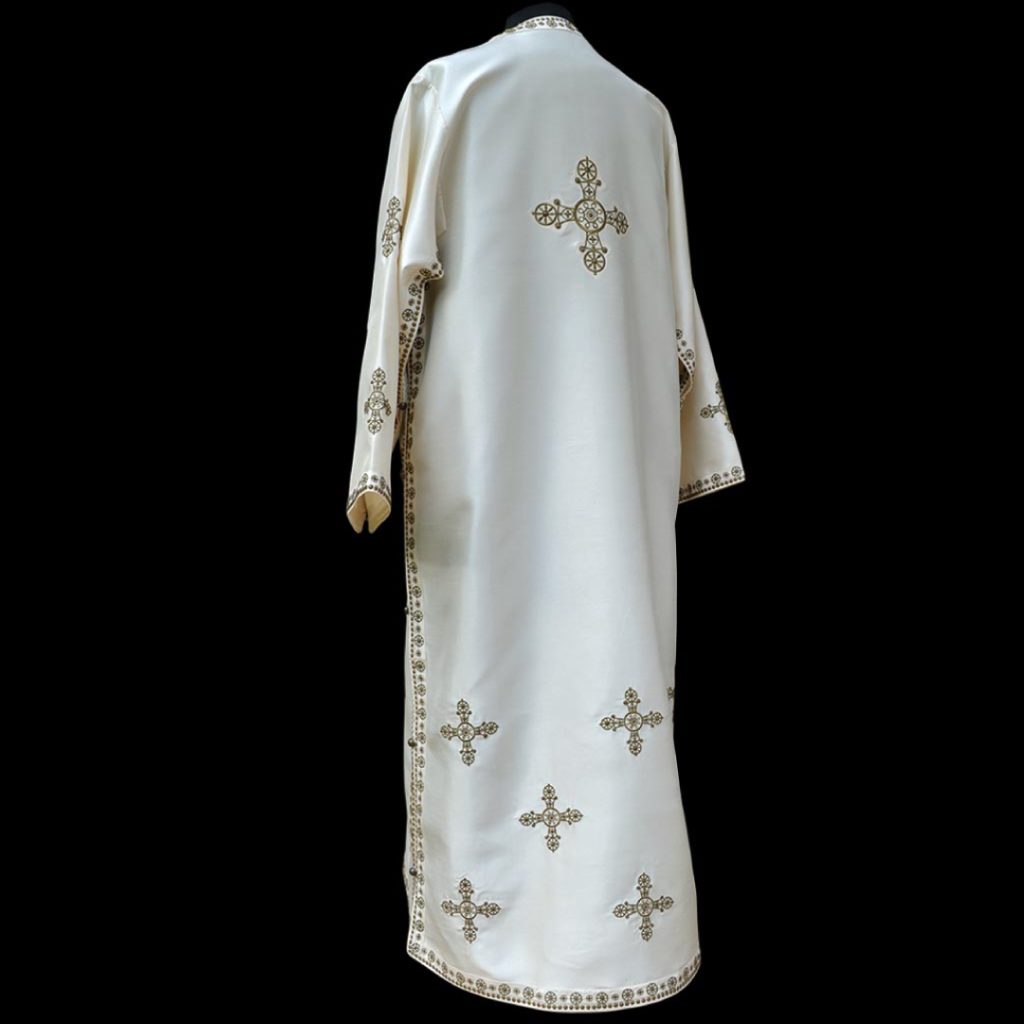
Previous
Next
POLIELEJNI
This model of vestments is inspired by a polyeleos (chandelier or polycandil). The polyeleos is the basis on which the cross and the elements used in the borderline of the vestment are designed.
The choice of embroidery thread of this model is one with patinated metal color, which best fits the motif of the polyeleos and most authentically captures its metallic shining.
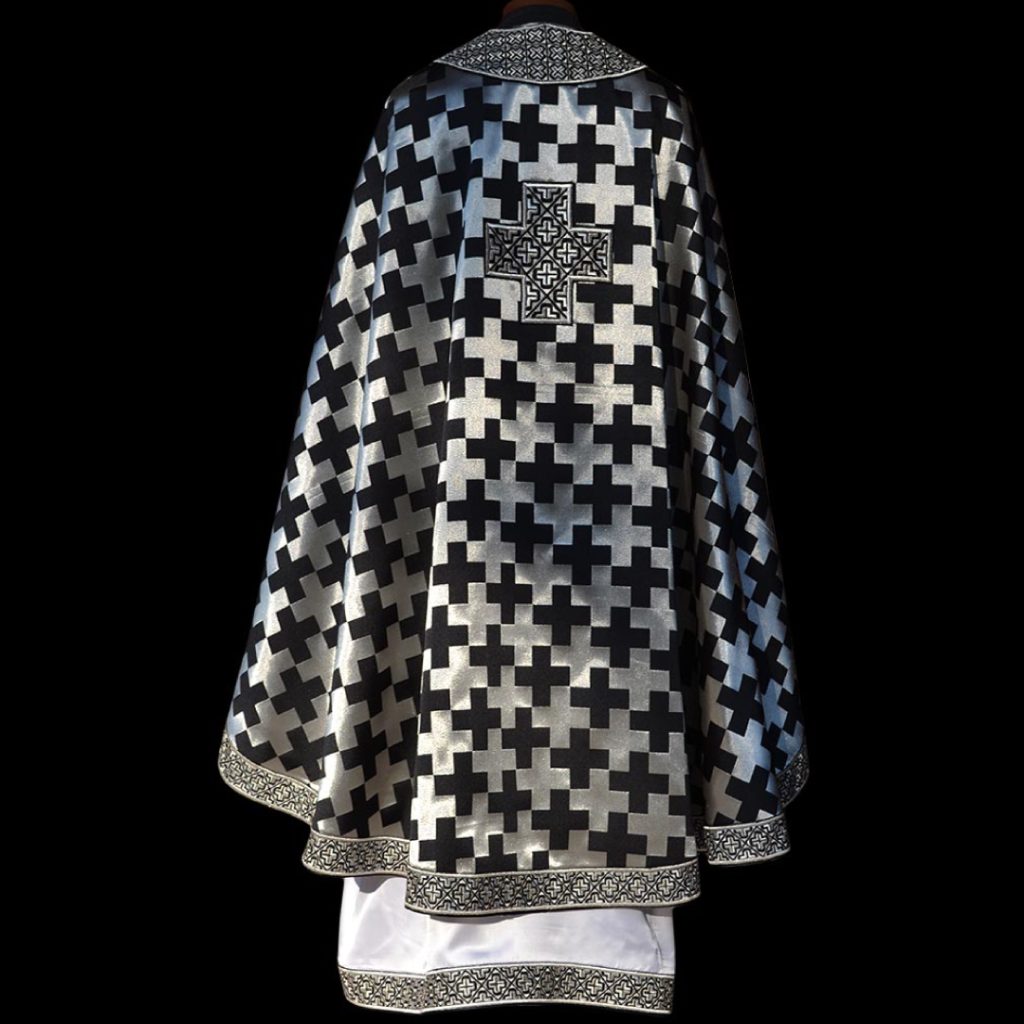
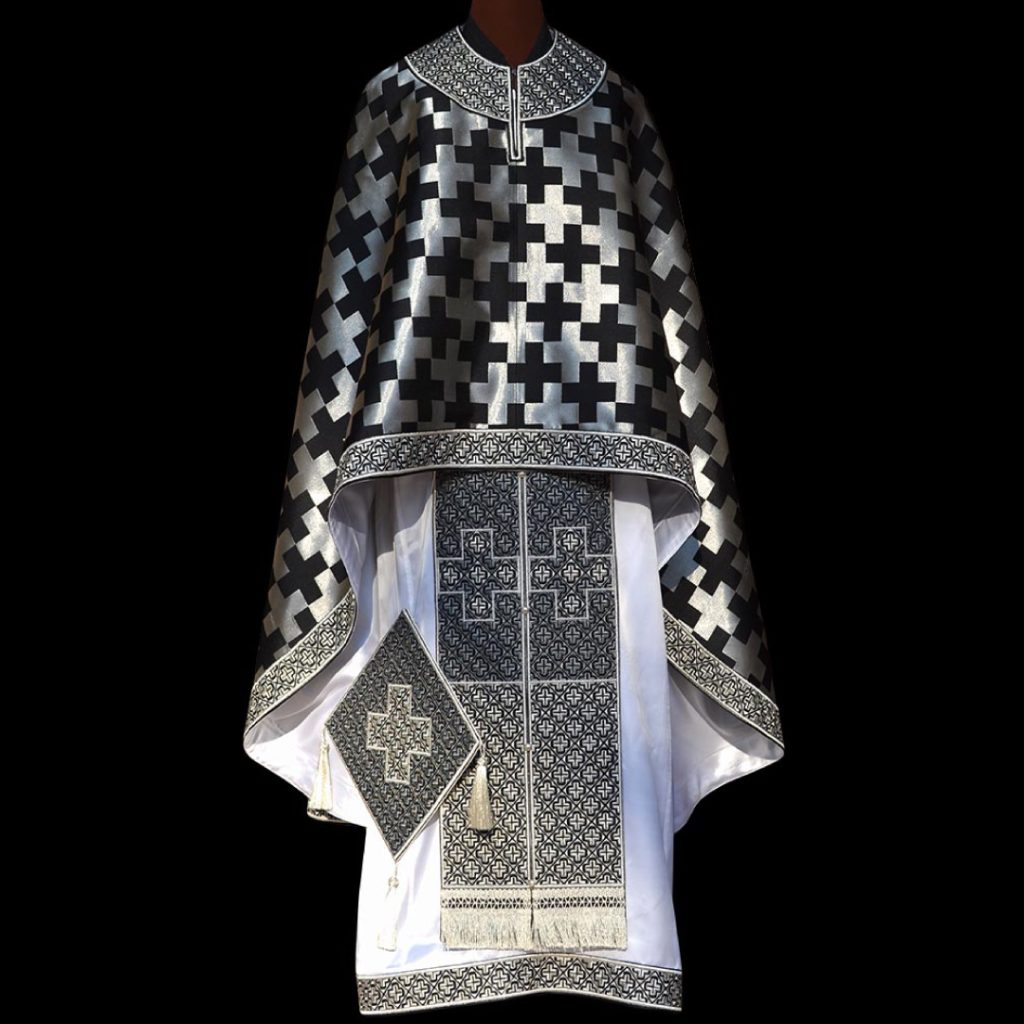
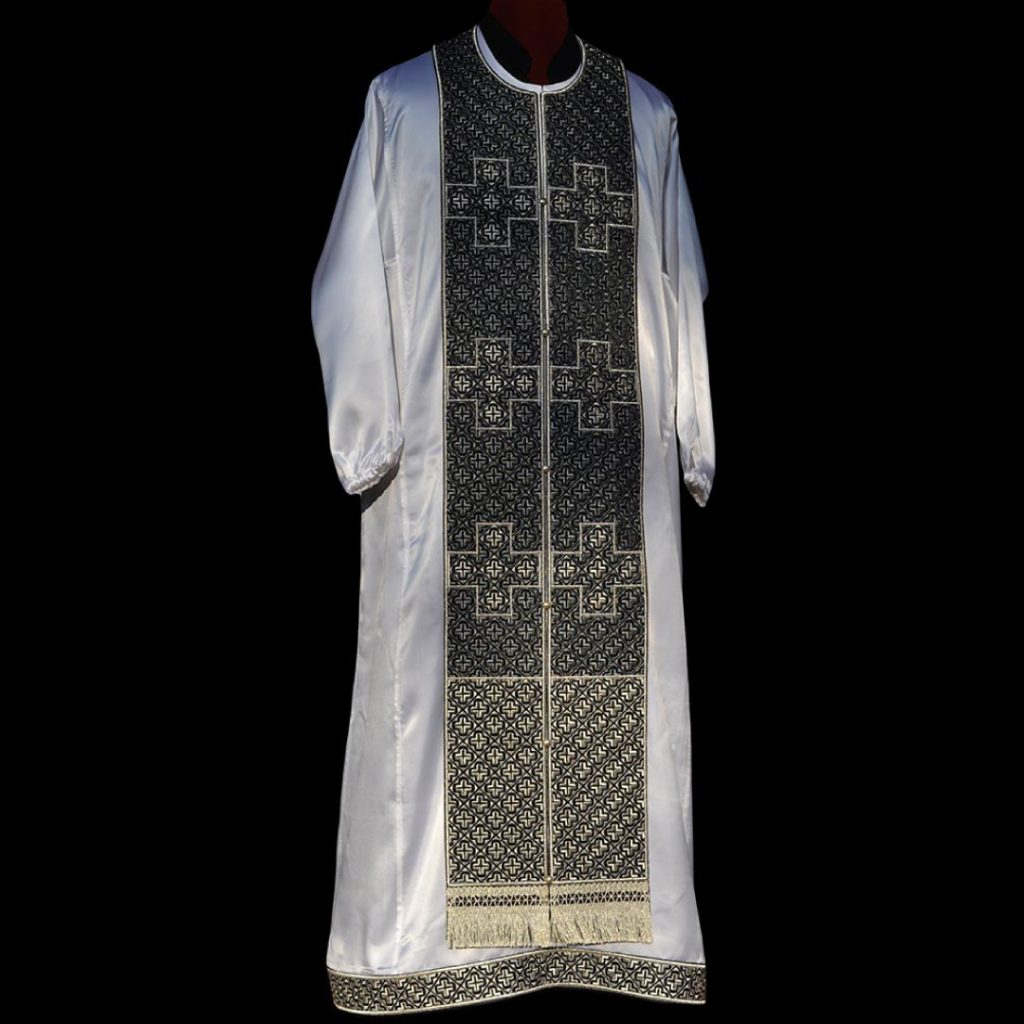
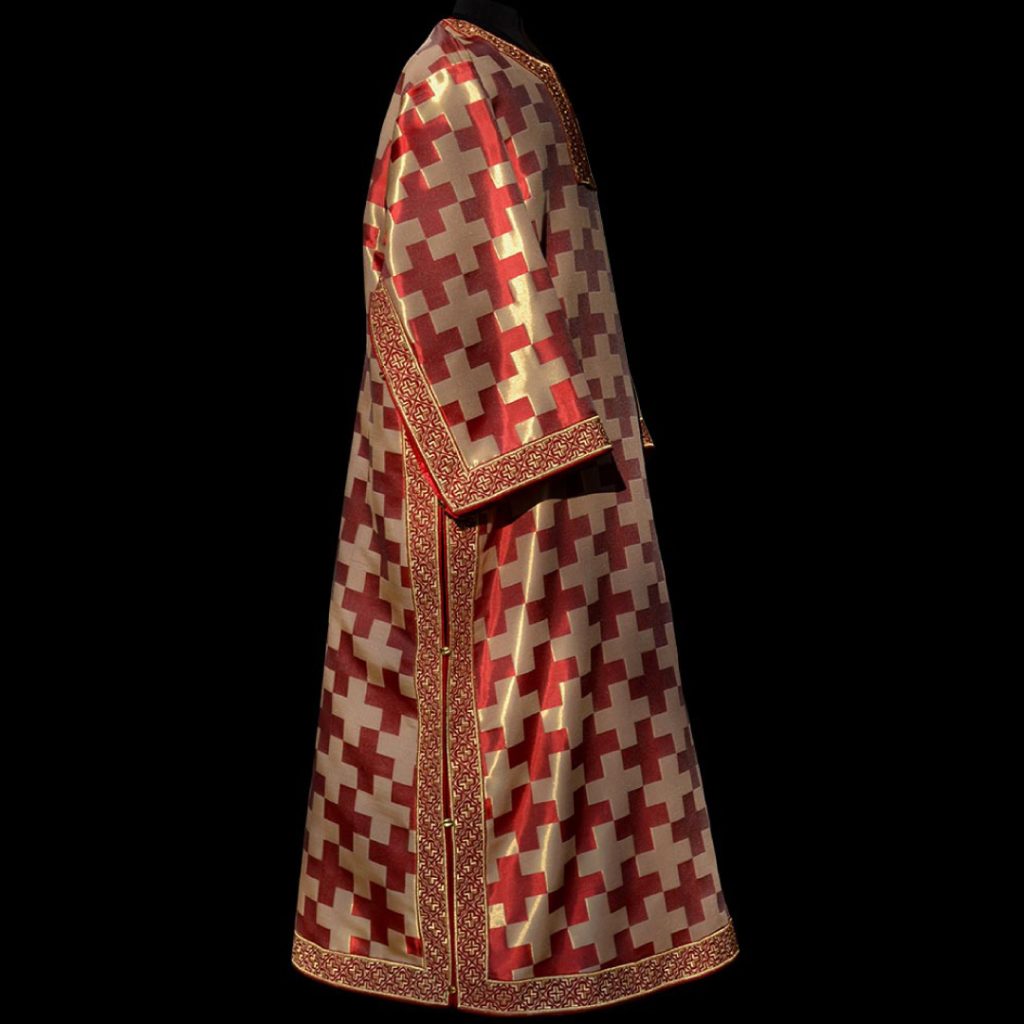
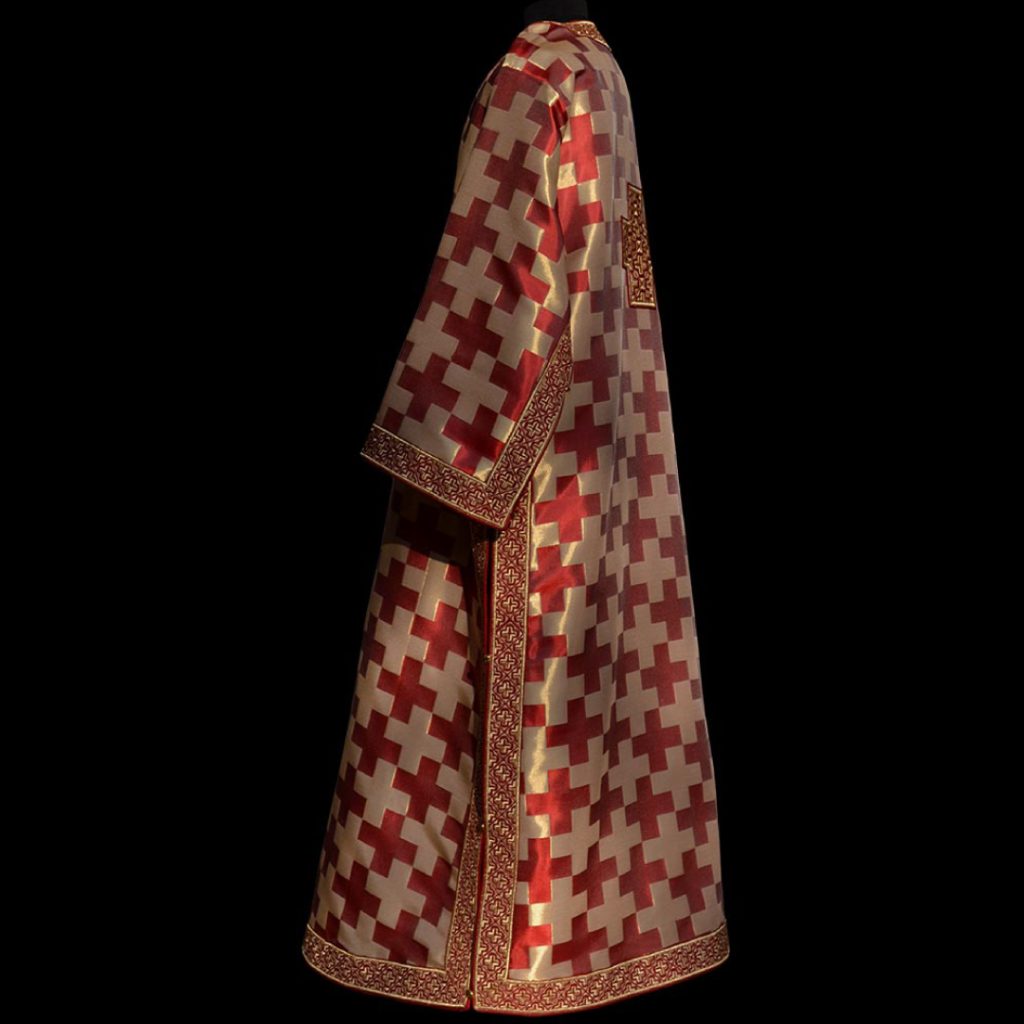
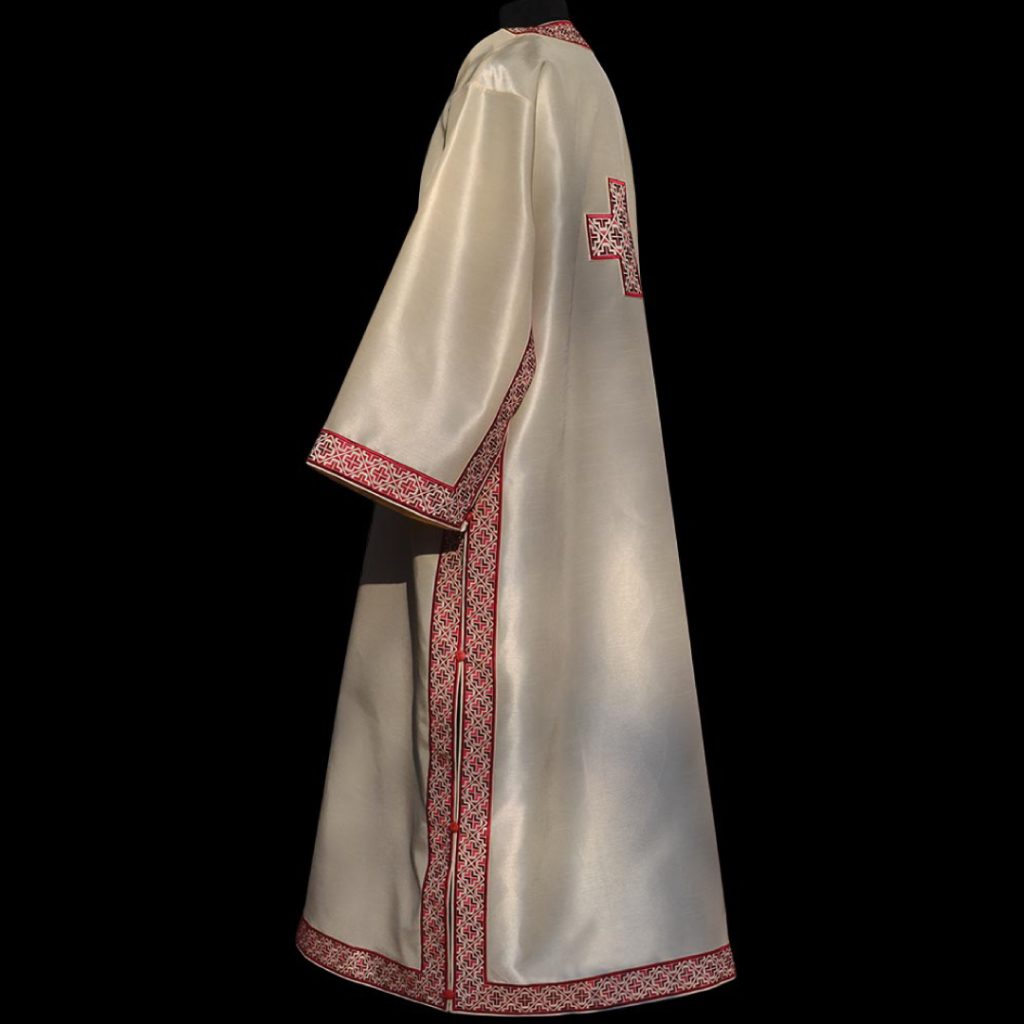
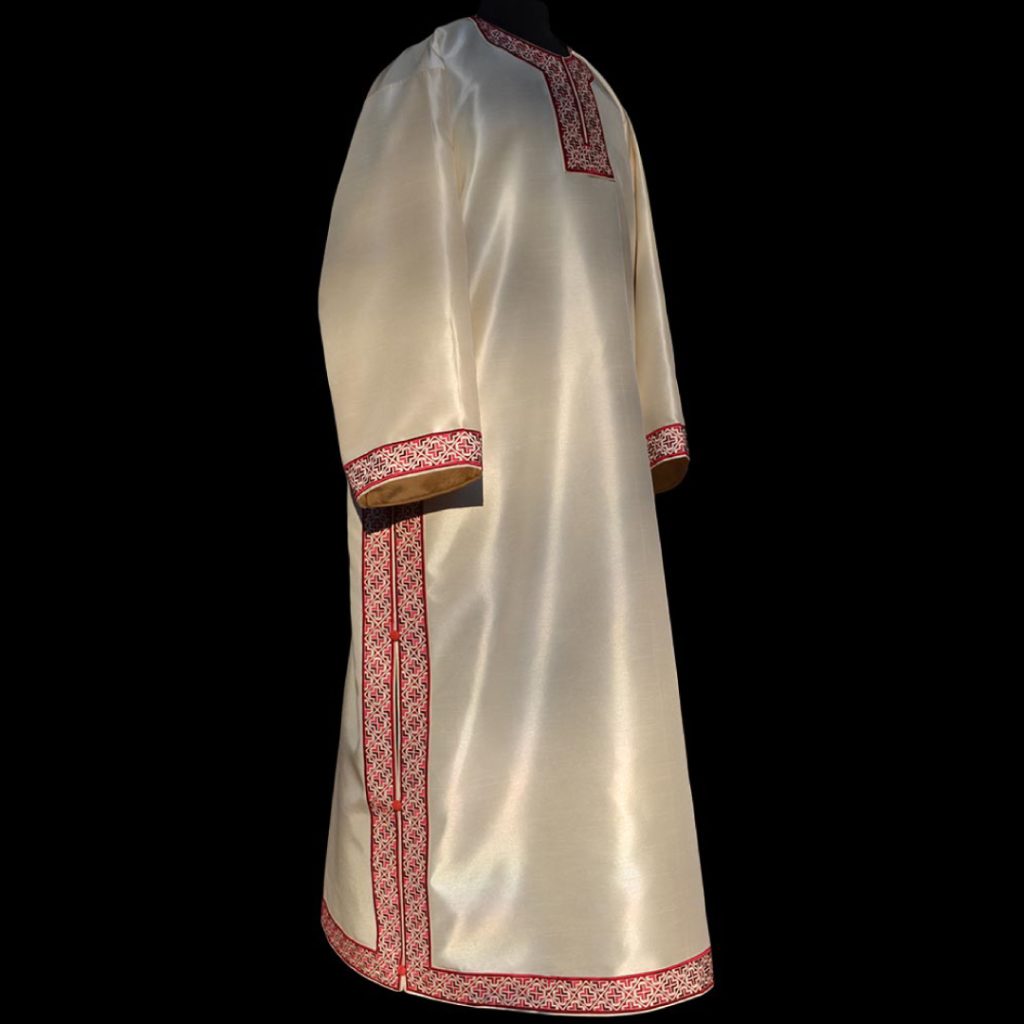
Previous
Next
SINAJ
A feature of this model of vestments is the simplicity of the design. The splendor of the complete look is obtained by multiple repeating the simple but strong elements. The very elements and this solution of the fullness of embroidery and permanence, are taken from the Sinai monastery.
The choice of embroidery threads for this model of vestments are shades of silver metallic threads for silver-black polysavrion, and golden colored for the gold-red one.
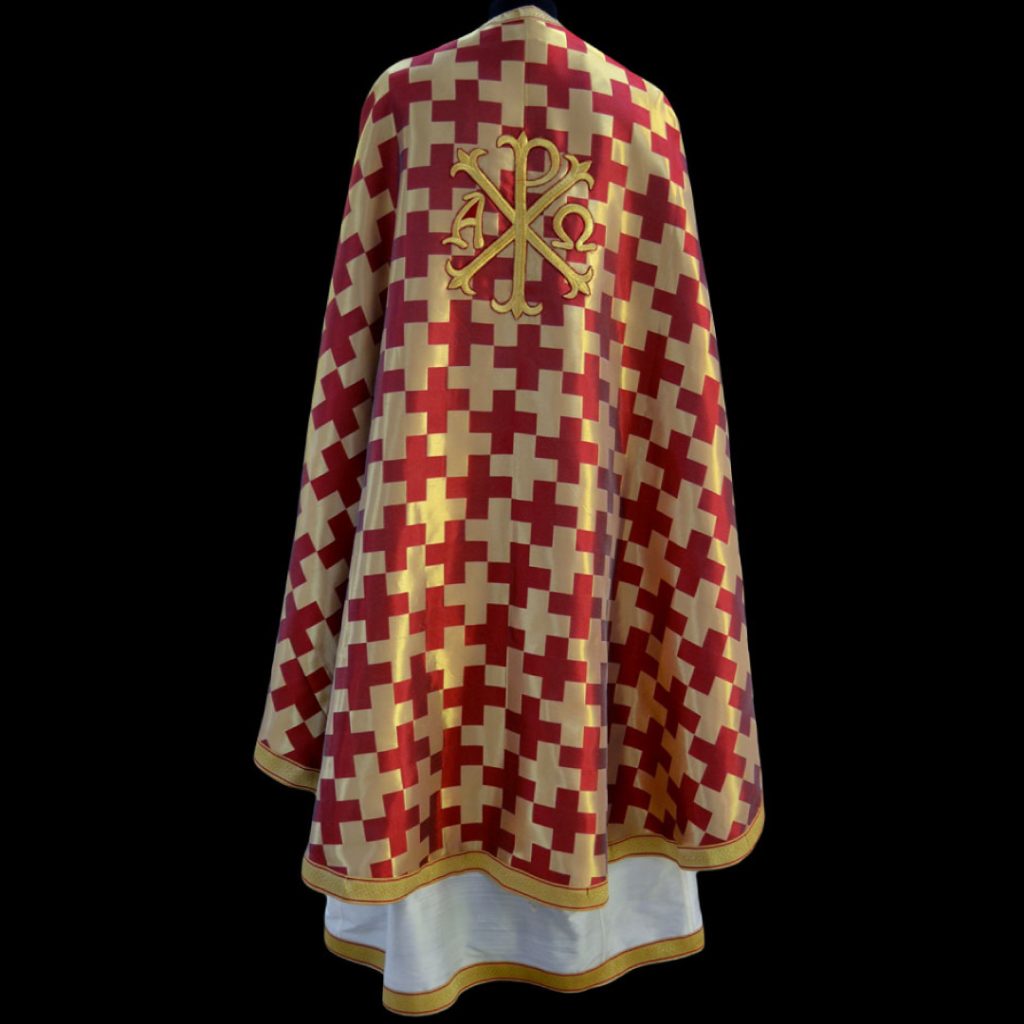
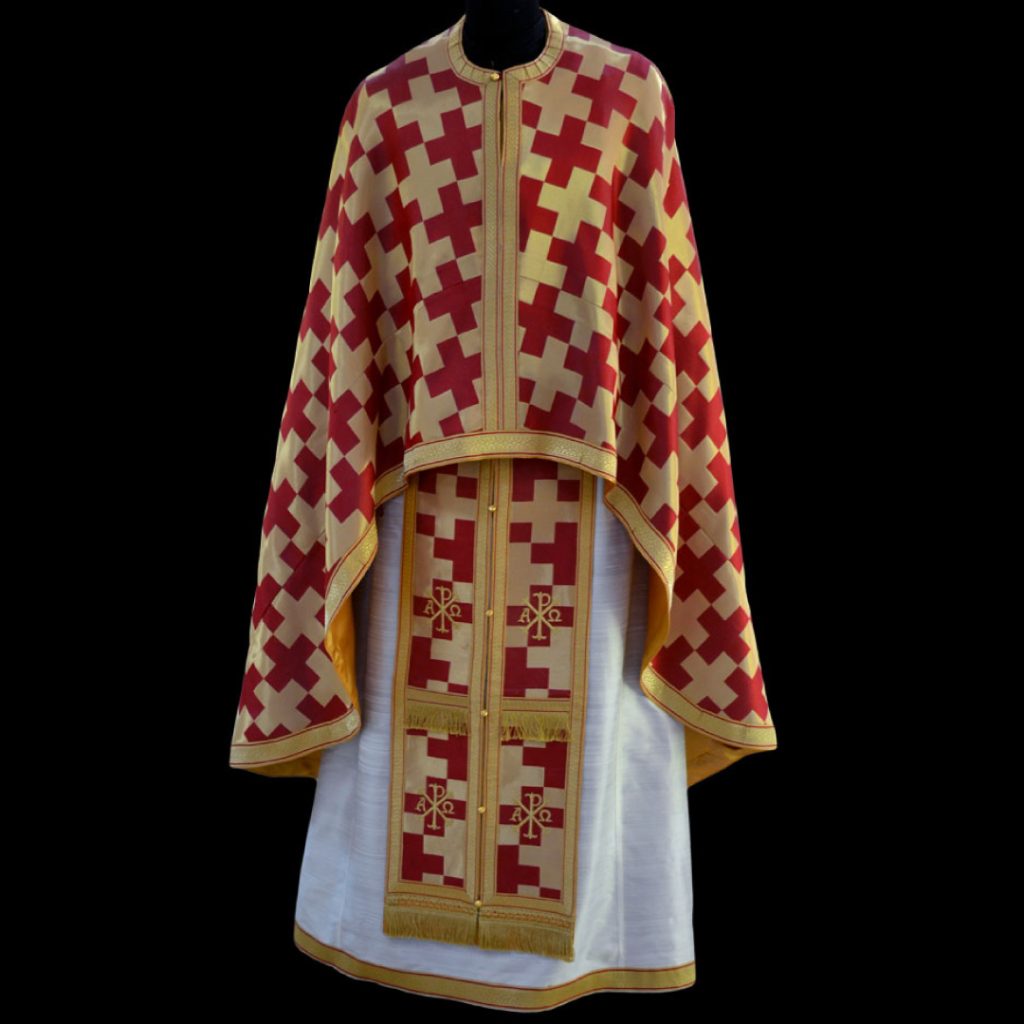
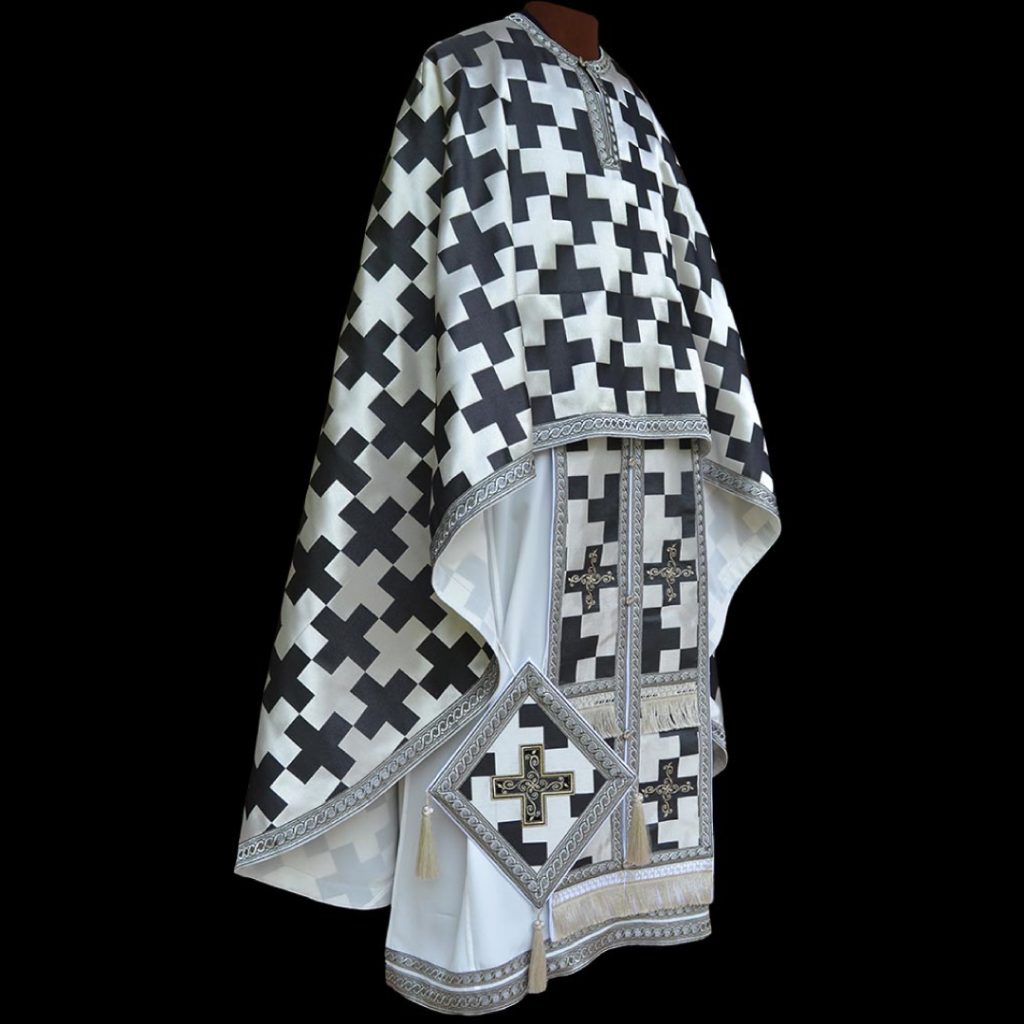
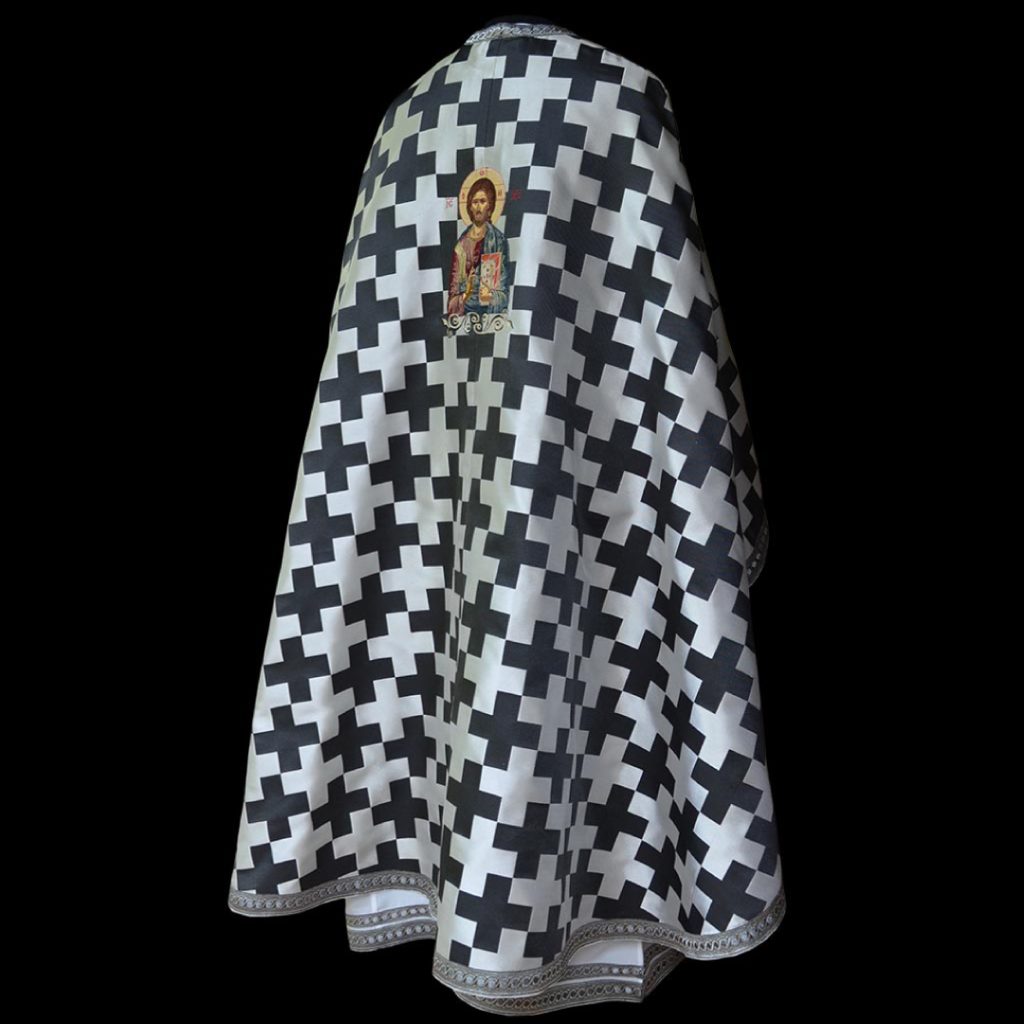
Previous
Next
POLYSTAVRION
The material for these vestments is “sip” – woven metallic threads fabric, with many crosses – polystavrion. There is a small simple embroidery in the crosses themselves. The basic model has a back cross. A woven ribbon is used on the borderlines of all the elements of the vestments.
The type of the cross for the vestments is by choice. The icon is optional.
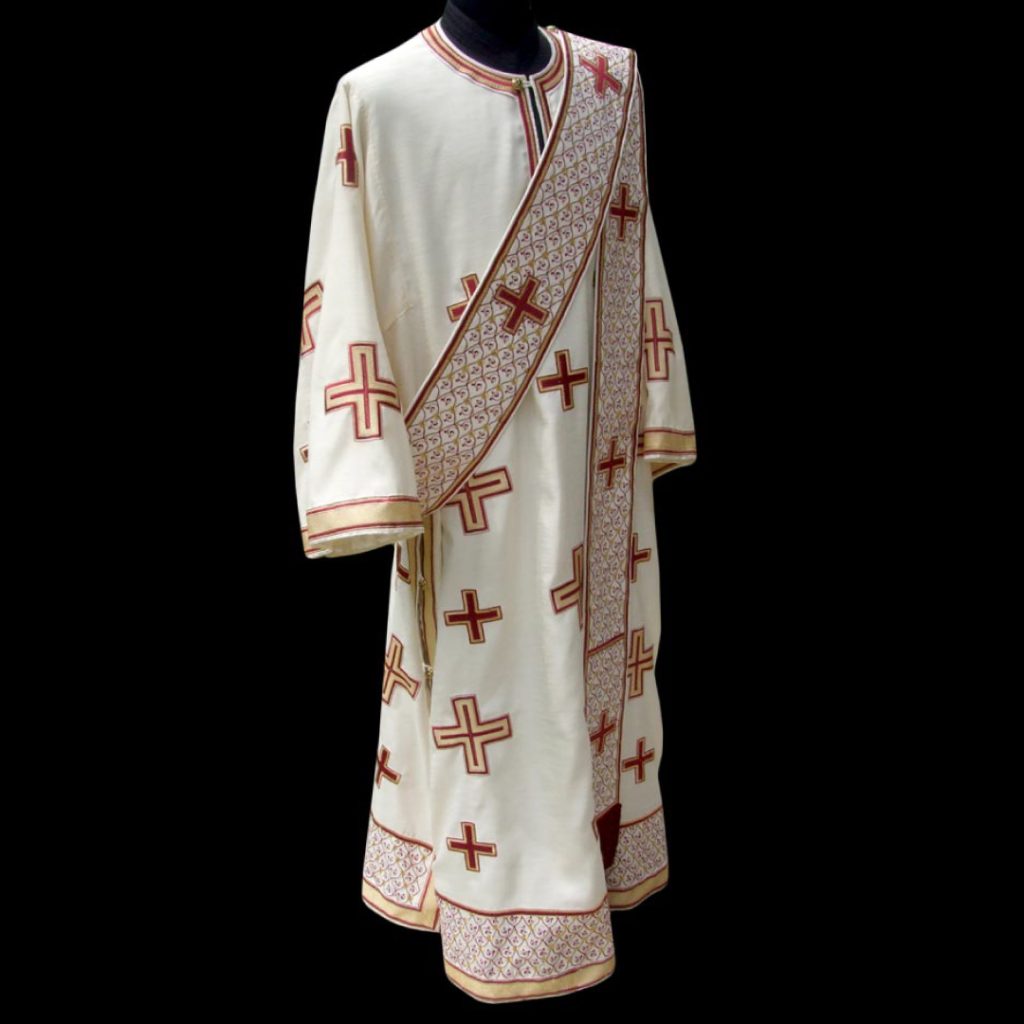
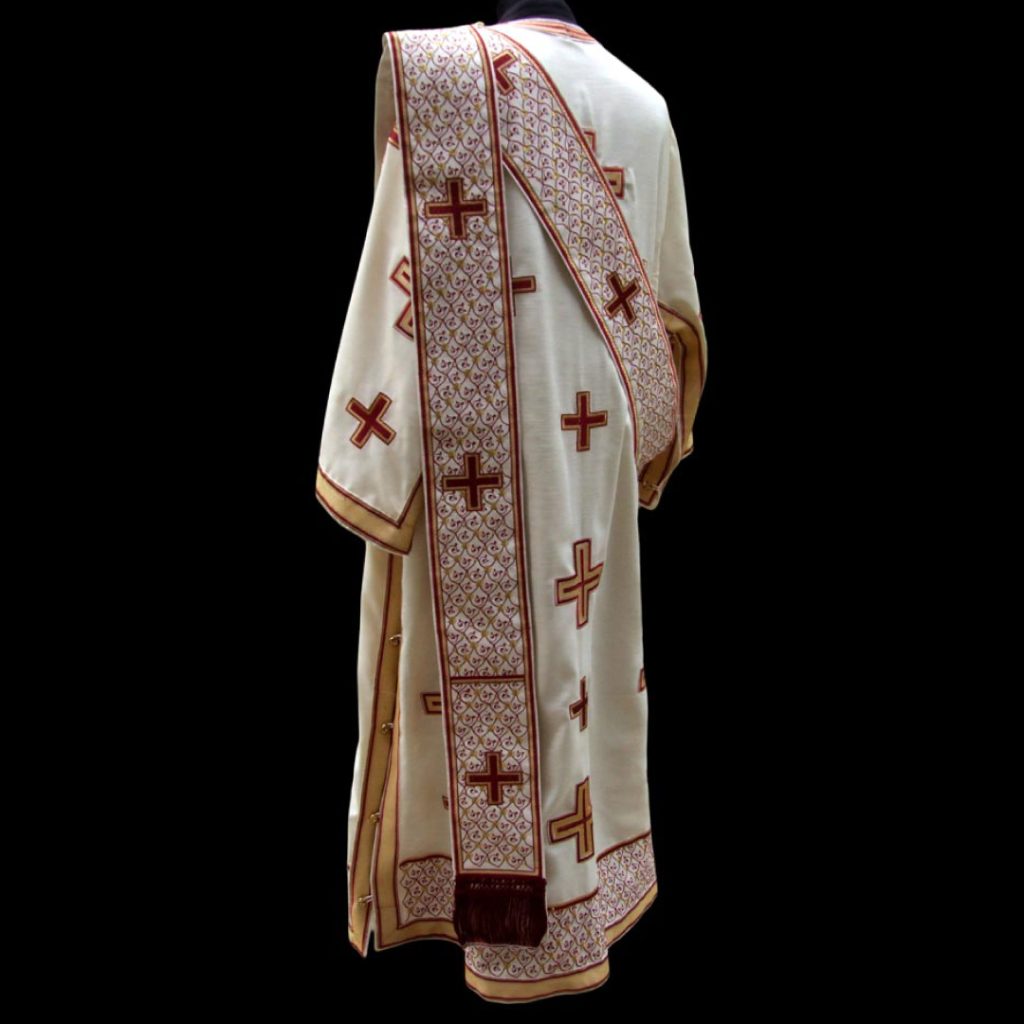
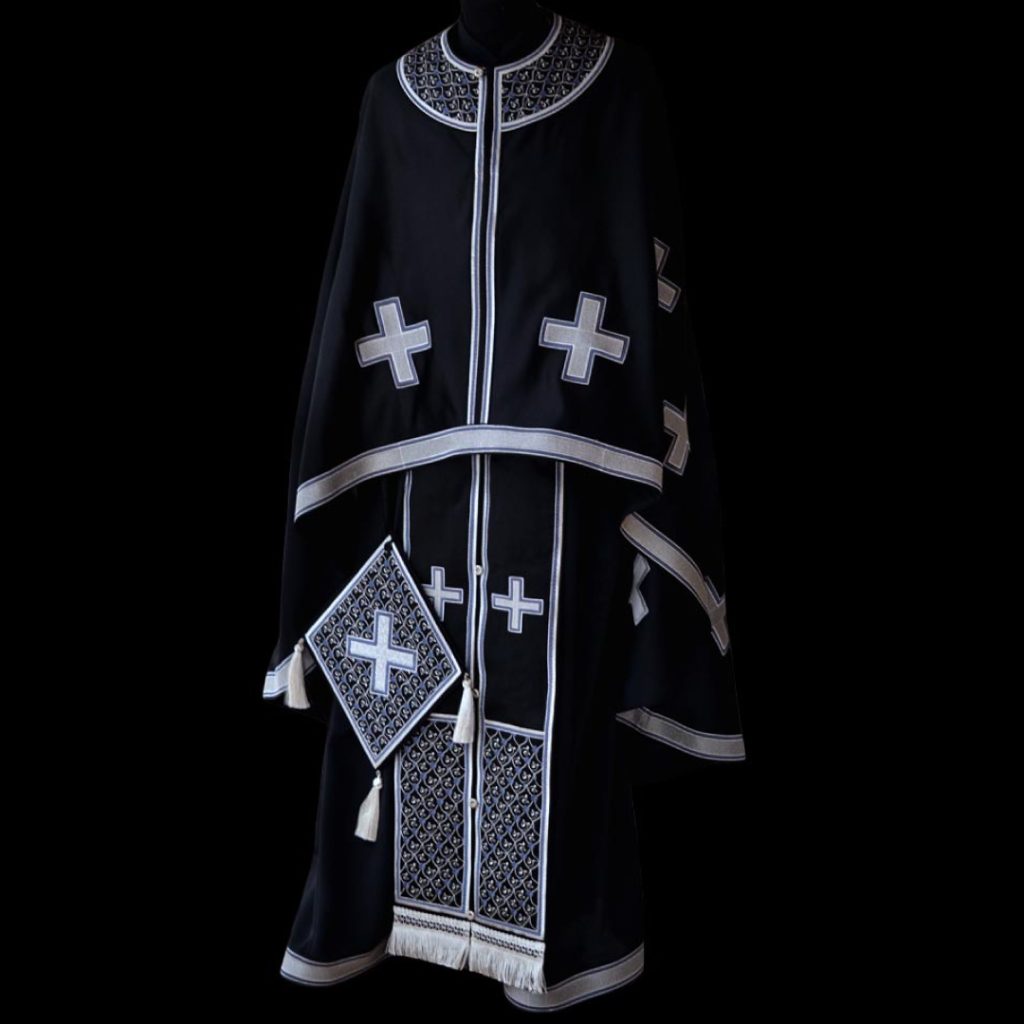
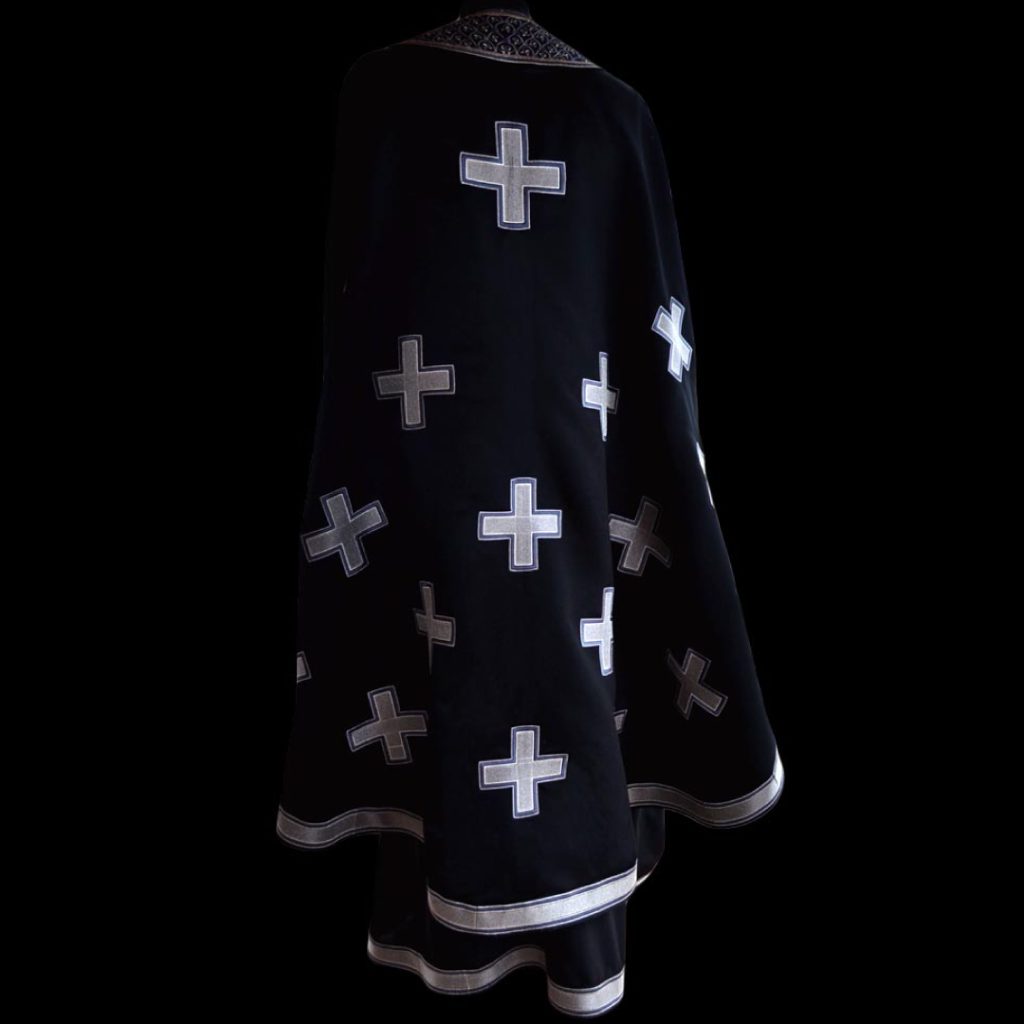
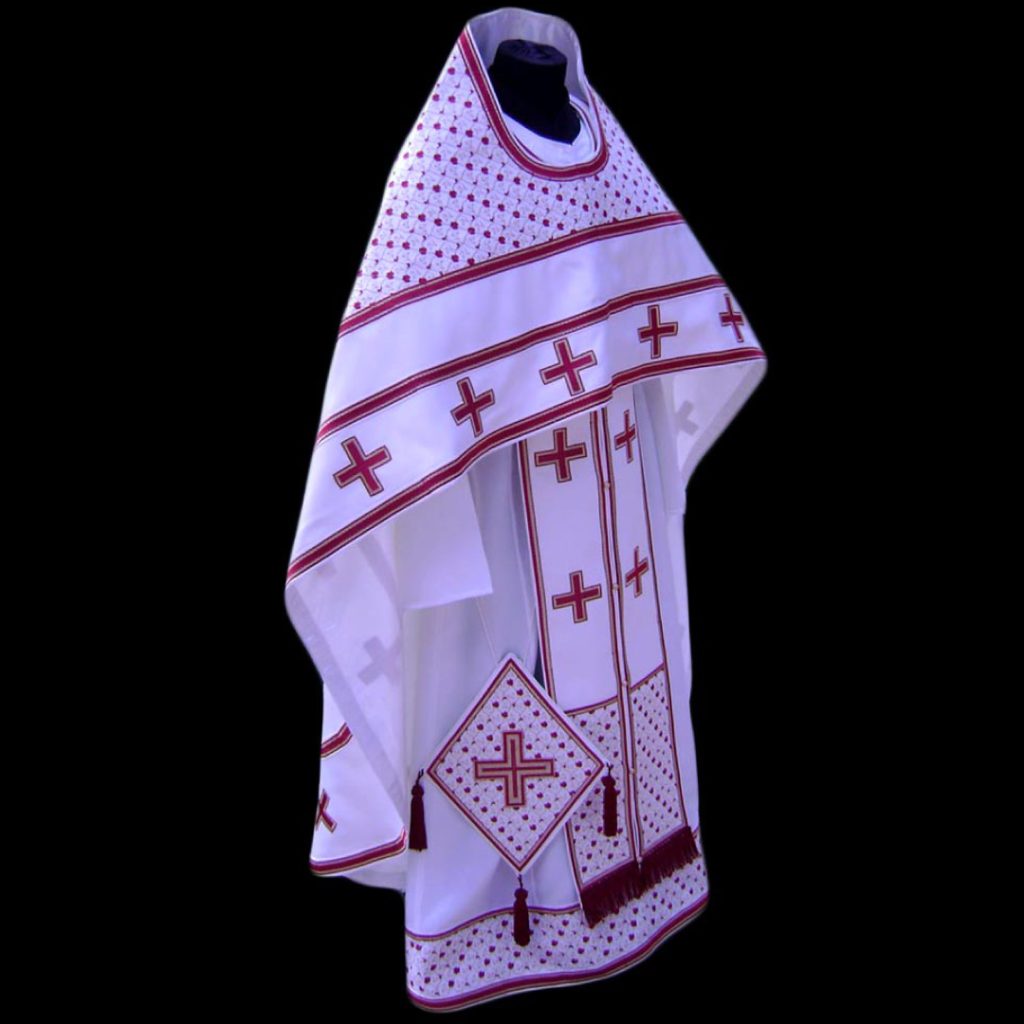
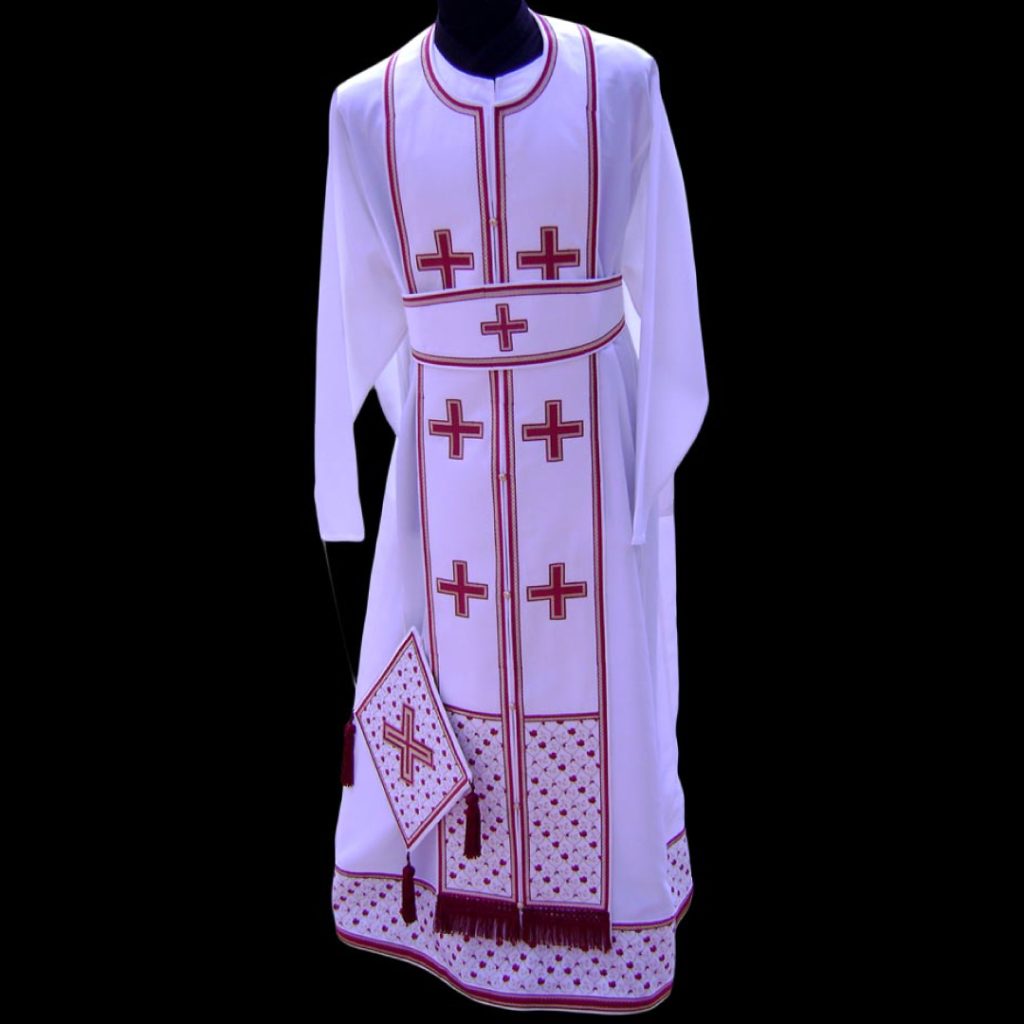
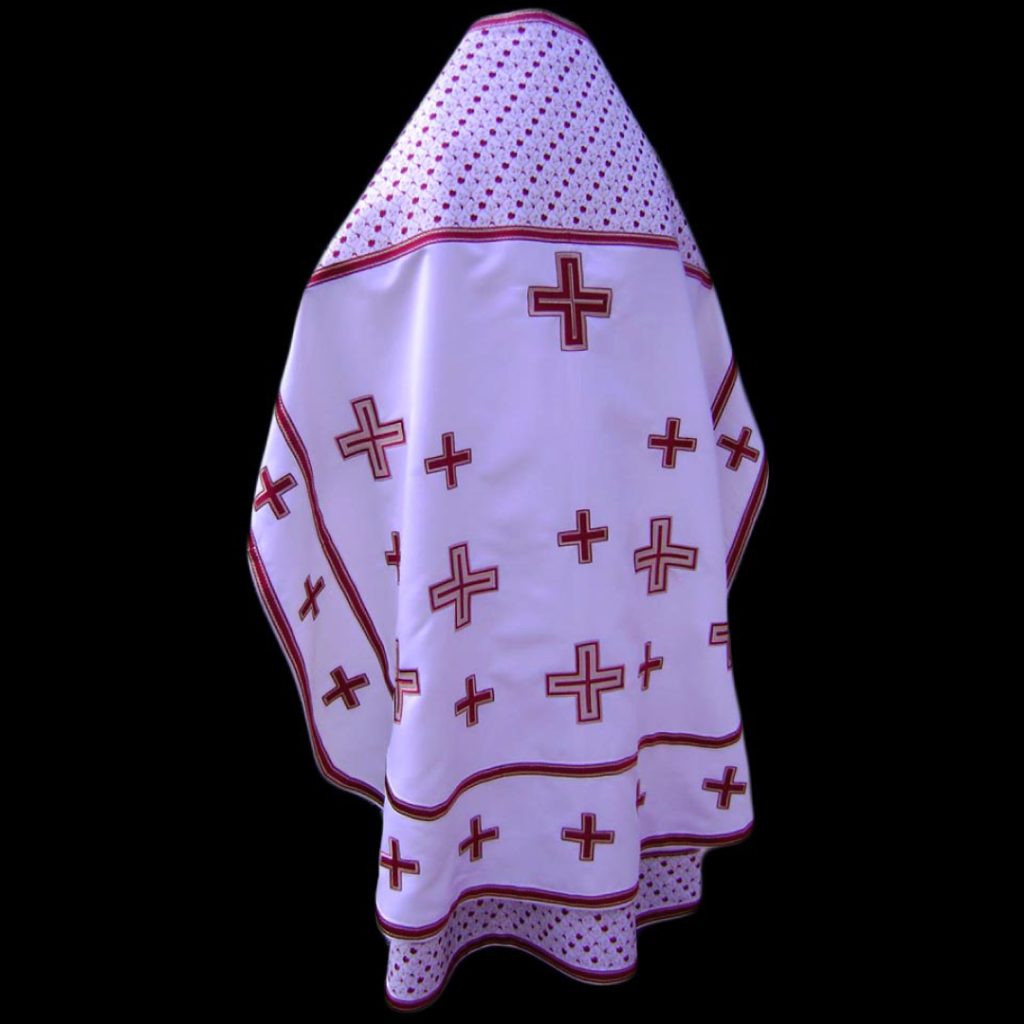
Previous
Next
MANASTIR (Monastery)
Monastery is a simple model that is designed according to the vestments on the frescoes from the 11th century. This type of vestments, due to its simplicity, is often chosen by monks.
The embroidery is in two colors.
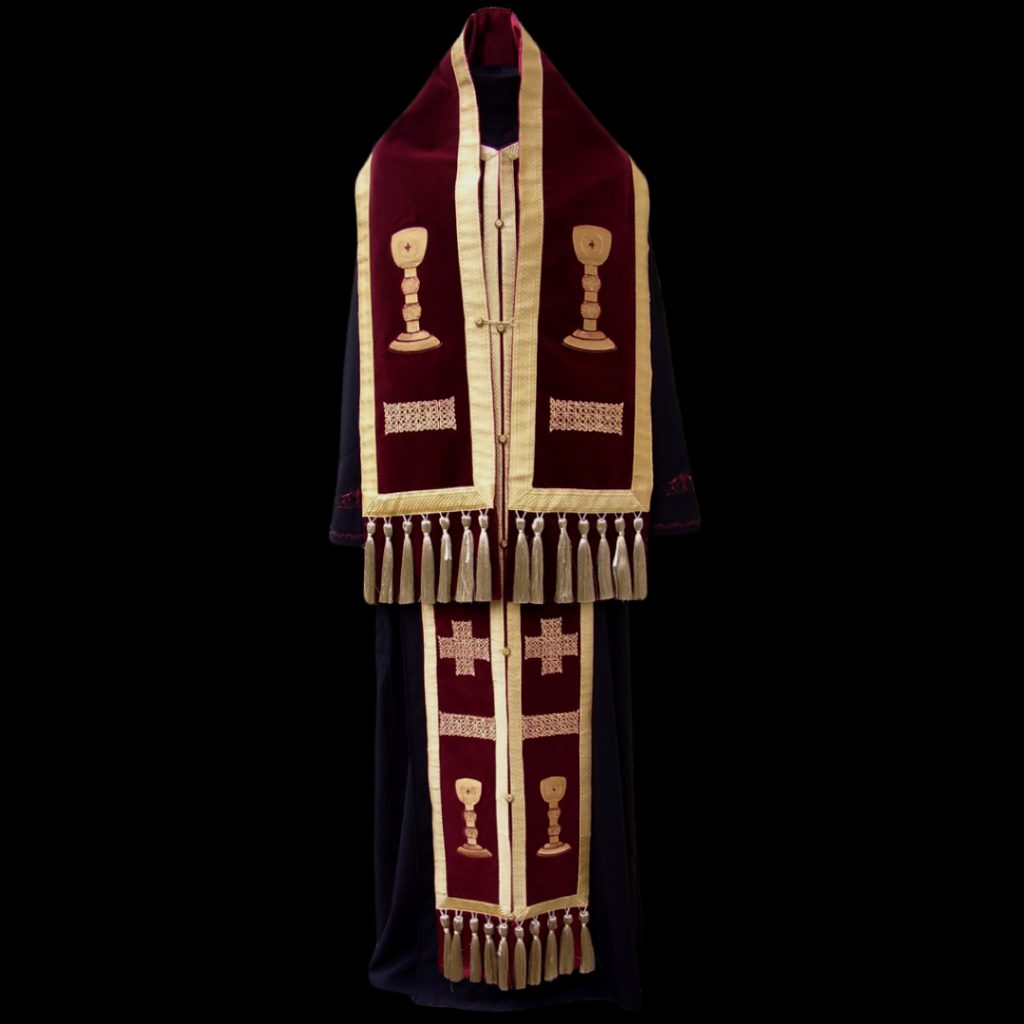
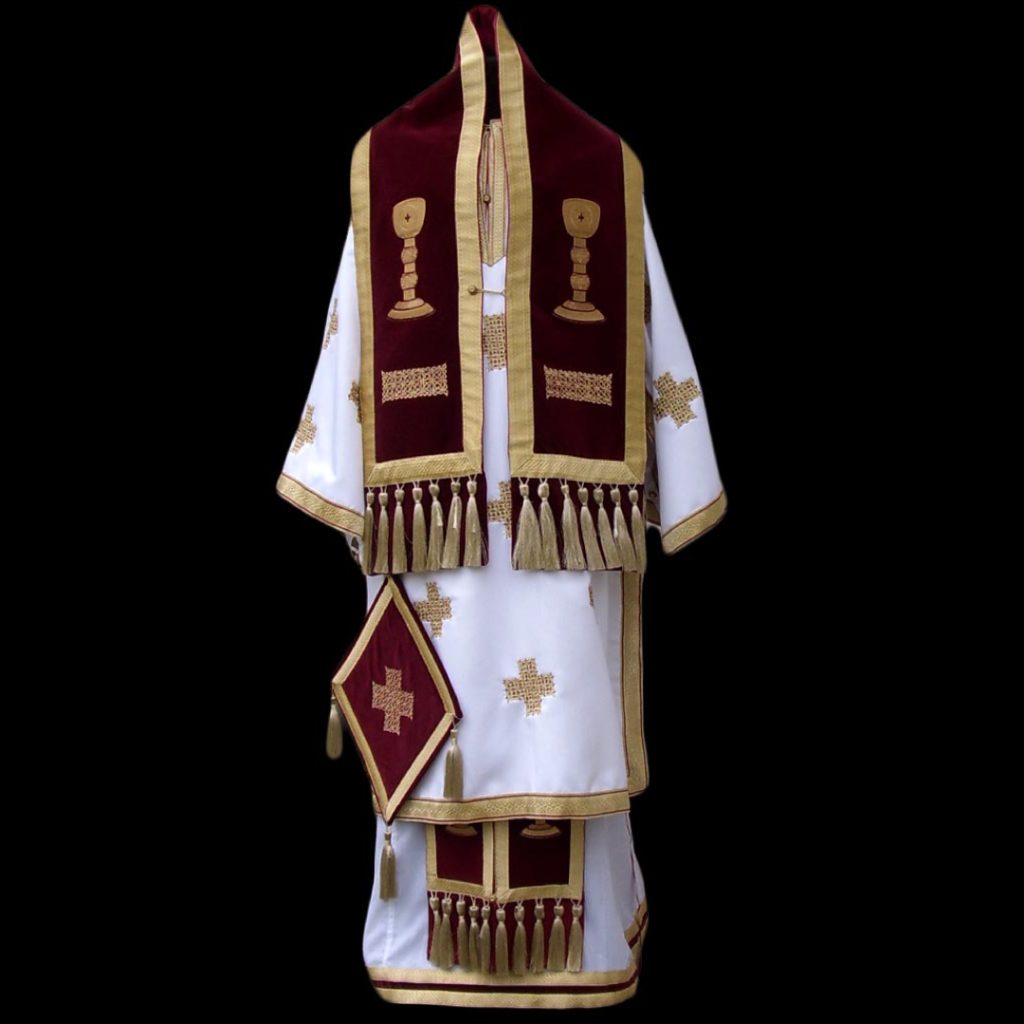
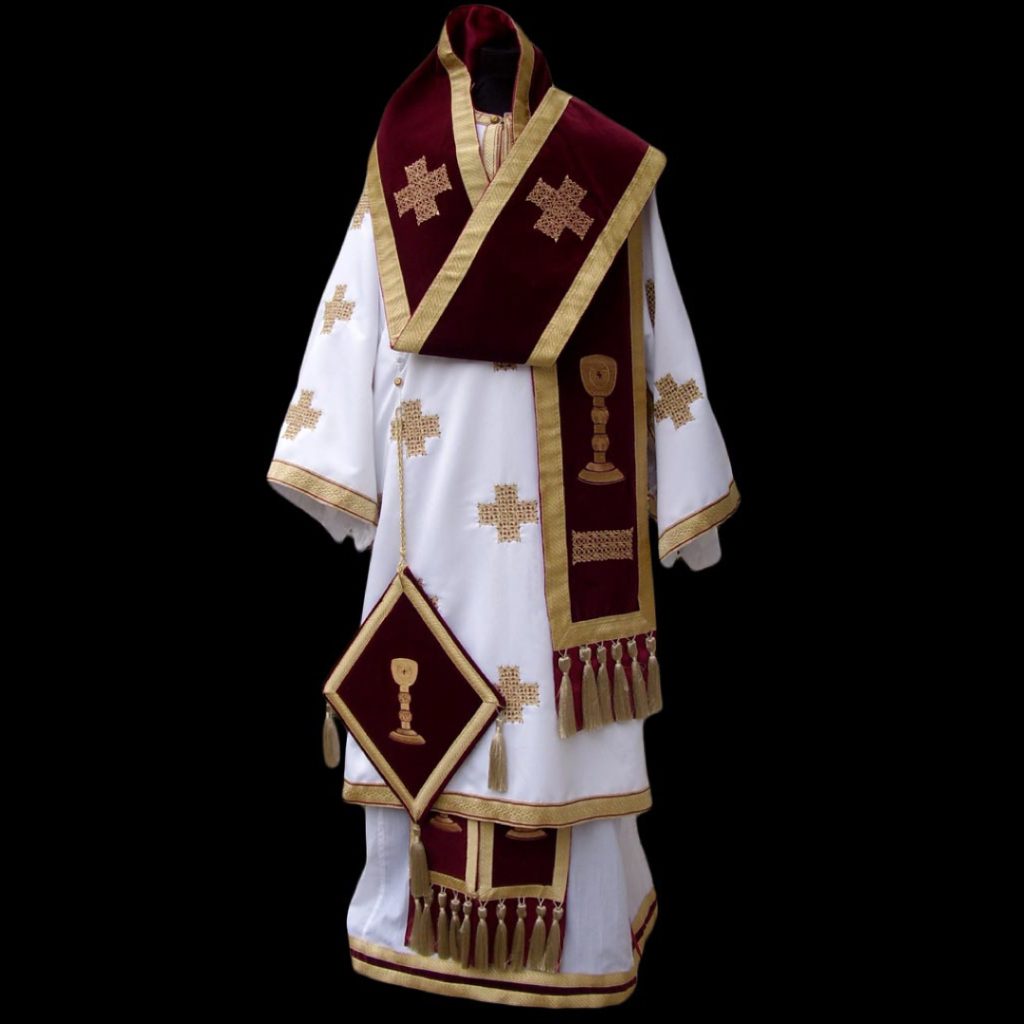
Previous
Next
KSENOFONT (Xenophontos)
The motif for the cross is from Anastasimatarion – Anthologia from the Xenophontos Monastery.
It is the original Anastasimatarion of Chrysaphis the Younger, ‘…with new melodic embellishments and new mellifluous musical signs, as now sung by the chanters in Constantinople’. It is supplemented by an Anthologia, which includes all of Chrysaphis’ compositions up to the time of writing in 1671.
It contains seven beautiful polychrome miniatures. One of them is used for composition of this Xenophontos cross.It uses gold metallic threads , and viscose/rayon threads in red and blue colors.
Woven ribbons are used for this model (they can also be embroidered by choice). It is possible to choose a cross or chalice for the small omophorion, the dorsal part of the sakkos, and the end of the epitrachilion.
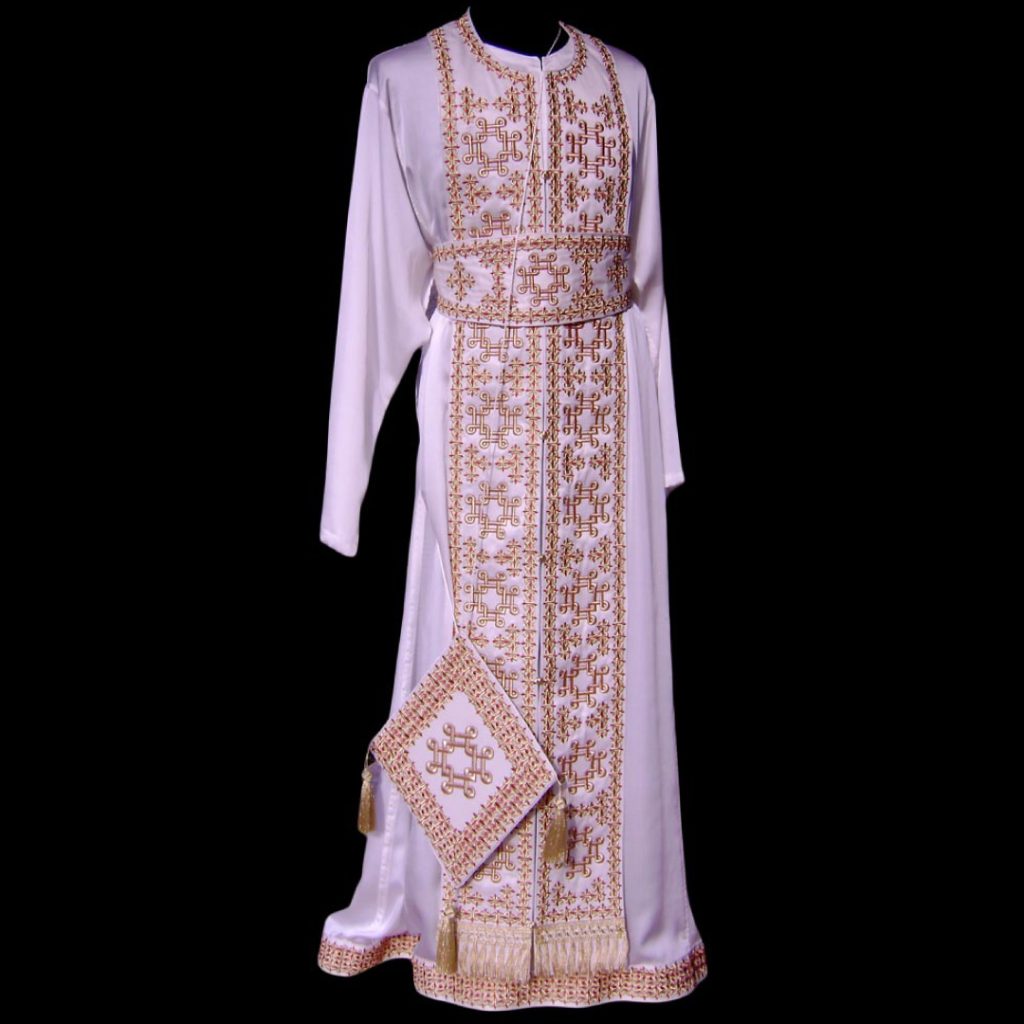
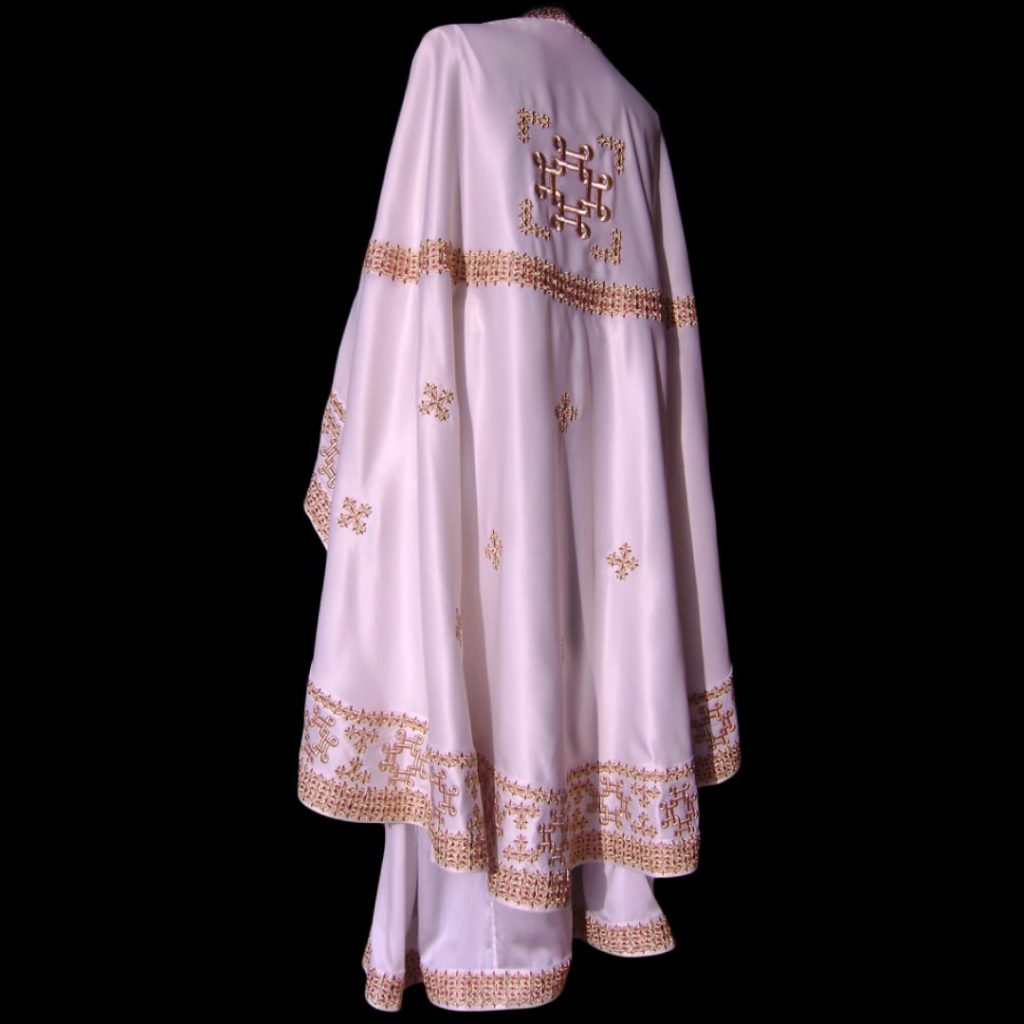
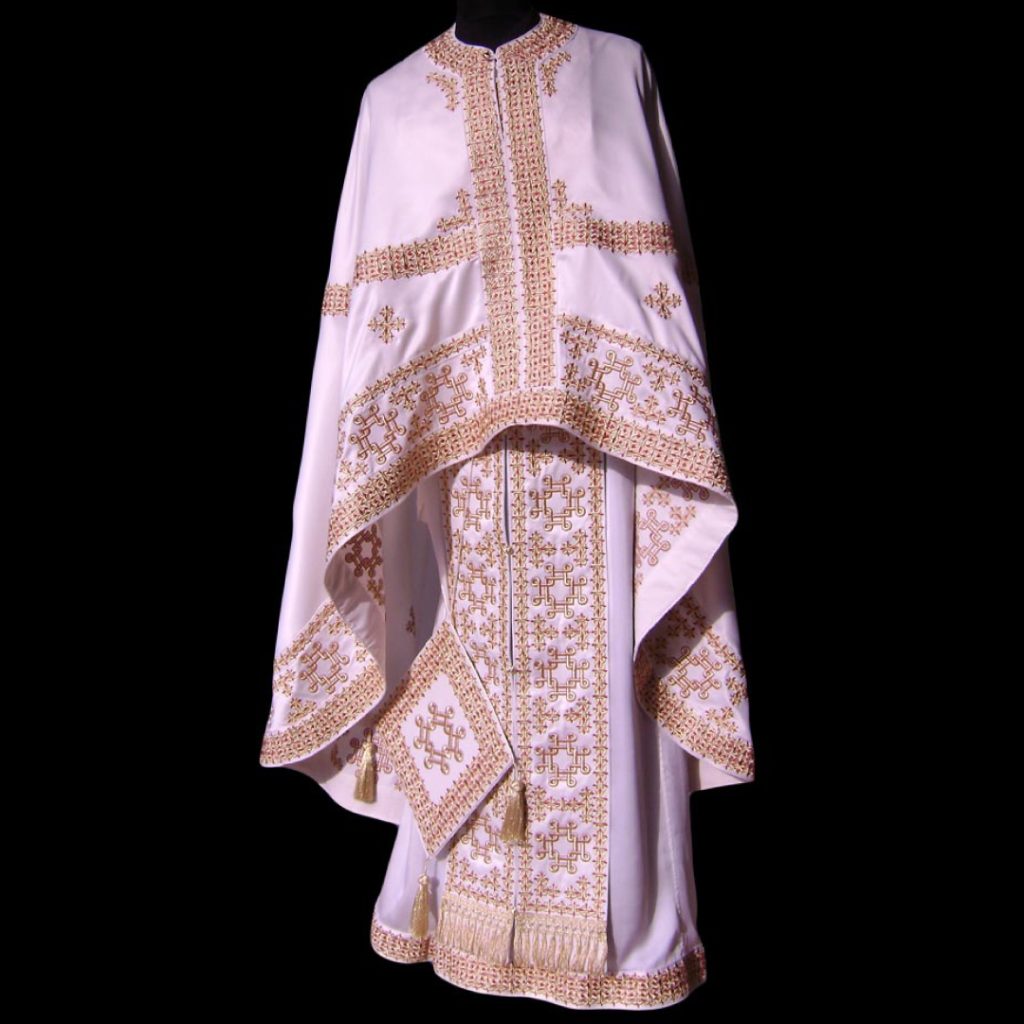
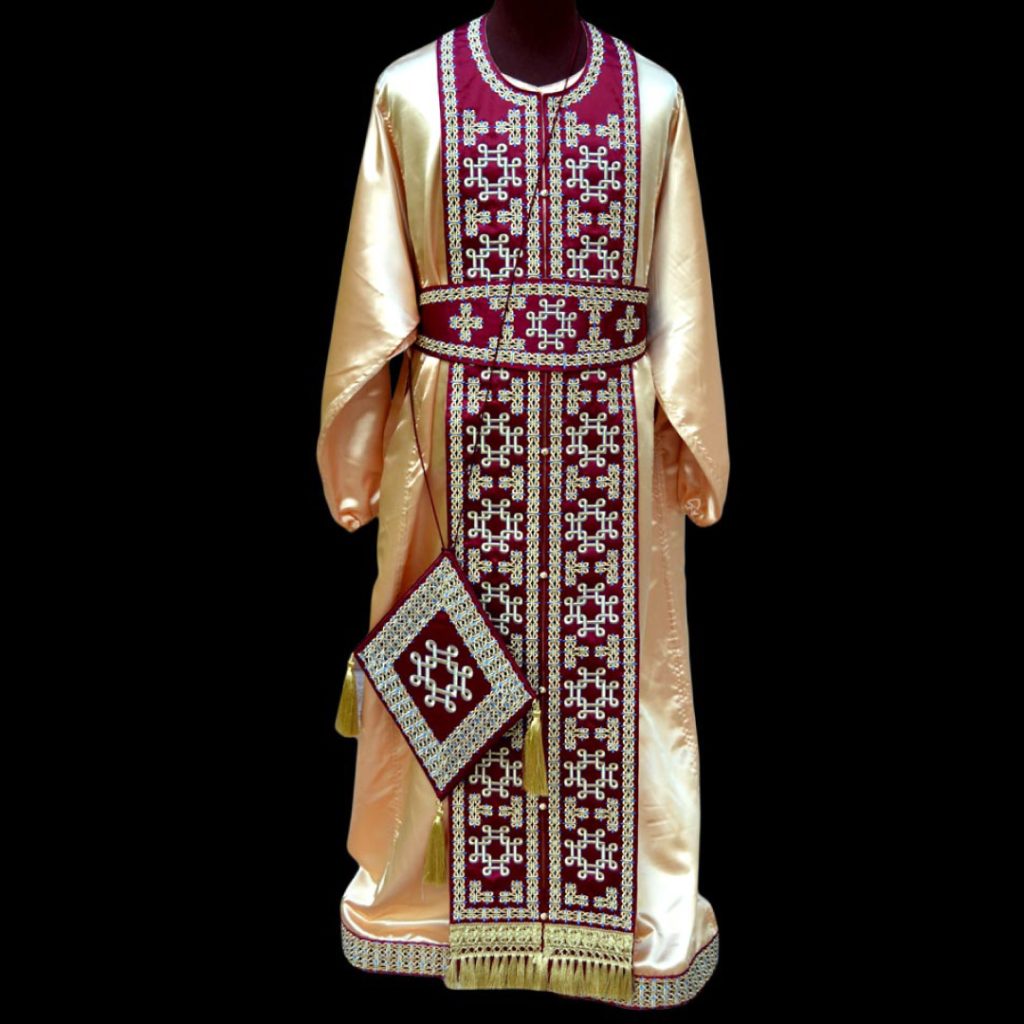
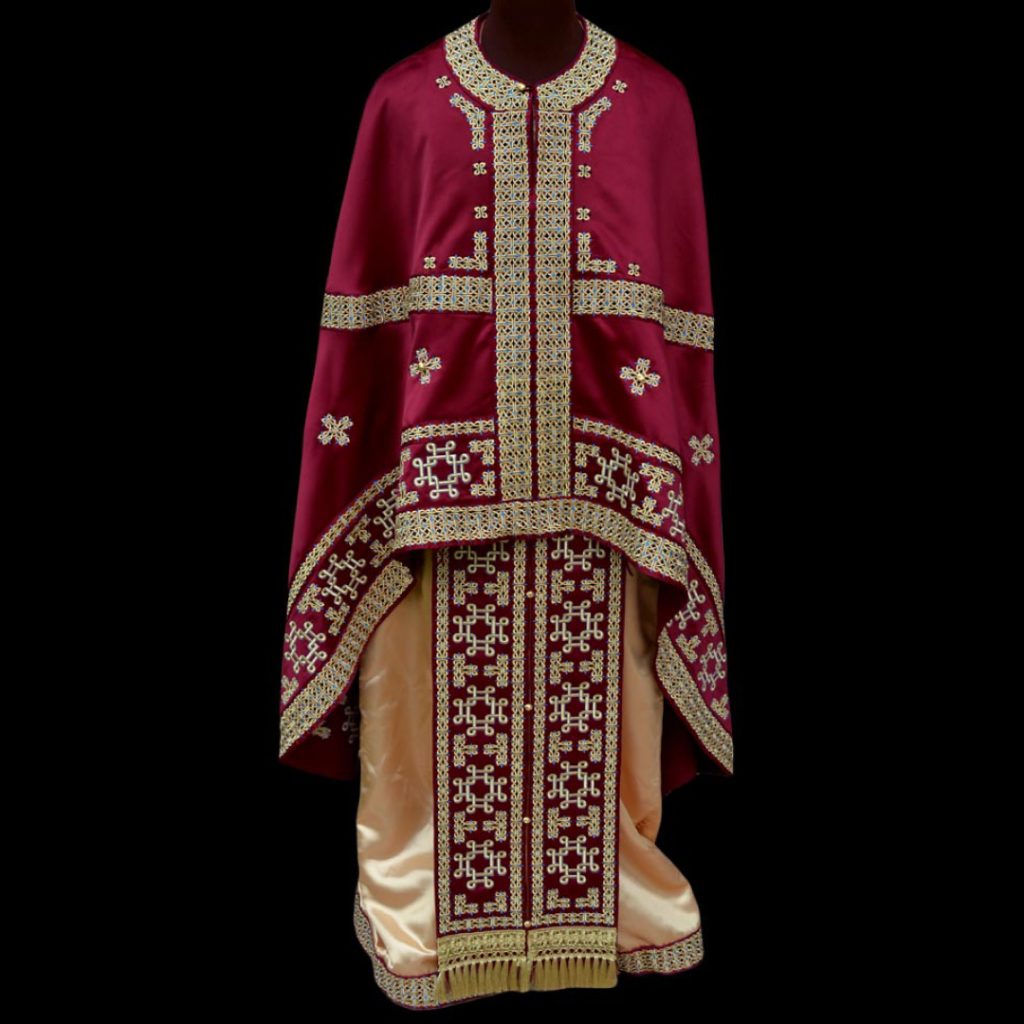
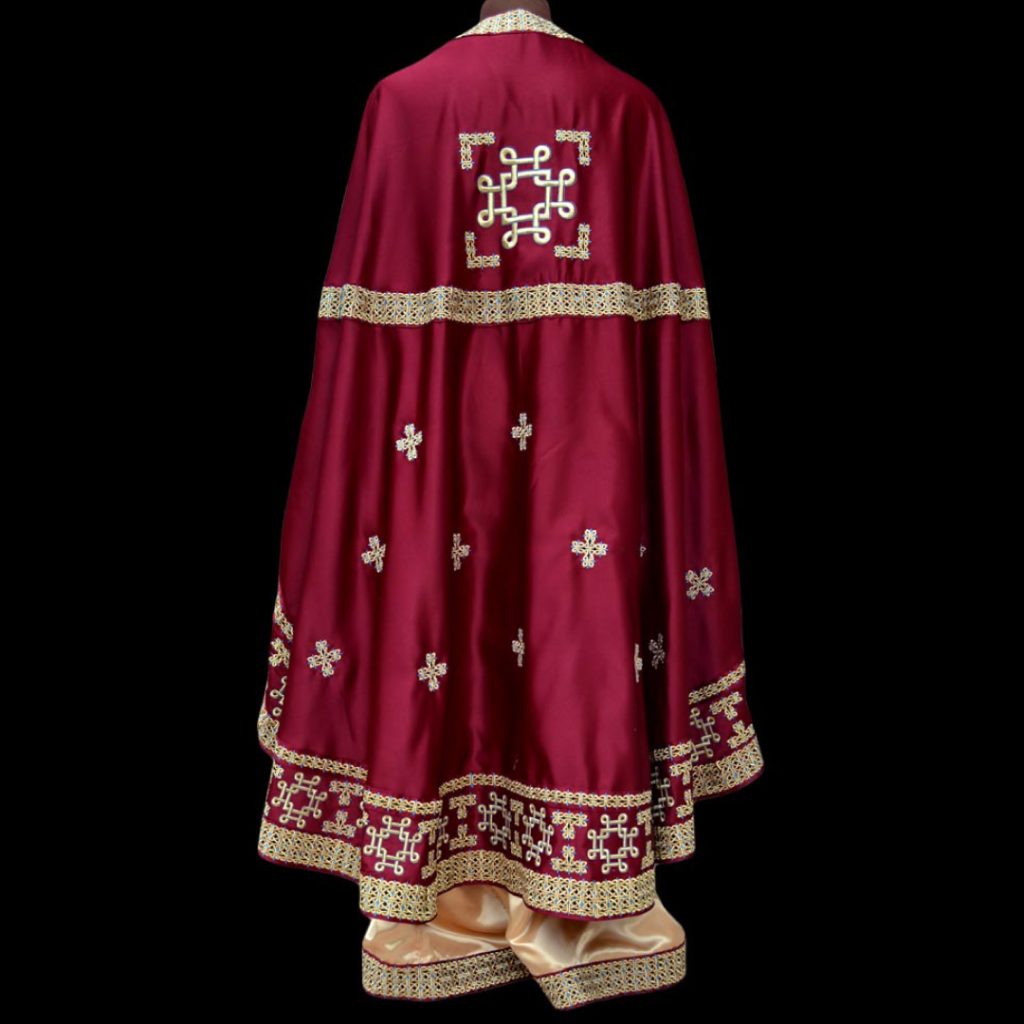
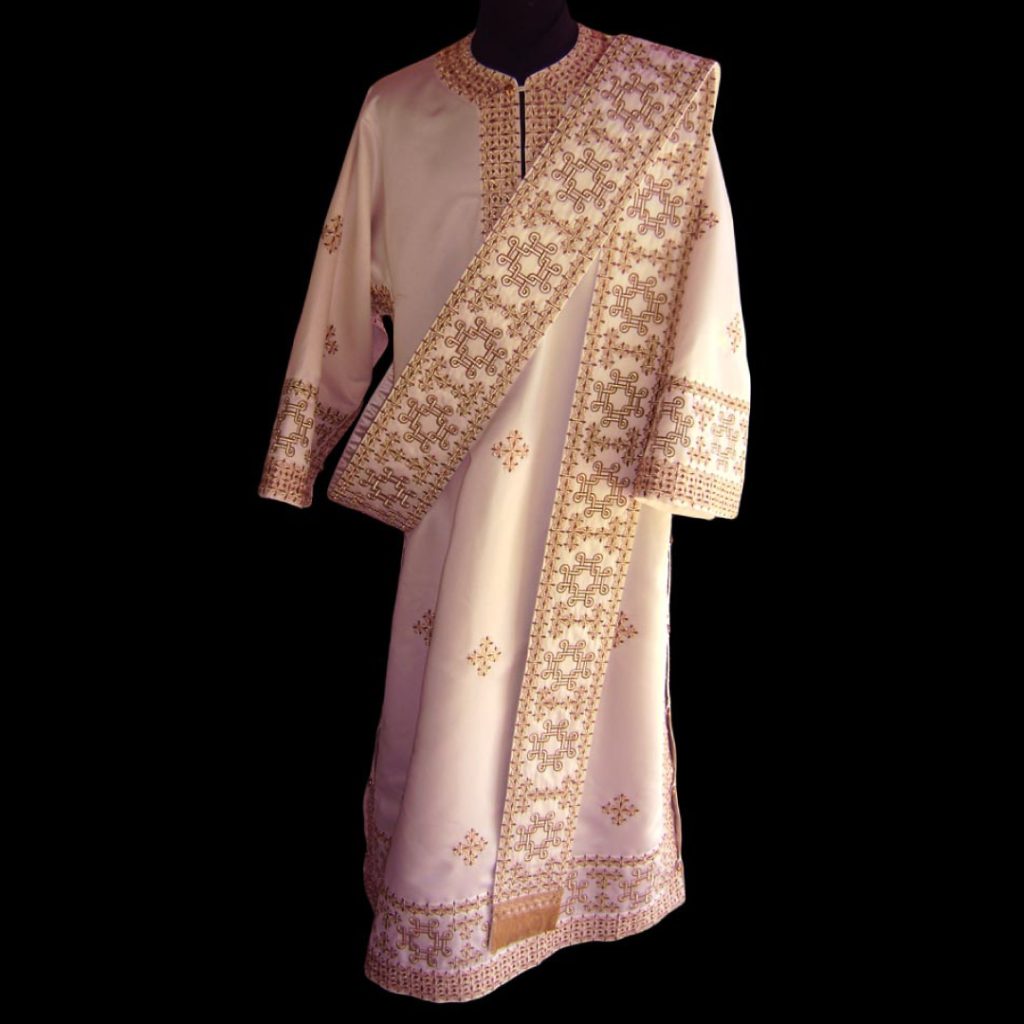
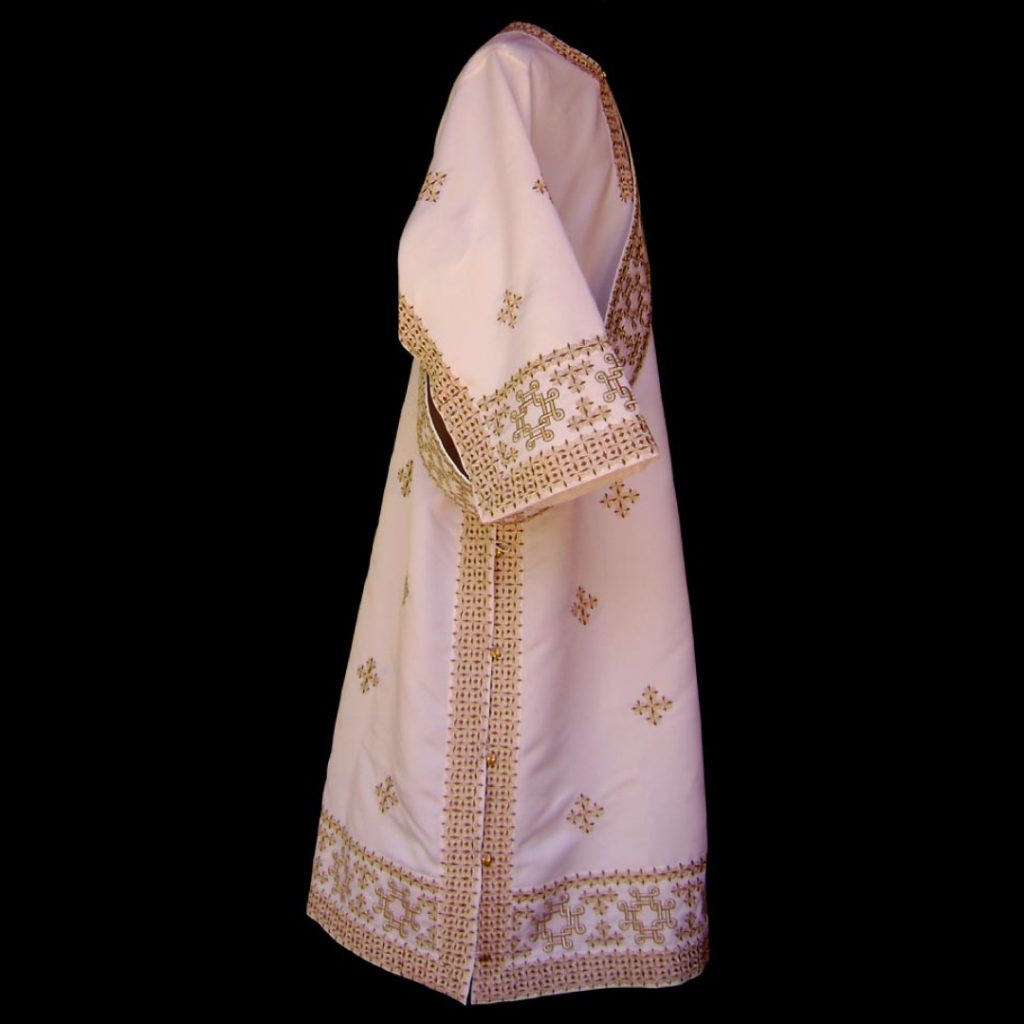
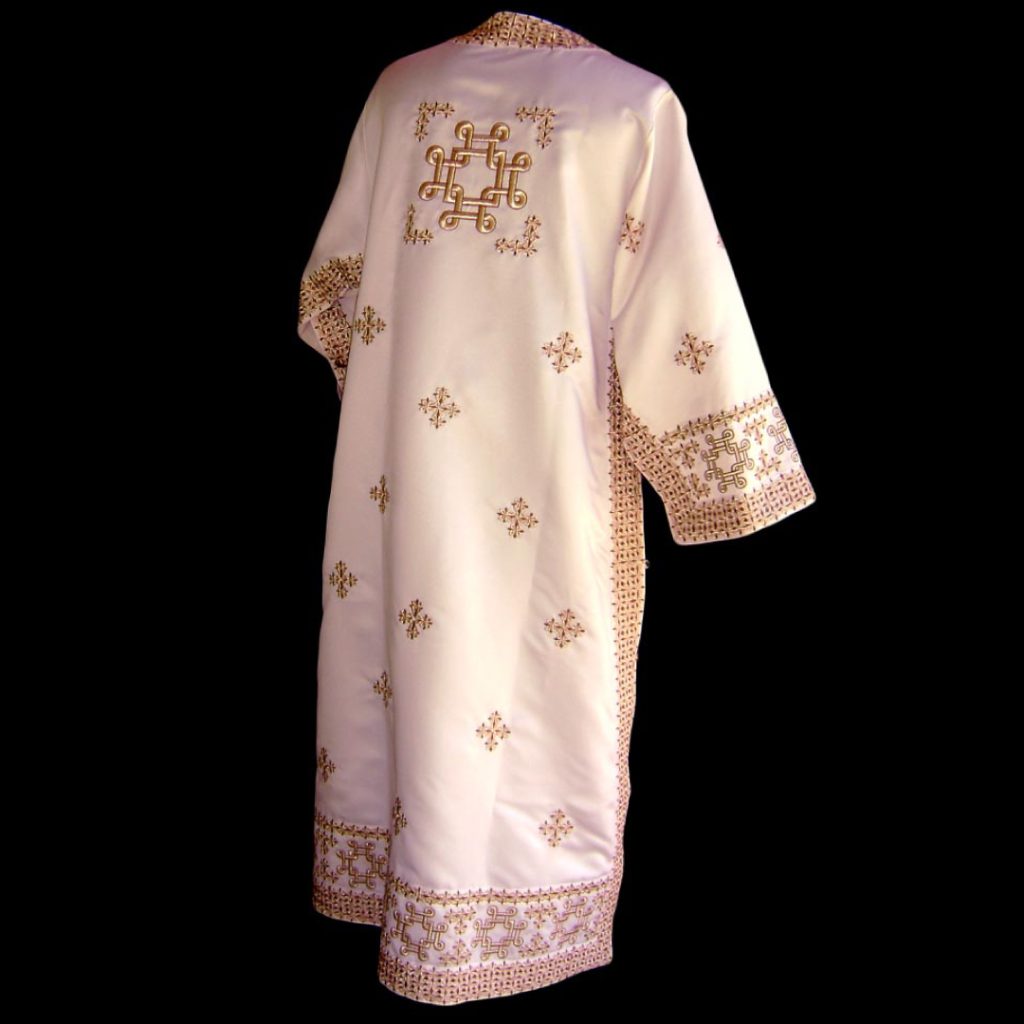
Previous
Next
VELJUSA
Having no beginning and no end, being perpetual in its pattern, the cross on this vestments symbolizes eternity and the Heavenly Kingdom.
The cross was first displayed in the church “The Most Holy Mother of God Eleusa,” in Veljusa Monastery, near Strumica, and dates back to 1085 AD, the period when the church was built. The cross is not only painted on the facade of the church, but also is incorporated in the structure of the church itself.
In recent decades, the Veljusa Cross has become a recognizable feature of the Macedonian Orthodox Church.
The embroidery is two-colored, as the borderlines and details are from the Ksenofont model.
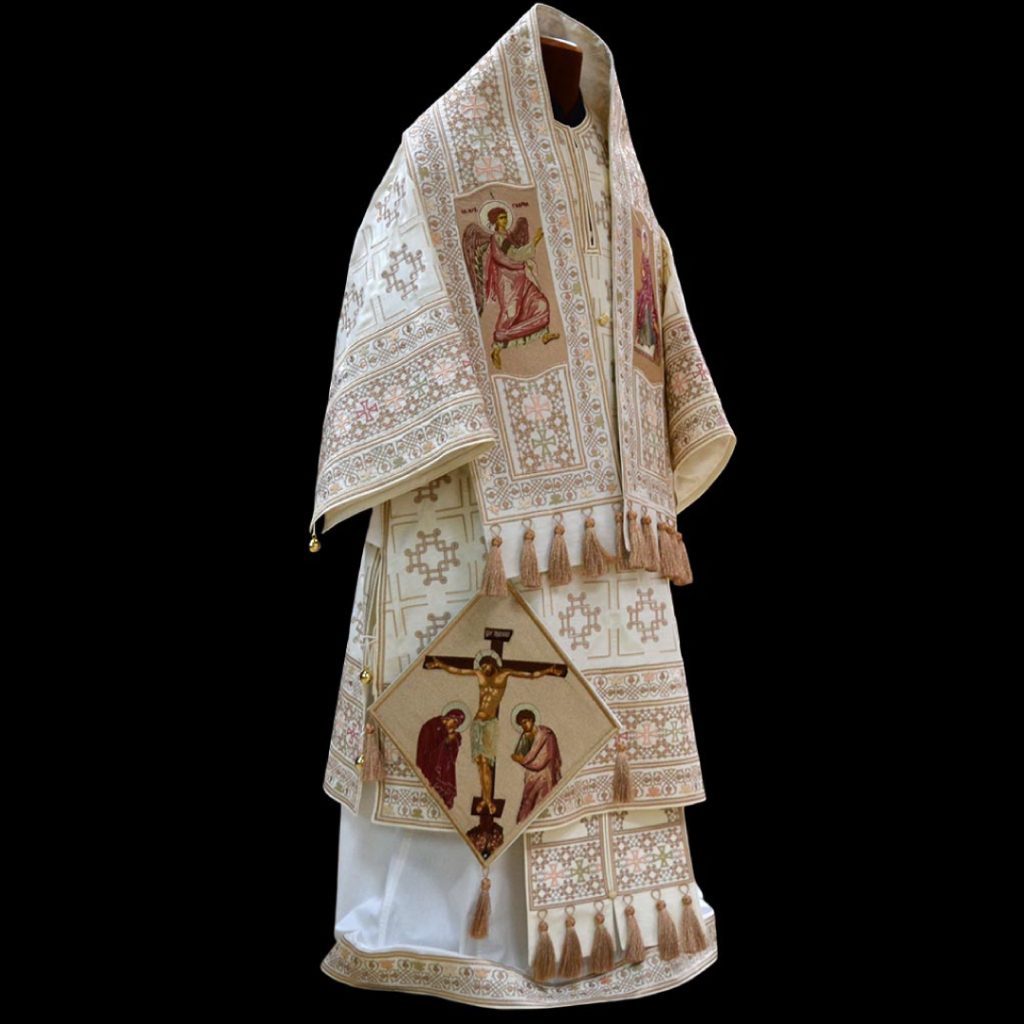
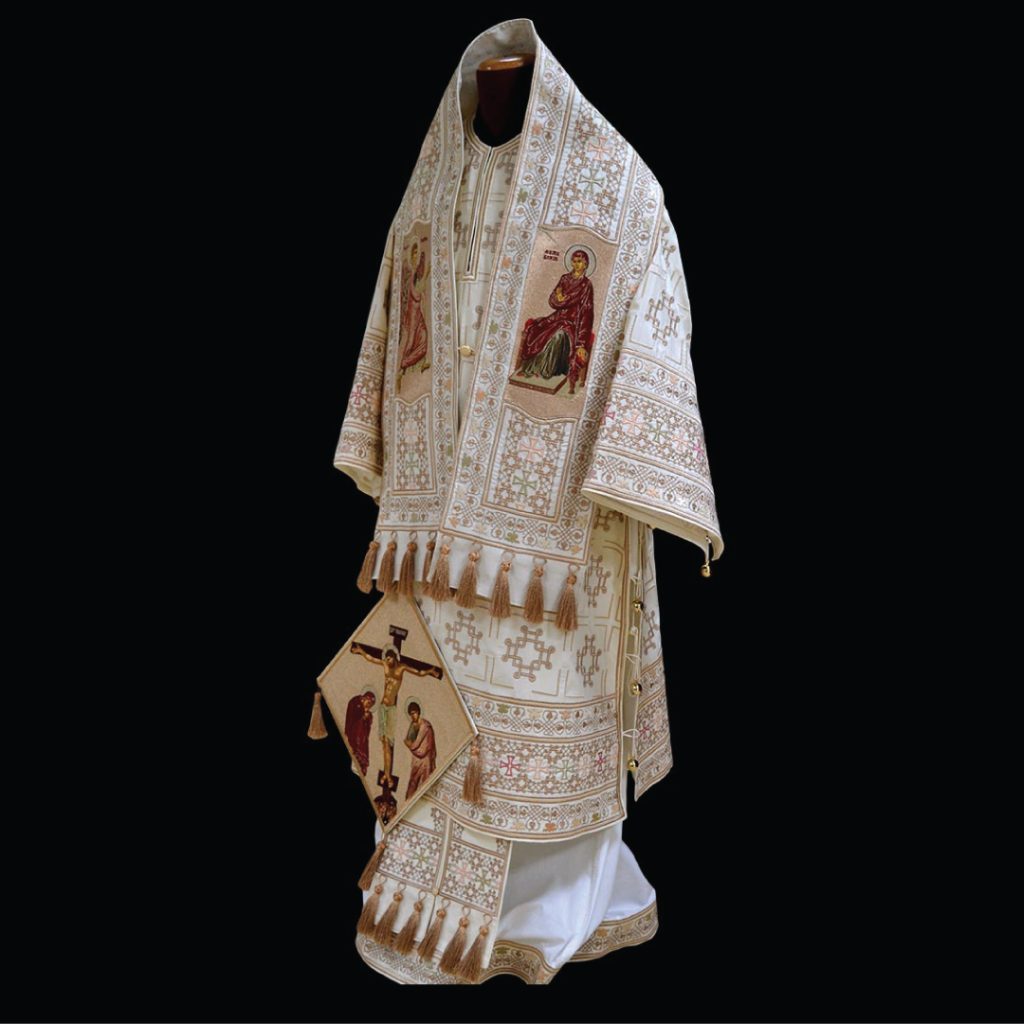
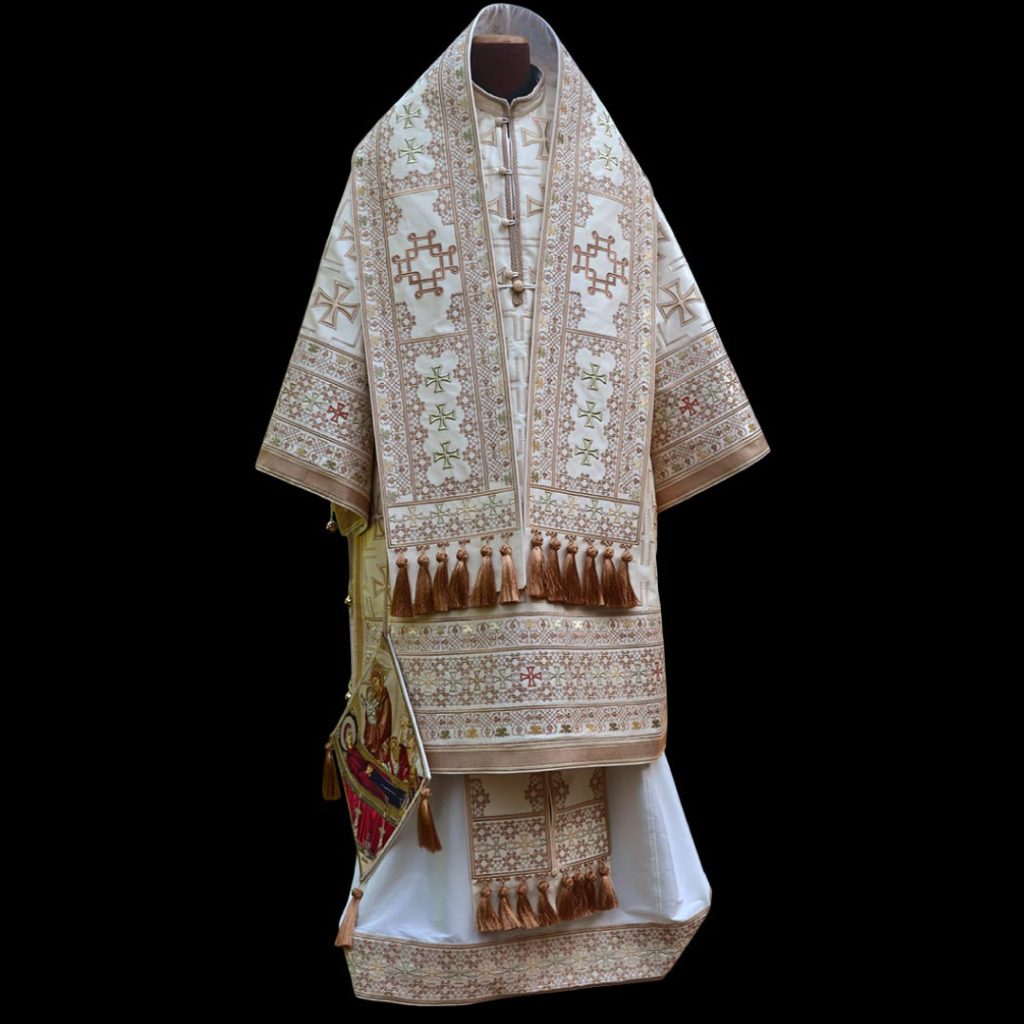
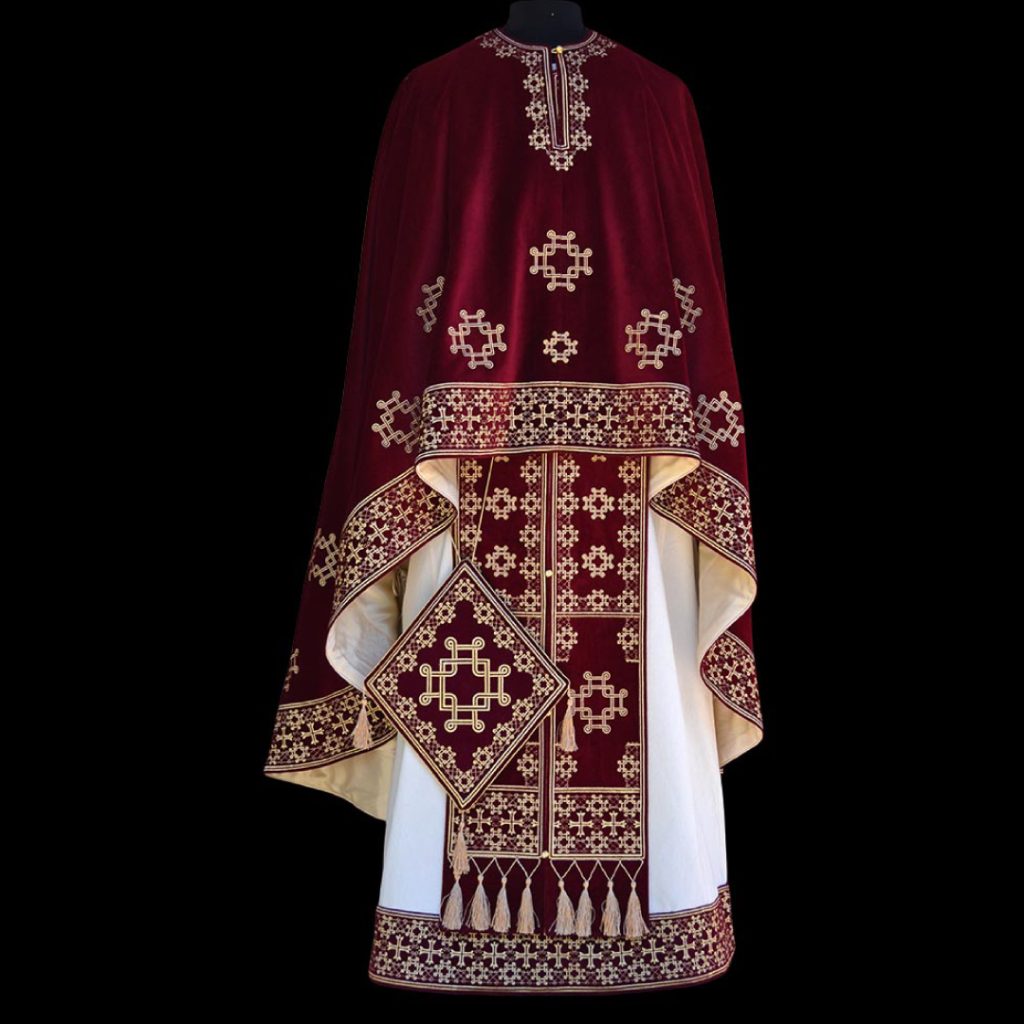
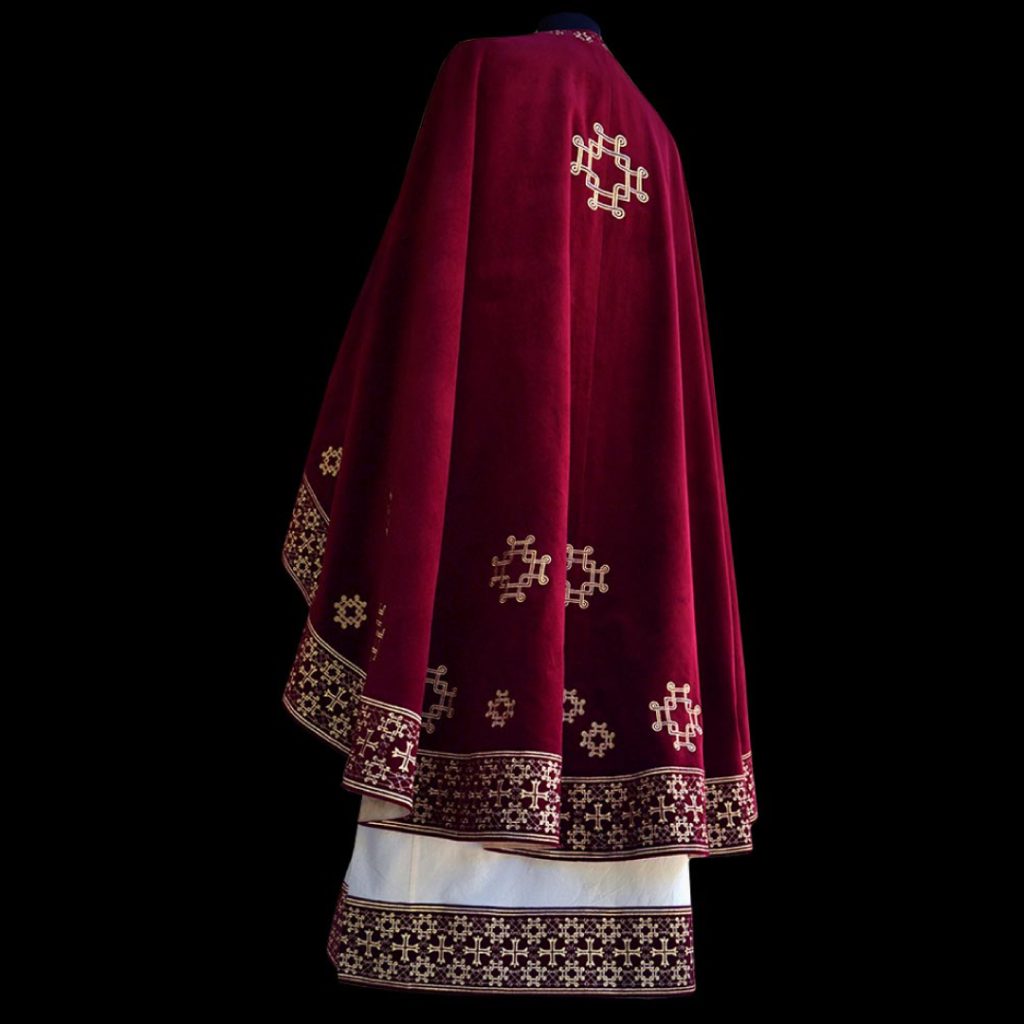
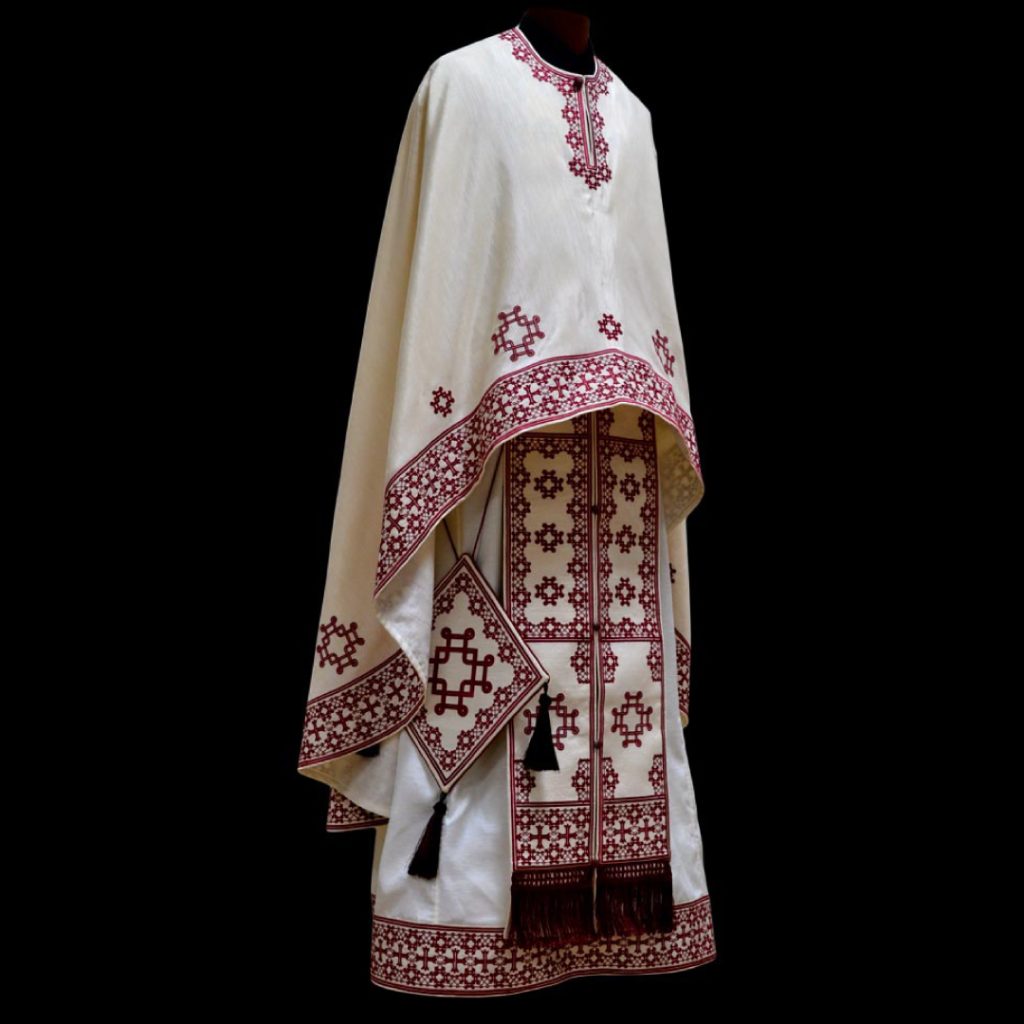
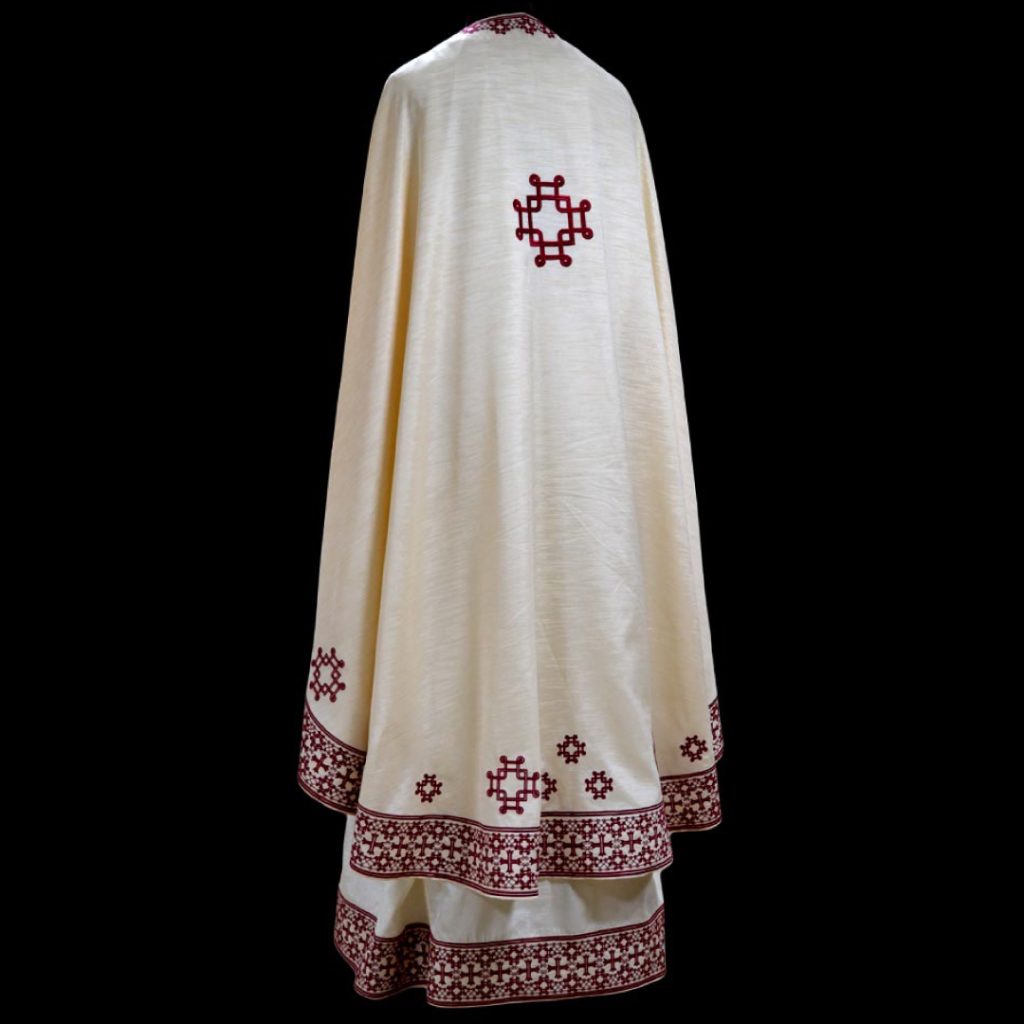
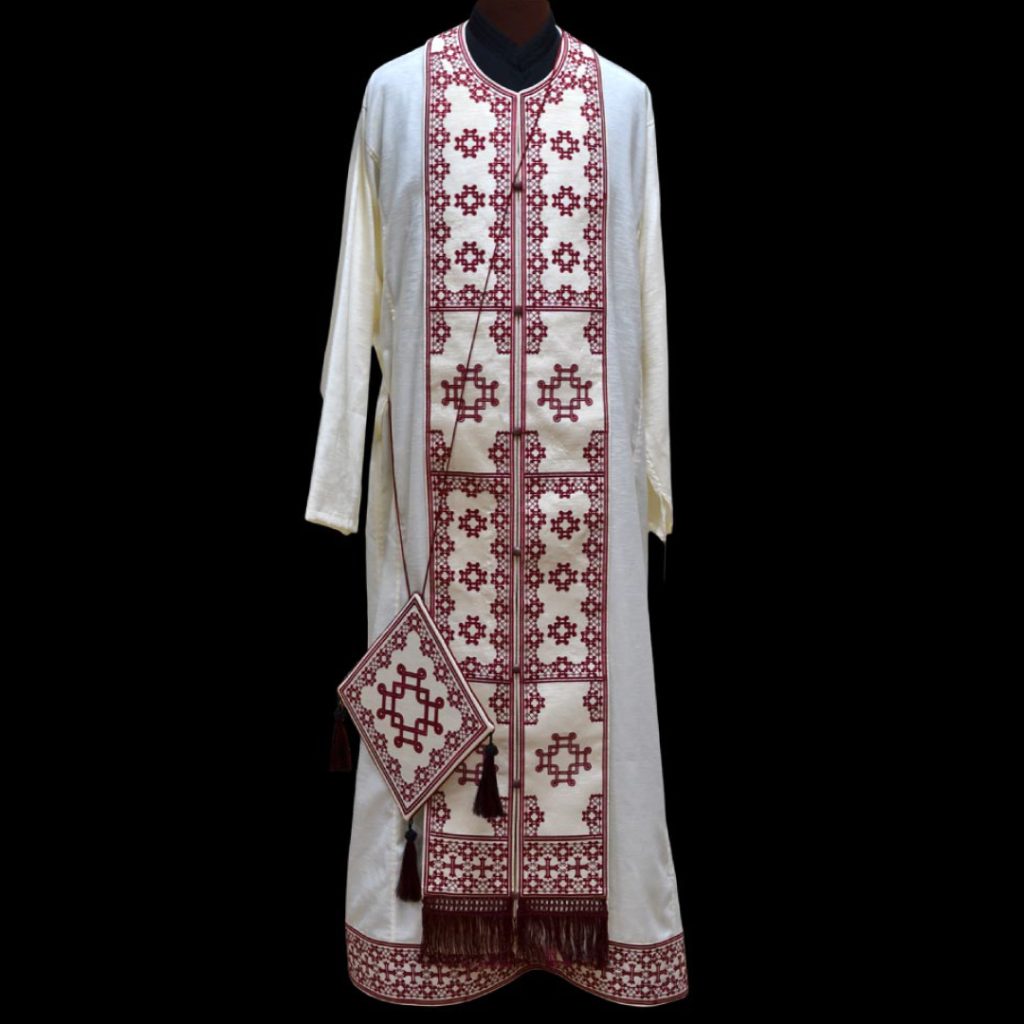
Previous
Next
ELEUSA
The model of vestments in which the Veljusa crosses are intertwined, leaving a central circular space in which the cross from Vodocha or Matka is inserted, respectively. The whole design was created gradually, first for covers, then for bishops and priests vestments, in cooperation with hieromonks from several monasteries.
The embroidery of the bishop’s vestments is in one basic and four additional color combinations.
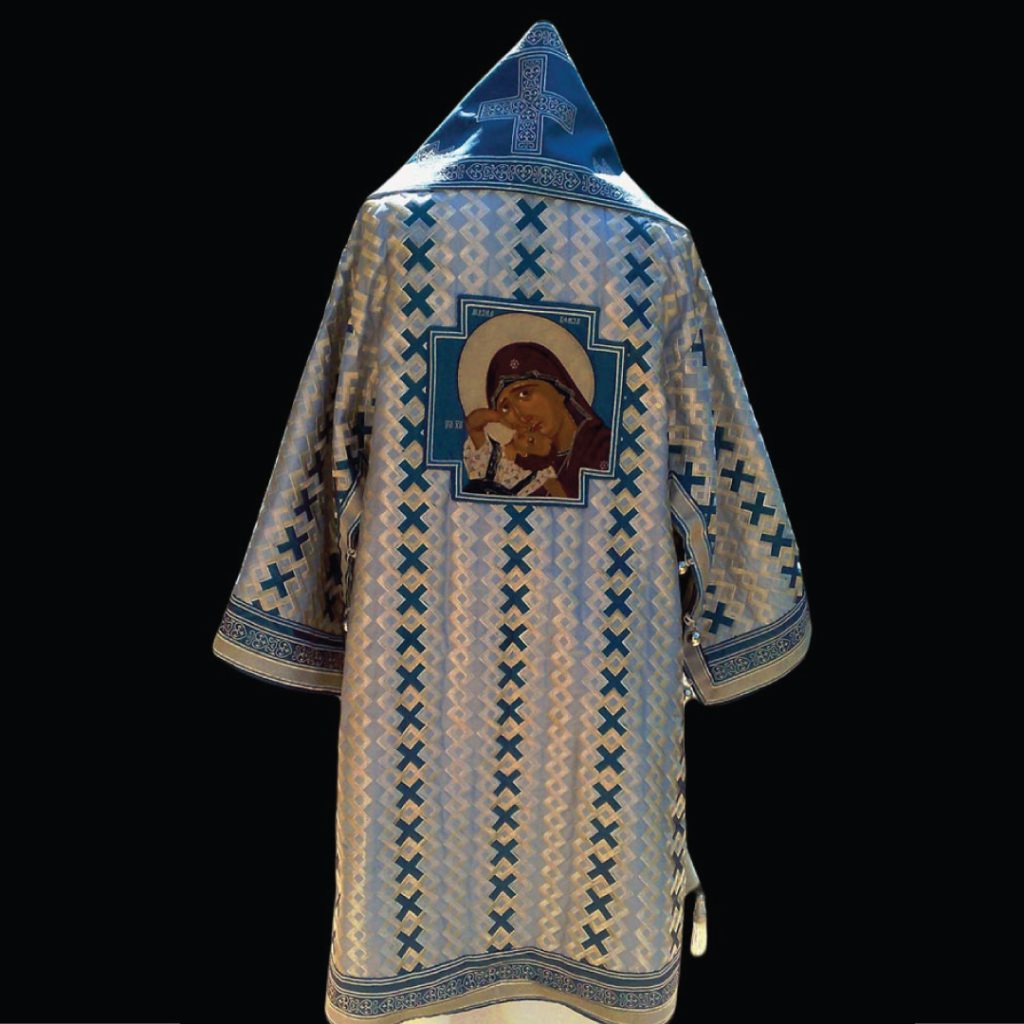
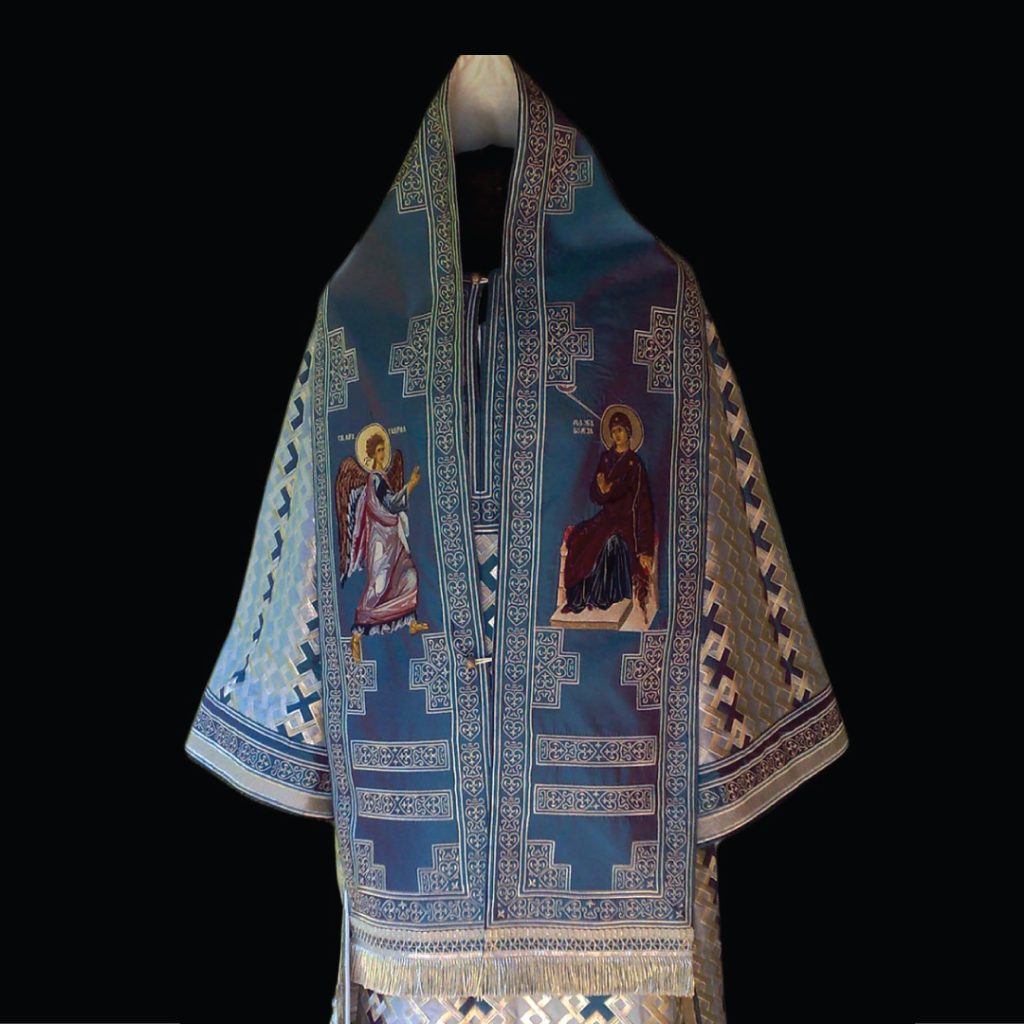
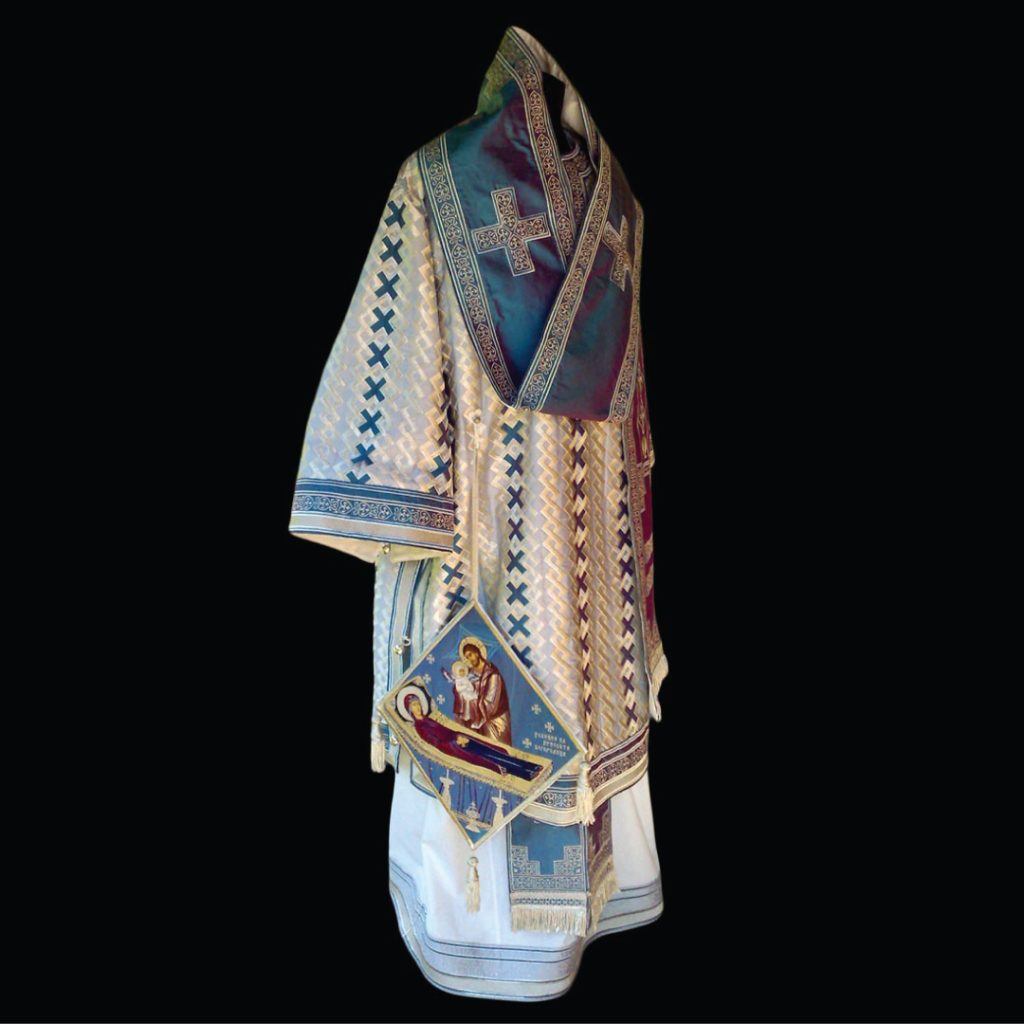
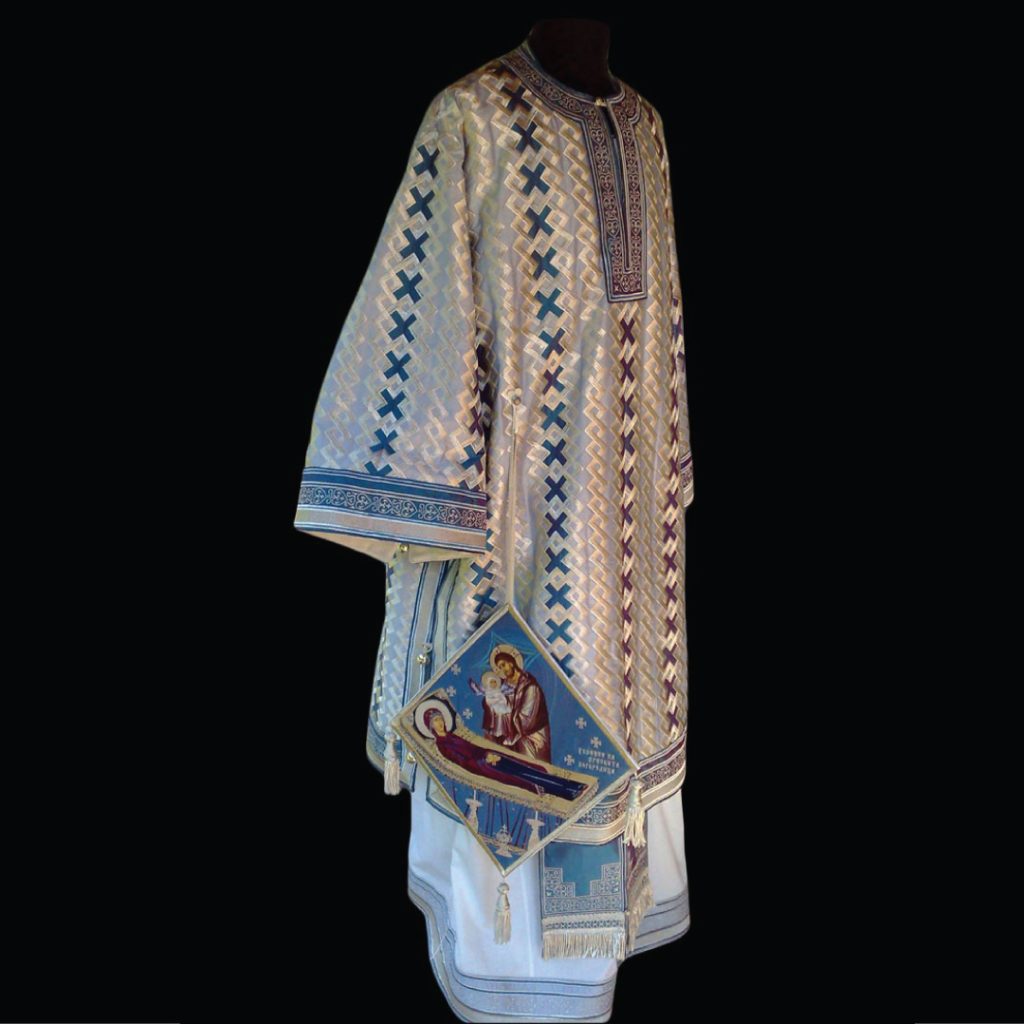
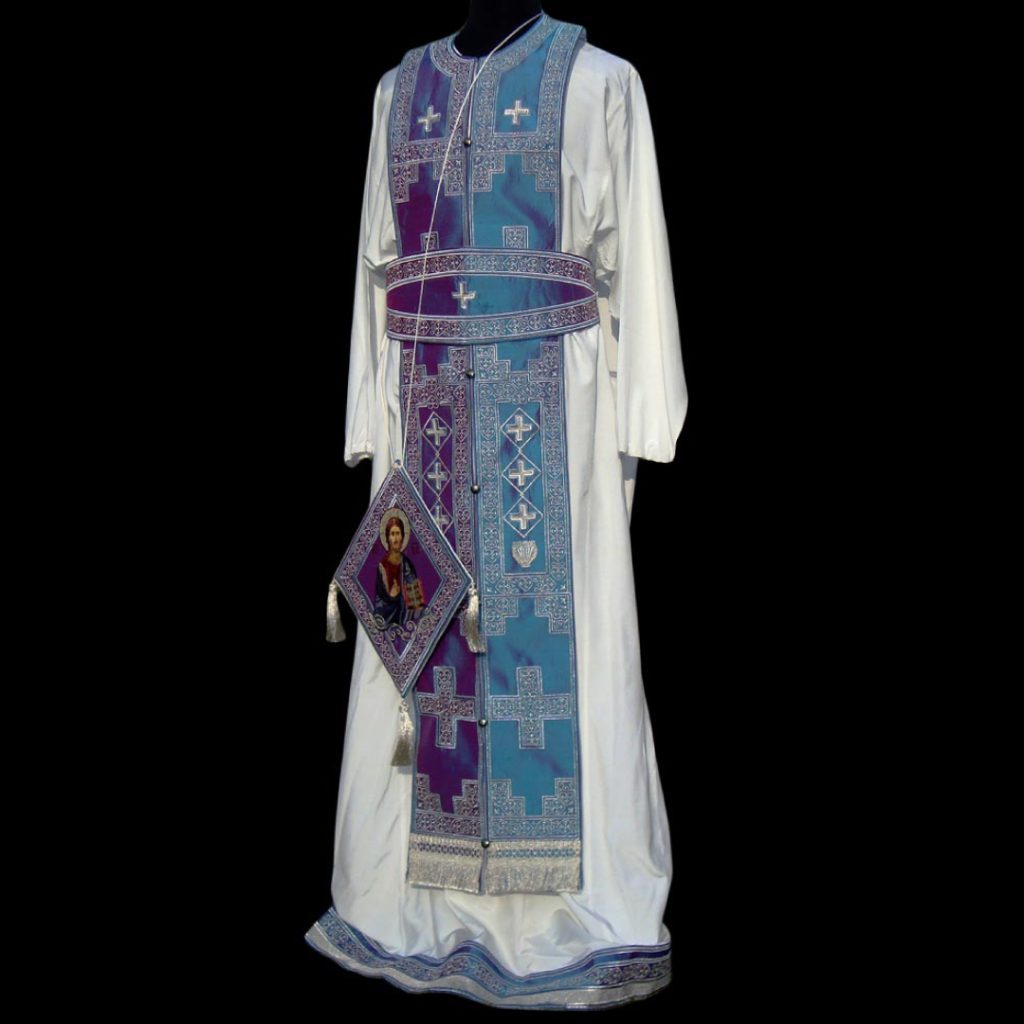
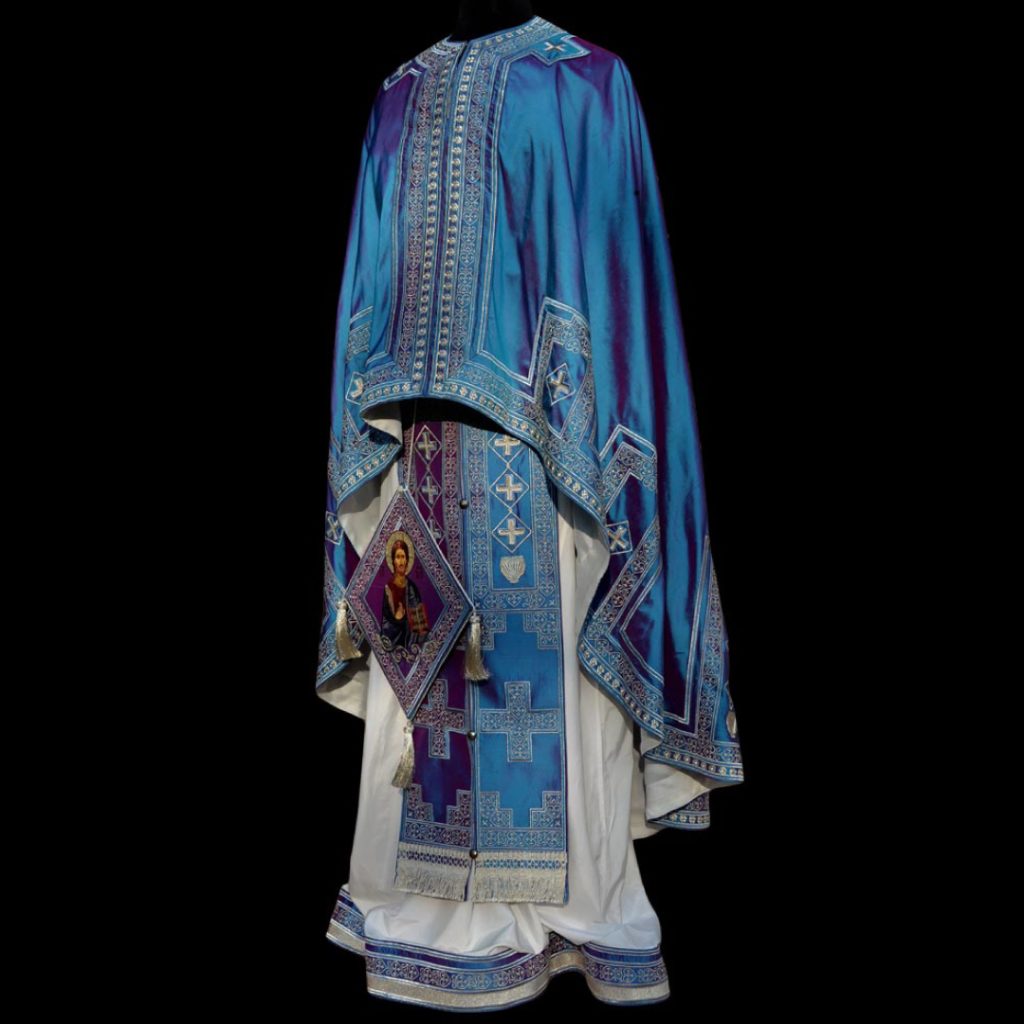
Previous
Next
BOGORODICHNI
The design for these vestments is from the Matka model, following the example of the Macedonian costume. However, the blue color is used as a basis, because of the selection of the icons of the Most Holy Theotokos, that are part of this model – which gave it a new and different look.
The sakkos of the bishop’s vestments is made of two shades of raw silk, sewn together with silver colored embroidery.
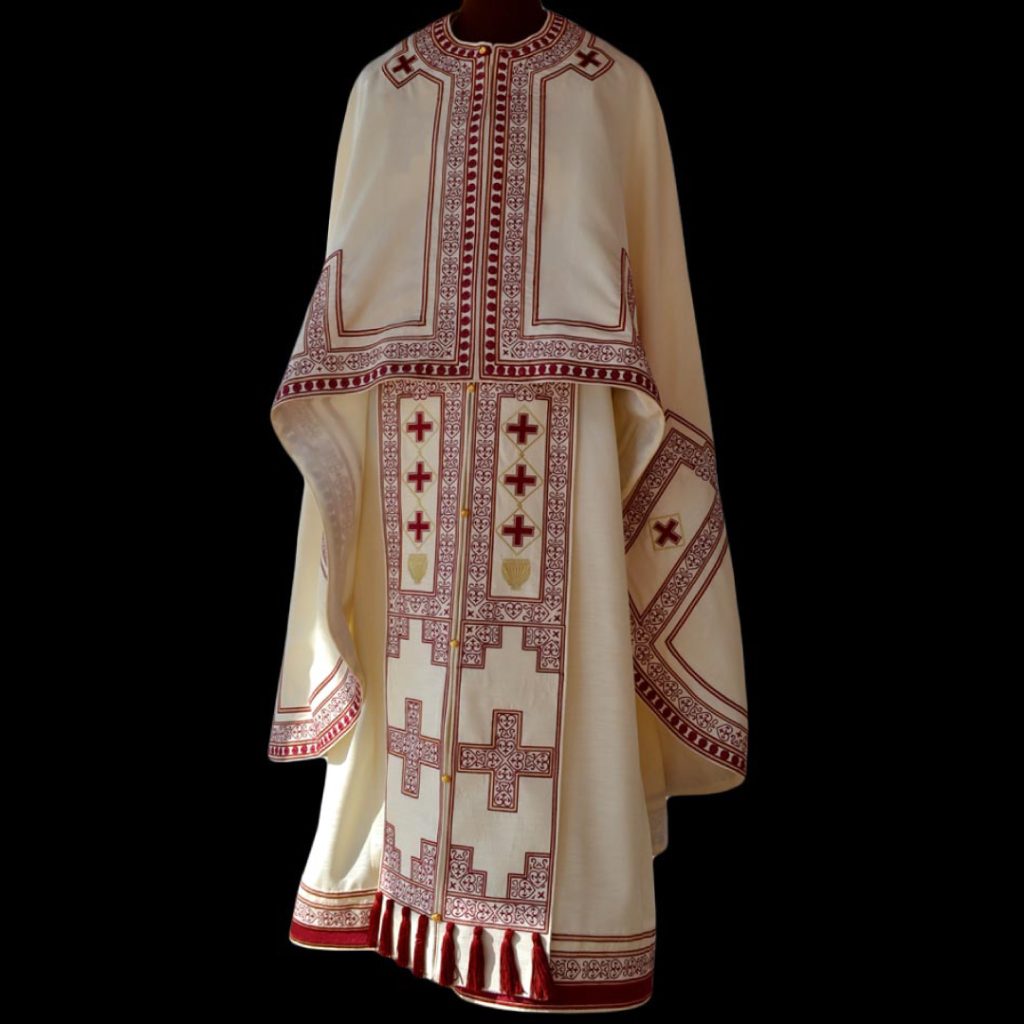
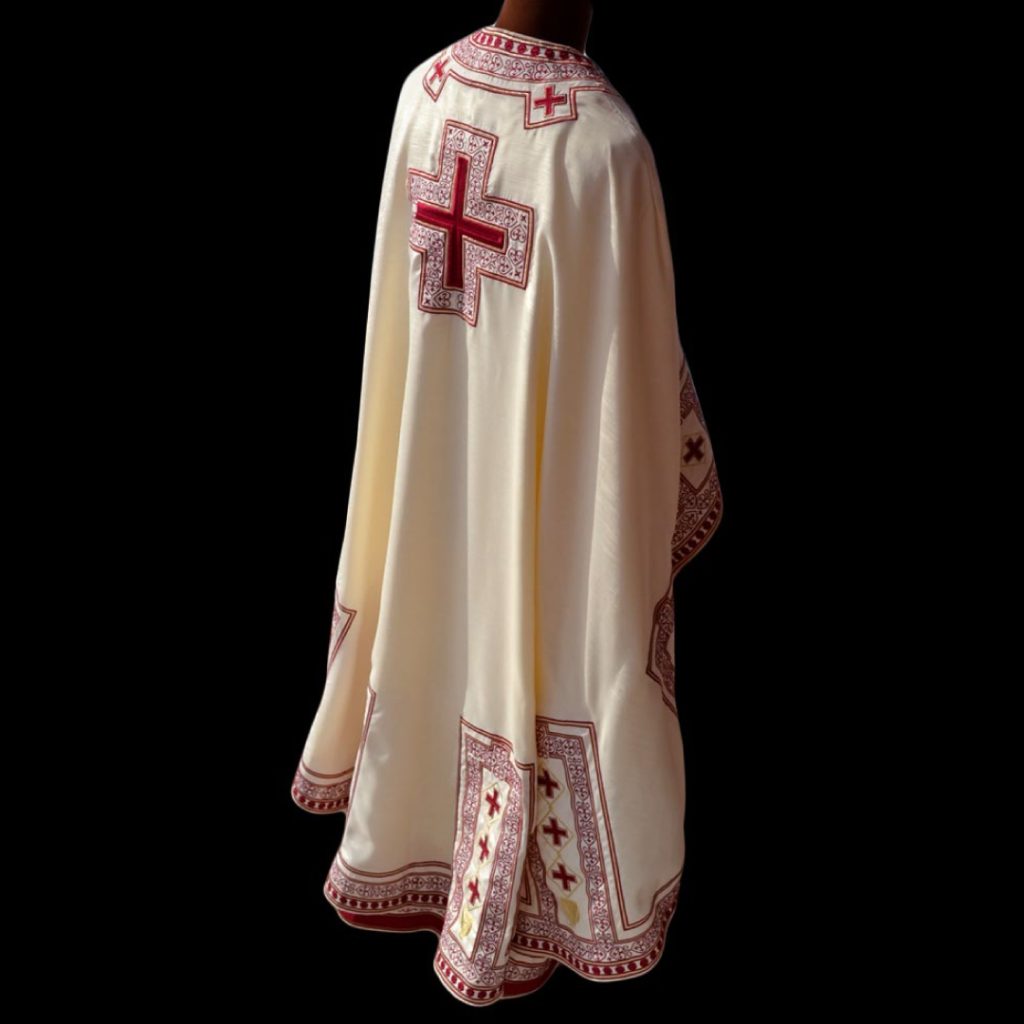
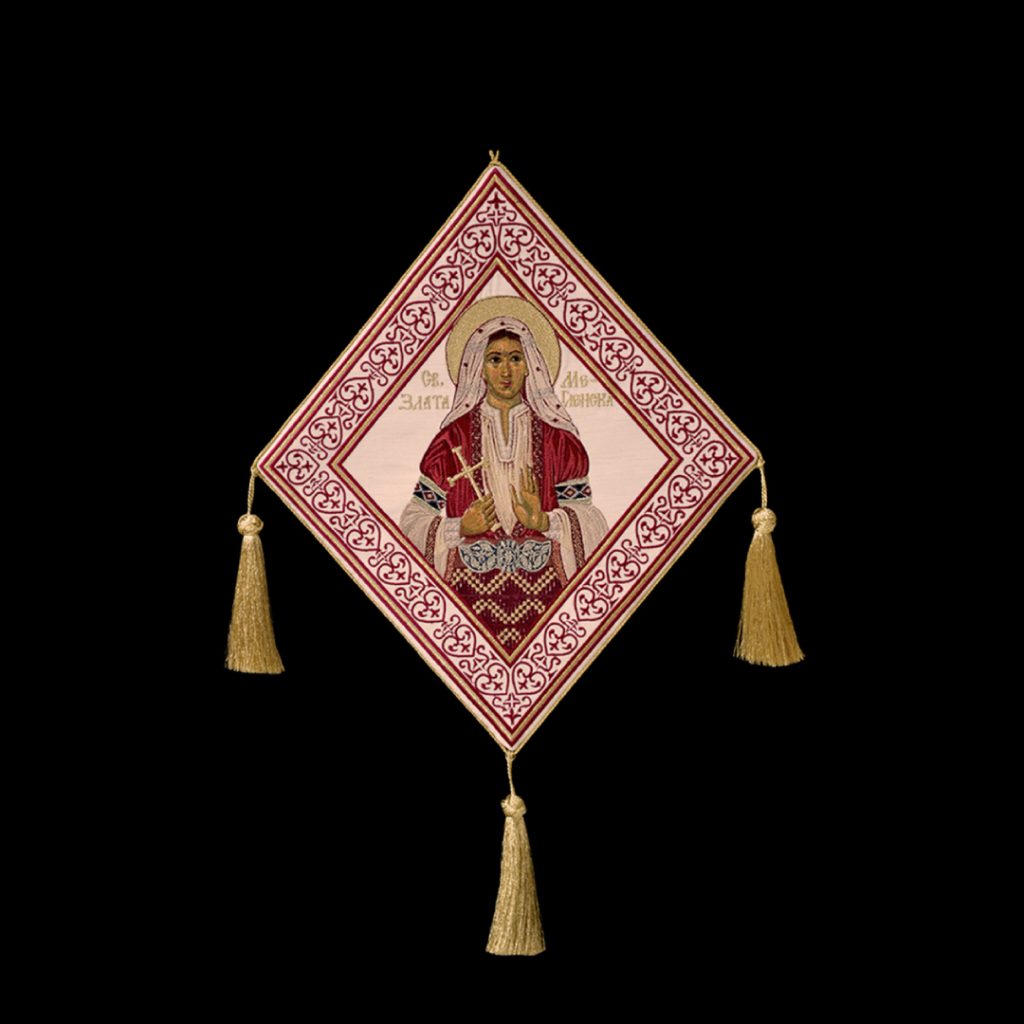
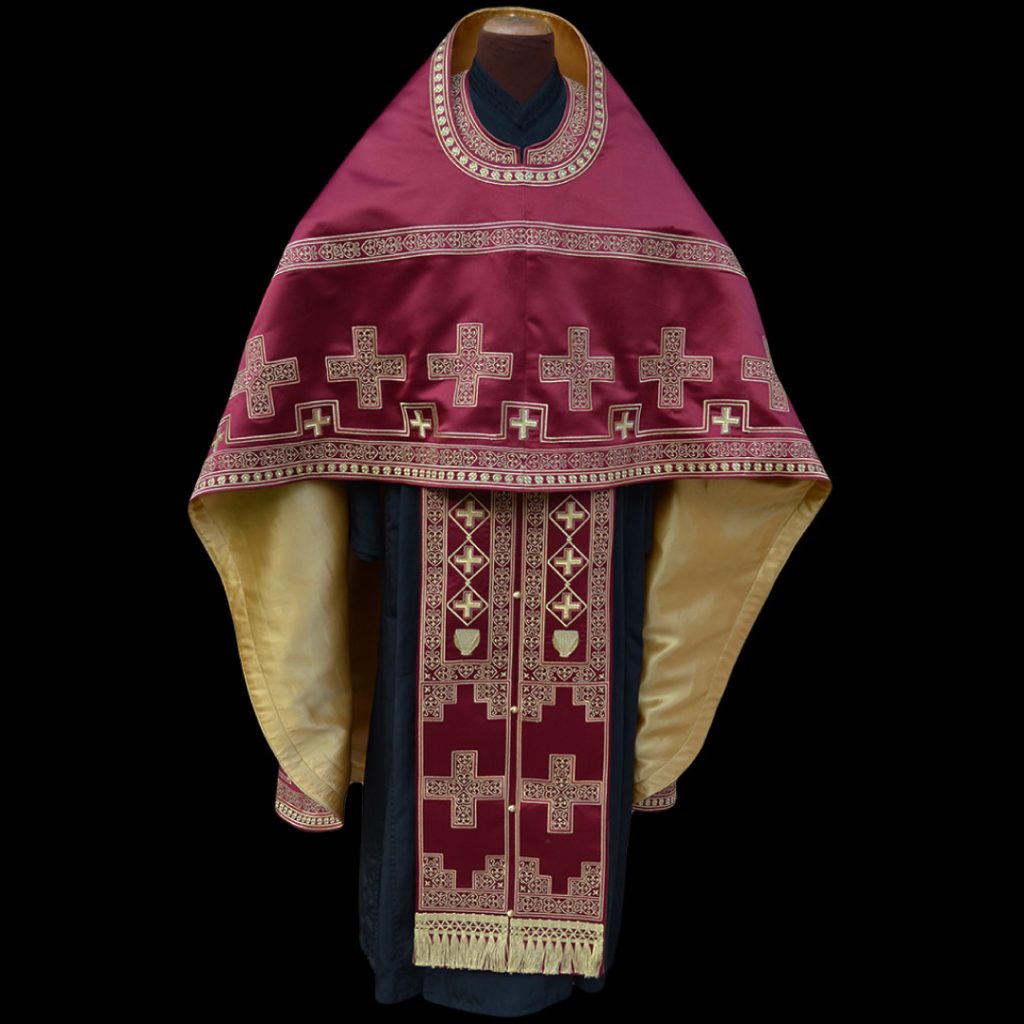
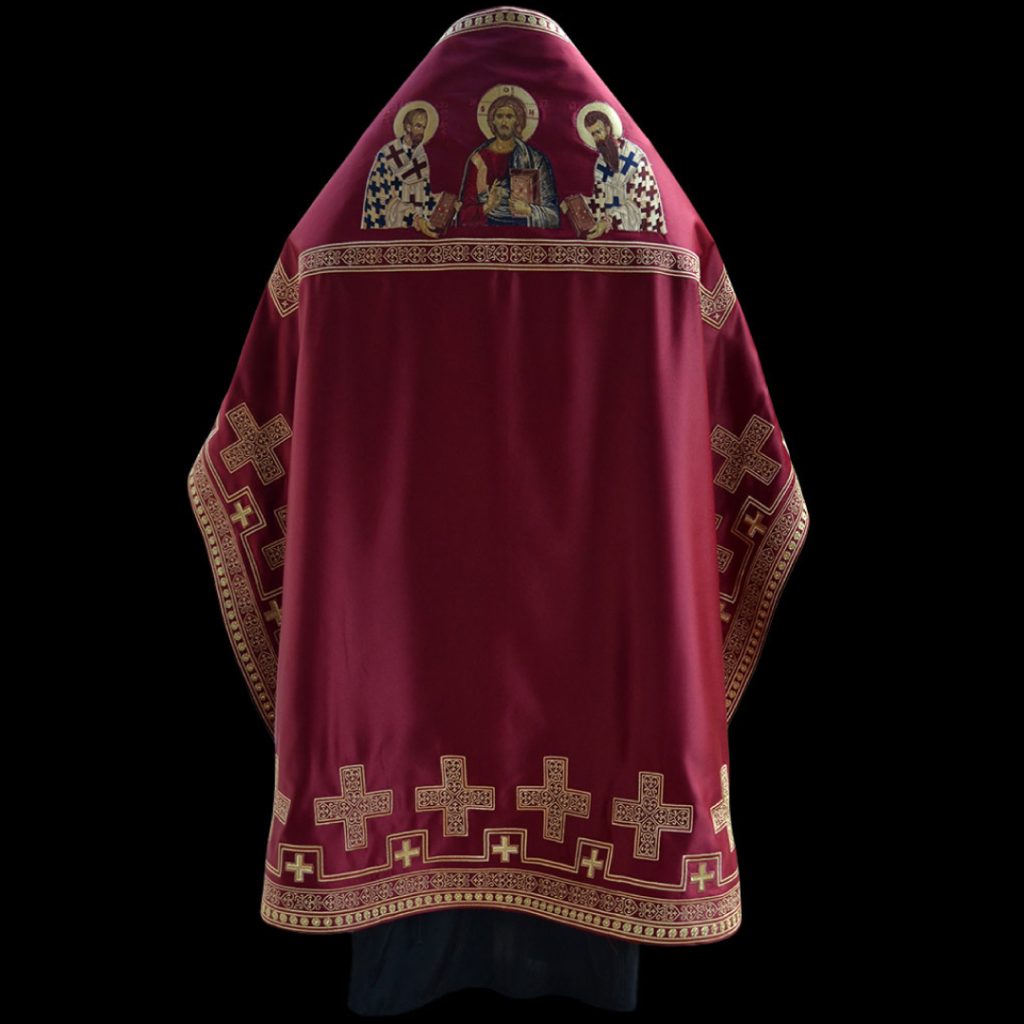
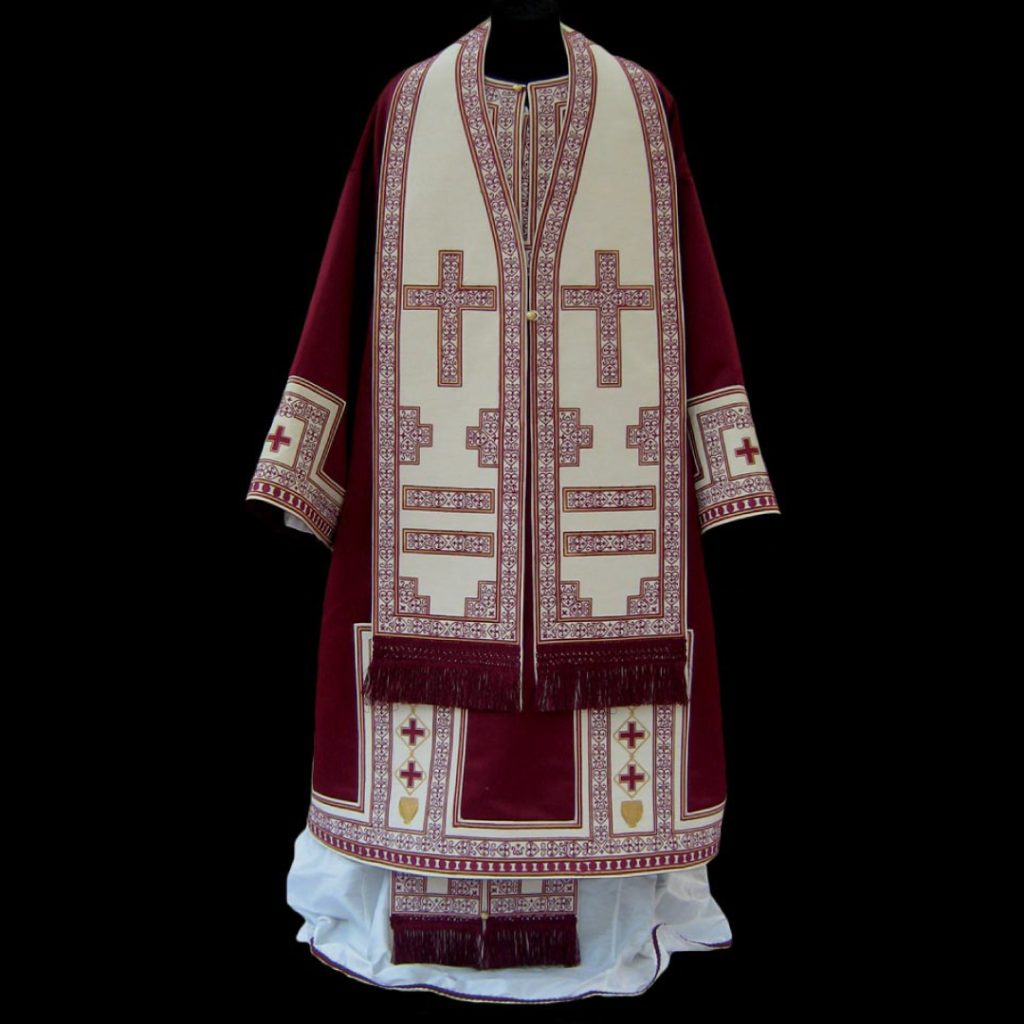
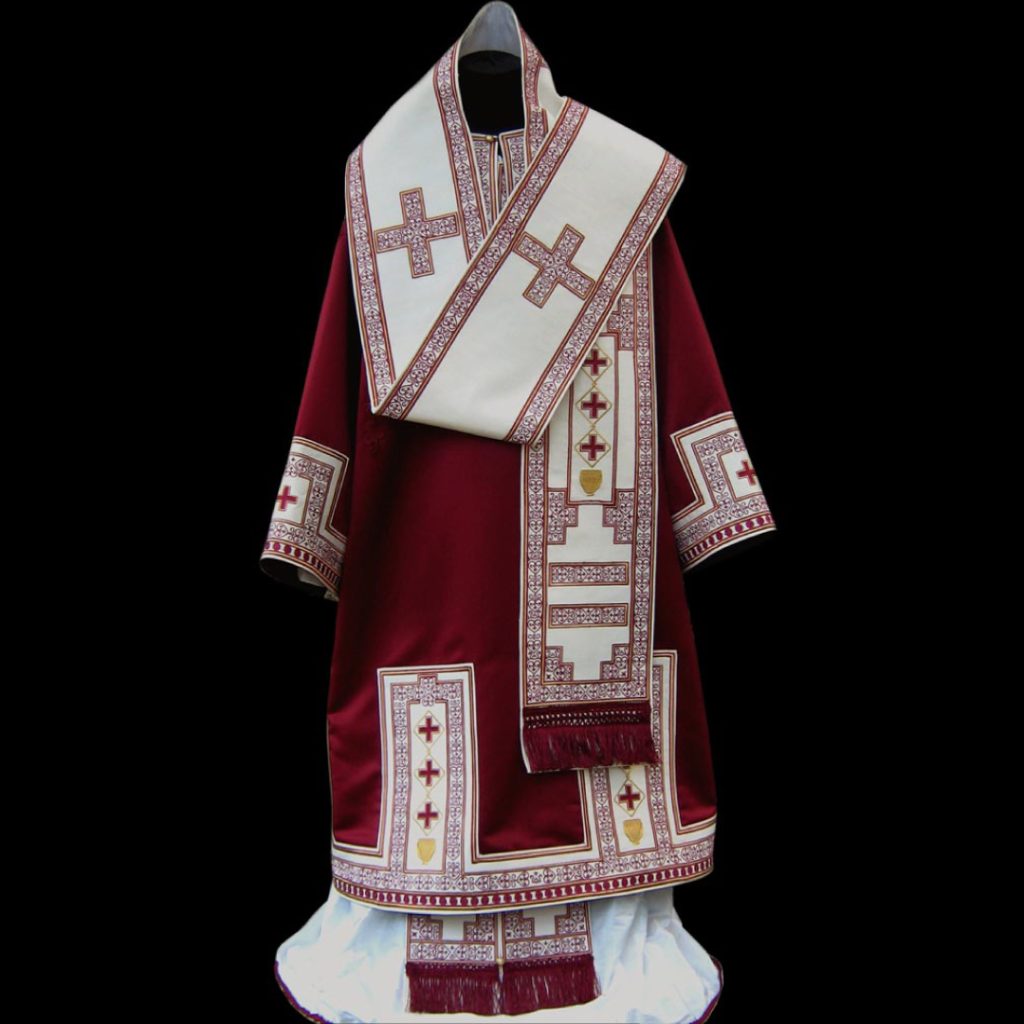
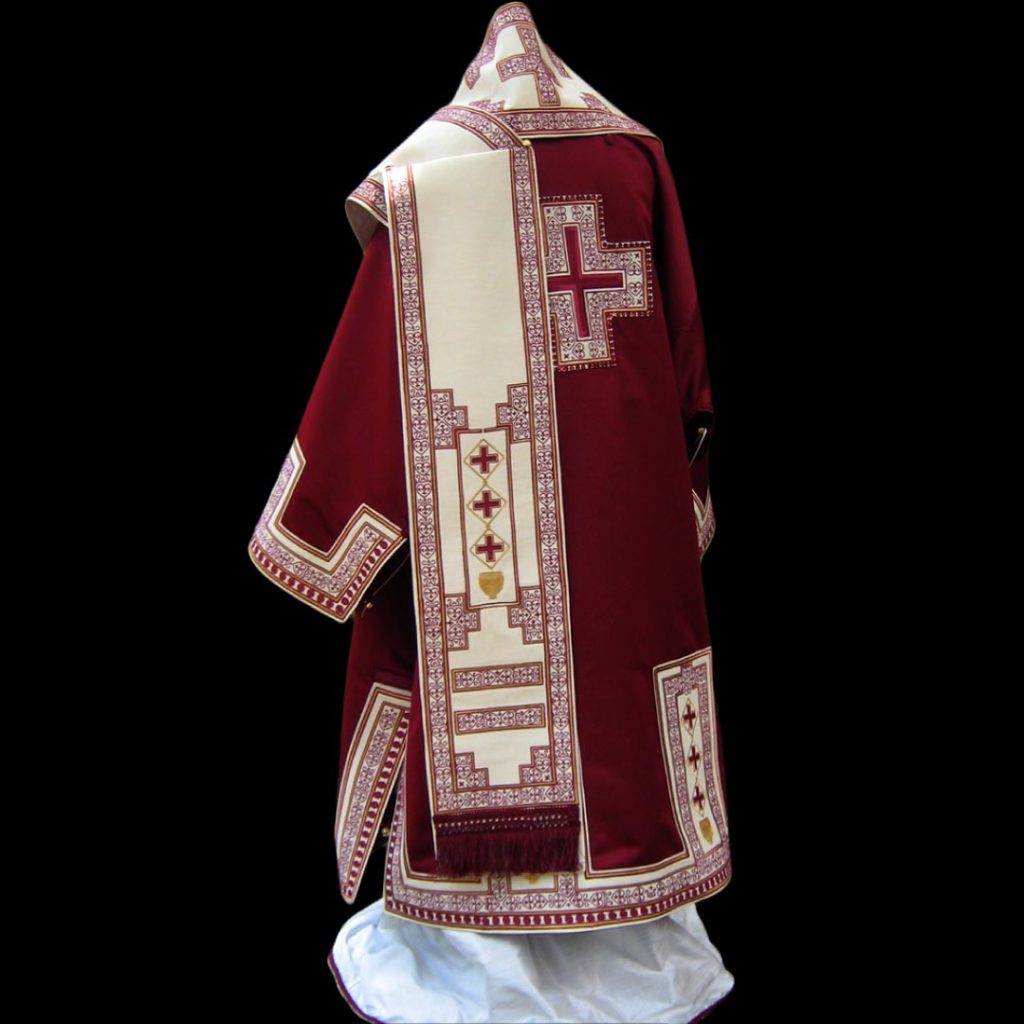
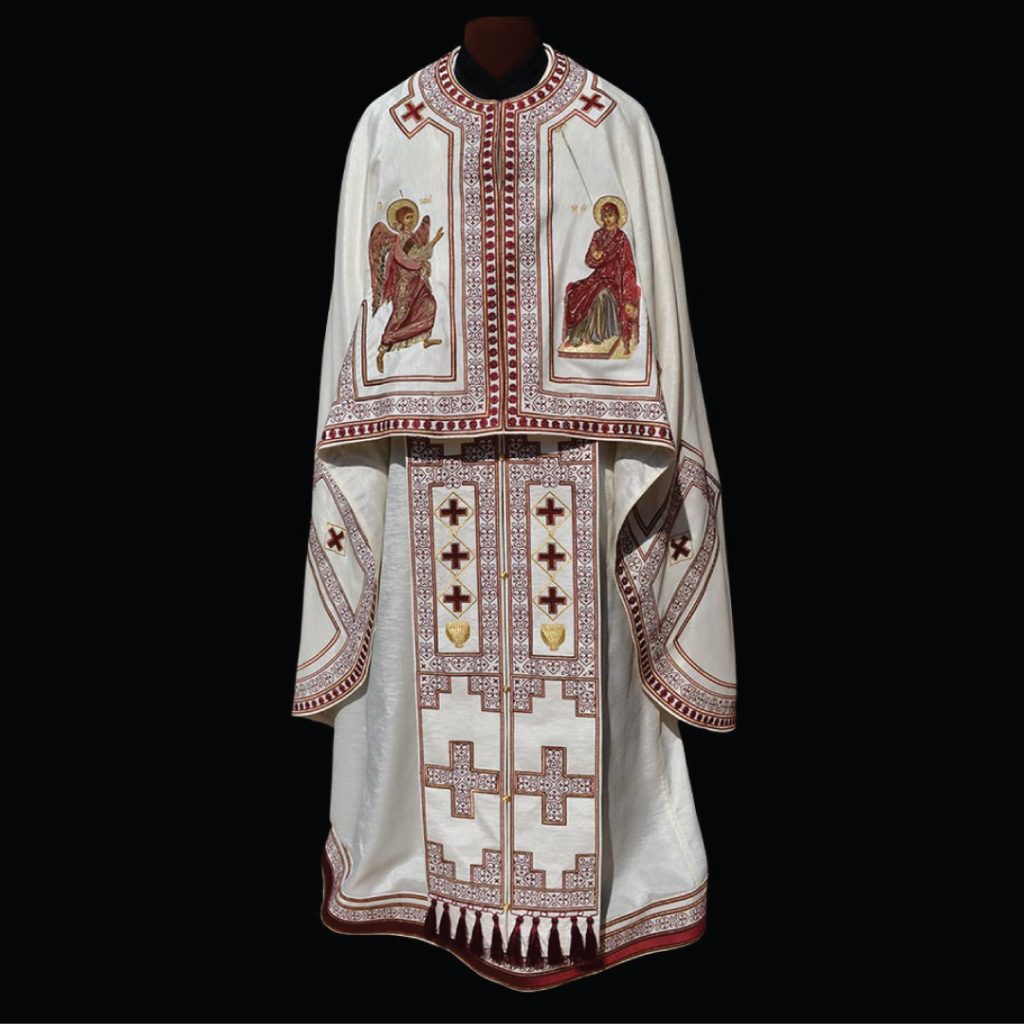
Previous
Next
MATKA
The first vestment is designed for the blissfully deceased Metropolitan of Kumanovo and Polog, Cyril. The colors and the solution of the design are following the example of the Macedonian costumes. It is the first more complex embroidery that the sisterhood has made together, hence the name – Matka. Three crosses in infinity are embedded in the embroidery, under which a small chalice is placed, following the example of the stone carving of the part of an altar pillar from the 6th century built into the monastery church. The crosses have a simple straight shape. The details in them are according to the crosses on the omophorion of the icon of St. Nicholas.
The emroidery on the vestments is in one basic color with gold component.
